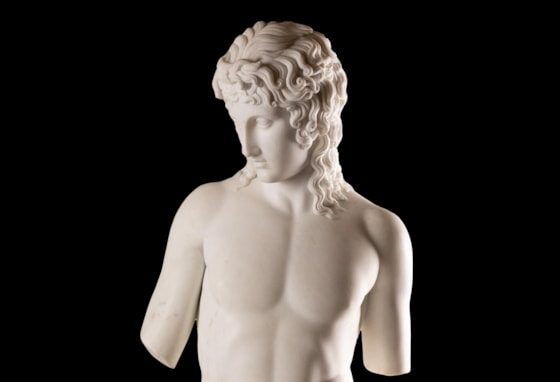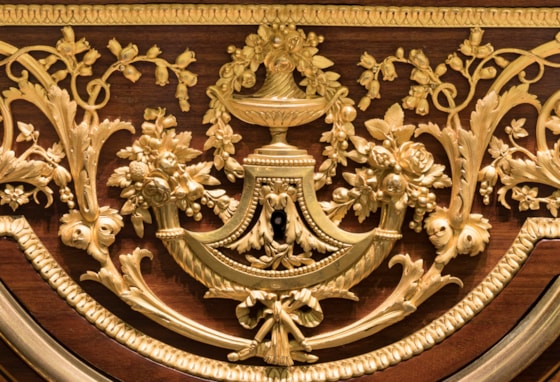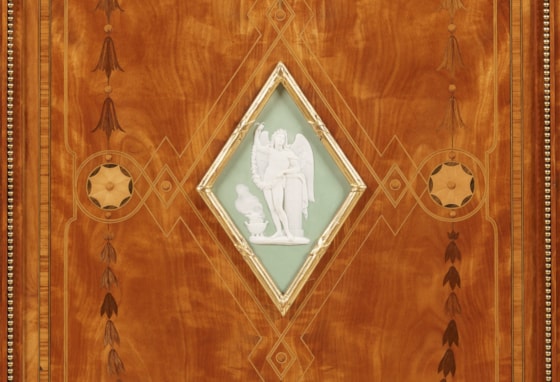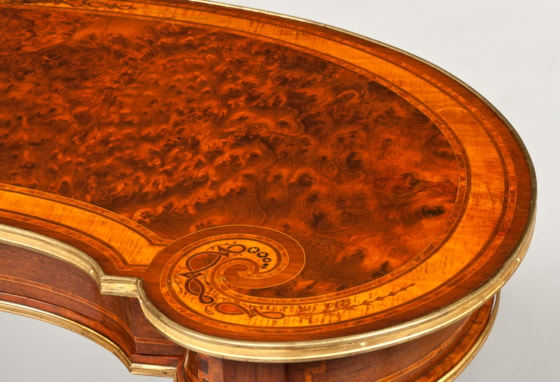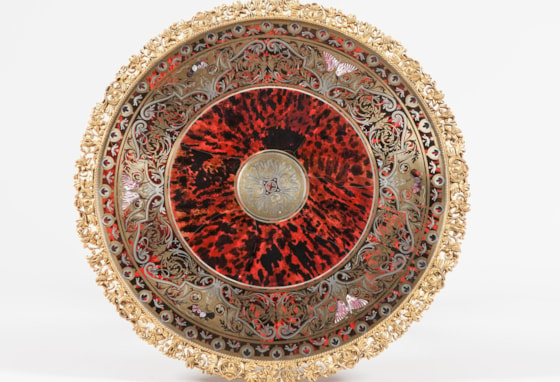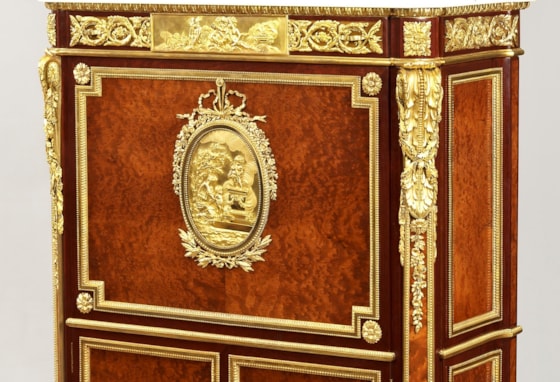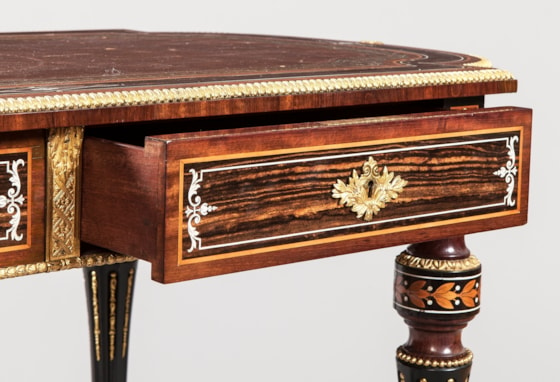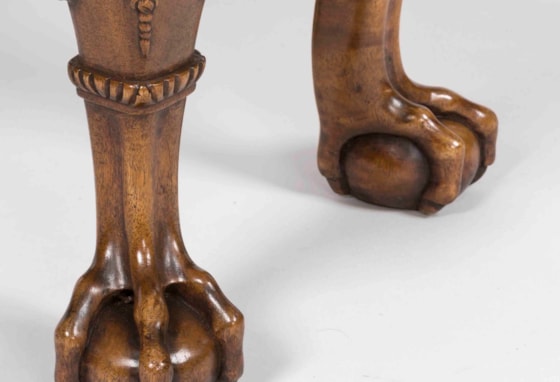Latest Stories
December 2025
Linke vs. Gillow: The 19th-Century Decorative Arms Race Between London and Paris
December 2025
Linke vs. Gillow: The 19th-Century Decorative Arms Race Between London and ParisHow Linke and Gillow Battled for the Future of Luxury Furniture
In the late 19th century, the world's leading furniture makers engaged in a fierce "decorative arms race" that would determine the future of luxury design. On one side stood François Linke, a Bohemian immigrant who sought to fuse the opulence of 18th-century French Rococo with the flowing, organic forms of Art Nouveau. On the other, the mighty British firm of Gillow & Co representing the industrial might and imperial nostalgia of the Victorian era. The battlefield was the Paris Exposition Universelle of 1900, where these two giants clashed for the patronage of the world's wealthiest collectors and tastemakers. Linke's audacious "Grand Bureau" desk, with its cascading bronze mounts sculpted by the virtuoso Léon Messagé, won the coveted Gold Medal and cemented his reputation as the master of a new French decorative style. But Gillow's imposing "Old English" furniture, grounded in the finest mahogany and faithful to the Georgian era, proved a more commercially successful strategy, furnishing the great hotels and ocean liners of the Edwardian age. This clash of artistic visions and business models laid bare the fundamental differences between French and British approaches to luxury furniture. It was a battle that would shape the future of the decorative arts on both sides of the Channel, with lasting implications for collectors, interior designers, and anyone seeking to understand the golden age of antique furniture.
The Paris Exposition Universelle of 1900: The Battlefield of Styles
The 1900 Paris Exposition was not merely a trade fair; it was the geopolitical and artistic arena where the "arms race" between London and Paris reached its zenith. While the world focused on the Eiffel Tower and the new Métro, a quieter but vicious battle was being fought in the Esplanade des Invalides, where the furniture exhibits were displayed.
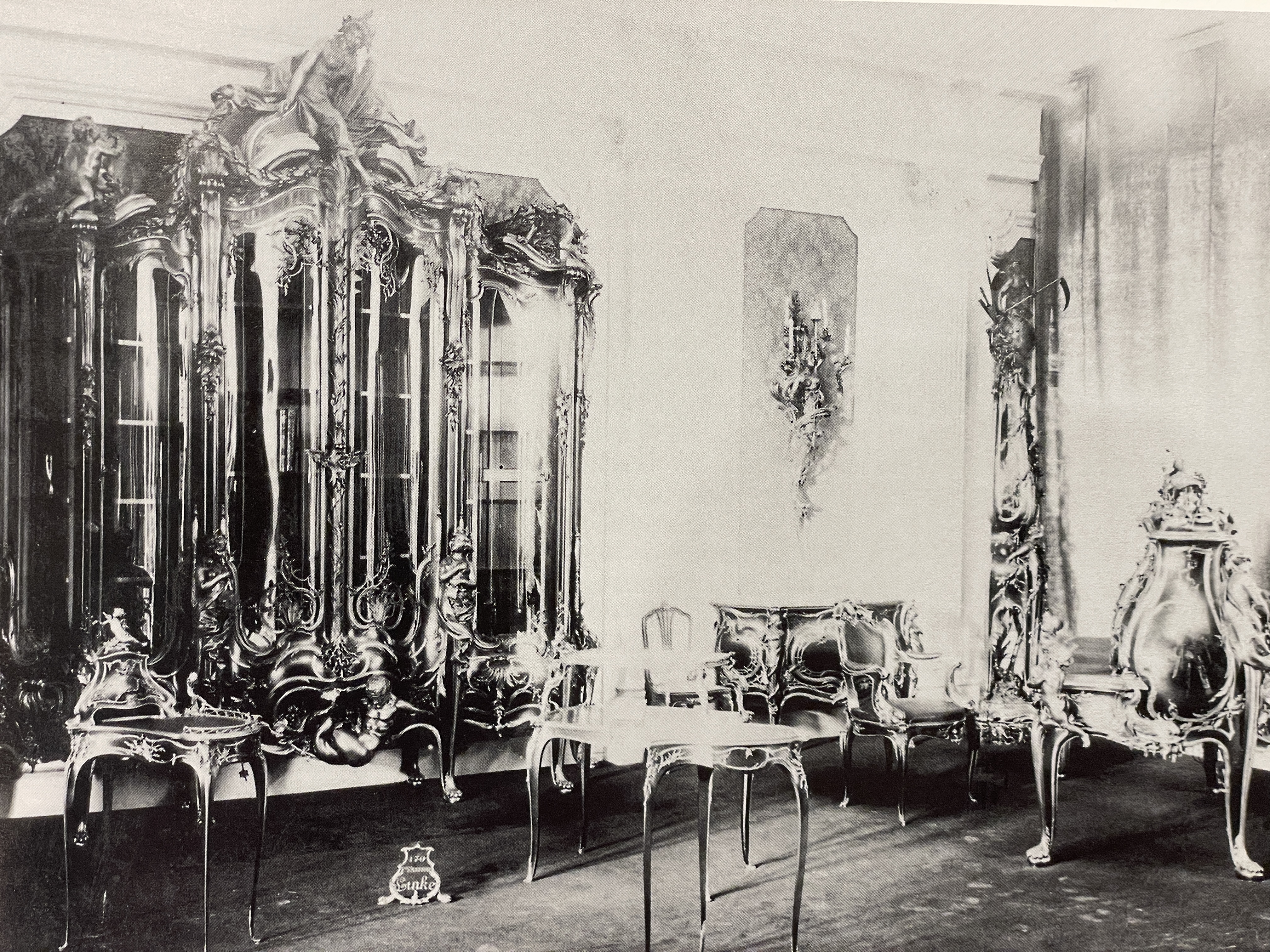
François Linke's display at the Paris Exposition Universelle of 1900
The French Strategy: Linke's "All-In" Gamble
By 1900, the French furniture trade was criticized for being stagnant, relying too heavily on endless reproductions of Louis XV and XVI antiques. François Linke, a Bohemian immigrant, realized that to win, he had to break the cycle of pure reproduction. Mortgaging his workshop and risking total bankruptcy, Linke created an entirely new form: the "Grand Bureau," a reimagining of the famous Bureau du Roi (King's Desk) at Versailles, but updated with the fluidity of Art Nouveau. Veneered in kingwood and satinwood, the defining feature was the ormolu (gilt-bronze) mounts sculpted by Léon Messagé, which appeared to drip over the edges and integrate structurally into the wood.
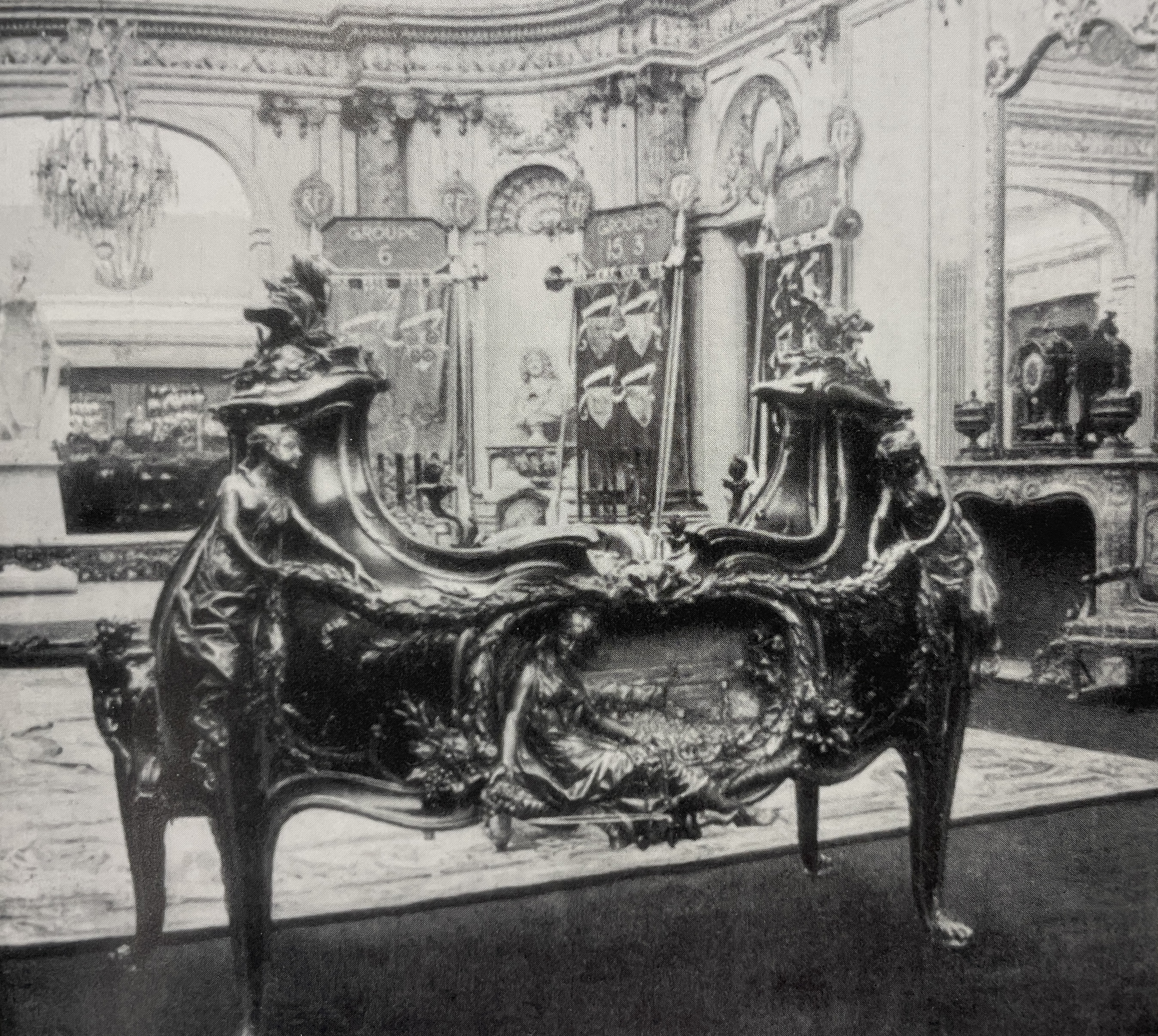
François Linke's Grand Bureau, first unveiled at the 1900 exposition, showcasing the innovative bronze designs of Messagé
The British Strategy: Gillow's Imperial Nostalgia
While Linke was inventing a new style, Gillow (operating as part of a loose consortium with S.J. Waring, soon to be Waring & Gillow) adopted a strategy of "aggressive traditionalism." Their goal was not to invent, but to assert British cultural dominance through history. In the British Pavilion, designed by the famous architect Edwin Lutyens, Gillow furnished it to look like an authentic English country house, displaying "Elizabethan" and "Jacobean" dining suites and a "Sheraton Revival" satinwood bedroom. This was a marketing move to appeal to American millionaires who wanted to buy "instant ancestry," arguing that French furniture was "frivolous," while British furniture was "dignified."
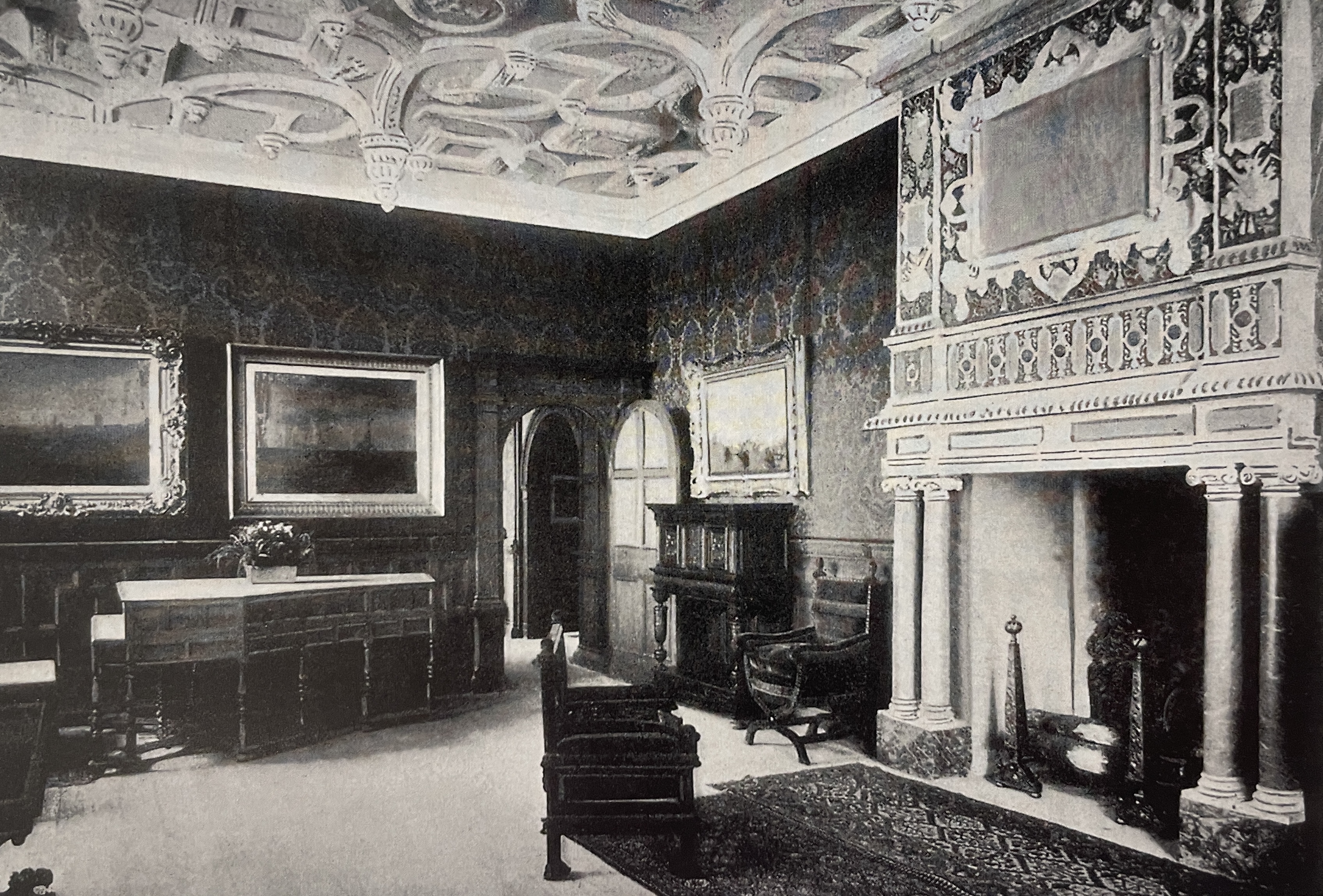
The British Pavilion at the 1900 exposition universelle, furnished by Gillows.
The "Arms Race" Dynamics at the Expo
The friction between the two approaches created a clear divide in the luxury market. Linke's philosophy was one of evolution, fusing Louis XV Rococo with Art Nouveau to create a "New French Style." His primary material was bronze, with the value lying in the sculpting and gilding of the mounts. Gillow, on the other hand, focused on the "Revival" of the "Golden Age" of English furniture (1750–1800), with the value lying in the selection of rare mahogany and the quality of the joinery. Linke's target buyer was the avant-garde millionaire (e.g., Elias Meyer, King of Egypt) who wanted unique art, while Gillow aimed for the industrial tycoon (e.g., the Vanderbilts) who wanted a "stately home" aesthetic. The jury at the Exposition awarded Linke the coveted Gold Medal, hailing him as the bridge between the 18th and 20th centuries and saving French furniture from becoming a "dead art." However, Gillow won the commercial war, with their display leading to massive contracts to furnish hotels and ocean liners, proving that "British Comfort" was a more scalable export than "French Art."
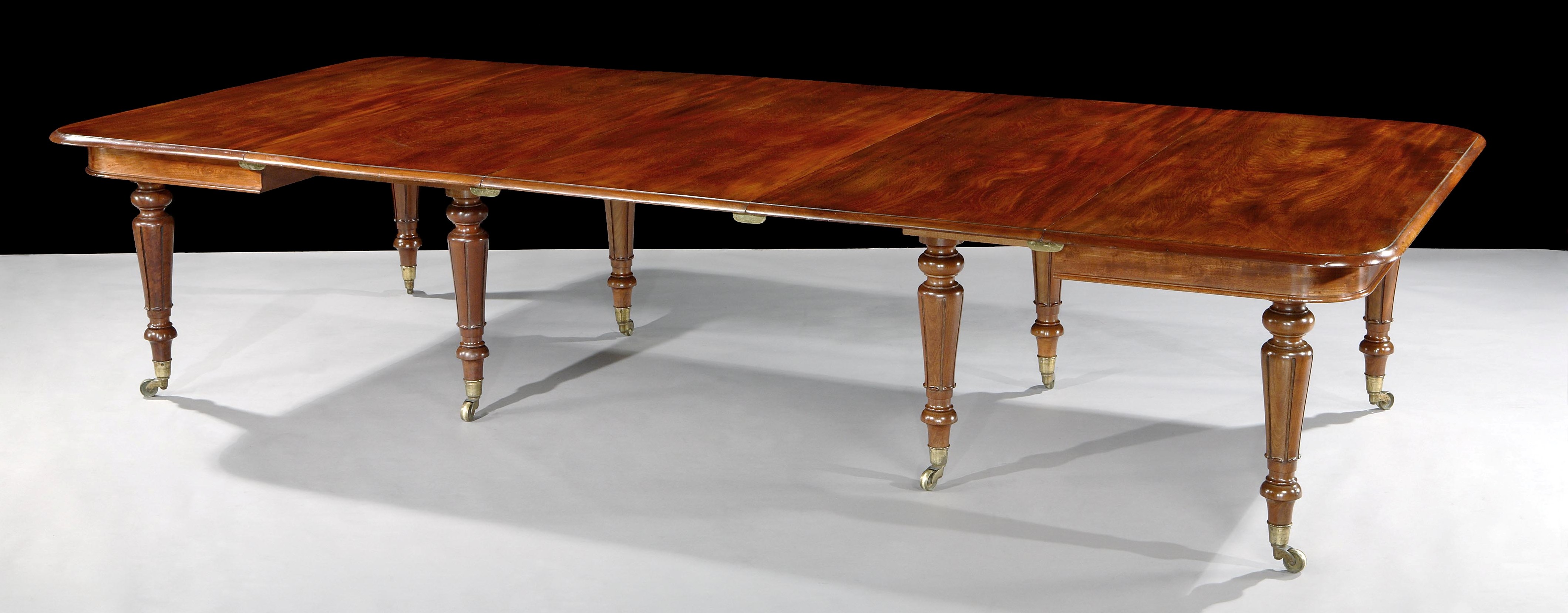
Antique dining room table by Gillows, previously with Butchoff Antiques. These so-called 'imperial' extending tables were a staple of Gillows offering for well over a century.
Léon Messagé (1842–1901):
The Sculptor Behind the "Linke Style"
While François Linke was the entrepreneur and master ébéniste (cabinetmaker), the aesthetic weapon that allowed him to outmaneuver both his Paris rivals and the British heavyweights like Gillow was a relatively obscure sculptor named Léon Messagé. In the context of the "Decorative Arms Race," Messagé was Linke's "secret weapon." The Role of the "Designer-Sculptor" vs. The "Draftsman" To understand Messagé's competitive advantage, one must contrast the design philosophies of London and Paris at this time. The British approach, exemplified by Gillow, was architectural, with furniture drawn by draftsmen who prioritized proportion, straight lines, and historical accuracy. Decoration was applied to the structure. In contrast, the French approach, embodied by Linke and Messagé, was sculptural. Messagé designed furniture as if it were a work of art, with the signature "liquid" aesthetic of gilt-bronze (ormolu) mounts that appeared to be poured over the wood, dripping down the legs and swirling around the marquetry. This daring asymmetry, a hallmark of the Rococo, was pushed to an extreme that flirted with Art Nouveau.
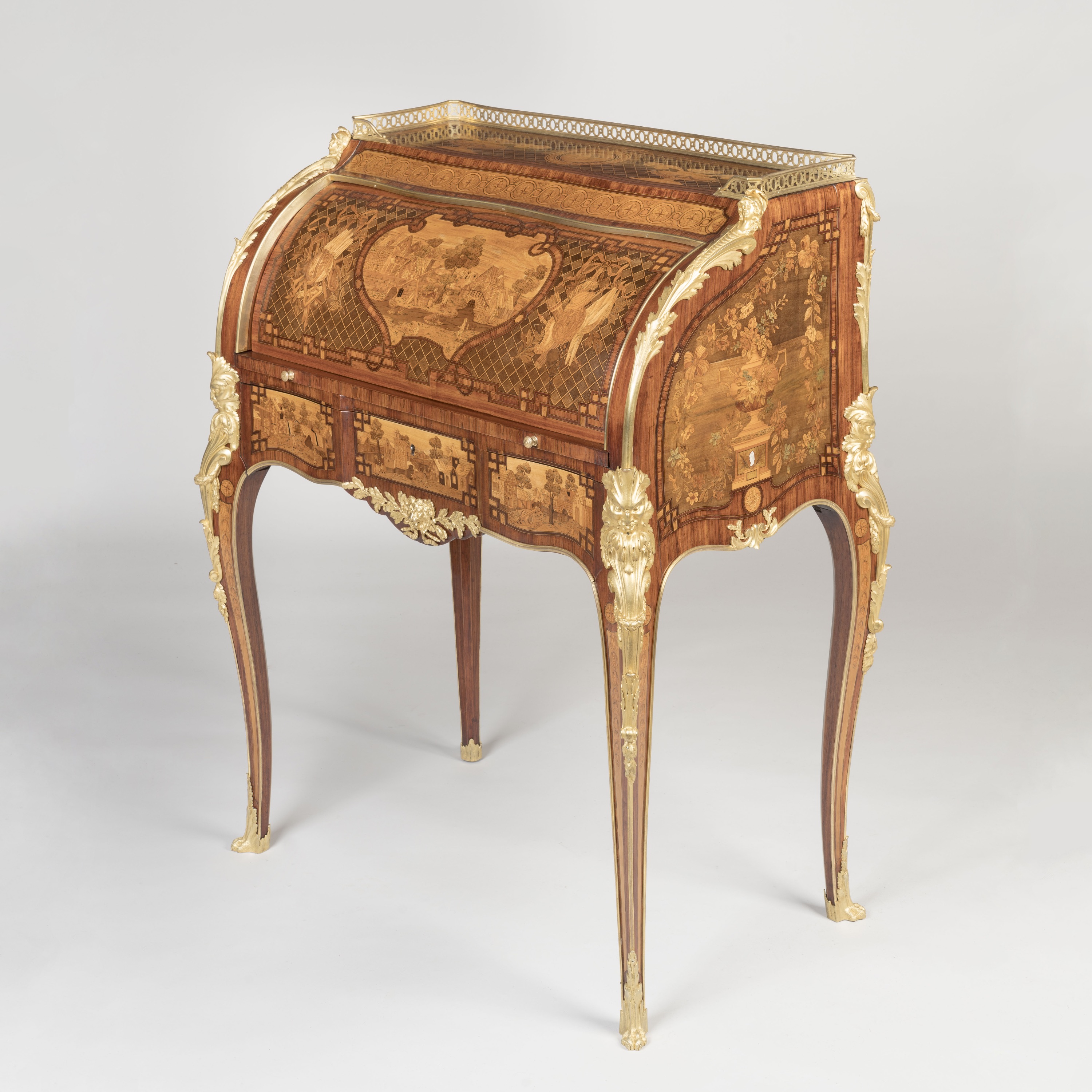
A Louis XV Style bureau à cylindre, attributed to Maison Kriéger of Paris, previously with Butchoff Antiques. Furniture in revival styles such as this were exhibited by French makers, including Paul Sormani and François Linke.
The Evolution of the Partnership (1890–1900)
Messagé did not start with Linke; his trajectory highlights the intense competition for talent within the Paris trade. Before 1893, he worked for Joseph-Emmanuel Zwiener, another German-born Parisian master, and the famous Bureau du Roi copy that Zwiener exhibited at the 1889 Exposition Universelle featured early Messagé mounts. When Zwiener returned to Germany, Linke astutely secured Messagé's services, essentially buying the "brain" behind the most advanced designs in Paris. Messagé's designs were notoriously difficult and expensive to produce, with high-relief bronze mounts, intricate figures integrated into the structure, and the use of mercurial gilding, a dangerous and costly process that created a rich, deep gold tone.
The "Cahier des Dessins" (The Book of Designs)
In 1890, Messagé published a book of designs titled Cahier des Dessins et Croquis Style Louis XV, which became a "Bible" for the Art Nouveau/Rococo fusion. However, only Linke had the rights to the actual maquettes (the 3D wax models) required to reproduce them perfectly. Gillow's response was to own copies of the book, but without the master models, they could only produce pale imitations, as the "soul" of the curve was lost in translation when English woodcarvers tried to replicate Messagé's French bronze fluidity.
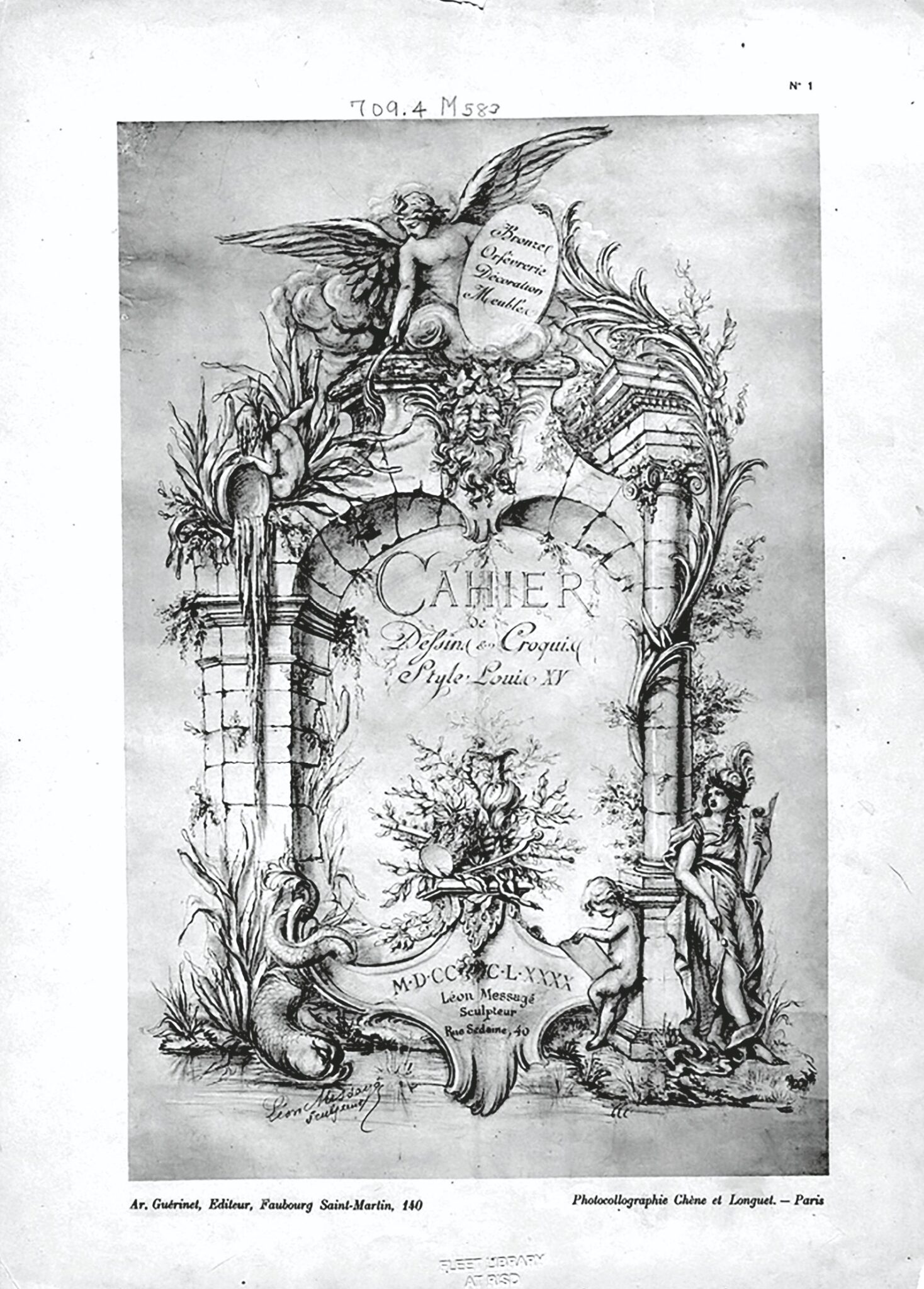
Frontispiece of Léon Messagé's 'Cahier des dessins'
Economic Impact on the Rivalry
Messagé's involvement forced Linke into a high-risk, high-reward economic model. A single Linke/Messagé cabinet could take 2 years to make, while in the same time, Gillow's factory in Lancaster could produce 50 high-quality mahogany dining suites. This solidified the market segmentation: Gillow took the volume luxury market (hotels, upper-middle-class homes), while Linke took the ultra-elite collector market (Kings, Tsars, and the absolute wealthiest industrialists).
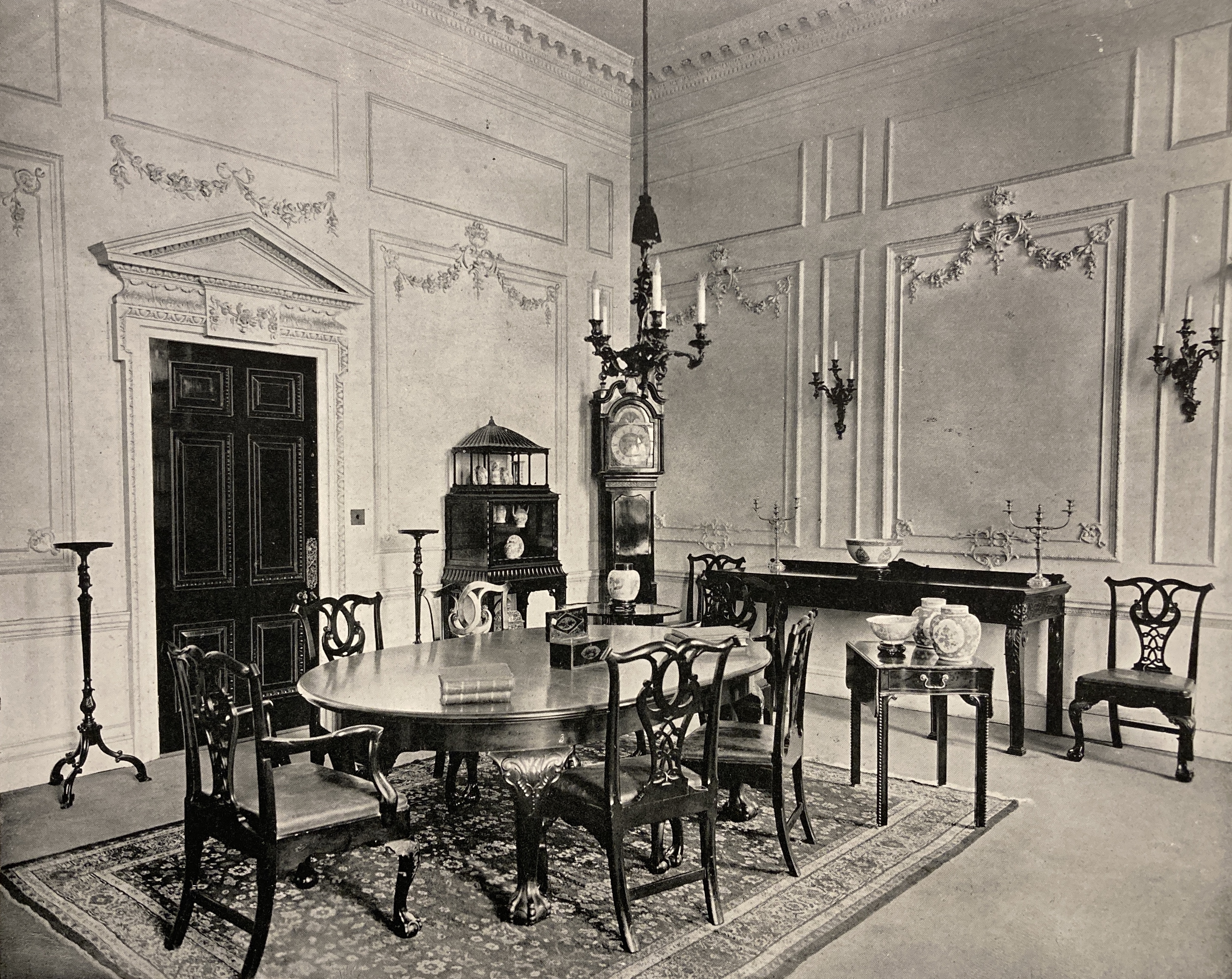
A room furnished by Waring & Gillow at the 1904 Saint Louis World's Fair, where they continued their strategy of exporting 'instant ancestry' to an American clientele.
The "Waring & Gillow" Consolidation (1897–1903):
The Industrialization of Luxury
If François Linke represented the pinnacle of individual genius in the decorative arms race, the consolidation of Gillow & Co. with S.J. Waring & Sons represented the triumph of corporate imperialism.
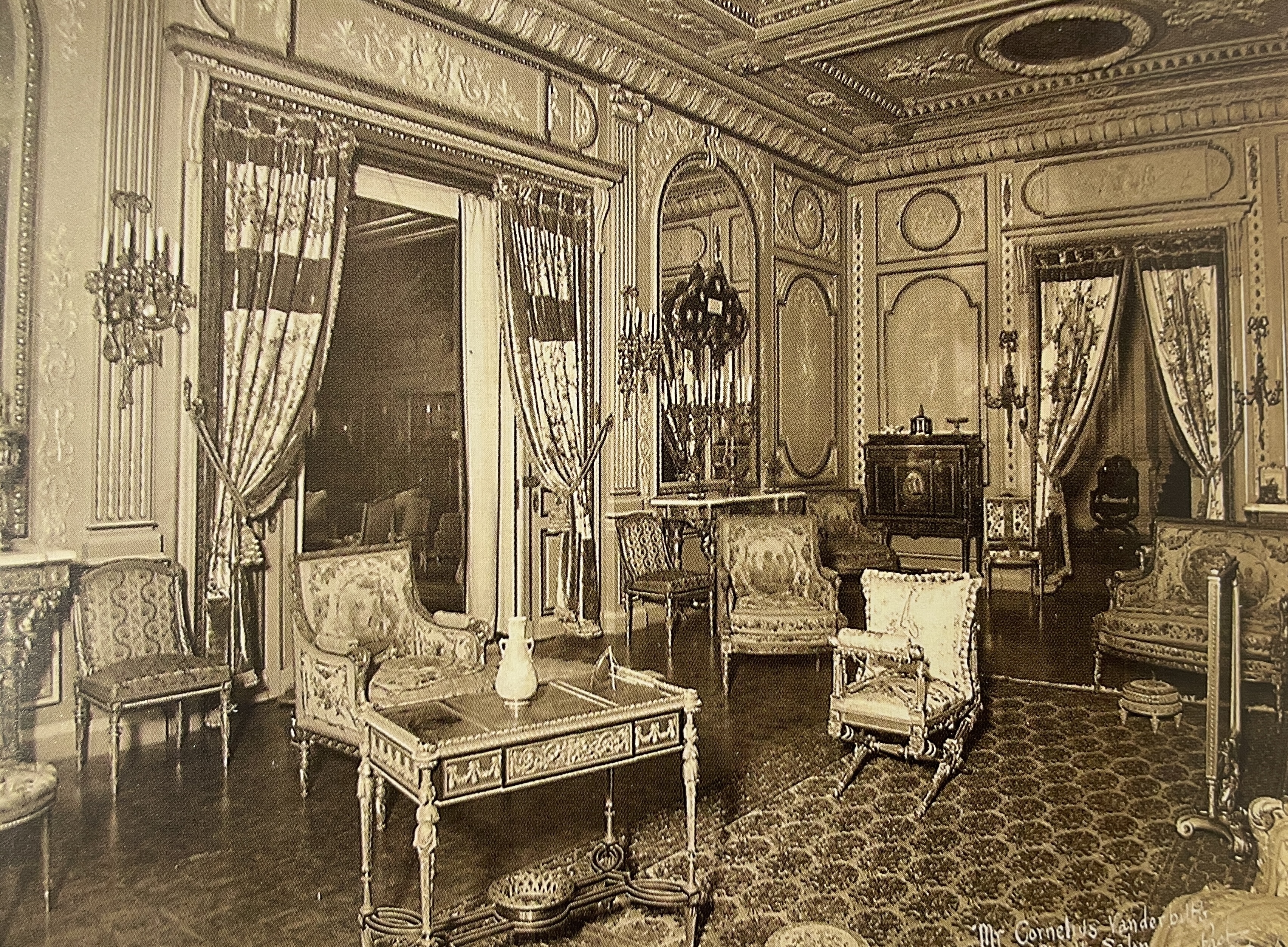
The home of Cornelius Vanderbilt, circa 1900, showcasing the interior decorating scheme of the ultra-elite, who furnished with pieces supplied by top makers such as François Linke.
The Players and the Mismatch
To understand the significance of this merger, one must recognize the distinct identities of the two firms involved. Gillow & Co., founded in roughly 1730 in Lancaster, held a Royal Warrant and was synonymous with impeccable quality, "honest" construction, and understated Georgian elegance. However, they were financially conservative and relied on a shrinking base of landed gentry. In contrast, S.J. Waring & Sons, a Liverpool-based firm founded by the marketing genius Samuel James Waring, was a ruthlessly ambitious disruptor who understood that the future of luxury was not just in selling a chair, but in selling an entire lifestyle to the rising middle class and the new industrial elite.
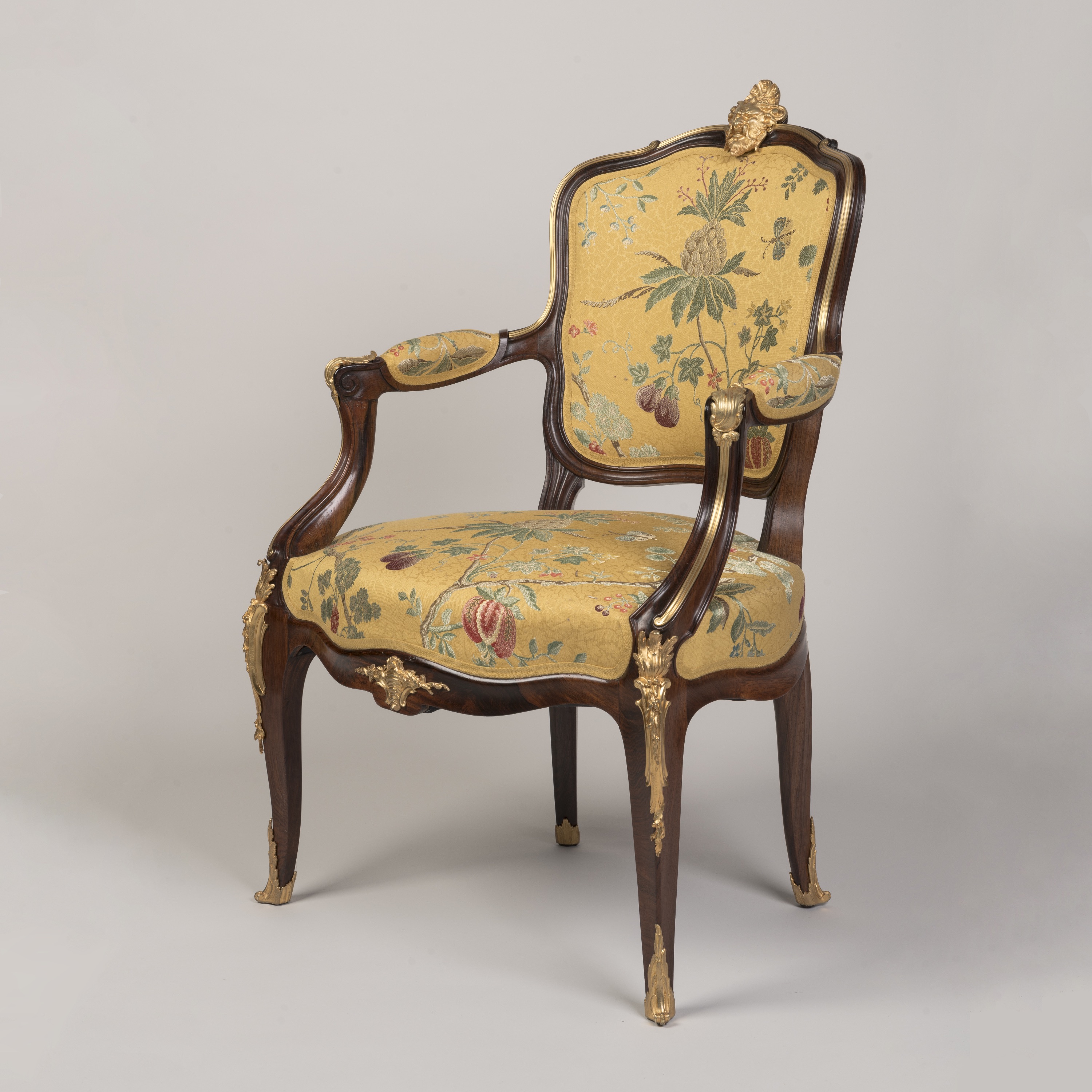
An armchair by François Linke, with Butchoff Antiques. Similar 'fauteuils de bureau' were exhibited by the maker at the 1900 exposition universelle in Paris.
The Strategy: "The General Motors of Furniture"
Around 1897, S.J. Waring began aggressively acquiring prestigious but struggling competitors (including Collinson & Lock and even Gillow itself), creating a vertically integrated furniture empire. The goal was to become the "General Motors of Furniture" - a one-stop-shop that could design, manufacture, and distribute luxury furnishings on an unprecedented scale.

A carved mahogany armchair attributed to Gillows, and later retailed in Liverpool. Although this chair dates to around 1825, it exemplifies to aesthetic which continued under Waring & Gillow. Previously with Butchoff Antiques.
The Transformation of British Luxury
This consolidation transformed the British furniture trade from a collection of skilled workshops into a global industrial juggernaut capable of crushing French competition through sheer scale, logistics, and capital. Waring & Gillow's displays at the 1900 Paris Expo and subsequent contracts to furnish grand hotels and ocean liners proved that "British Comfort" was a more scalable export than "French Art." Linke's labor-intensive, boutique model, no matter how artistically innovative, could not match the efficiency and reach of the Waring & Gillow industrial machine.
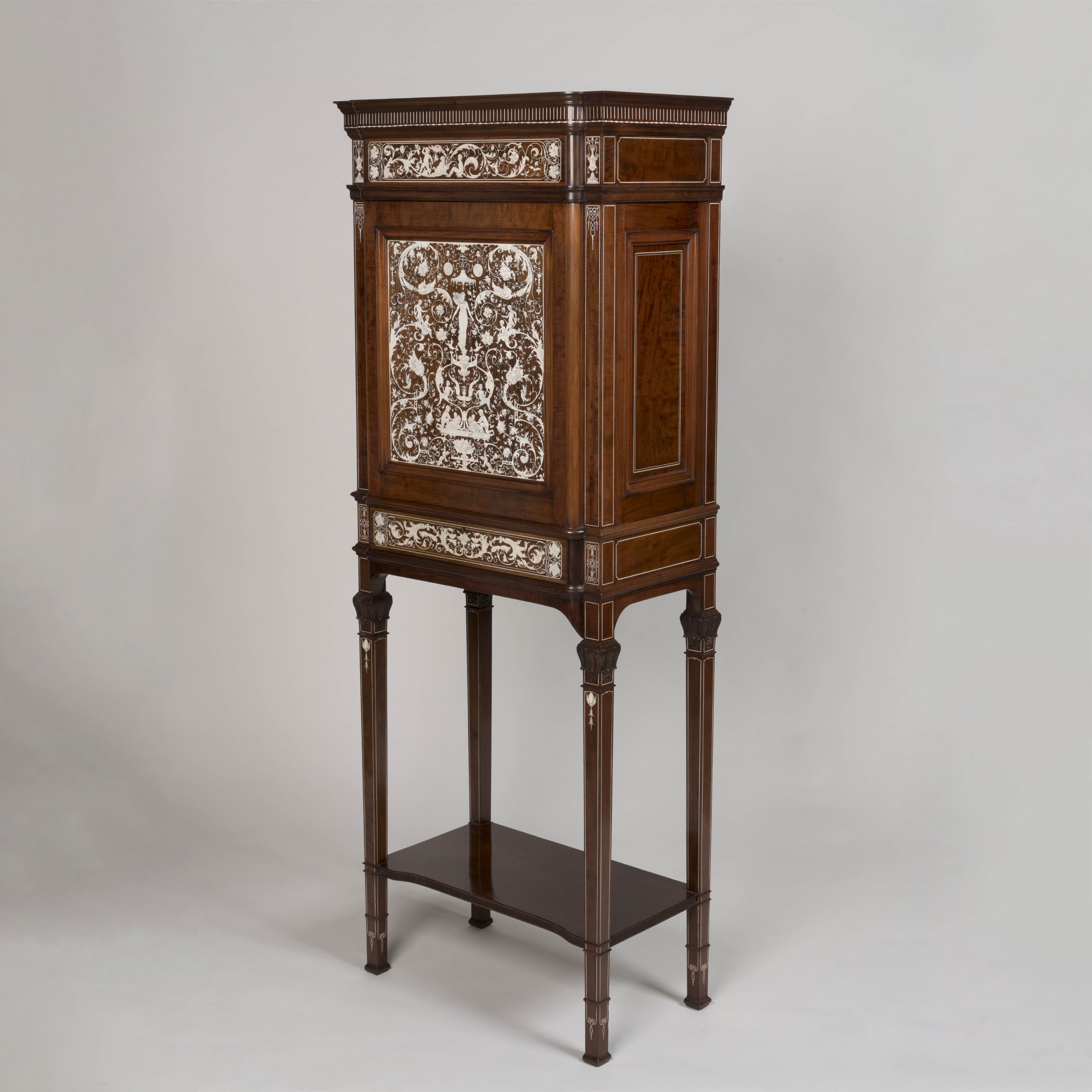
A cabinet by Collinson & Lock, another cabinetmaker who became part of the Waring & Gillow consolidated workshops, allowing for large projects, such as those at the UK Houses of Parliament, to be delivered and executed to a high standard.
Conclusion
The "decorative arms race" between Linke and Gillow at the 1900 Paris Exposition Universelle was a pivotal moment in the history of luxury furniture. It laid bare the fundamental differences between French and British approaches to design, craftsmanship, and business models. Linke's fusion of 18th-century Rococo and Art Nouveau, realized through the virtuosic bronzes of Léon Messagé, represented the pinnacle of individual artistic genius. But Gillow's strategy of reviving the "Golden Age" of English furniture, combined with the industrial might of the Waring & Gillow consolidation, proved the more commercially successful path, furnishing the grand hotels and ocean liners of the Edwardian era. This clash of visions continues to resonate today, informing the tastes and collecting habits of high-net-worth individuals, interior designers, and museum curators alike. Understanding the historical context and technical details of this "decorative arms race" is essential for anyone seeking to appreciate the enduring legacy of antique furniture and its role in shaping the modern world of luxury design.
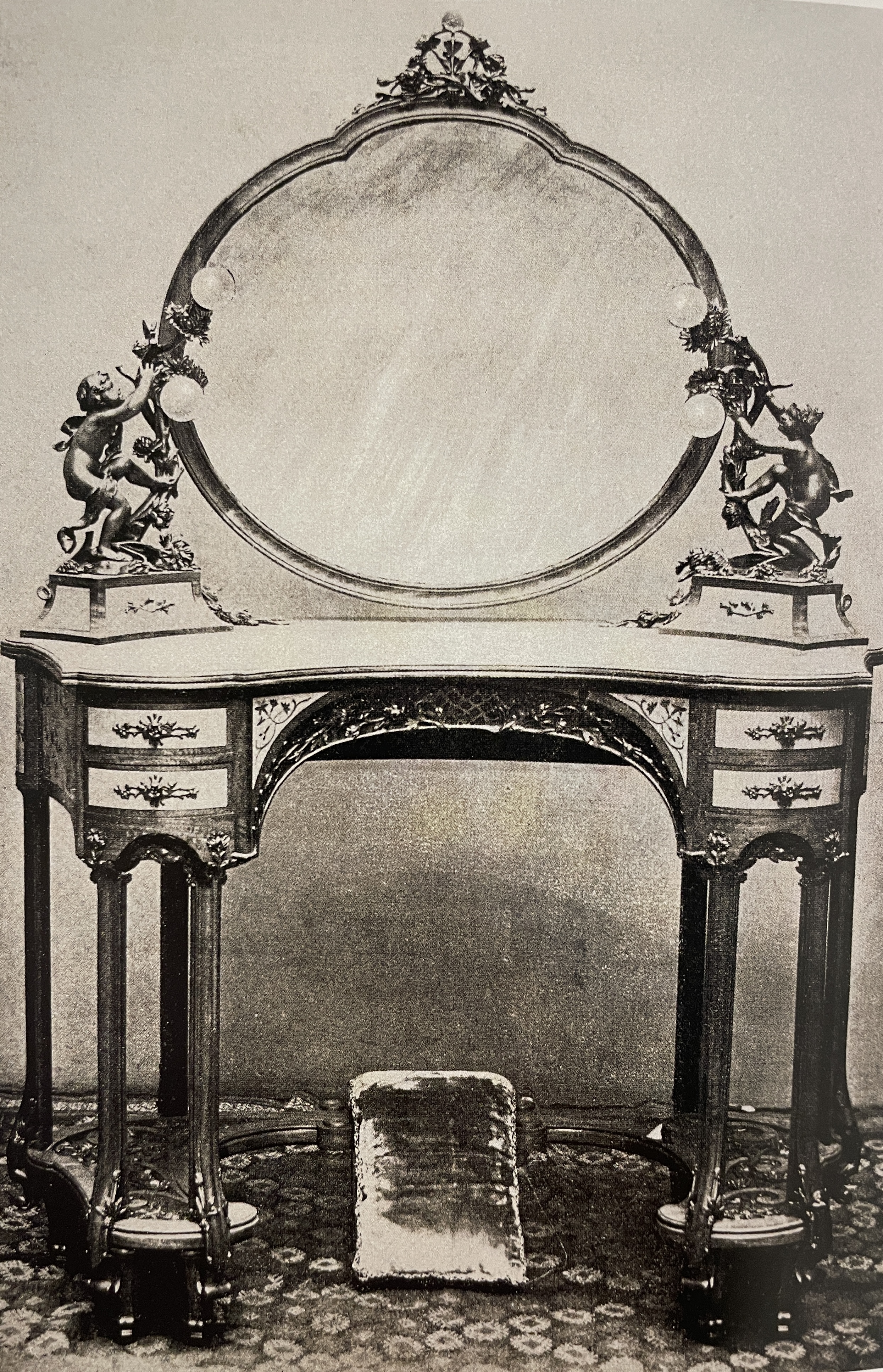
A Dressing Table shown by Millet of Paris at the 1900 exposition universelle, showing the influence of Art Nouveau and fluid ormolu mounts inspired by the work of Léon Messagé
Citations
[1] Sassoon, A. (2020). Linke: Ébéniste of the Élite. Antique Collecting Magazine. [2] Agius, P. (2016). Léon Messagé: The Sculptor Behind the Linke Style. Furniture History Society Newsletter. [3] Wainwright, C. (1989). The Architectural and Decorative Development of Furniture Making in England from the Restoration to the Victorian Era. Journal of the Furniture History Society. [4] Beevers, D. (2001). Gillow of Lancaster and London, 1730-1840. Antique Collecting Magazine.
Written by Rainier Schraepen
The Investor’s Guide to British Cabinetmaking: A Lineage of Integrity
For the discerning collector, the true measure of an investment-grade antique is not found merely in its aesthetic appeal, but in its capacity for endurance. While beauty is subjective, value requires a verifiable foundation. The celebrated investment integrity of British cabinetmaking, particularly within the 18th-century sphere, is not a matter of chance. It is the direct result of a unique historical lineage that established a tangible framework for authenticity and quality, transforming fine furniture into a stable verifiable asset class.
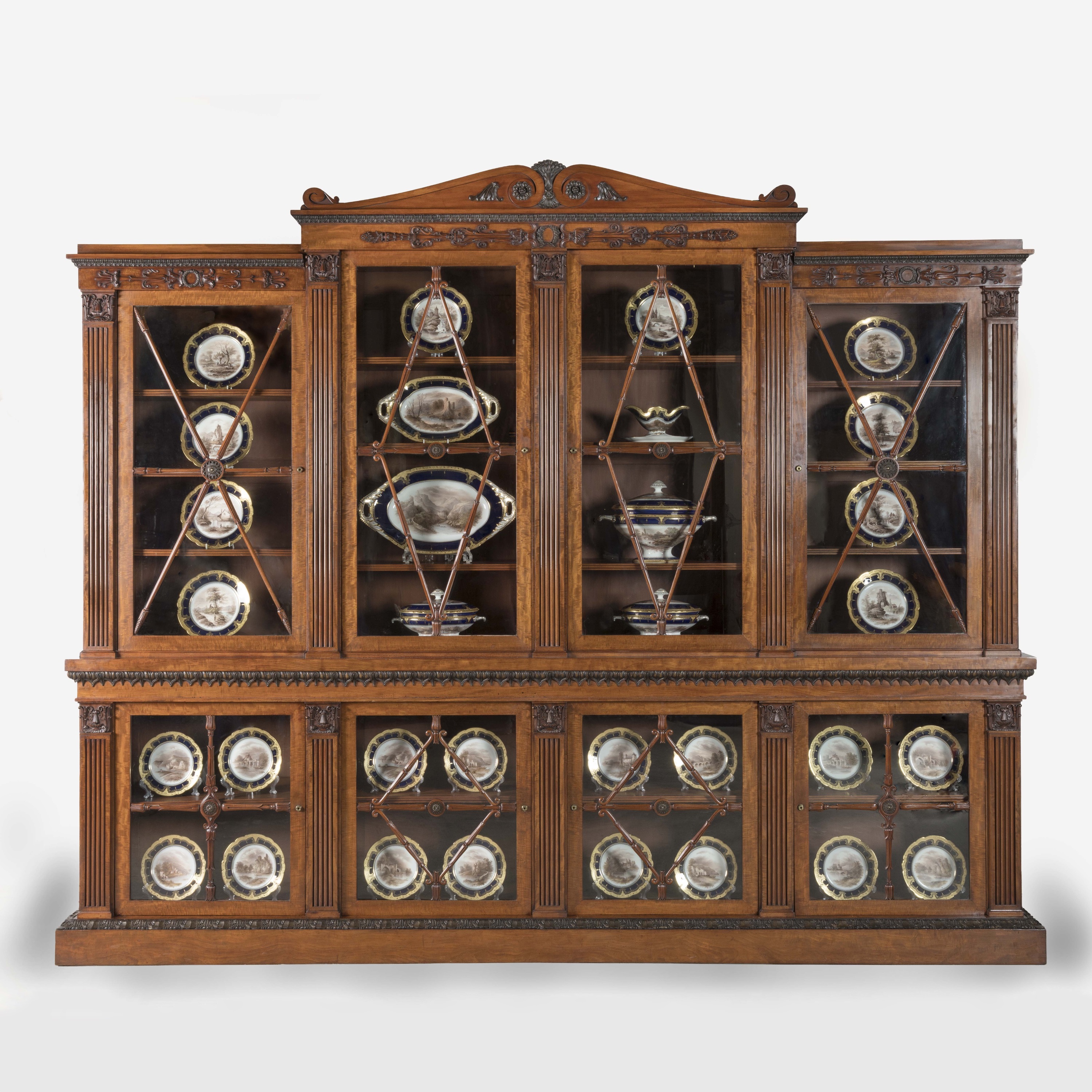
A Regency Mahogany Four Door Bookcase (ref. 10218), circa 1815, with Butchoff Antiques. Furniture Highlight at Treasure House, London, 2025.
This unparalleled lineage rests on three distinct pillars:
- The Codification of Style: The seminal role of published design standards that established verifiable construction and style benchmarks for the entire trade.
- Intellectual & Architectural Discipline: The imposition of rigorous aesthetic discipline, such as the archaeological Neo-Classicism of the Adam brothers, which ensured a timeless, architectural elegance.
- Institutional Accountability: A robust culture of archival record-keeping, perfected by dynastic firms like Gillow, which translates documented provenance directly into market premium and mitigates risk for the high-net-worth collector.
The 18th-Century 'Blueprints' of Value
That golden lineage begins with the master who first codified it. The investment integrity of 18th-century Georgian furniture is inextricably linked to the work and intellectual legacy of Thomas Chippendale. His unique position in the market stems not just from his mastery as a craftsman, but from his crucial role as a publisher who standardised and disseminated the aesthetic language of luxury furniture. The 1754 publication of The Gentleman and Cabinet-Maker's Director was a pivotal moment; it was far more than a style guide, it codified an entire design canon, making it the bedrock upon which the investment stability of the period rests.

Frontispiece of Thomas Chippendale's Director of 1754 in the collection of the Metropolitan Museum of Art, New York.
This work transformed the craft by providing a "widely accessible benchmark for quality and style," encompassing the three dominant tastes of the time: the intricate Rococo, the Gothic, and the Chinese. The numerous engraved plates established a "verifiable pedigree" for new commissions. For the modern collector and Georgian furniture specialist, this published canon serves as a crucial, objective tool for authentication. It allows a piece to be measured against a definitive historical standard, defining what constitutes "pure" 18th-century English design. This benchmark is essential because, unlike later institutional houses, Thomas Chippendale rarely stamped his furniture. Therefore, provenance becomes paramount. The Director is the key to unlocking it, either through direct documentary links, like an invoice referencing a specific plate, or through technical fidelity. An unsigned piece must demonstrate the superior execution, precise carving, and high-quality timber implied by the Director's sophisticated designs to confirm its pedigree. The Director thus serves as the single most important document in the 18th-century market, providing the definitive framework required to benchmark the design pedigree and investment integrity of furniture from this era.
If Chippendale defined the technical apex of the trade, the architects Robert and James Adam established its intellectual framework. The sustained market valuation of high-end Georgian furniture owes an enormous debt to their rigorous imposition of Neo-Classical integrity. Functioning as architects and designers rather than cabinetmakers, the Adam brothers championed a "total design concept". In their vision, furniture was not an isolated object; it was an integral, subordinate part of a unified interior scheme, designed to be in perfect harmony with the wall treatments, ceiling plasterwork, and chimneypiece.
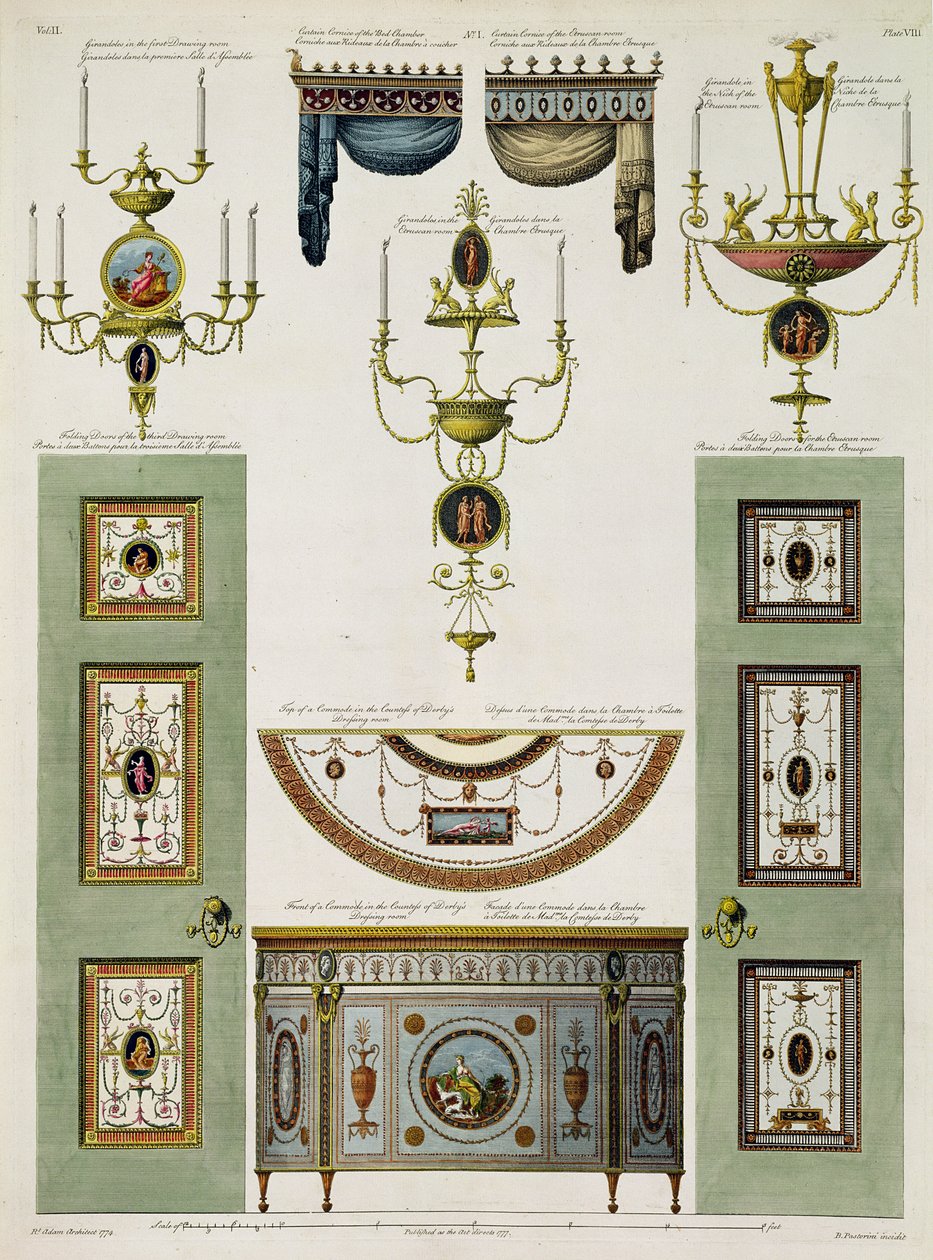
Adam Style showing the 'total design concept' championed by the brothers during the 18th century.
This unity was achieved through a scholarly "archaeological rigor", derived from their extensive studies of classical antiquity, including the ruins of Diocletian's Palace. They meticulously incorporated Roman and Greek motifs such as vases, urns, sphinxes, and patarae into their furniture designs. This architectural discipline resulted in pieces characterised by slenderness, symmetry, and delicate ornamentation, shifting the technical focus from deep carving to exquisite marquetry and contrasting veneers, such as satinwood against mahogany. This scholarly approach directly translates into enduring investment value. Because the Adam style is predicated on the timeless classical principles of harmony and balance, it possesses a profound "aesthetic longevity". It inherently "resists the cyclical devaluation that affects pieces tied to transient fashions," making an Adam-period piece a universally esteemed and timeless asset. They set the blueprint for a century of British taste, establishing the lingua franca that masters like Hepplewhite and Sheraton would later adopt.
The Institutional Guarantee: Provenance as Premium
Where the individual genius of 18th-century masters defined the blueprint for value, the 19th century perfected the model for guaranteeing it. For the risk-averse collector, this shift toward institutional accountability is the most critical factor in securing a long-term, blue-chip asset.
The firm of Gillow of Lancaster and London represents the pinnacle of this movement. Their high market valuation is predicated on one crucial factor: archival accountability. Unlike relying on subjective connoisseurship for attribution, a piece of Gillow furniture provides verifiable provenance through one of the most extensive commercial archives in history. The meticulous maintenance of job books, estimate sketches, and client ledgers that spanned generations, offers modern collectors an unparalleled ability to trace a piece's history, original cost, and specifications with remarkable precision. This documentation is the ultimate guarantee of investment integrity. It "translates historical paper trails directly into financial assurance," mitigating the primary risk of high-value antique acquisition: unproven authenticity. The presence of a "Gillow" stamp, often with a job number, acts as an explicit warranty of superior materials and construction, transforming the item from a mere attribution into a verified, dated, and provenanced object with a tangible market premium.

Design for a bookcase in the Gillow Archives, dated 1810. Photograph author's own.
This rigorous model of quality control and documentation was not an isolated practice; it became a national standard adopted by the great institutional houses of the Victorian era. As the 19th century ushered in the need for "mass-customisation," firms such as Holland & Sons and Hampton & Sons successfully navigated the integration of industrial scale without sacrificing prestige. Their primary strength lay in the comprehensive capacity to undertake vast, complex interior schemes for the aristocracy, institutional buildings, and the Royal Family. Managing these large-scale commissions required "strict internal quality control measures" to maintain consistency, a process that provides a valuable layer of "investment assurance" to the modern collector. Like Gillow, these firms maintained "detailed archives of commissions," providing a verifiable paper trail that reduces ambiguity and supports an asset's valuation.

A Substantial Walnut Partners' Desk by Holland & Sons, circa 1865, with Butchoff Antiques (ref. 10145).
This commitment to accountability extended far beyond the capital. Significant regional firms, such as Lamb of Manchester, demonstrated that this institutional integrity was a national characteristic. Adhering to the same rigorous standards, Lamb of Manchester rivaled its London counterparts, securing major commissions to furnish the homes and civic buildings of the new industrial elite. These pieces are often tied to significant "local provenance" and bear the firm's stamps or labels, providing "unambiguous evidence of origin". The success of these Victorian furniture dealers, both metropolitan and regional, proves that the British blue-chip model is defined by a consistent, national capacity to deliver verifiable quality and documented history, offering the collector a uniquely stable and reliable asset class.
Hallmarks of Authenticity: What Collectors Must Look For
A piece's pedigree is written in its material and construction. For the serious collector, understanding these physical "hallmarks" is the most reliable method of antique authentication, providing tangible proof of quality that transcends stylistic opinion.
The high investment value of British furniture is fundamentally rooted in a "Material Purity Thesis". This methodology prioritised structural integrity and superior primary materials over the Continental, particularly French, emphasis on elaborate surface decoration. British cabinetmakers of the Golden Age deliberately selected timbers that offered stability, density, and aesthetic depth, ensuring the primary value lay in the substance of the wood itself.
Mahogany was the definitive timber of the Georgian and Regency periods. Its exceptional density, resistance to warping, and deep, rich figure made it the ideal medium for both sculptural carving and enduring construction. The presence of high-quality, old-growth mahogany is a primary marker of high-value work. In the late 18th century, satinwood emerged as the preferred veneer for its pale, shimmering surface, ideal for the delicate inlay favored by masters like Adam and Sheraton.

Regency Period Mahogany Dining Table by William Pocock of Covent Garden, circa 1810, previously with Butchoff Antiques.
This focus on superior timber was matched by a commitment to refined British joinery. While French ébénisterie often concealed a simpler carcass beneath complex veneers and gilt-bronze ormolu mounts, the British tradition celebrated unseen structural excellence. Precision joinery, such as meticulous dovetailing in drawer construction or robust mortise and tenon joints, served as the primary technical signature. For a connoisseur, examining the tightness and accuracy of these joints is often a more reliable indicator of 18th-century English craftsmanship than the surface decoration alone. This methodology ensured the investment value rested on the enduring quality of its structure, guaranteeing a longevity that a piece valued primarily for its delicate surface mounts could not.
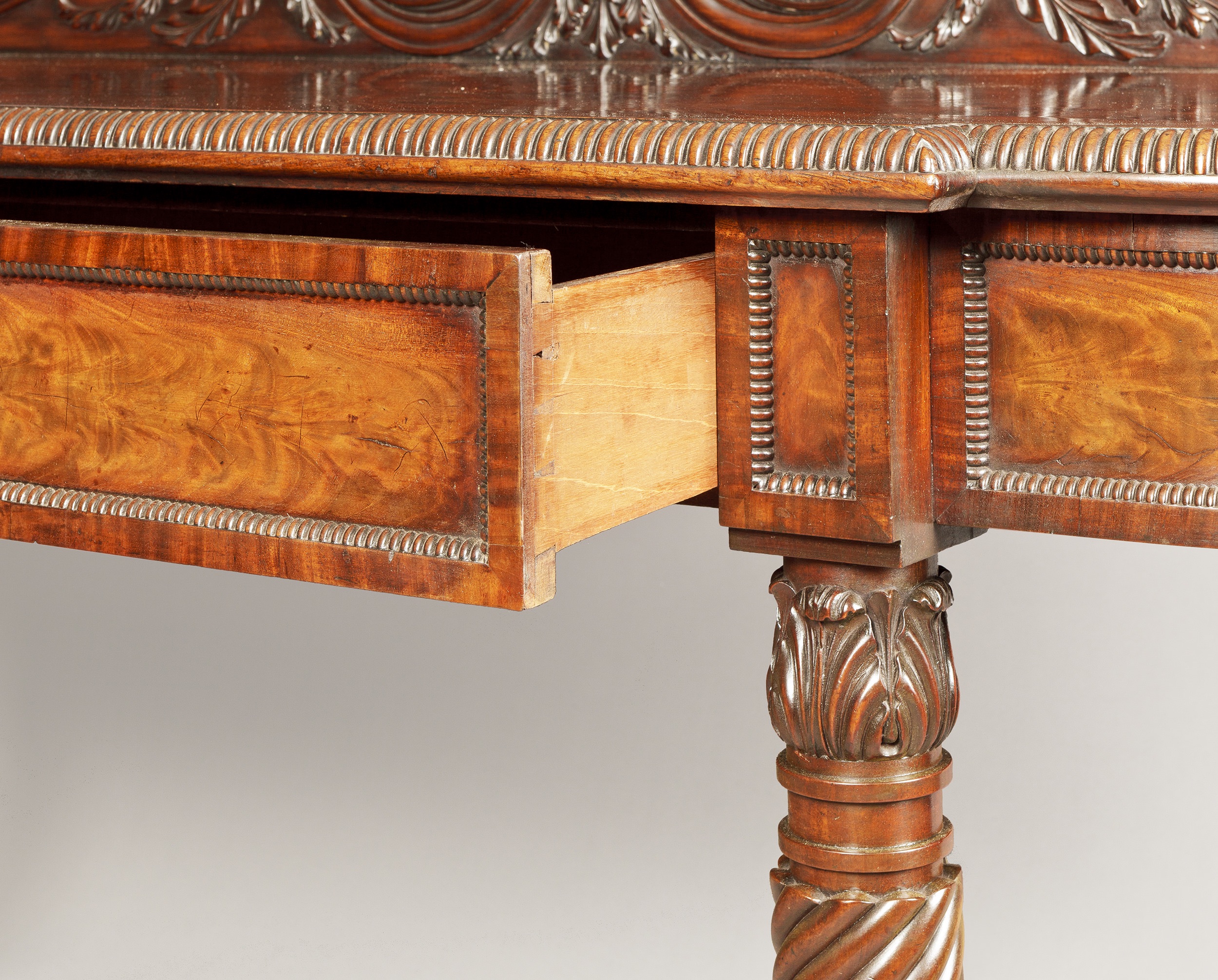
Detail of Georgian Serving Table, circa 1820, with Butchoff Antiques (ref. 7819), showing dovetail construction of the drawer.
This principle of verifiable, technical quality is perfectly illustrated by the specialist firm Howard & Sons. While other firms focused on cabinetry, Howard & Sons carved out a niche focused on the pinnacle of domestic comfort: functional excellence and bespoke upholstery connoisseurship. For collectors today, their work is valued for its unique and systematic use of verifiable markings that provide a "technical guarantee of provenance".
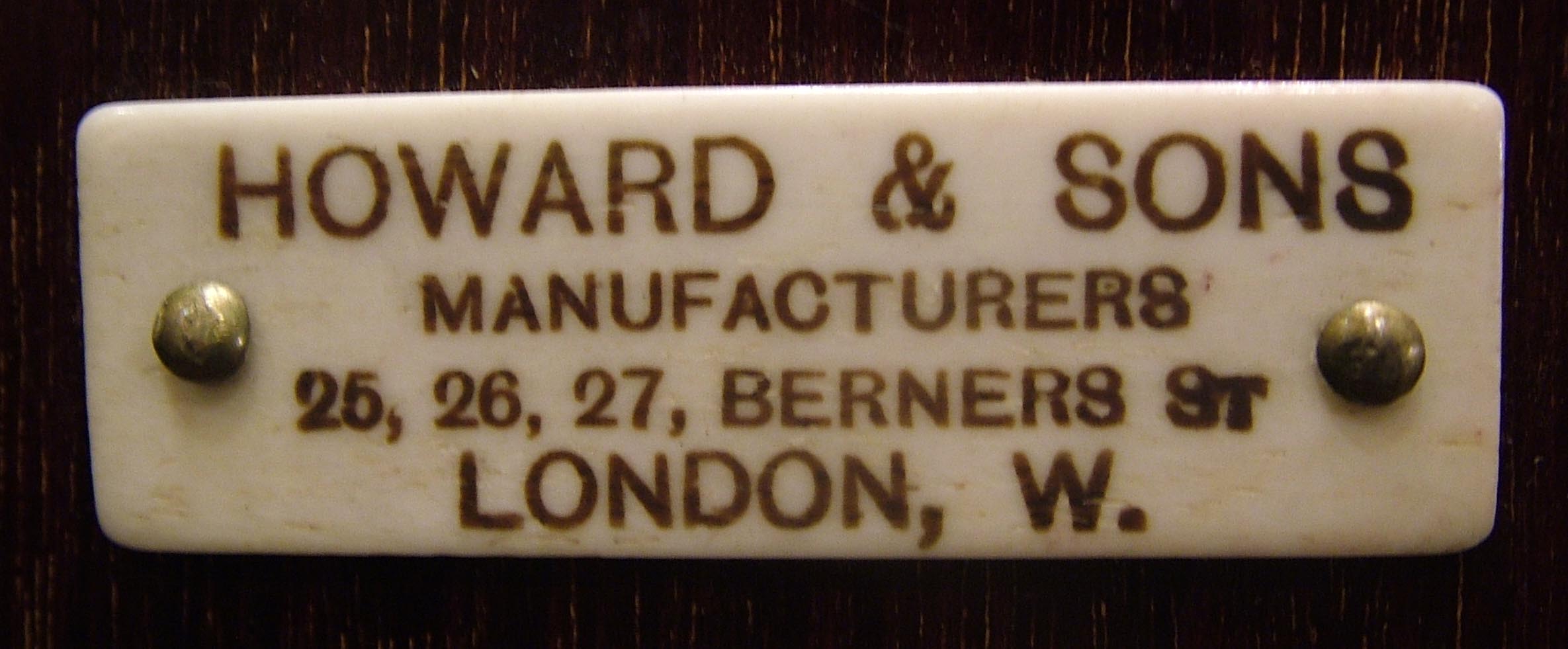
Label used by Howard & Sons. Photograph author's own.
Unlike much antique seating, which relies on stylistic attribution, Howard & Sons pieces can be definitively identified. The firm implemented a meticulous system of numbering and stamping its frames. Pieces often bear specific frame markings, serial numbers, and even date codes. This practice is crucial for authentication, as the stamps and numbers can be cross-referenced with surviving records, providing a level of certainty rarely available for upholstered furniture. The firm is particularly noted for its distinctive brass castors, which often carry the "HOWARD & SONS LONDON" stamp. The quality and wear on these original castors are a primary point of inspection for authenticators. This rigorous system of physical antique stamps and serials effectively reduces the subjectivity of valuation, transforming a Howard & Sons chair or sofa into a transparent, secure asset with verifiable authenticity.
This unbroken thread of intellectual and technical rigor connects the entire Golden Age of British design. The "investment purity" of the Regency design period, for instance, stems directly from its steadfast adherence to the classical standards established by earlier architectural masters.
The lineage begins with William Kent in the early 18th century. As a central figure in the English Palladian movement, Kent established the "architectural imperative" in furniture design. His pieces, which were often monumental, sculptural, and densely carved, were conceived as intrinsic components of the grand Palladian interiors he designed. This work established the foundational principle of British furniture as a serious, architecturally-derived collectible.
This tradition was later perfected by the intellectual apex of the Regency style, Thomas Hope. At the turn of the 19th century, Hope’s "scholarly rigor" provided the necessary discipline to maintain the integrity of British Neo-Classicism. His seminal 1807 work, Household Furniture and Interior Decoration, codified an academic approach based on meticulous studies of Greek, Roman, and Egyptian antiquity. This resulted in a refined form of Neo-Classicism, often termed Greek Revival or Egyptian Revival. Hope’s fusion of scholarly accuracy with grand, clean lines, seen in forms like the klismos chair or the use of lion monopodia, anchored the valuation of these pieces in the "enduring quality of educated taste". From Kent’s Palladianism to Hope’s antiquarianism, this continuous thread of architectural discipline ensured that British furniture remained rooted in timeless classical principles, a critical factor for capital preservation.

Design for a Klismos type armchair by Thomas Hope, published in 1807.
The "blue-chip" status of British cabinetmaking is, therefore, not a historical accident. It is the direct result of a traceable lineage: the published standards that created a verifiable design canon; the rigorous architectural discipline that imposed a scholarly, classical integrity to ensure timeless aesthetic appeal; the institutional accountability of firms like Gillow, whose meticulous archives provide verifiable proof that mitigates risk for the collector; and a foundational commitment to material integrity, prioritising superior timbers and structural joinery over simple surface decoration.

This unwavering commitment to integrity and provenance is the guiding principle of the Butchoff Antiques collection. Our passion is rooted in the "perennial pursuit to buy & sell outstanding items" that exemplify this history. We invite you to explore our curated antiques, each one expertly acquired with the deep connoisseurship this distinguished lineage demands. When you purchase from Butchoff, "you can do so with confidence", securing a verifiable asset of enduring quality, character, and style.
Writen by Rainier Schraepen
A Comprehensive Guide
The pursuit of antique lights & lamp collecting represents one of the most sophisticated and nuanced areas of decorative arts connoisseurship, combining elements of technological innovation, artistic excellence, and historical significance.
Throughout the centuries, the evolution of artificial illumination has paralleled humanity's greatest advances, from the humble oil lamps of antiquity to the revolutionary artistic achievements of the late Victorian period antiques era and beyond. This progression has left us with an extraordinary legacy of craftsmanship and design that continues to captivate serious collectors and scholars alike.
The study of antique lighting encompasses far more than mere functional objects; these pieces serve as profound markers of both technological advancement and decorative artistry. From the exquisite bronze work of French Empire period bouillotte lamps to the revolutionary artistic achievements of American studios like Tiffany and Handel, each era has contributed its unique aesthetic vocabulary to the canon of lighting design.

A pair of antique Asian cloissonné enamel lamps at Butchoff Antiques, with a large English silvered banqueting lamp in the mirror reflection.
The sophisticated collector must develop an intimate understanding of these historical periods, their distinctive characteristics, and the technical innovations that defined them. Authentication represents perhaps the most crucial aspect of antique lamp collecting, requiring a comprehensive knowledge of period-specific manufacturing techniques, materials, and artistic signatures. The ability to distinguish original patination from modern finishing, recognize authentic period electrical components, and identify legitimate maker's marks demands years of dedicated study and hands-on experience.
This expertise becomes particularly vital when evaluating pieces from highly sought-after manufacturers, where the difference between an original work and a later reproduction can represent significant variations in both historical importance and market value.

A Pair of 'Cleopatra' Candle Vases made by Matthew Boulton, c.1770, sold by Butchoff Antiques
As we delve deeper into the fascinating world of antique lighting, we shall explore the distinctive characteristics of major design movements, from the ornate complexity of Victorian Rococo Revival to the geometric precision of Art Deco, examining how each period's philosophical and artistic principles manifested in illumination design. This knowledge forms the essential foundation for any serious collector or enthusiast seeking to navigate the sophisticated market for fine antique lighting. The Georgian and Regency periods represent a golden age in British decorative lighting, marked by exceptional craftsmanship and innovative design that reflected the refined sensibilities of 18th and early 19th century aristocratic life.

Masterpieces of Georgian lighting, these floor-standing candelabra with glass attributed to Hancock & Rixon were made circa 1825. Butchoff Antiques
During this era, master silversmiths and bronziers created extraordinary pieces that merged functionality with artistic excellence, establishing standards of quality that continue to command attention from discerning collectors today. The earliest Georgian lighting solutions predominantly featured silver and brass candelabra, with notable London workshops such as Paul de Lamerie and Matthew Boulton producing exemplary pieces characterized by their classical proportions and sophisticated embellishments. These masterworks often incorporated neoclassical elements, including acanthus leaves, Greek key patterns, and elegant fluting, while maintaining the structural integrity necessary for practical illumination. The introduction of Argand-style oil lamps in the 1780s marked a significant technological advancement, allowing for brighter, more controlled illumination while presenting new opportunities for artistic expression in brass and bronze.
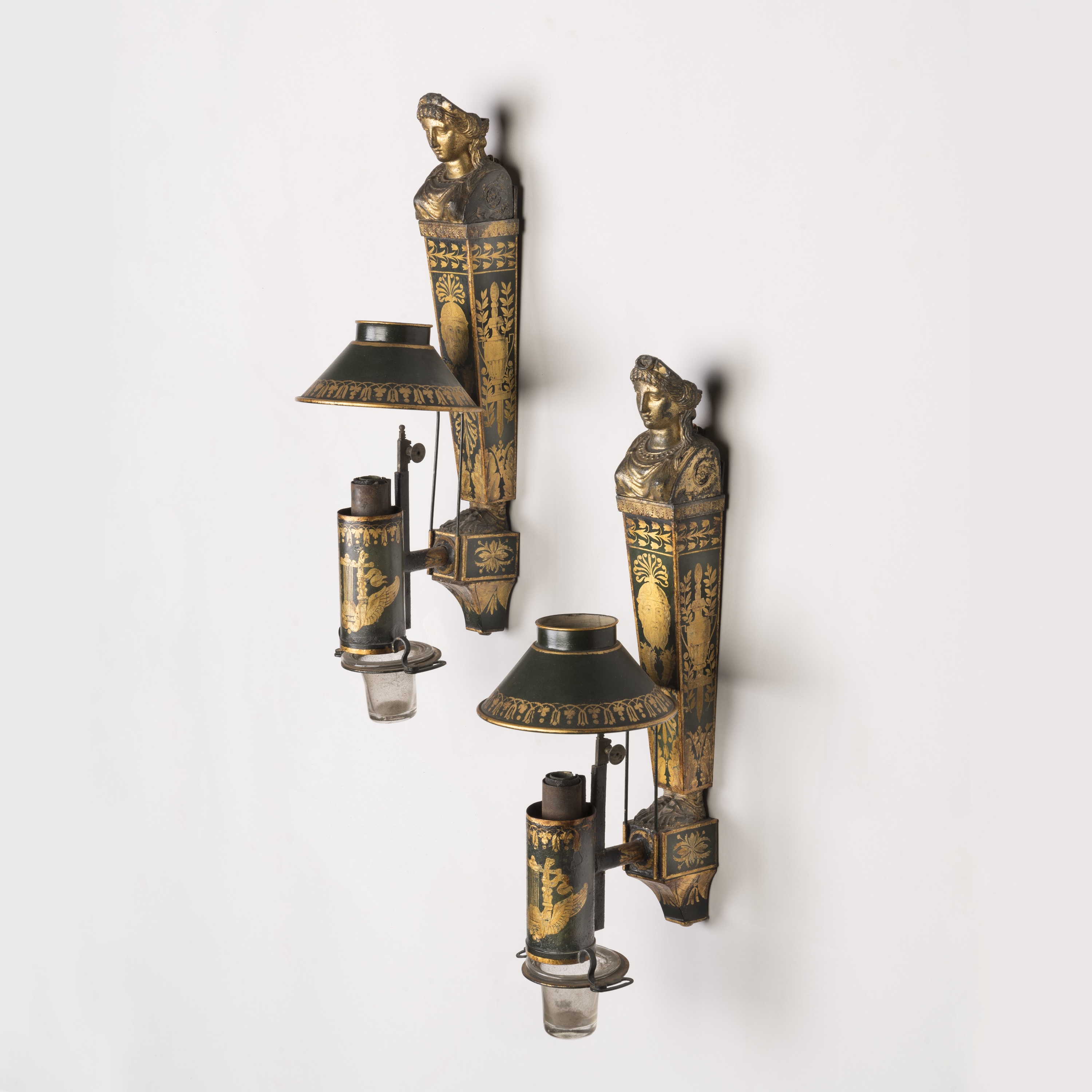
Related to the Argand Lamp, the "Quinquet" lamp, after Antoine-Arnoult Quinquet, a pharmacist in Paris, introduced a much-improved version with more brightness. Its success made it the most popular lamp of the early 19th century, until it was replaced by Kerosene lamps around 1850. Sold by Butchoff Antiques
The transition into the Regency period saw an evolution in both form and function, with craftsmen such as Benjamin Vulliamy introducing more elaborate decorative elements inspired by Egyptian and Oriental motifs. These pieces frequently featured ormolu mounts, engine-turned columns, and cut-glass hurricanes that created spectacular light effects. Authentication of pieces from this period relies heavily on proper hallmarking, particularly in silver examples, while brass and bronze pieces often bear distinctive maker's marks or workshop stamps. The most sought-after examples typically showcase exceptional chasing and casting quality, with original gilding or patination intact.
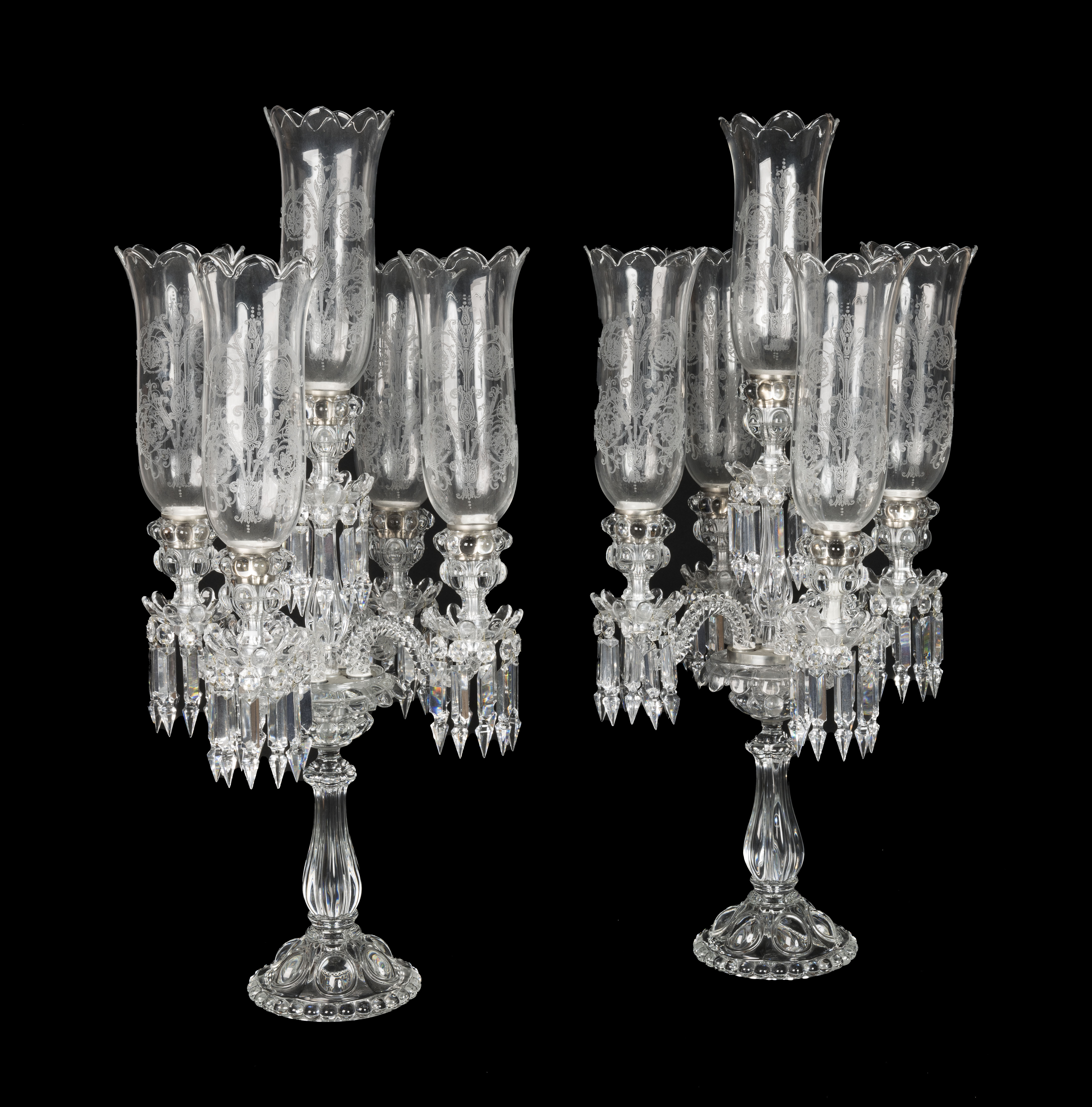
A complete pair of candelabra with hurricane shades, the bases stamped Baccarat & each shade with etched signature of Baccarat. Butchoff Antiques.
Today's market particularly values complete sets of Georgian candelabra and early Regency oil lamps that retain their original finish and demonstrate documented provenance. Pieces bearing the marks of renowned workshops, especially those with aristocratic commissioned histories, command premium prices at auction and through specialized dealers. The Victorian era heralded unprecedented innovation in domestic lighting, fundamentally transforming both the technical capabilities and aesthetic sensibilities of British illumination. The introduction of gas lighting in the 1820s sparked a revolution in lamp design, with manufacturers such as Messenger & Sons of Birmingham and Faraday & Son of London creating sophisticated brass and bronze gas fixtures that merged classical motifs with modern engineering.
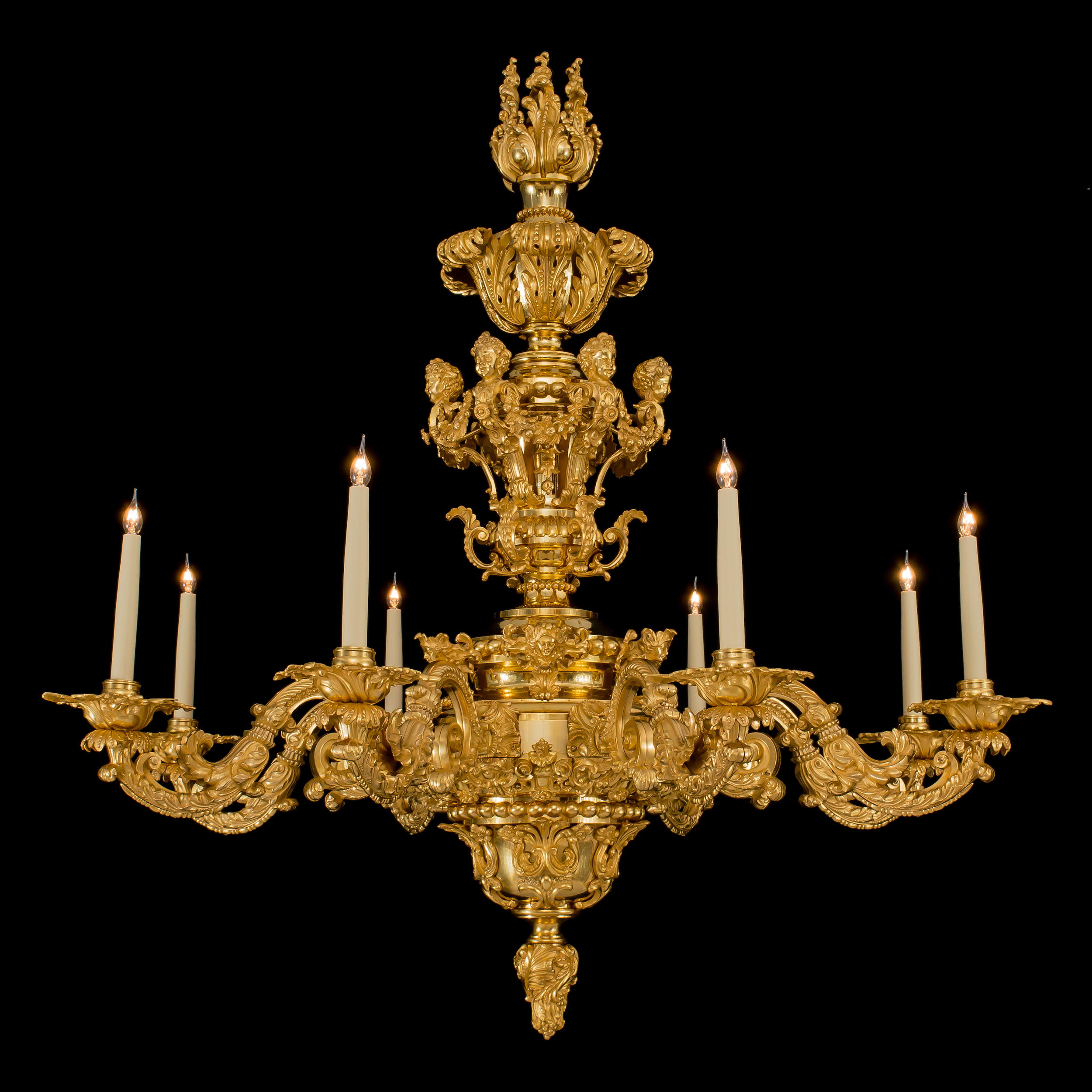
Initially designed for real candles and lowered with the help of a pulley, this gilt bronze chandelier by Messenger & Phipson, c.1825, is now fully electrified. Butchoff Antiques
The parallel evolution of oil lamp mechanisms during this period produced remarkable advances in functionality and safety. The development of the duplex burner by George Hinks in 1865 represented a significant breakthrough, allowing for brighter, more controlled illumination while maintaining the decorative elegance demanded by Victorian sensibilities. This innovation was quickly adopted by prestigious manufacturers including Hinks & Sons of Birmingham and Young & Sons of Edinburgh, who incorporated the technology into increasingly ornate designs featuring cut glass fonts and elaborate metalwork. Victorian lamp design drew inspiration from an eclectic array of historical styles, reflecting the era's fascination with revivalist aesthetics. Gothic Revival elements appeared in ecclesiastical-inspired brass work, while Rococo flourishes adorned drawing room pieces, particularly in the scrolling foliate patterns favored by firms such as F&C Osler.
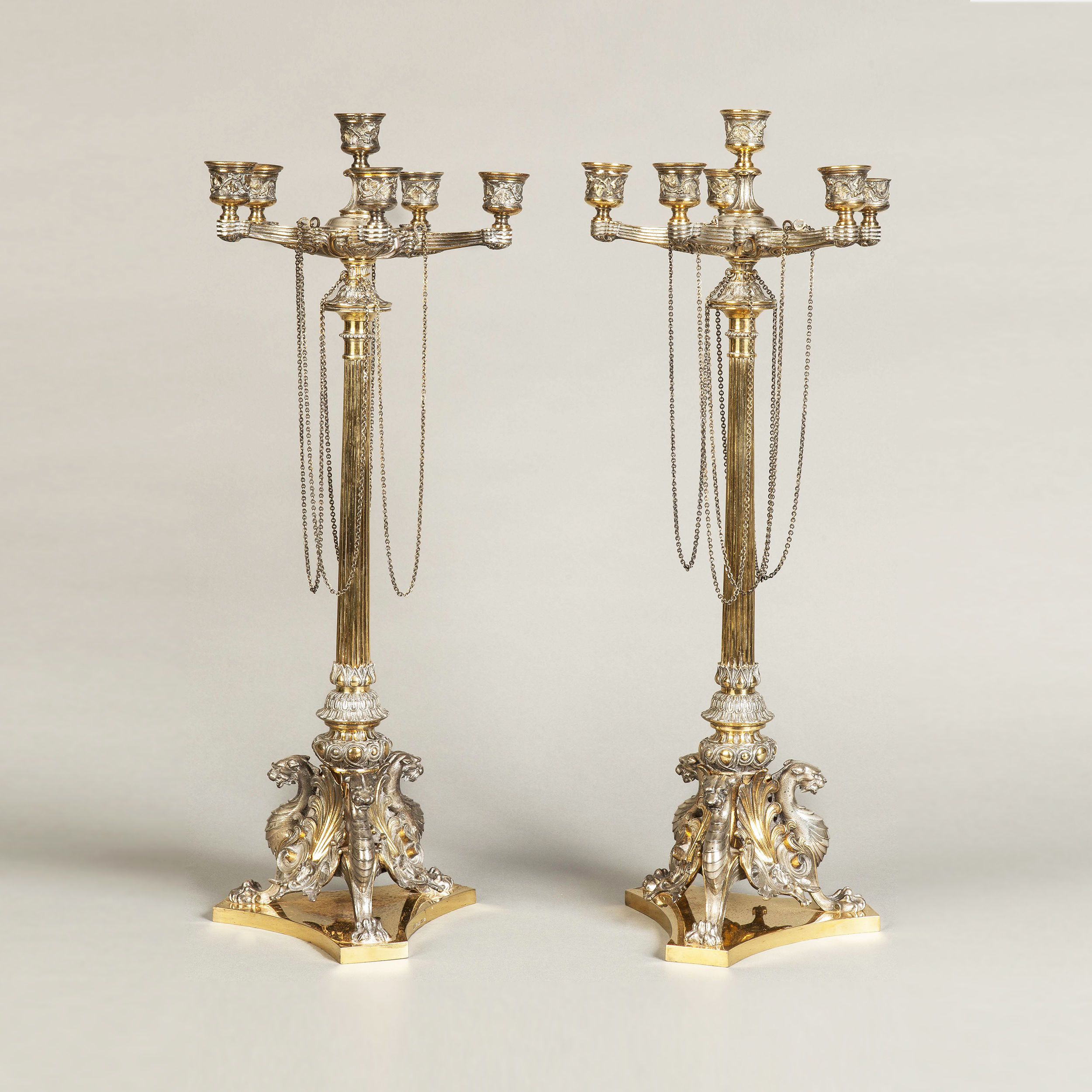
A pair of gothic-inspired silver plated and parcel gilt candelabra by Elkington & Co, c.1865. Butchoff Antiques.
The introduction of new manufacturing techniques, including improved lost-wax casting and mechanical pressing of glass components, allowed for more intricate detailing while maintaining the robust construction that characterizes genuine period pieces. The most distinguished Victorian manufacturers left distinctive markers of authenticity, from Messenger's characteristic wing nut designs to Osler's distinctive acid-etched signatures. These identifying features, combined with period-specific construction methods such as hand-cut threads and individually crafted burner mechanisms, provide crucial authentication points for modern collectors seeking genuine Victorian lighting specimens.
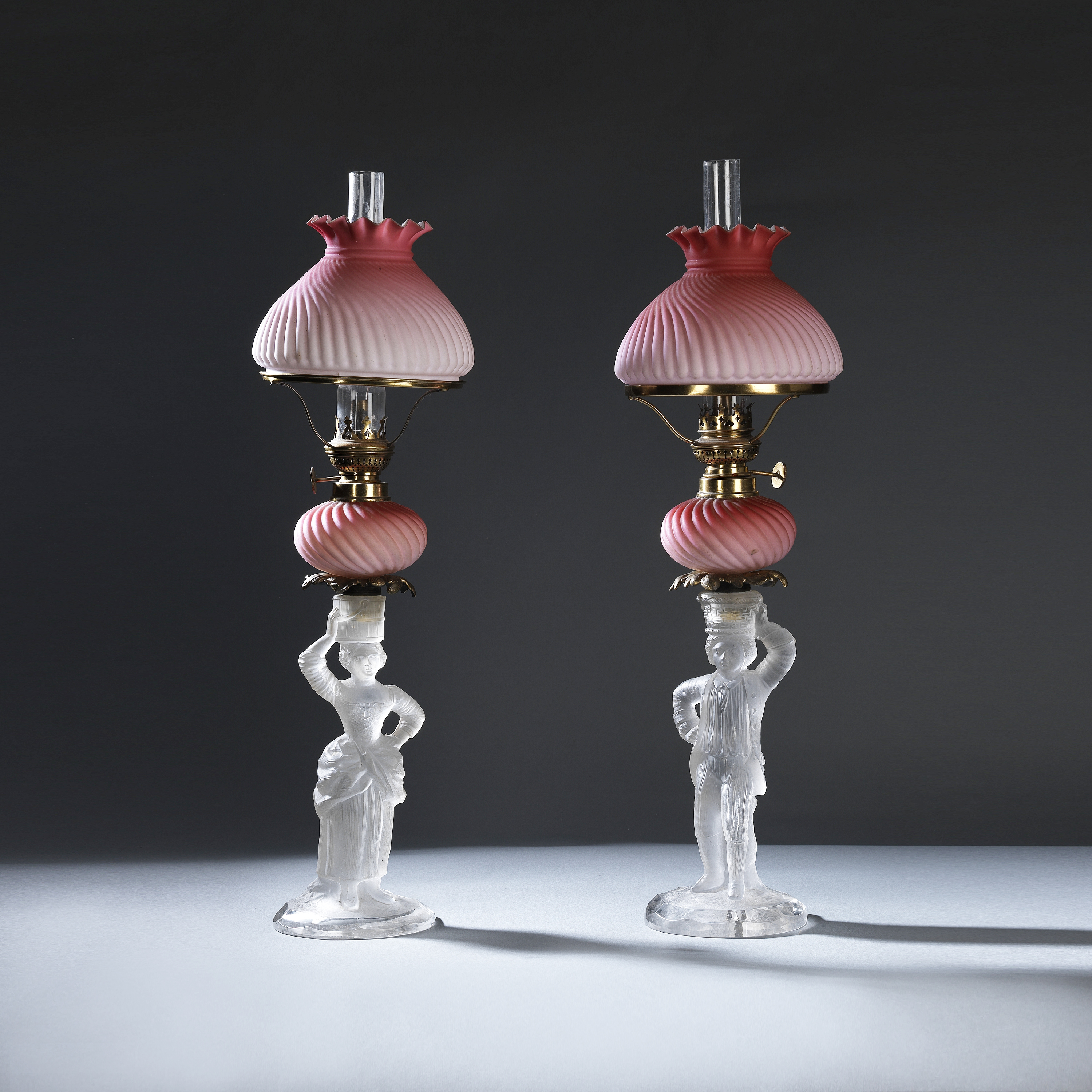
The 'Kosmos' burner was patented in the UK in 1865, by Wilde & Wessel of Berlin. The company was taken over in 1899 by Messrs Brokleman, Jager et Cie, at which point the winder mechanisms were marked 'Kosmos Brenner'. These burners were sold wholesale on a worldwide basis, and were still being manufactured up until 1974. Butchoff Antiques.
The dawn of the twentieth century ushered in revolutionary artistic movements that profoundly transformed decorative lighting design, with Art Nouveau and Art Deco establishing distinctly different approaches to lamp craftsmanship. The sinuous, nature-inspired forms of Art Nouveau found their ultimate expression in the works of Louis Comfort Tiffany, whose innovative use of opalescent glass and naturalistic themes created an entirely new vocabulary in lighting design. These celebrated pieces, particularly those featuring dragonfly motifs and flowering tree patterns, commanded extraordinary prices even in their own time, with documented sales to British nobility and industrial magnates through luxury retailers such as Liberty of London. The European interpretation of these movements, particularly in Britain, took a markedly different direction from their American counterparts. Notable British craftsmen such as W.A.S. Benson pioneered their own distinctive style, combining the flowing lines of Art Nouveau with a characteristically British restraint in ornamentation. Their works frequently featured sophisticated combinations of materials, including hand-hammered copper, brass with patinated finishes, and innovative glass treatments developed in conjunction with James Powell & Sons of Whitefriars.
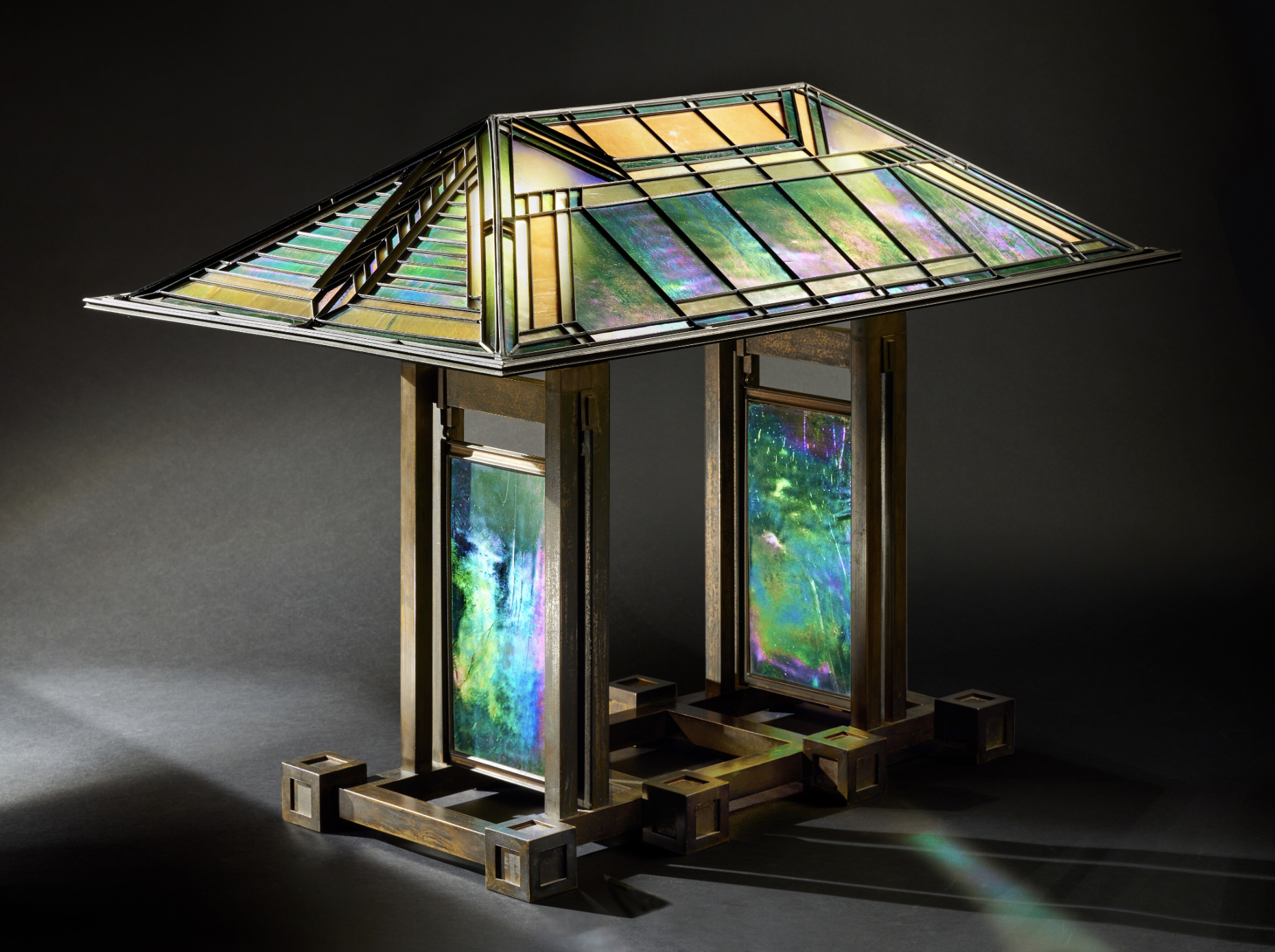
Designed by Frank Lloyd Wright, and made circa 1904 for the Thomas-Dana house in Illinois, this antique lamp broke the record for the designer & architect, achieving $7.5 million in 2025.
The transition to Art Deco in the 1920s brought a dramatic shift toward geometric precision and modern materials. British manufacturers such as Osler & Co of Birmingham embraced this new aesthetic while maintaining traditional craftsmanship standards, creating pieces that incorporated chrome-plated elements, stepped architectural forms, and innovative uses of cut and frosted glass. For contemporary collectors, authentication of pieces from this transformative period requires particular attention to period-appropriate materials and manufacturing techniques, with original electrical components and period-specific glass treatments serving as crucial indicators of authenticity. The market for these sophisticated examples of British craftsmanship continues to strengthen, with documented provenance and original condition commanding premium valuations at prestigious London auction houses. The enduring allure of antique lamps extends far beyond their decorative appeal, representing a fascinating confluence of artistic innovation, technological advancement, and cultural evolution. For the discerning collector, these illuminating artifacts offer both aesthetic pleasure and compelling investment potential, particularly as authenticated pieces from renowned manufacturers continue to appreciate in value. The preservation of these historical treasures demands a thorough understanding of proper care techniques, including specialized cleaning methods for delicate materials such as leaded glass and period-appropriate metalwork restoration approaches that maintain authenticity while ensuring structural integrity. The pursuit of antique lighting requires a methodical approach to authentication, ideally guided by established experts in the field. Professional verification services, such as those offered by respected institutions and certified appraisers, provide crucial documentation that enhances both the historical record and market value of significant pieces. The British antiques trade, with its centuries of expertise and rigorous standards, has consistently led the way in establishing authentication protocols that have become industry benchmarks. For collectors seeking to expand their knowledge, numerous scholarly resources offer invaluable insights into specific periods and makers. The archives of venerable British institutions, including the Victoria and Albert Museum and the Royal Collection, provide extensive documentation of historical lighting designs and manufacturing techniques. Contemporary collectors would do well to cultivate relationships with reputable dealers who maintain strong connections to these institutional resources while offering guidance on market trends and acquisition opportunities. The most successful collections invariably result from a combination of passionate interest, careful research, and expert consultation, ensuring that each acquisition contributes meaningfully to the preservation of our decorative arts heritage while providing sound investment value for future generations.
Written by Rainier Schraepen
“Genius of the Vatican”
Appreciating, buying, and collecting antiques is oftentimes driven by interesting stories as well as aesthetic significance & beauty. Of course, the true bullseye is when aesthetic perfection is married to historical importance. On that note, let’s delve further into our recent acquisition of the marble bust of the Eros of Centocelle (fig. 1).
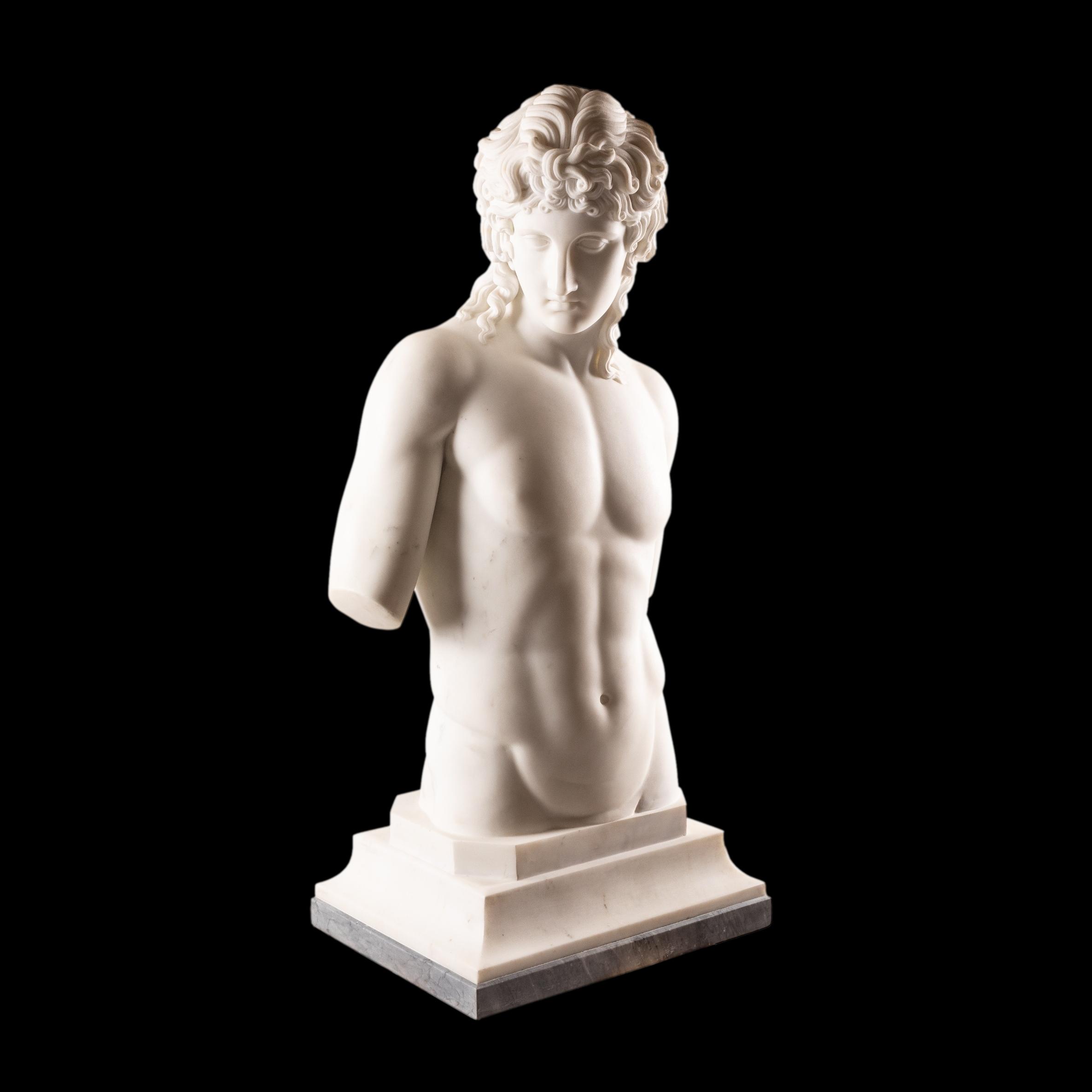
Figure 1. Grand Tour Marble Sculpture of the Eros di Centocelle, circa 1800, italian. For Sale with Butchoff Antiques.
Sculpted in Italy around the turn of the 18th century, heading into the Napoleonic era, this life-size marble torso, striking in its beauty, also tells the story of contemporary archaeological excavations, the art trade between Italy and the UK, and Papal grace.

Figure 2. The Eros of Centocelle by Praxiteles, 1st century Roman marble after 4th century BC greek original.
Our magnificent torso, the “Eros di Centocelle”- is an accurate model of the marble excavated in Centocelle (fig. 2), on the Via Labicana, not far from Rome, by the Scottish neoclassical painter and archaeologist Gavin Hamilton in 1772. Born in 1723, Hamilton (fig. 3) travelled to Italy on his Grand Tour in 1744 and then back to Britain, finally returning to Rome in 1756, where he remained until his death in 1798.
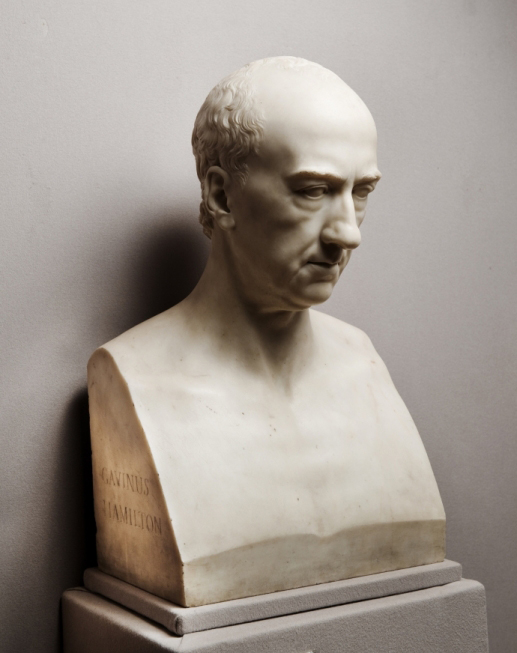
Figure 3. Bust of Gavin Hamilton, by Christopher Heweston, from 1784. Hunterian Art Gallery, Glasgow.
As a painter of neoclassical subjects in Rome, he was highly regarded by Winckelmann, Goethe and by the young Antonio Canova. He worked closely with Piranesi. Also active in the field of archeaology, he excavated at Hadrian’s Villa in Tivoli in 1771 and in the following years the outskirts of Rome at Tor Colombaro, Albano, Centocelle (fig. 4), Ostia and so on.
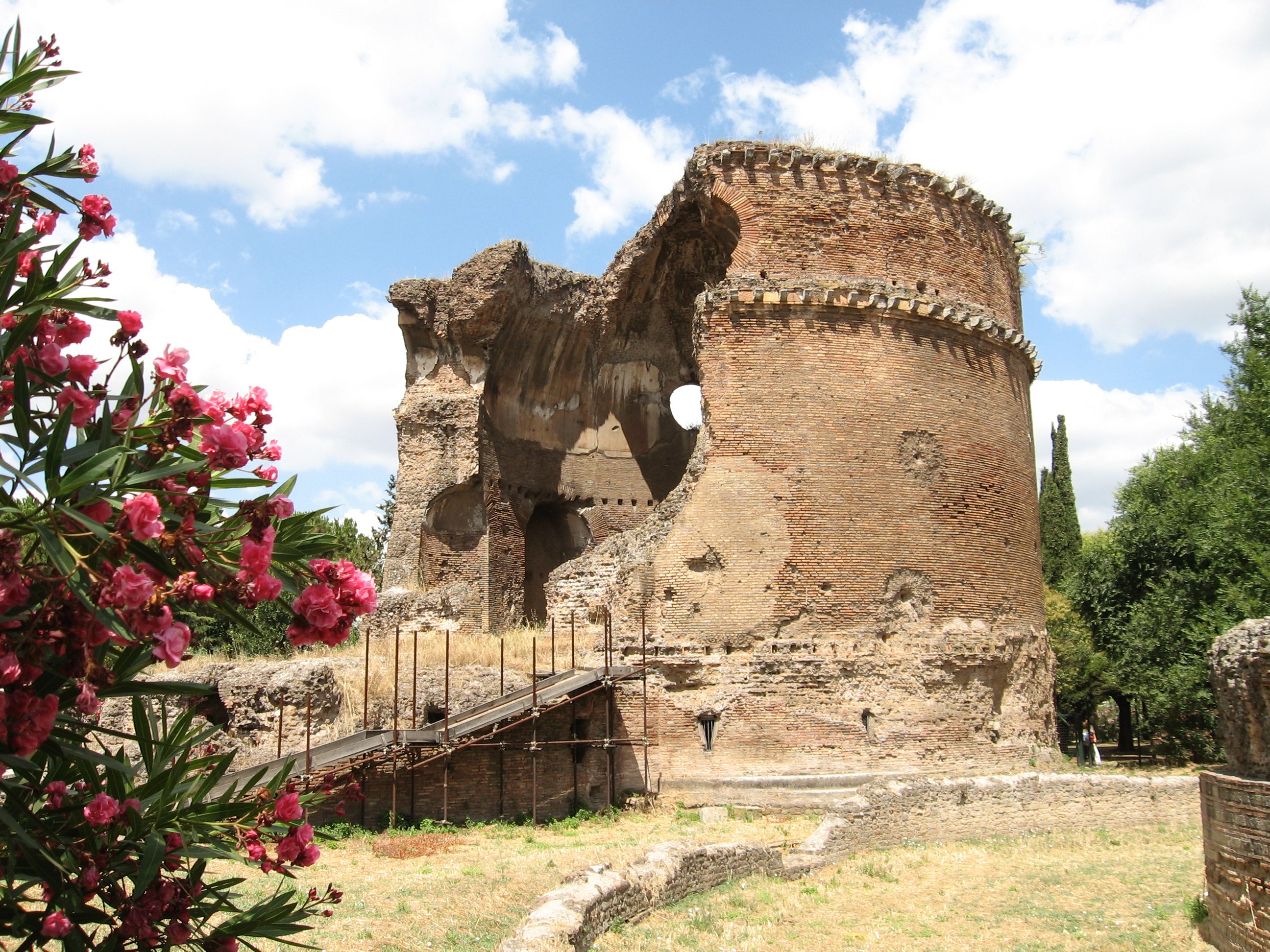
Figure 4. Centocelle Archaeological Site near Rome.
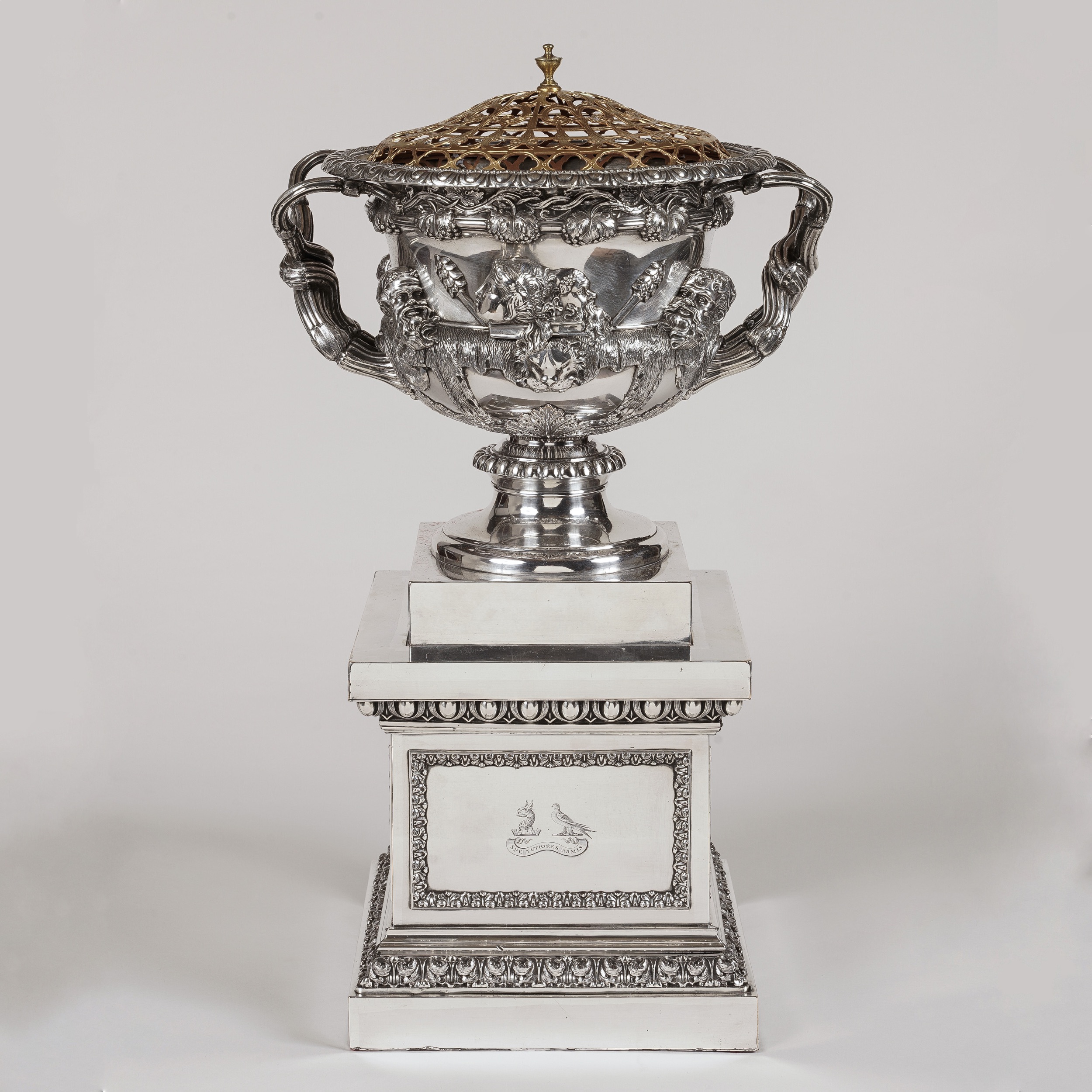
Figure 5. Old Sheffield Plate Warwick Vase by Waterhouse, Hatfield & Co, circa 1830. Previously with Butchoff.
As an art dealer, Gavin Hamilton sold antiquities as well as marble models of ancient subjects to British clients such as Charles Townley, William Petty and most notably sold the Warwick Vase (fig. 5), excavated at Tivoli, to Sir William Hamilton. In 1785 Gavin Hamilton bought and sent to London to be sold - Leonardo’s “Virgin of the Rocks”, now at the National Gallery.

Figure 6. A print of the Eros of Centocelle, by Paolo Toschi (1788-1854), purchased from Colnaghi by the British Musuem.
The Eros di Centocelle (fig. 6) was found as represented in our model, without forearms, legs and genitals (later reattached together with the nose). There were probably wings, lost in the excavation - as holes in the back of the original suggest. Briefly at the Louvre between 1797 and 1800, as part of a group of works of art given by Pope Pious VI to Napoleon, the marble was finally returned to Rome to the Musei Vaticani where it is today, in the Pius-Clementin Museum, Galleria delle Statue, 250 (Fig. 7)
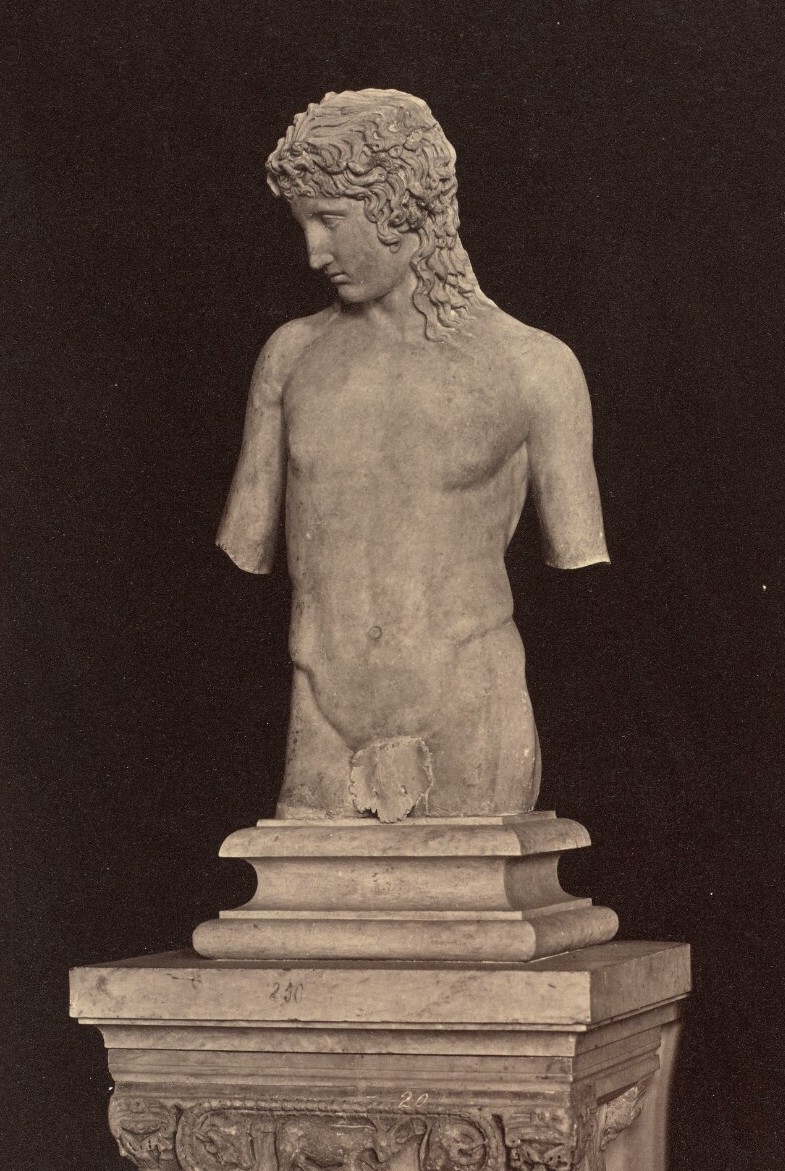
Figure 7. "Genius of the Vatican," a photograph from 1859 by James Anderson of the Eros di Centocelle at home in the Vatican, where it remains today.
It is by repute one of several Roman versions of a bronze sculpture of the Eros of Thespiae, complete with wings, legs and arms, bow and arrow, by the foremost Greek sculptor Praxiteles of Athens, 4th century BC, that was present in Rome as described by Pliny in the first century CE -and since lost; other Roman and Hellenistic examples are known, including one at the Museo Archeologico Nazionale di Napoli known as the “Eros Farnese” and one at the Hermitage, formerly at Pavlovsk, both retaining more of the complete human figure (figs. 8-9).
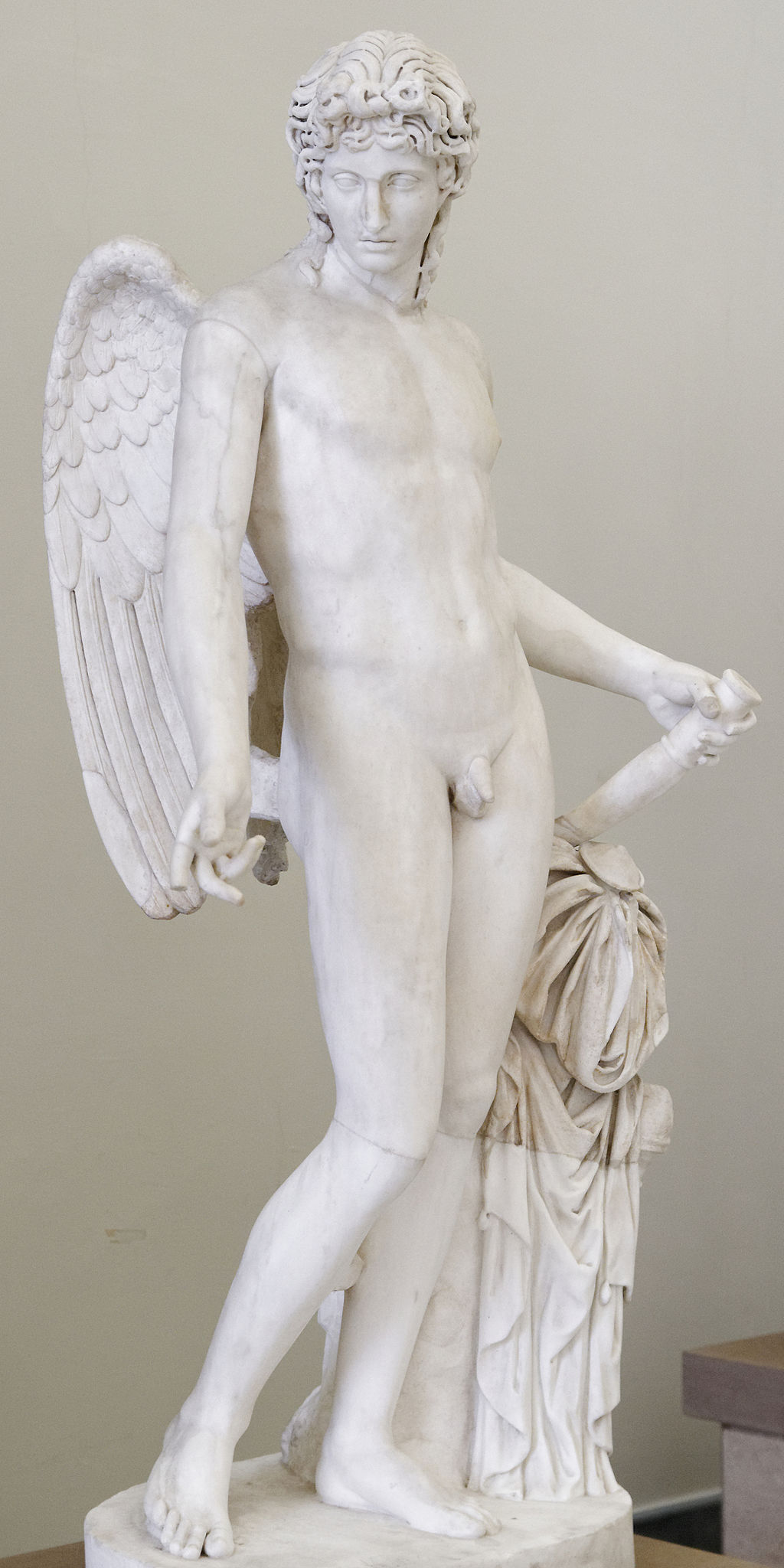
Figure 8. The "Eros Farnese," today in the National Archaeological Museum of Naples, in Naples, Italy.
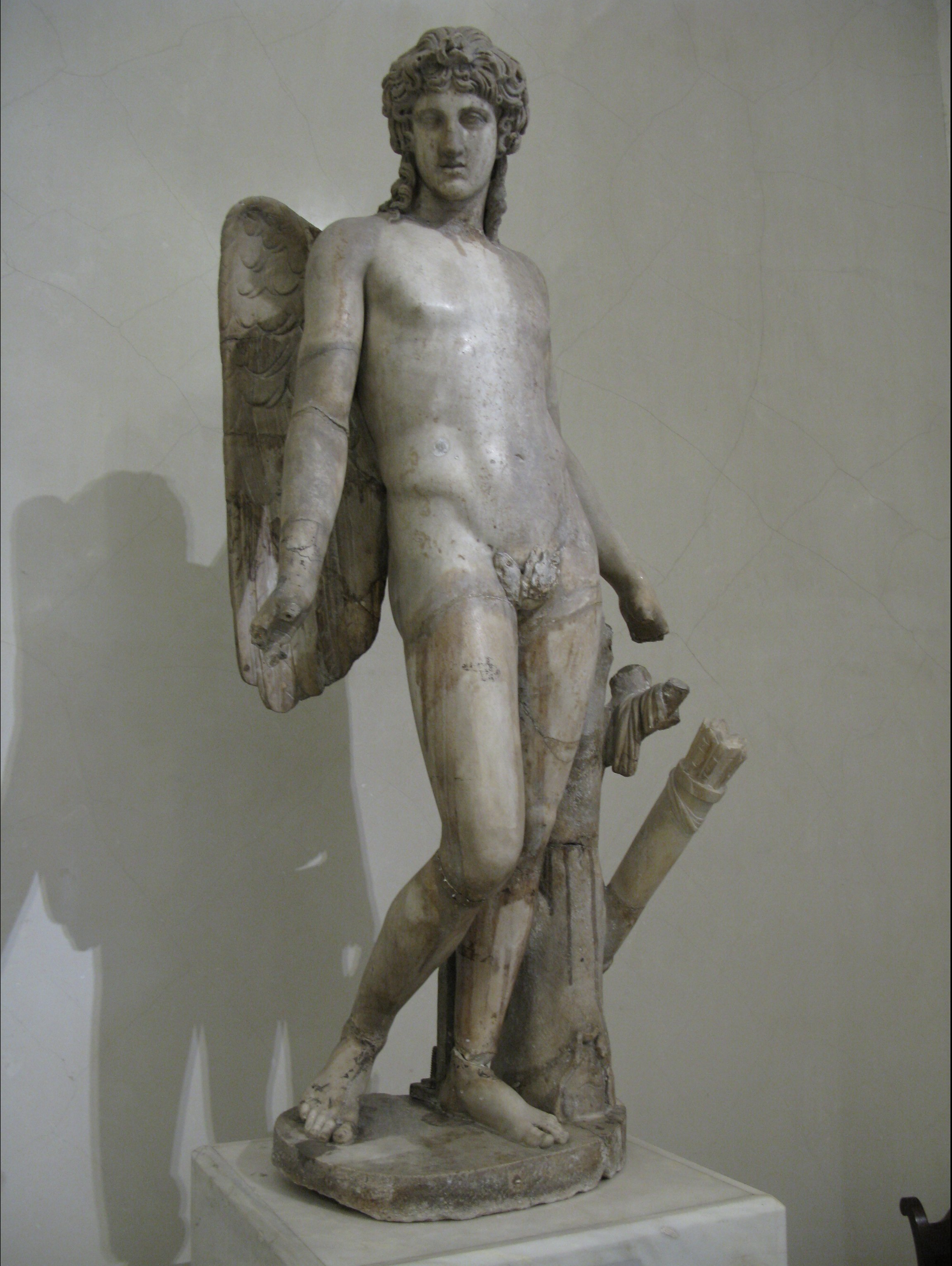
Figure 9. "Eros" in the Hermitage Museum in St Petersburg, Russia.
Our “Eros” (fig. 10) was most probably expertly carved shortly after the return of the original “Centocelle” to Rome from Paris in 1800: of the same approximate size and posture - it is accurate and intriguing, in it’s intense expression and calm elegance.
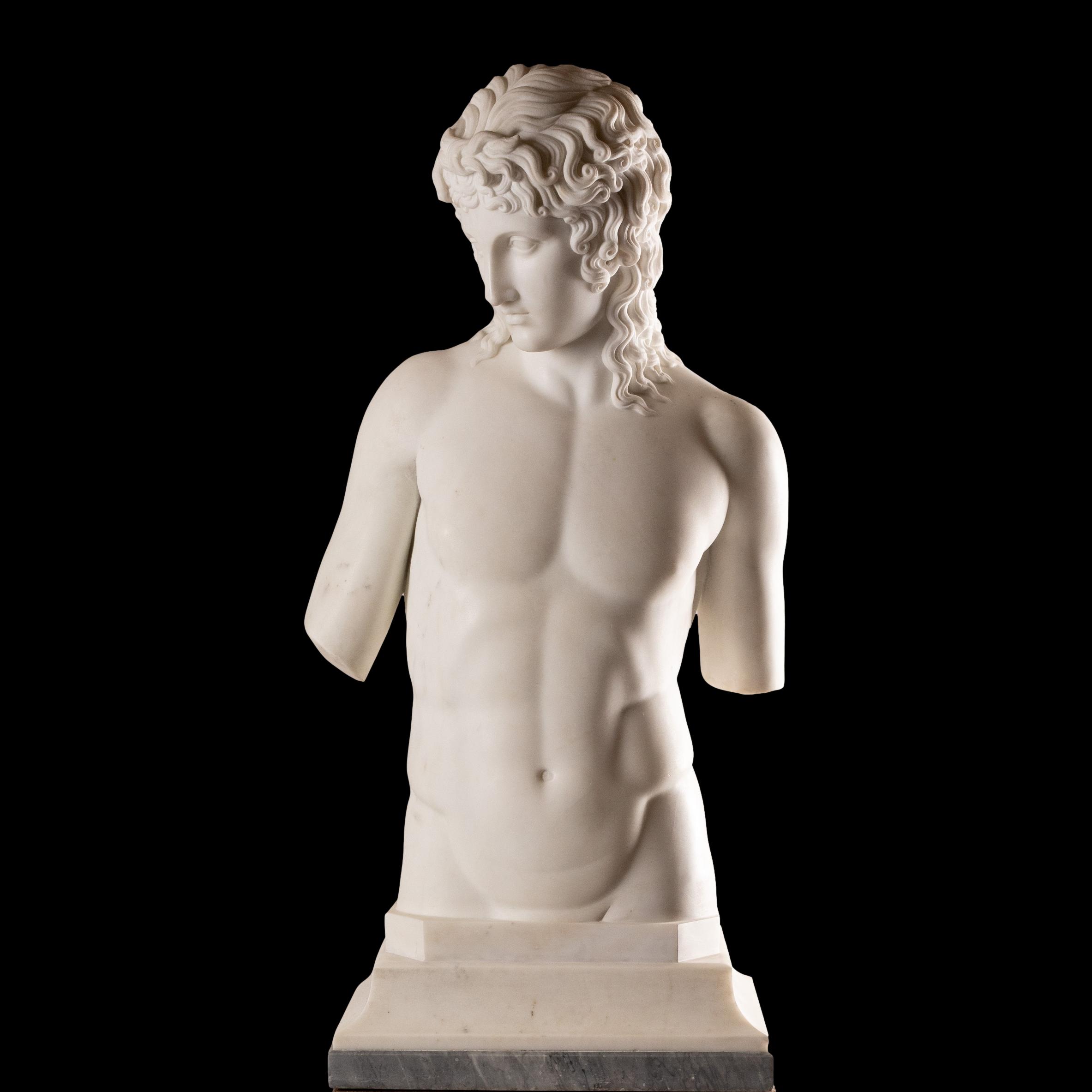
Figure 10. Grand Tour Marble Sculpture of the Eros di Centocelle, circa 1800, italian. For Sale with Butchoff Antiques.
Brought back to Britain in the 19th century most probably as a prize of the Grand Tour, it has since been in private collections.
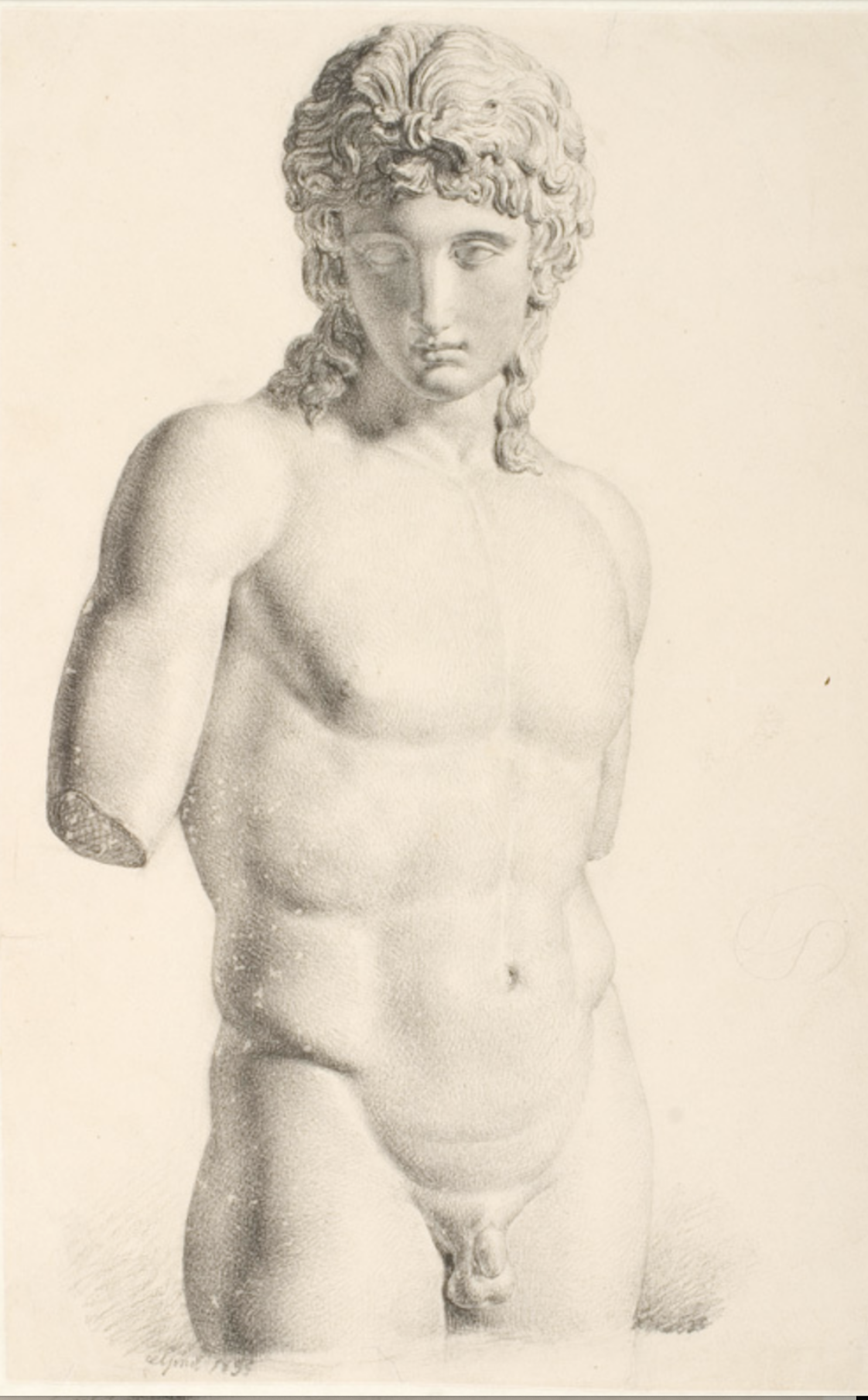
Drawing by Dankvart Dreyer of the "Eros", circa 1833, National Gallery of Denmark.
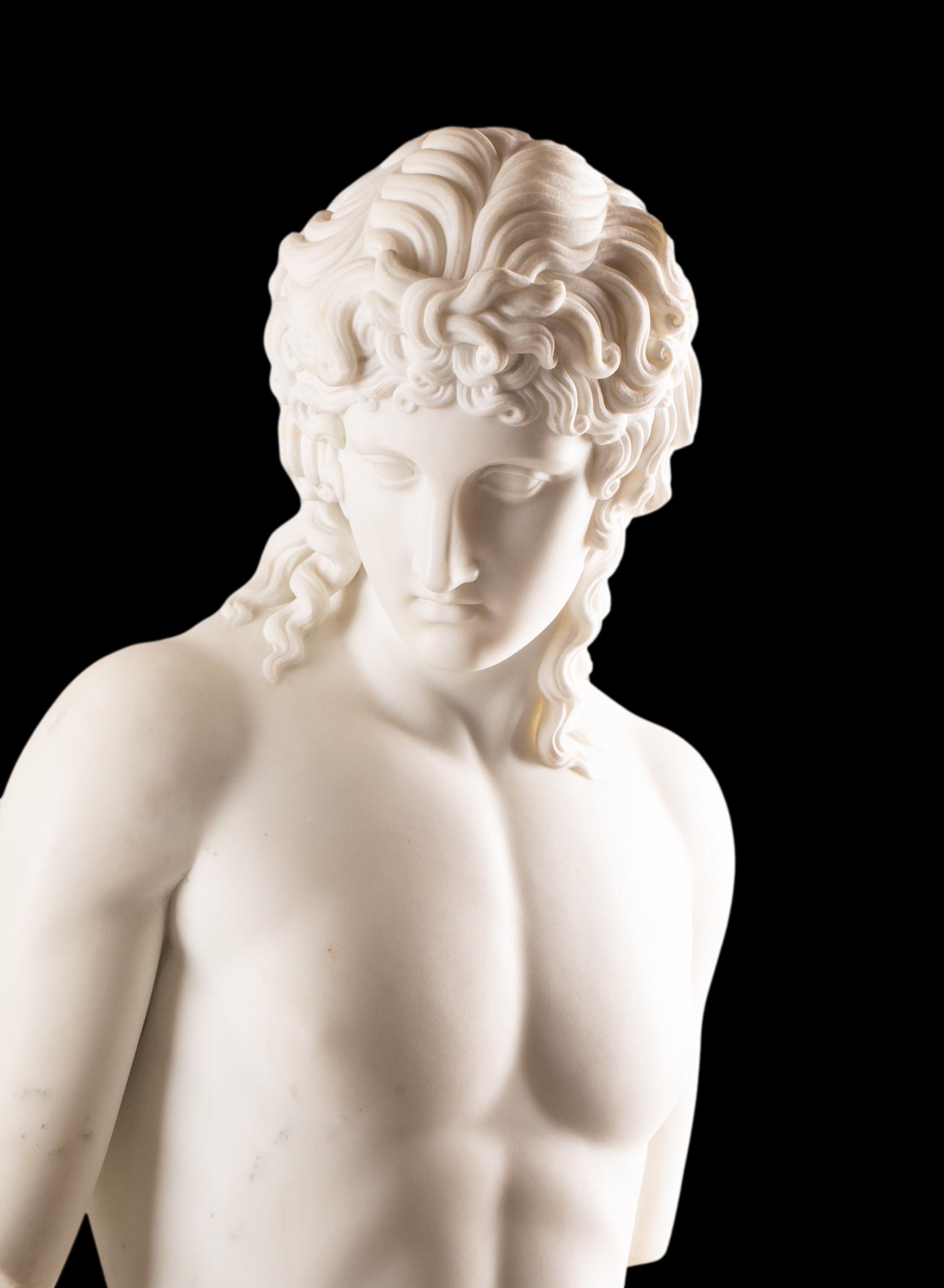
Grand Tour Marble Sculpture of the Eros di Centocelle, circa 1800, italian. For Sale with Butchoff Antiques.
Written by Rainier Schraepen
An escutcheon, in furniture design, is the metal plate that surrounds a keyhole. First appearing on desks and cabinets during the Middle Ages, they were almost exclusively made of wrought iron, a hardwearing material which protected the keyhole from damage and chips. Just like metal hinges and handles found on furniture, these practical components slowly evolved over the centuries into enticing decorative elements.
From the 17th century onwards, escutcheons tended to be made of brass, and were designed to complement the overall aesthetic of a piece of furniture. It was really during the 18th century that both French and English makers explored the finer designs of escutcheons to their full potential. The best furniture was decorated with gilt bronze (ormolu) escutcheons and appeared on both sides of the English Channel.
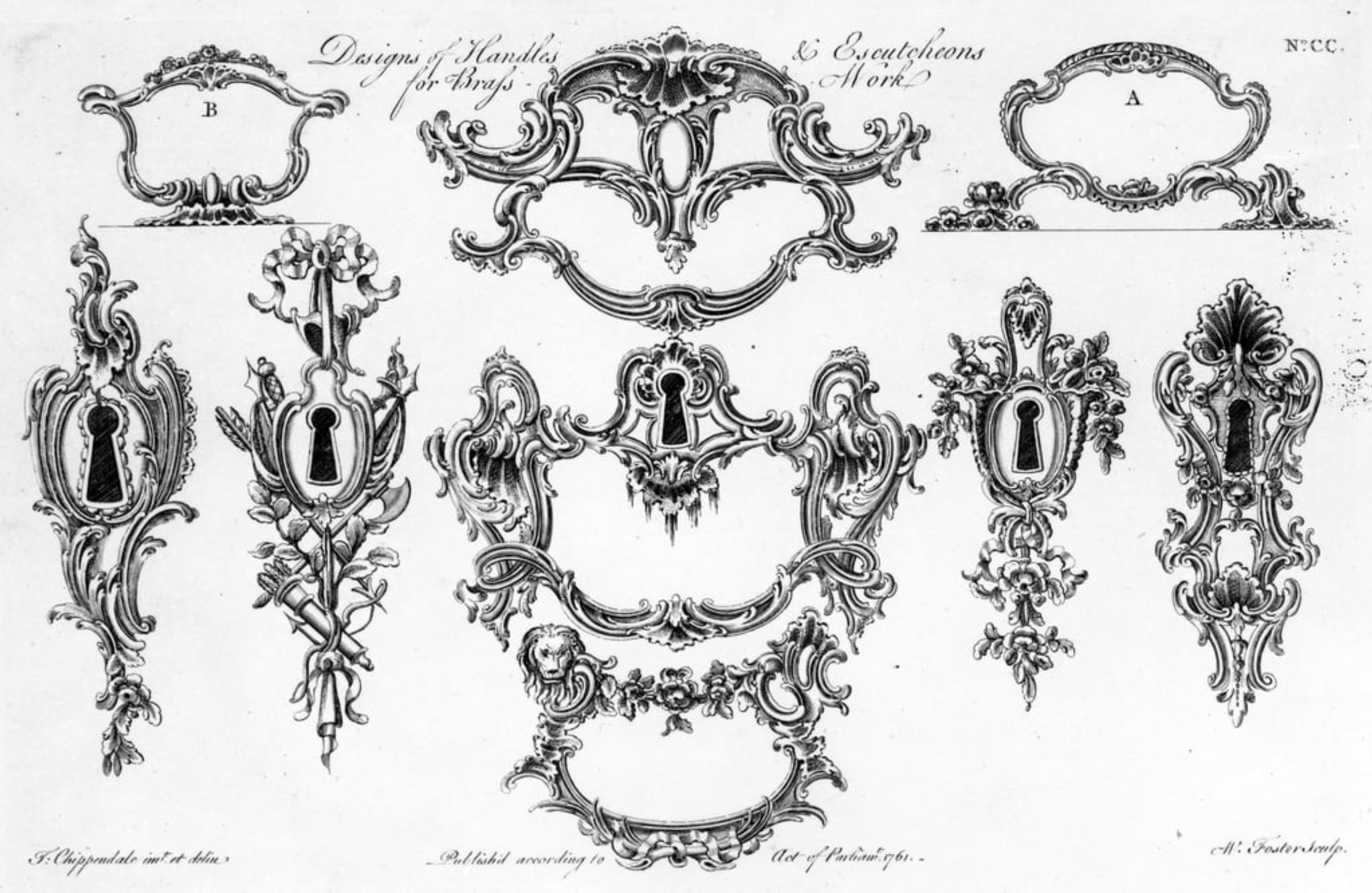
Figure 1. Chippendale's "Designs of Handles & Escutcheons for Brass Work" published in 1761
The 18th and 19th century English tradition for escutcheon designs are traced back to a handful of influential designers, including Thomas Chippendale & Robert Adam. The master of Rococo, Chippendale’s designs (fig. 1) are often asymmetrical, incorporating C-scrolls and floral elements, like the escutcheons on this George III partners desk (fig. 2).
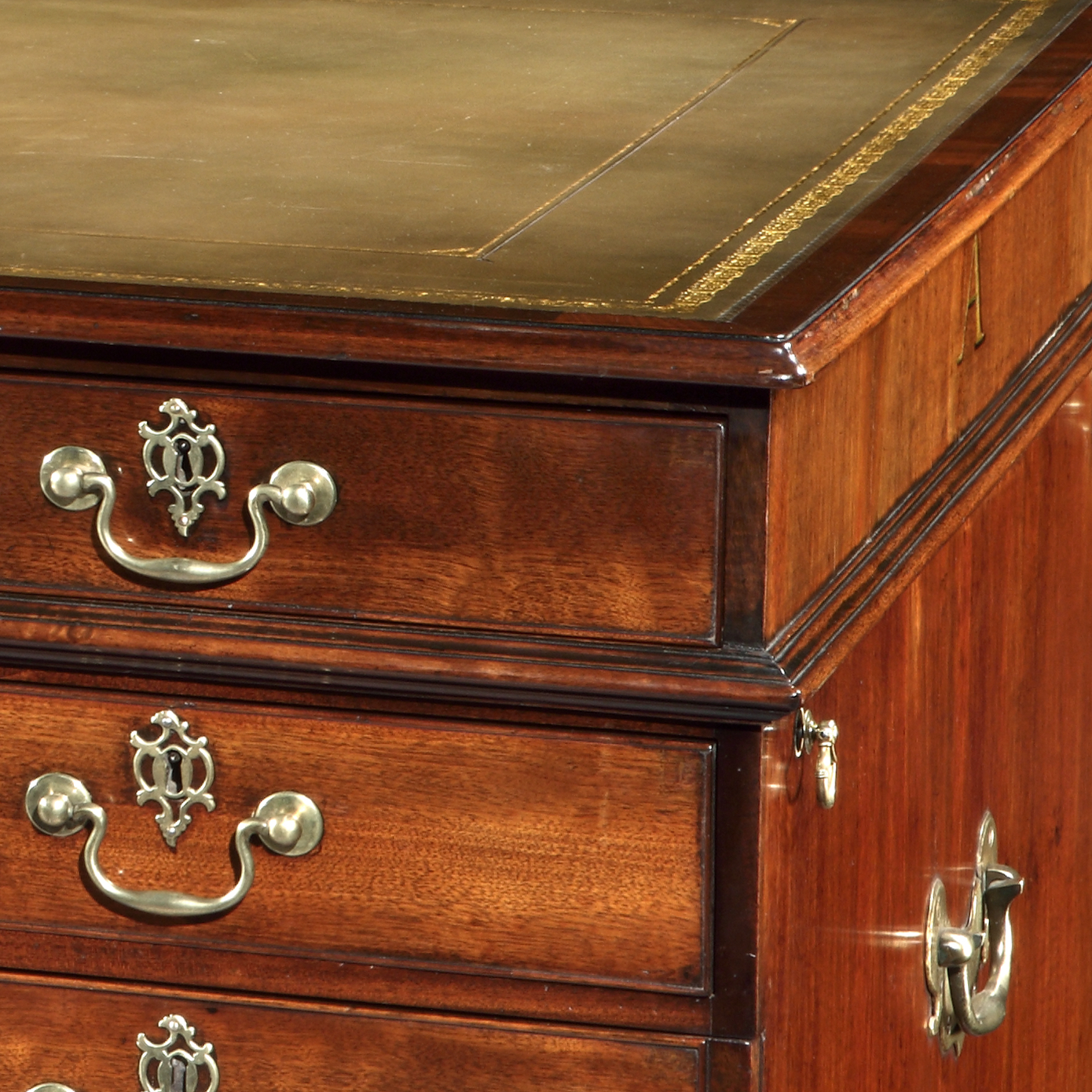
Figure 2. A Fine Example of a George III Partners Desk, circa 1780. Butchoff Antiques, London.
Meanwhile, Robert Adam advocated for a return to a classical design inspired from Antiquity, incorporating Palladian elements such as rosettes, medallions, acroteria, and honeysuckles motifs. These were equally published as engraved designs (fig. 3), and can be recognized on this neoclassical bureau cabinet (fig. 4) as well as this 19th century games table by Gillow & Co (fig. 5).
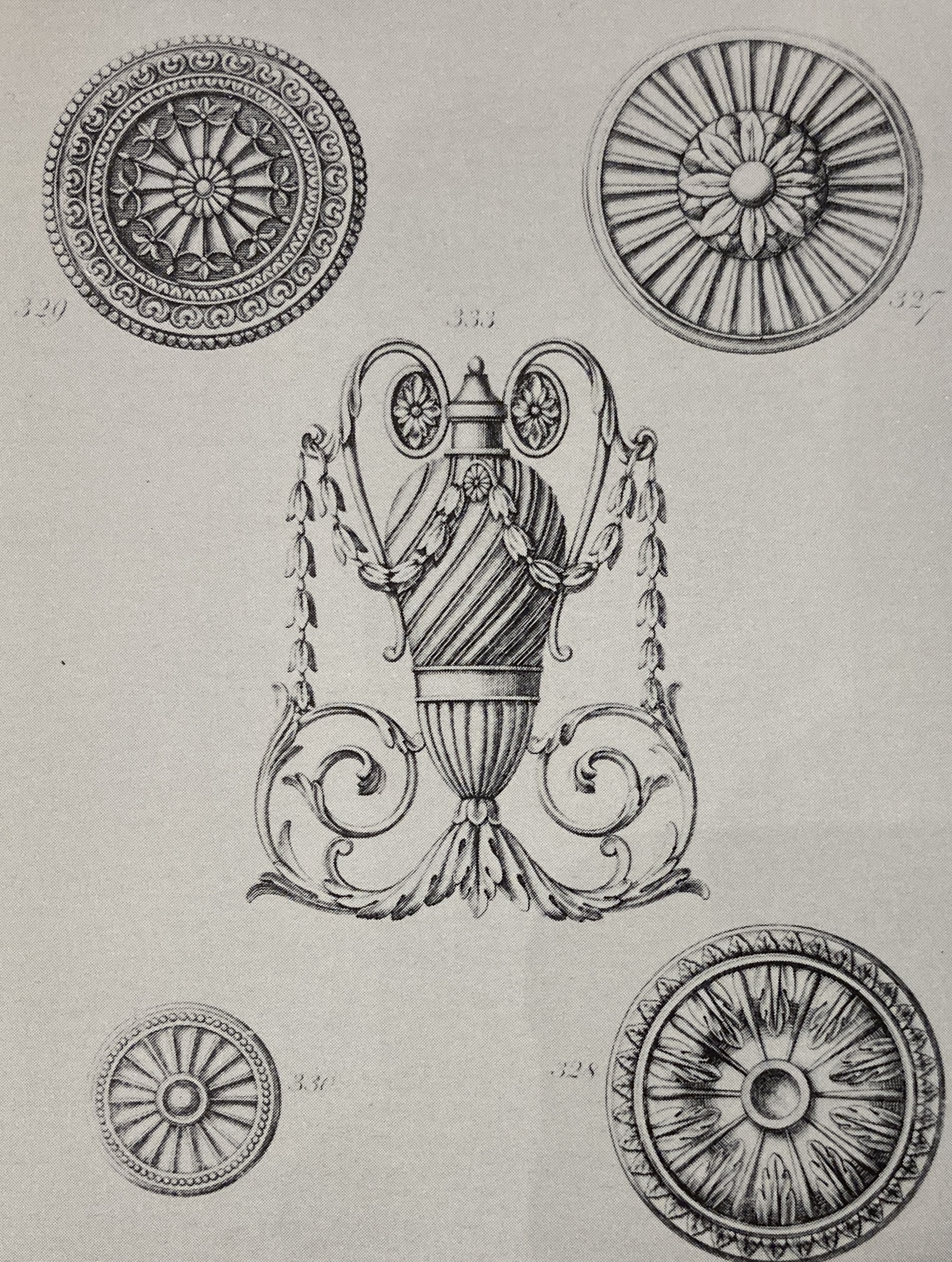
Figure 3. Anonymous Neo-Classical Designs for Decorative Brasswork, late 18th century.
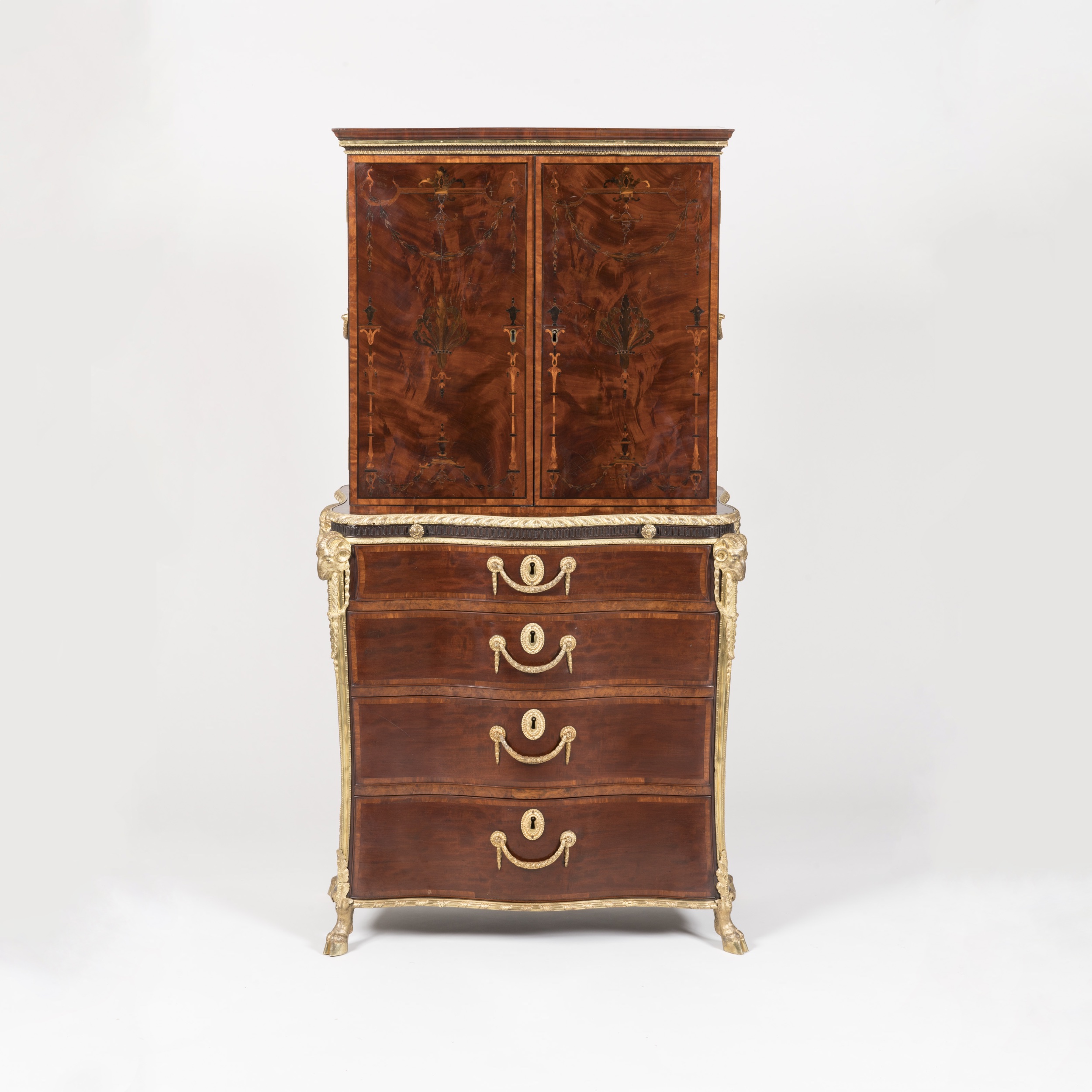
Figure 4. A Magnificent Ormolu-Mounted Bureau Bookcase, Butchoff Antiques, London.
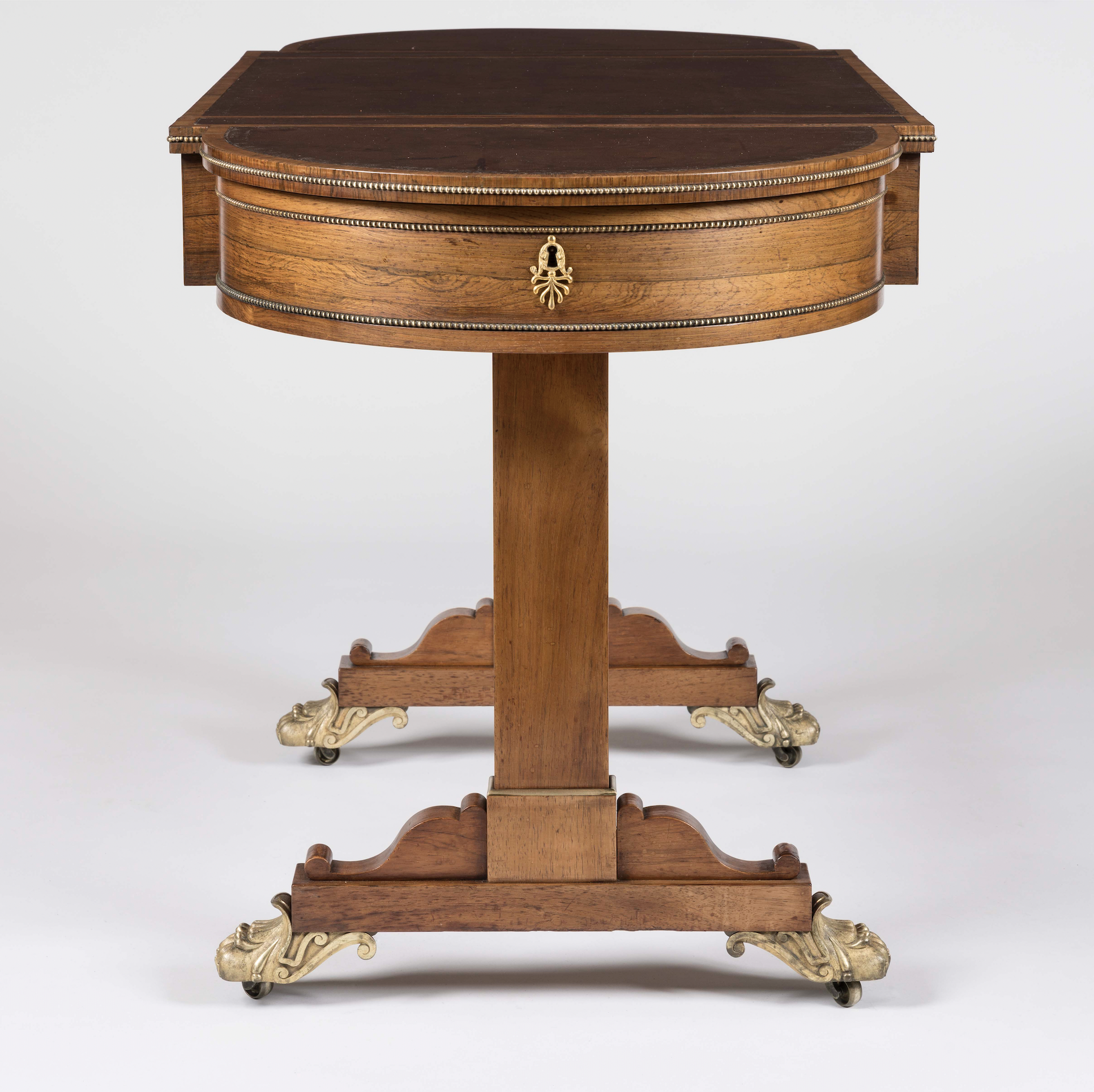
Figure 5. A Regency Period Games Table firmly attributed to Gillows of Lancaster, circa 1815, previously with Butchoff, London
Louis XIV
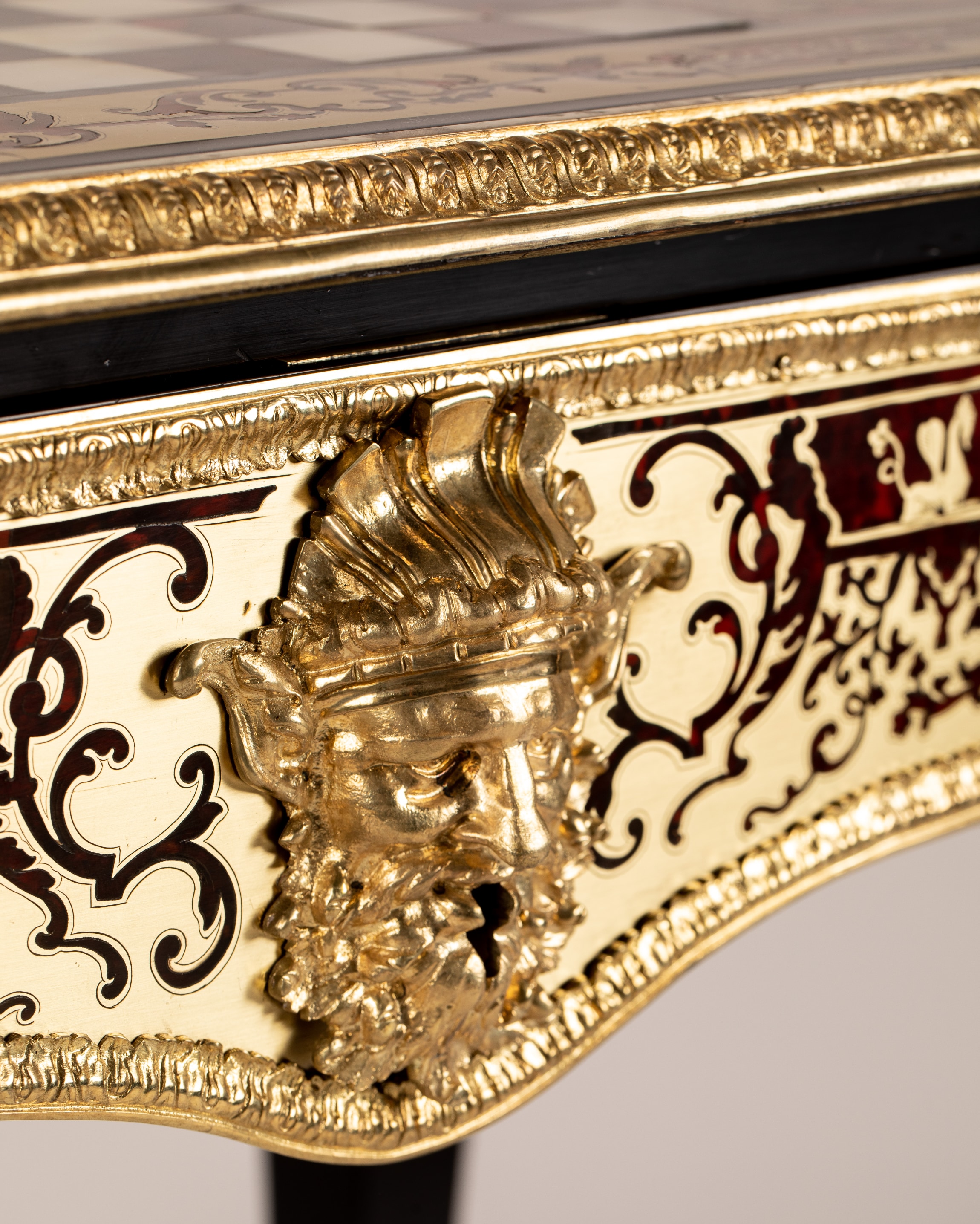
Figure 6. A Fine pair Games Table of the George IV Period in the Manner of André-Charles Boulle, Attributed to Thomas Parker, circa 1820, Butchoff Antiques, London
It was André-Charles Boulle (1642-1732), cabinetmaker to the king, who propelled French furniture into ambitious new territory starting in the late 17th century. His exclusive right to produce cabinetwork alongside bronzework in his studio meant a direct aesthetic synergy became possible between both disciplines for the first time. His inventiveness is apparent in the confident escutcheon on our Louis XIV Boulle marquetry style games table (fig. 6).
Louis XVI
The next century pushed French gilt bronze work to its apex, creating incredibly detailed ormolu mounts which adorned the finest furniture. In this period, rococo flourishes inspired escutcheons with a plethora of floral, foliate, and organic forms, exemplified in the work of Jean-Henri Riesener. Undeniably elegant, escutcheons for royal furniture he designed (fig. 7) remained popular throughout the 19th century, and appear on furniture produced by Henry Dasson (fig. 8), among others.
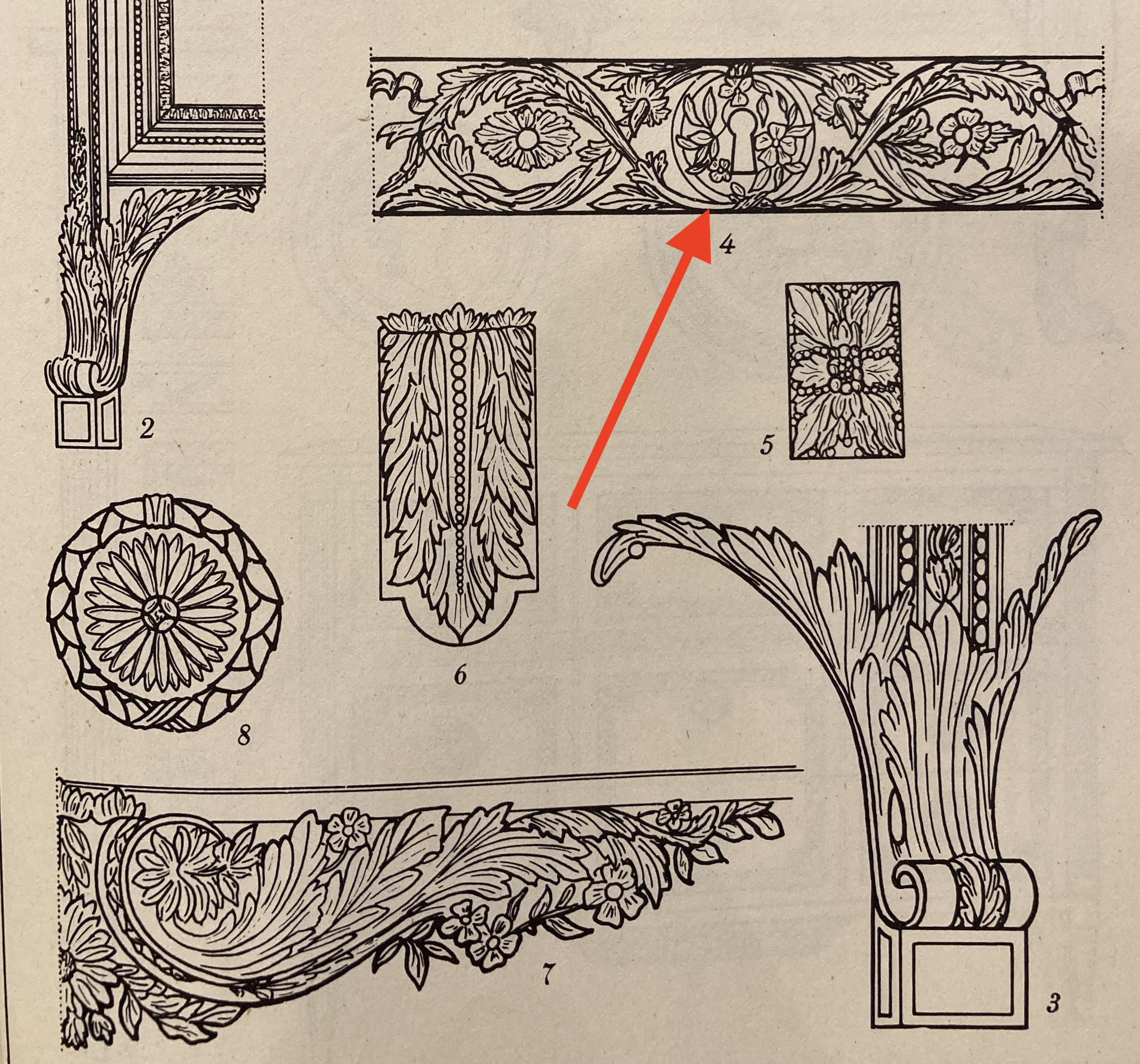
Figure 7. Line Drawing of a commode made by Jean-Henri Riesener in the late 18th century
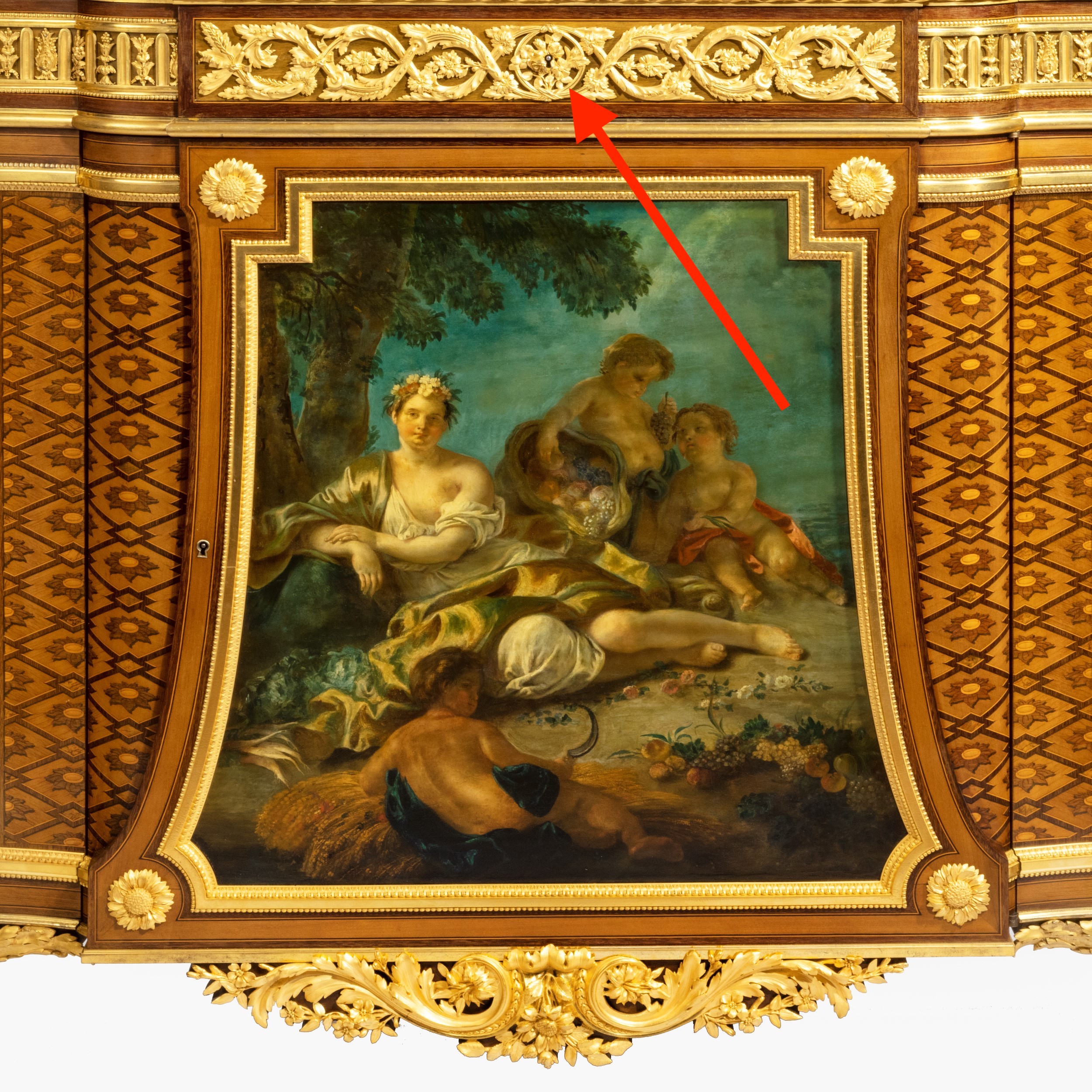
Figure 8. A Very Fine Louis XVI Style Gilt-Bronze Mounted Marquetry Commode, dated 1879, Butchoff Antiques, London.
EMPIRE STYLE
Just as a revived interest in Classical Antiquity spawned in England, Napoleon’s conquests in Egypt sparked an admiration and obsession with Ancient Egyptian motifs, observed on obelisks, pyramids, and tombs of the pharaohs. Common motifs included wine amphoras, sphinxes, and female masks. It was perhaps the swan (fig. 9), which had become intimately associated with the Empress Josephine which became one of the most popular escutcheon designs, as seen on our desk in the French Empire manner (fig. 10).
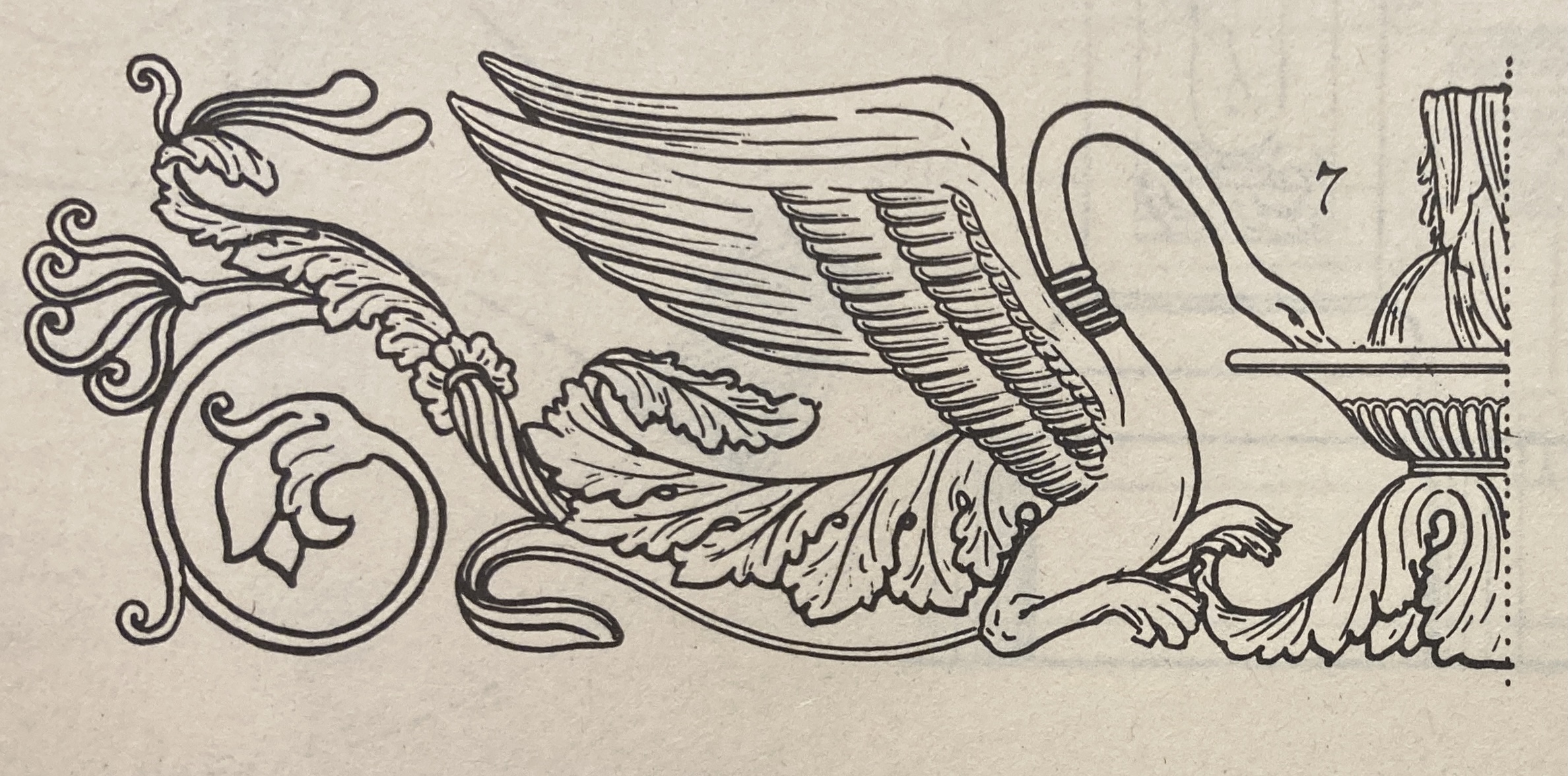
Figure 9. Drawings from Compiègne Palace, early 19th century.
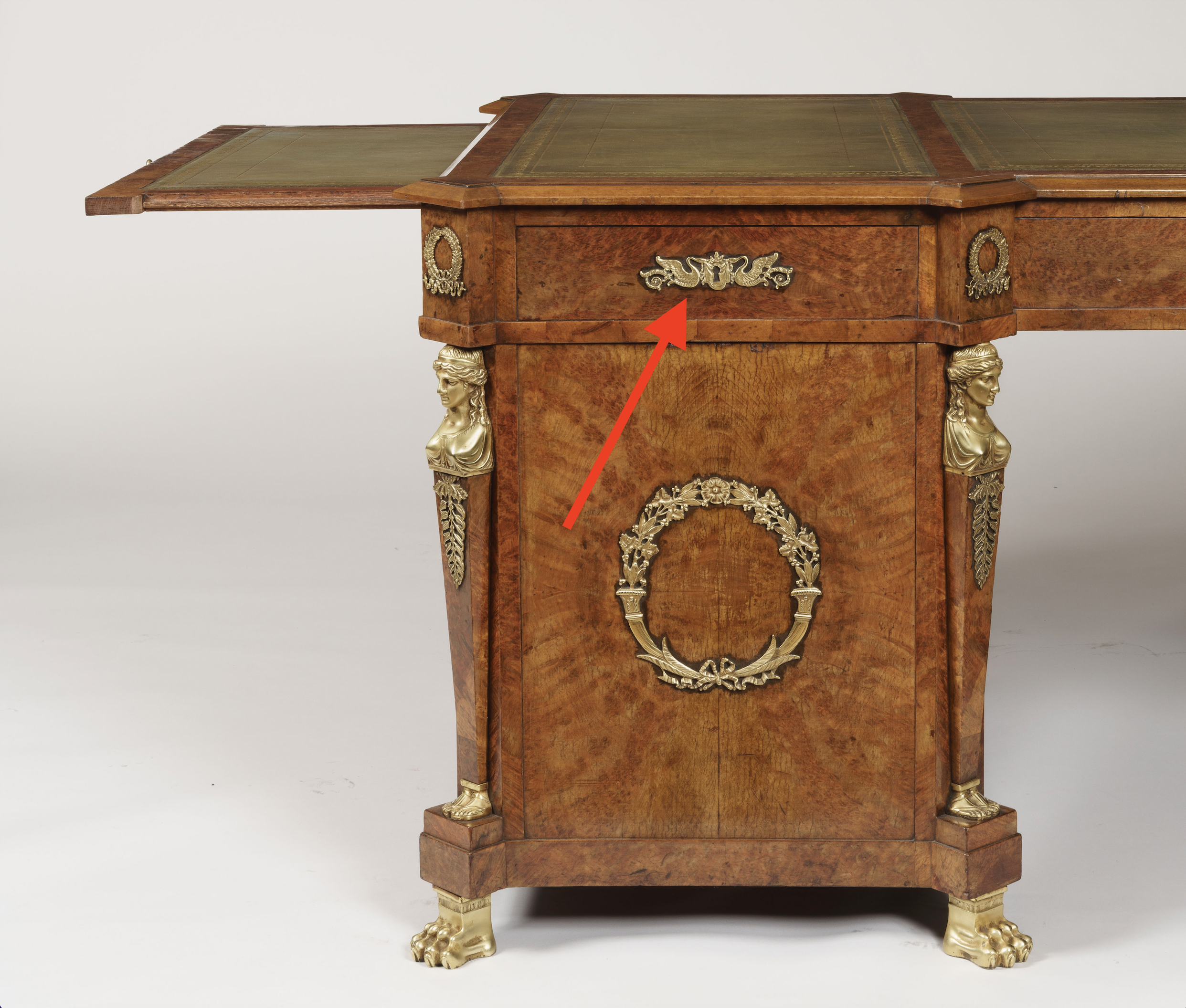
Figure 10. A Pedestal Desk in the French Empire Manner, circa 1890, Butchoff Antiques, London.
Escutcheons are an oft-overlooked feature of many fine antiques, and they can tell us a whole lot about an item’s history and design!
Written by Rainier Schraepen
D is for davenport, a truly innovative type of desk enjoying a new popularity in the 21st century and incorporating a sloping writing surface. Furniture Historian Ralph Edwards credits the invention of the davenport to the famous firm of Gillows in the late 18th-century, citing a commission for a desk for a certain Captain Davenport described as “a small writing table with a sloping-top desk above a case of drawers.” The extensive Gillow records housed at the Westminster Archives contain the earliest drawing of a davenport, dated March 1816. The desk remained a clear favourite of the firm, and no-less than 27 drawings of davenports appear between 1816 and 1850.

Figure 1. A Fine late Georgian Davenport In the Manner of Gillow. Butchoff Antiques, London.
The basic features of the davenport have always remained consistent, characterised by a sloping leather-top desktop attached with hinges to the body and revealing a compartment with storage space for writing instruments, papers, and even laptops and iPads. Furthermore, davenports include one or two slides, with an ink drawer on the right-hand side. The rectangular body incorporates a series of drawers which anchor the desk, and were sometimes decorated with carved pilasters or pillars buttressing the side panels, as seen in the above davenport.
The davenport was considered a must-have practical piece of furniture. The tops were consistently finished with fine brass balustrades which kept items from falling off, and the recessed castors within the sturdy bun feet allow a single person to move the desk with ease.
Of course, opulent variations of the davenport were made by some of the top English cabinetmakers. Besides the more common mahogany examples, Butchoff Antiques has dealt in the finest davenports made of burr walnut, kingwood, satinwood, rosewood, and even amboyna (imported all the way from Indonesia!).
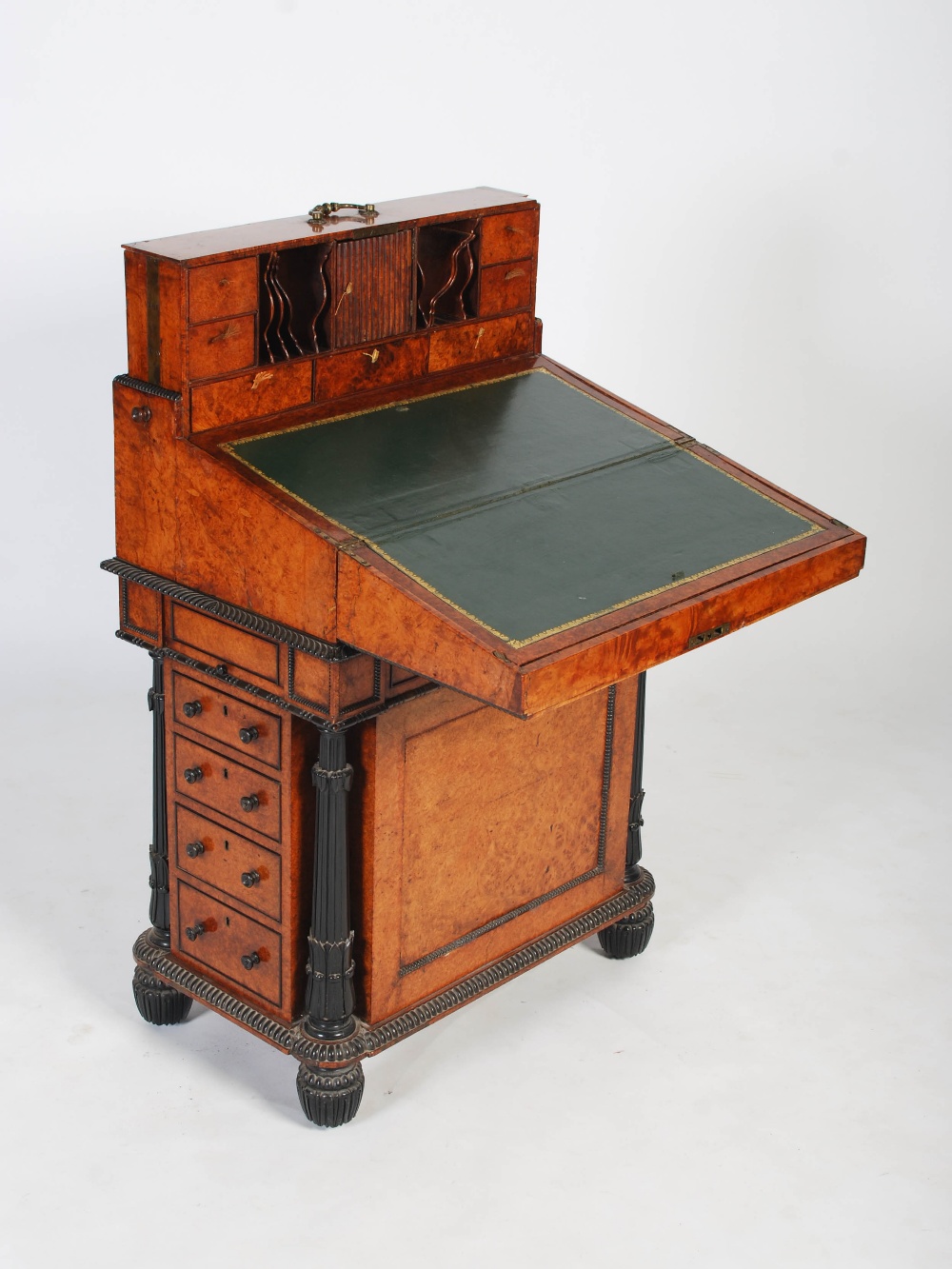
Figure 2. A Burr Walnut and Ebonised Davenport. Butchoff Antiques, London (enquire for further details).
Holland & Sons was responsible for what is possibly the finest davenport ever to appear on the market. It was recently sold to a private collection by Butchoff Antiques, and used the finest rare woods including Harewood, Kingwood, and West Indian Satinwood in order to create sumptuous marquetry panels; the whole extensively decorated with fine gilt bronze mounts. In the firm’s famous Anglo-French manner, the davenport is a true one-a-kind.
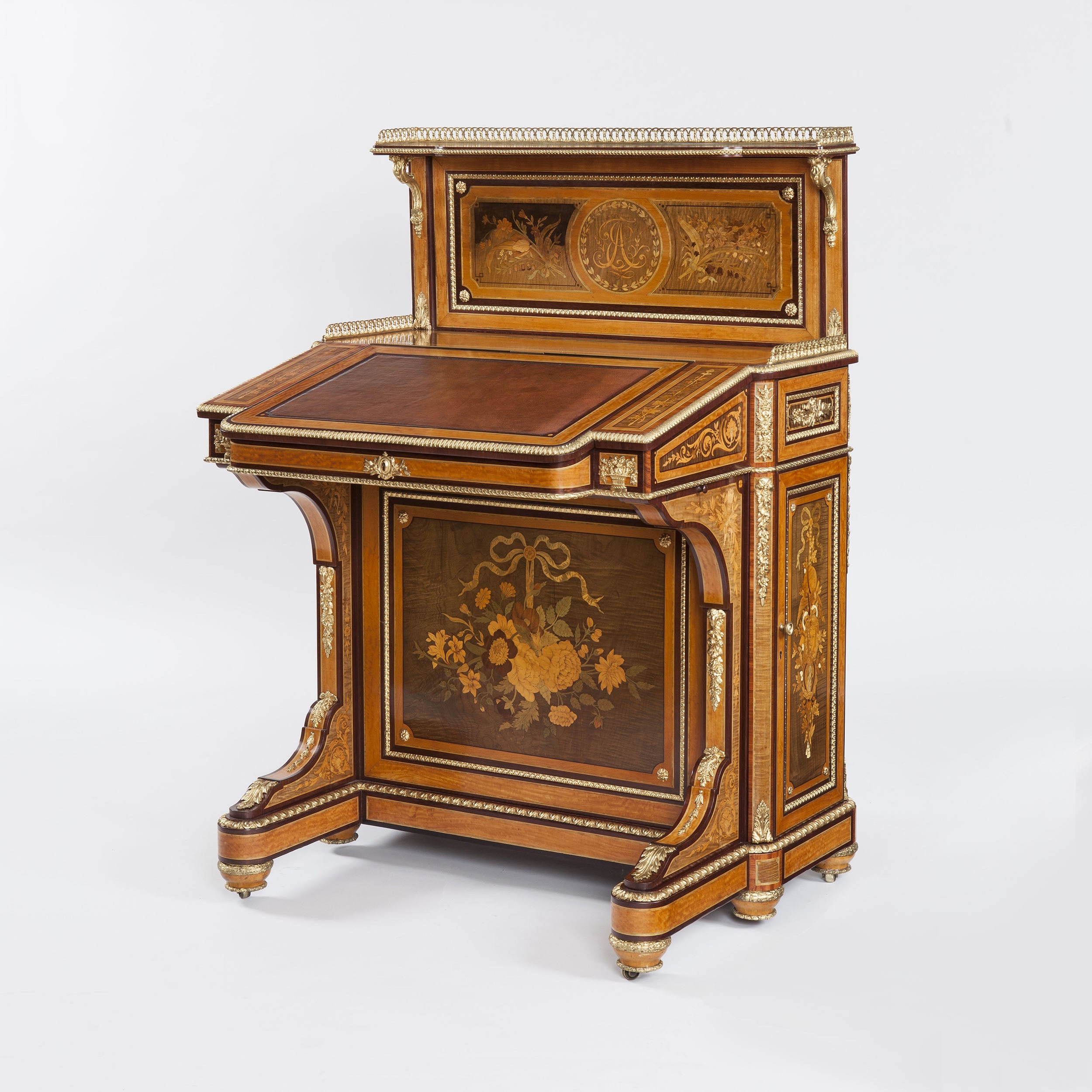
Figure 3. A Very Fine Davenport by Holland & Sons of London, circa 1865. Previously with Butchoff Antiques, London.
Another rare davenport, with Butchoff Antiques, is constructed from ebony, amboyna and ash, dressed with a medley of specimen woods. A very sumptuous example, and surely made for a very fashionable household, the davenport bears no makers’ mark. Stylistically, however, the piece can be dated to circa 1870.
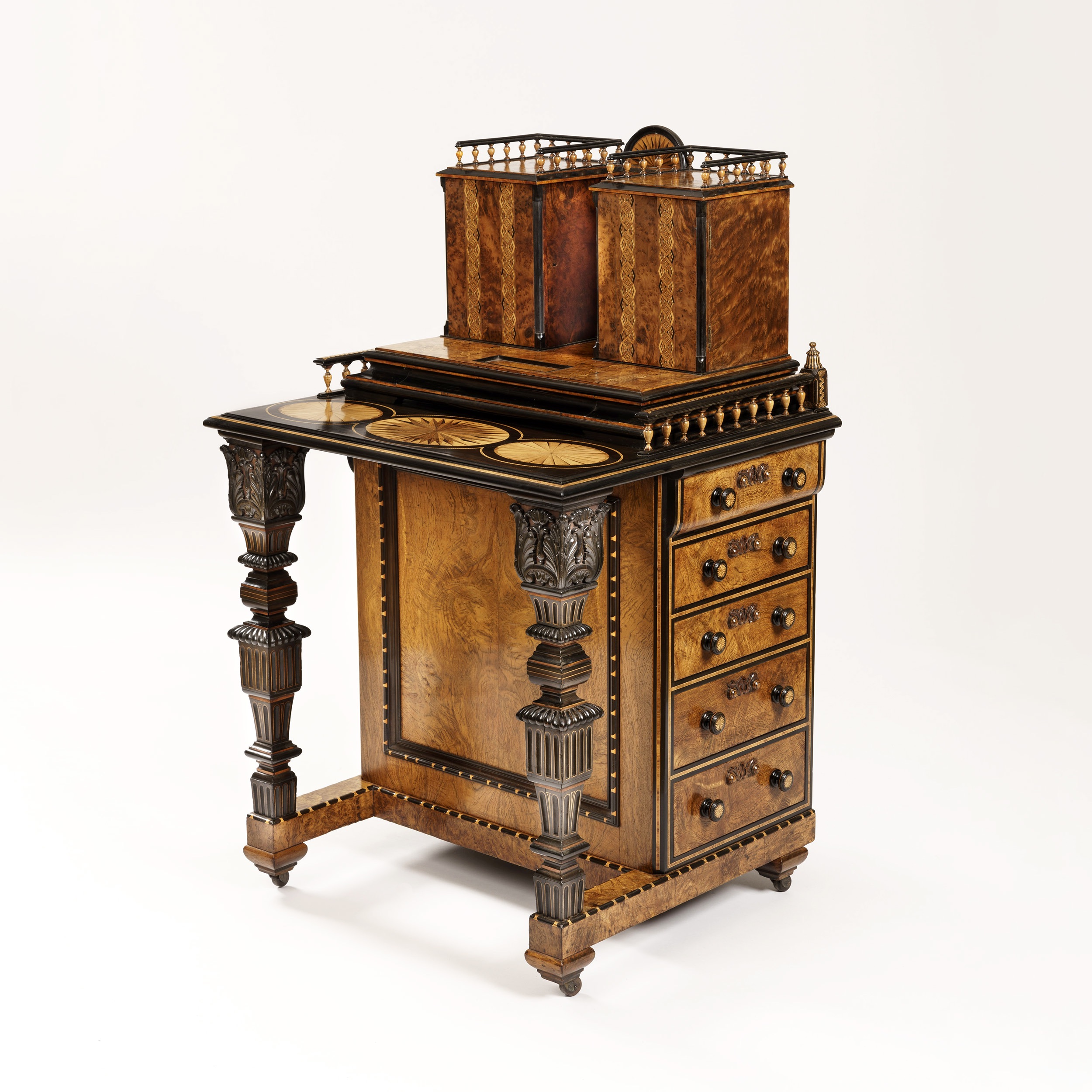
Figure 4. A Davenport of Rare Form, circa 1870. Butchoff Antiques, London.
The davenport is perfect for apartment living or smaller living spaces, sitting comfortably next to a sofa or in a nook as a workstation for your laptop or tablet. Send us an email if you would like to learn more about the davenport, or if you would like to see a selection of fine davenports for sale.
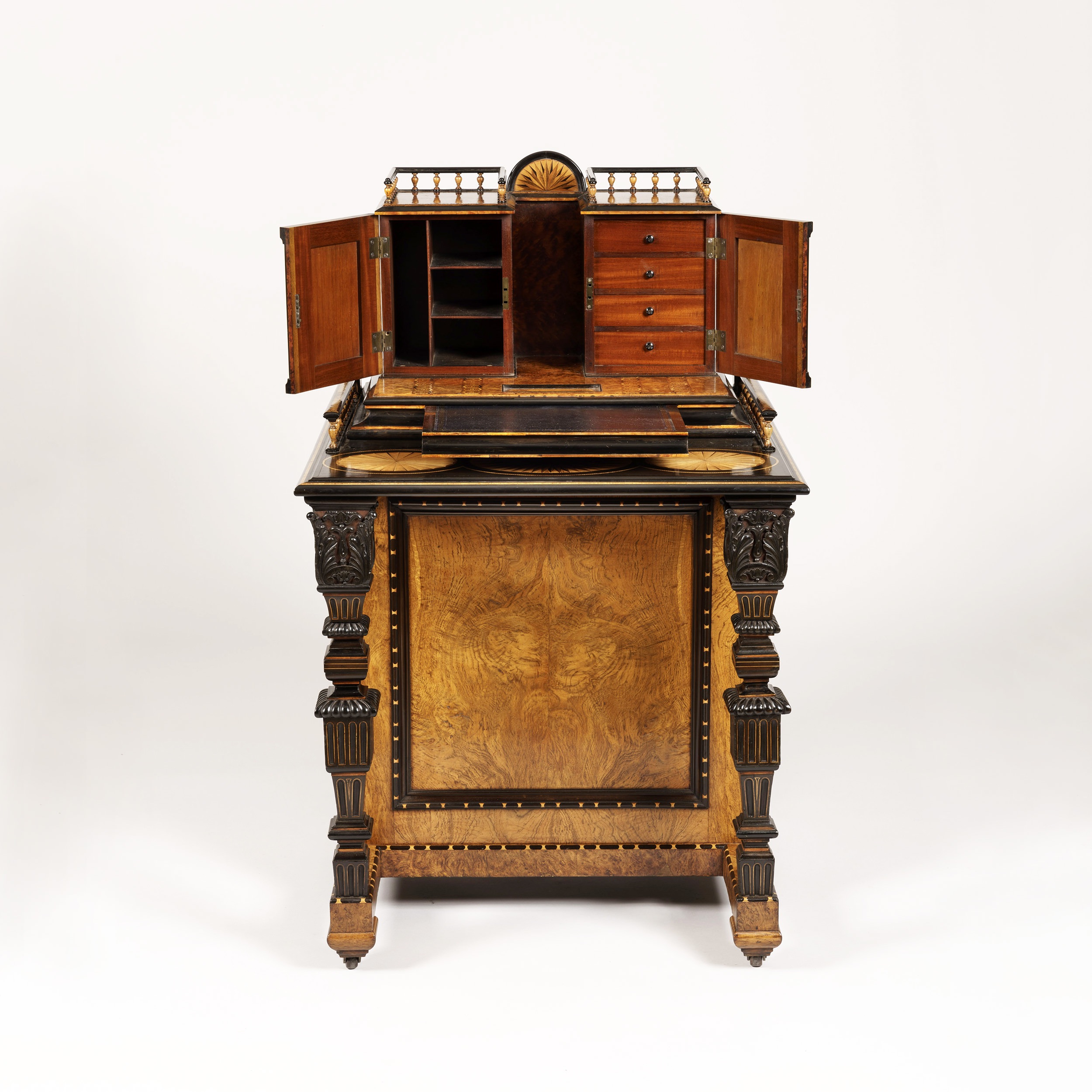
Figure 5. A Davenport of Rare Form, circa 1870. Butchoff Antiques, London.
Written by Rainier Schraepen
It is very likely when someone thinks about English furniture, one would envision pieces which are finely crafted, brown in colour, and representing the epoch of comfort and grand English country houses – all characteristics that shape the Georgian period. This extensive period witnessed some of the greatest and most influential designers and furniture makers in England’s history, such as William Kent, Robert Adam, Thomas Chippendale, George Hepplewhite, and Thomas Sheraton.
Georgian furniture is not titled due to its physical characteristics, but the alignment of the reigns of four consecutive English Kings, fittingly all named ‘George’, spanning from 1714 to 1830. The early period was marked with England ruling the waters with ships in ports all over the world, trading for exotic goods such as spices, textiles, and woods and discovering new ornamentations for architecture and furniture design. An English banker who successfully backed such mercantile conquests built grand country house, Osterly Park. Decoration and furnishings by Thomas Chippendale and Robert Adam – the Andy Warhol’s of their time - decorated Osterly Park.
The supreme characteristic of Georgian furniture is the predominance of exotic hardwoods with striking textural grains, such as mahogany from Cuba, San Domingo, South America or the West Indies; rosewood from Brazil, Honduras, and India; and satinwood from the West Indies. A striking example of the romaticization of exotic woods is this unusual Circular Table (ref. 6767) inlaid with eight different specimen woods on mahogany ground creating an eye-catching vortex design. Woods so rare that our timbers expert, Dr Adam Bowett, could not identify them all.

Ref. 6767, A Remarkable Late Georgian Circular Table, circa 1825. Butchoff Antiques, London.
The ornamentation of Georgian furniture is characteristically tasteful, inlaid with contrasting woods or gilded in gold leaf, and ornamentation of carvings with architectural motifs inspired by Classical Greece and China. A secretaire bookcase (ref. 7139), attributed to John McLean of London, incorporates the finest qualities of Georgian furniture. The bookcase rises from compressed ball brass feet and is constructed from a well-figured goncalo alves timer which is tastefully accented with gilt brass accents inspired by Classical Antiquity.

Ref. 7139, A Regency Period Secretaire Bookcase, attributed to John McLean of London, circa 1810. Butchoff Antiques, London.
The Georgian Period was the golden age of household entertainment. Grand homes such as Chiswick House in London were built with the intention to entertain and showcase fine art and contemporary interior decoration. Hosts would have stylish and functional furnishings and objects to entertain guests for hours or even days. Serving tables were and still are very utilitarian pieces for most rooms, or principally entertaining rooms, providing surfaces to hold silver serving platters dressed with food, porcelain ceramics, candelabra, fresh flowers or decorative objects.
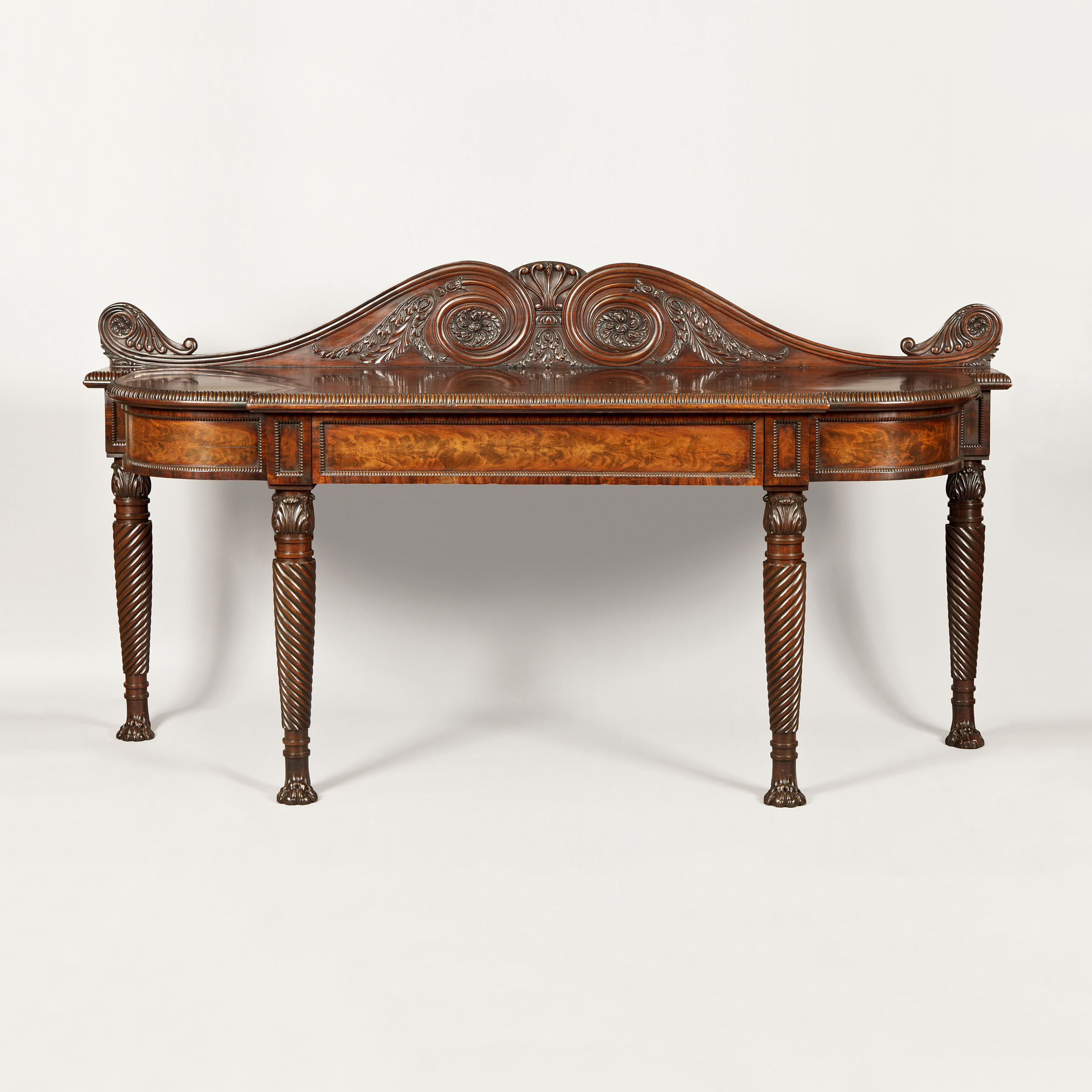
Ref. 7819, A Very Fine Georgian Serving Table of the Regency Period, circa 1820. Butchoff Antiques, London.
Often a decorative wine cooler would sit beneath, filled with ice and beverages, and on either side of the table would sit coordinating cupboards housing plates and silver ware. Such an arrangement would be very similar to this mahogany Georgian Serving Table (ref. 7819) with Chinese inpsired ‘hairy paw’ feet and a decorative serpentine back incorporating well executed Graeco-Roman carvings, with this open top mahogany wine cooler (ref. 5919), and this pair of side cupboards (ref. 8382) adorned with similar carvings.
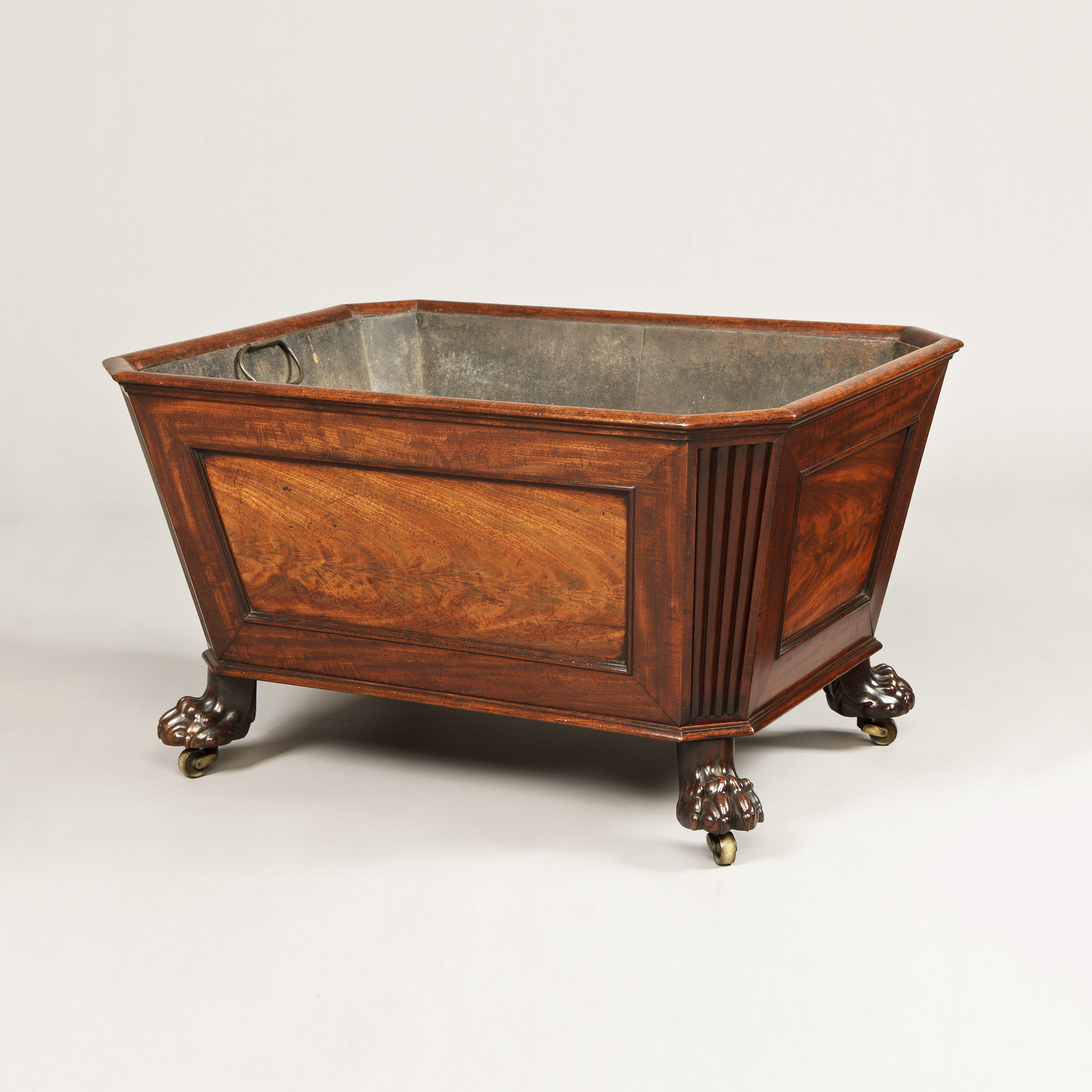
Ref. 5919, A Fine Quality Mahogany Open Top George III Wine Cooler, circa 1815. Previsouly with Butchoff Antiques, London.
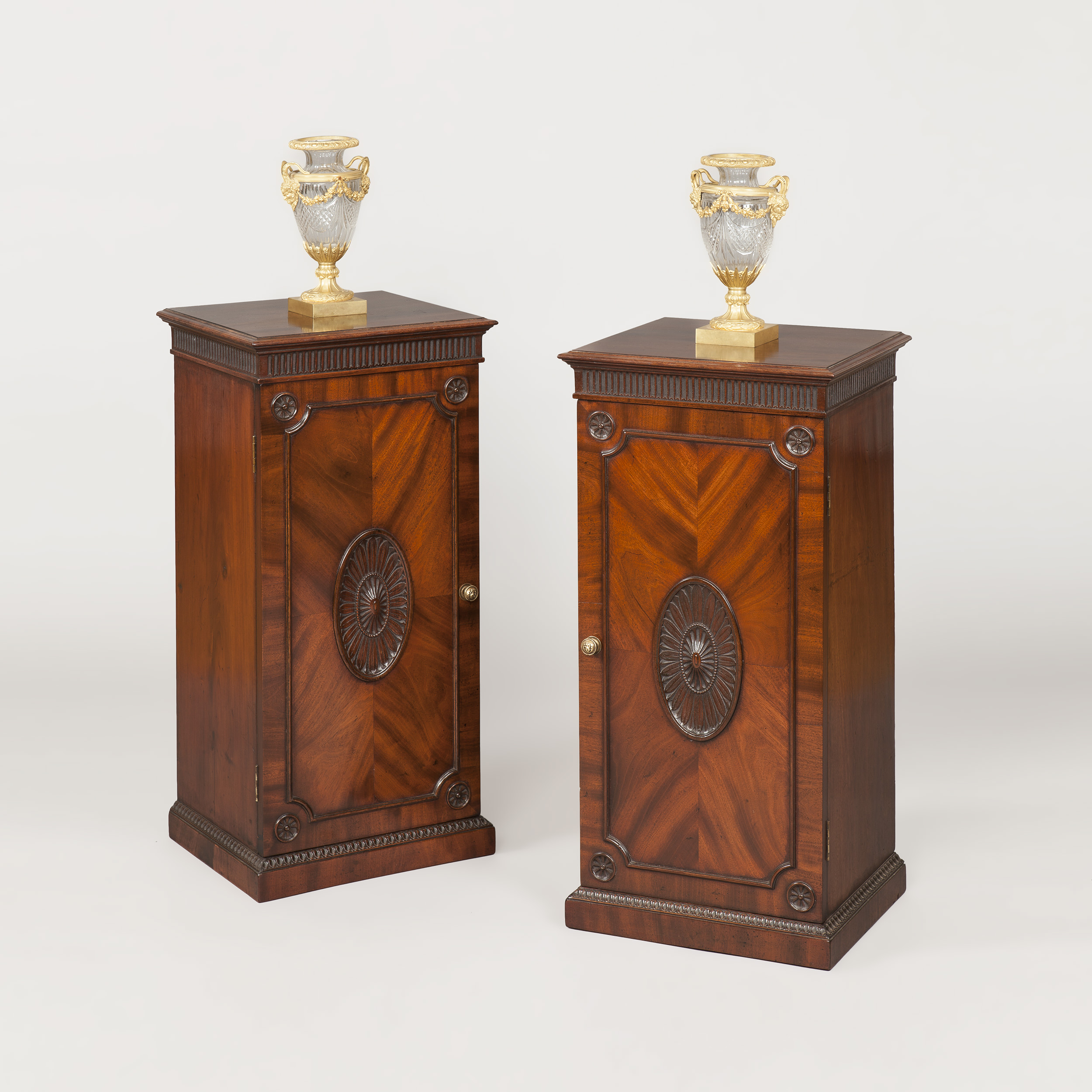
Ref. 8382, A Pair of Georgian Side Cupboards, circa 1820. Previously with Butchoff Antiques, London.
Naturally as the Georgian period came to a close, the style had developed aesthetically over time. Progressing from subtle and fine carved details to more dramatic carvings that would evolve into the Regency Period. An example of the progression is this Pair of Late Georgian Period Armorial Armchairs (ref. 8557). As their grand size, curving and tapering back legs, and robust carvings represent awareness for new designs; yet also keep in the principles of the Georgian period.

Ref. 8557, A Pair of Late Georgian Armorial Armchairs of Important Size, circa 1825. Previously with Butchoff Antiques, London.
The Georgian period is a hallmark for English design and decoration. The taste for Georgian furniture has never necessarily gone too far out of style. By the mid-twentieth century Georgian furniture was revived in both England and America through the interior decorating style renowned as the ‘English Country House Style’, which still continues today to influence contemporary designers and decorating trends.
By Rainier Schraepen
Chinoiserie, from the French ‘chinois’ meaning Chinese, is a term used in the fine and decorative arts to describe Chinese and East Asian-inspired motifs used in Western art, furniture, and architecture. Gaining traction during the seventeenth century via the trade of the Dutch and British East India Companies, the vogue for chinoiserie attained its height in the eighteenth century.
Chinoiserie motifs typically include landscapes scattered with delicate little trees, cloud-capped mountains, pagodas with tiny bells, railings, mythical birds and dynamic figures. Many of these designs came from the Far East via imported silk and lacquer boxes. Over time, they were adopted by European artists and craftsmen, thereby attaining a new character altogether.
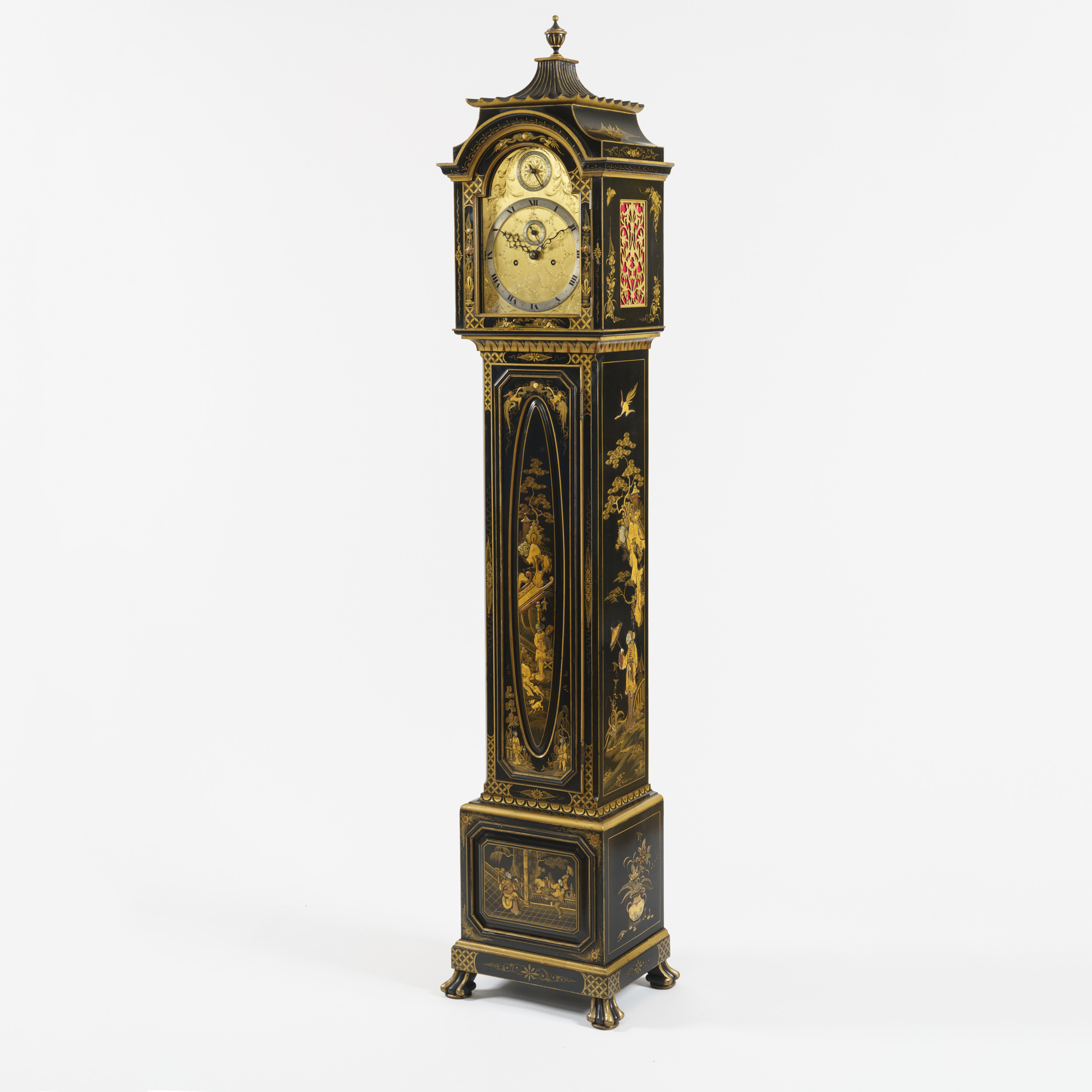
Figure 1. A Good Longcase Clock in the Chinoiserie Manner, circa 1910. Previously with Butchoff Antiques, London.
Chinoiserie decoration never completely went out of fashion, and the 19th and 20th centuries are responsible for some of the most striking chinoiserie renditions, including this fine longcase clock which represents beautiful court scenes populated by musicians, courtesans within a lush landscape with pagoda pavilions, swirling trees, and mythical birds (fig. 1).
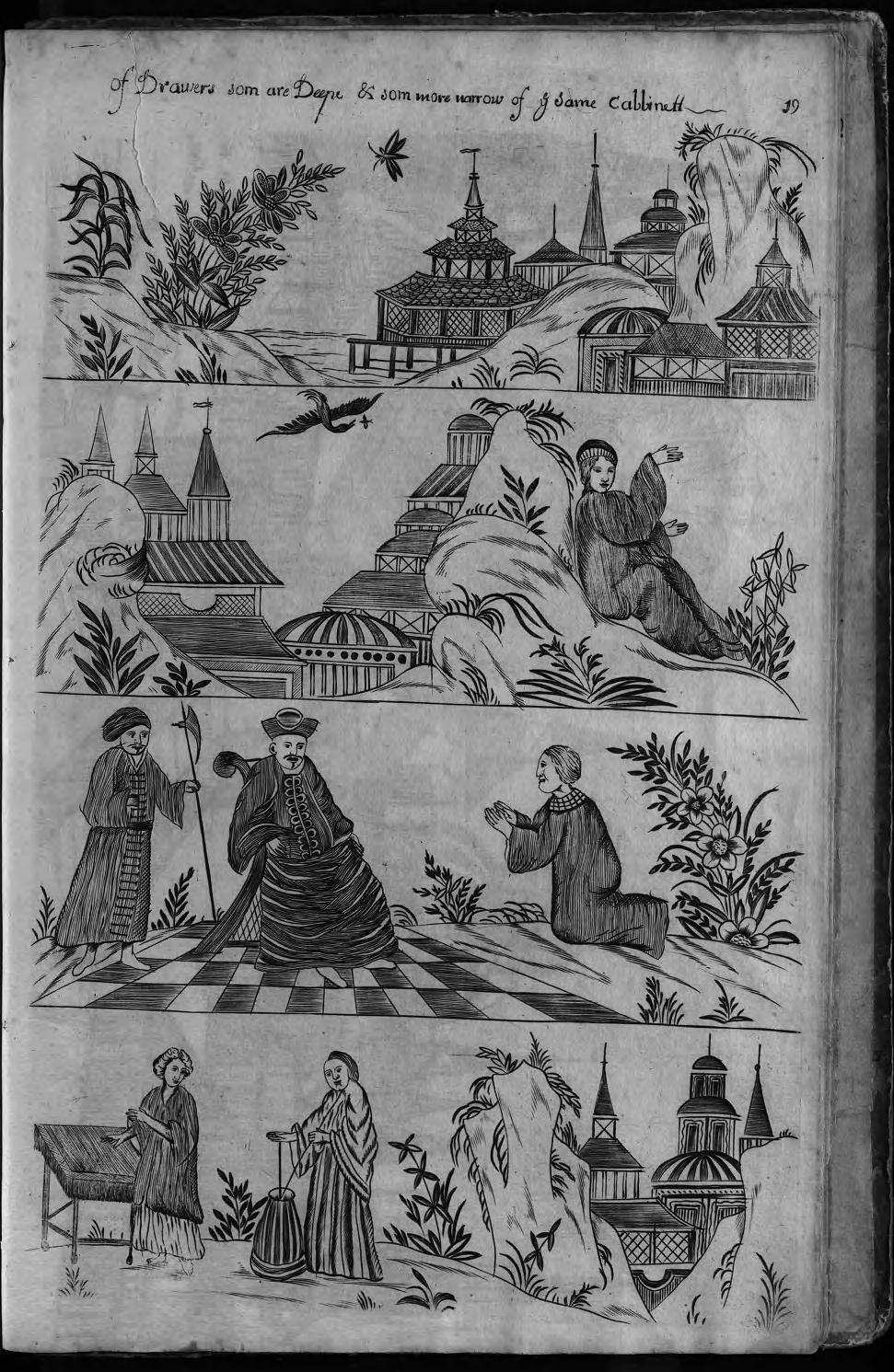
Figure 2. Designs for various drawer fronts, from John Stalker and George Parker's A Treatise of Japaning and Varnishing, Being a Complete Discovery of Those Arts [...] Oxford: Richard Wood, 1688.
Many European craftsman and artists produced work in the chinoiserie style adhering to published techniques and designs such as those found in an early book by John Stalker and George Parker entitled Treatise of Japanning and Varnishing of 1688 (fig. 2). Makers such as Thomas Allgood of Pontypool would have turned to design books like Stalker & Palker's in order to produce items such as this fine decorated tray (fig. 3). Likewise, the Italian cabinetmaker of this vitrine, made circa 1880, decorated each of the surfaces in the polychrome chinoiserie manner (fig. 4).
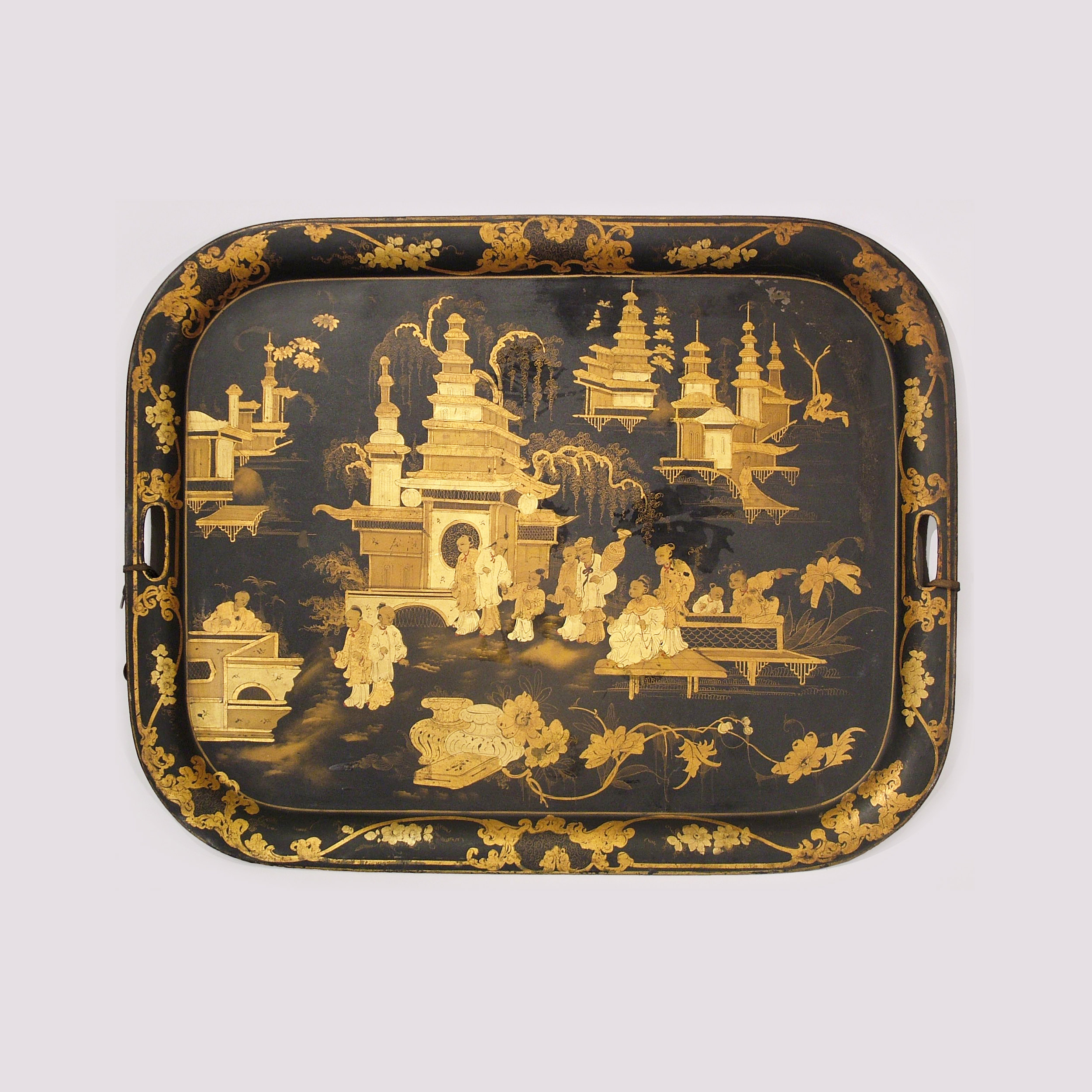
Figure 3. A Pontypool Tray of the Regency Period, circa 1820. Butchoff Antiques, London.
Throughout the centuries, however, the demand for Far Eastern silks, porcelain, and lacquerware competed with the domestic output. Items such as screens incorporating lacquer panels were highly coveted. It is not difficult to distinguish between Western and oriental lacquers as the former were a different composition of varnish, collar, and shellac. Because of this, some cabinetmakers, such as Henry Dasson, would incorporate oriental panels into his pieces of furniture. This was clearly the case in the pair of cabinets illustrated below (fig. 5), which incorporate lacquer panels which were most likely cut down from a larger screen.
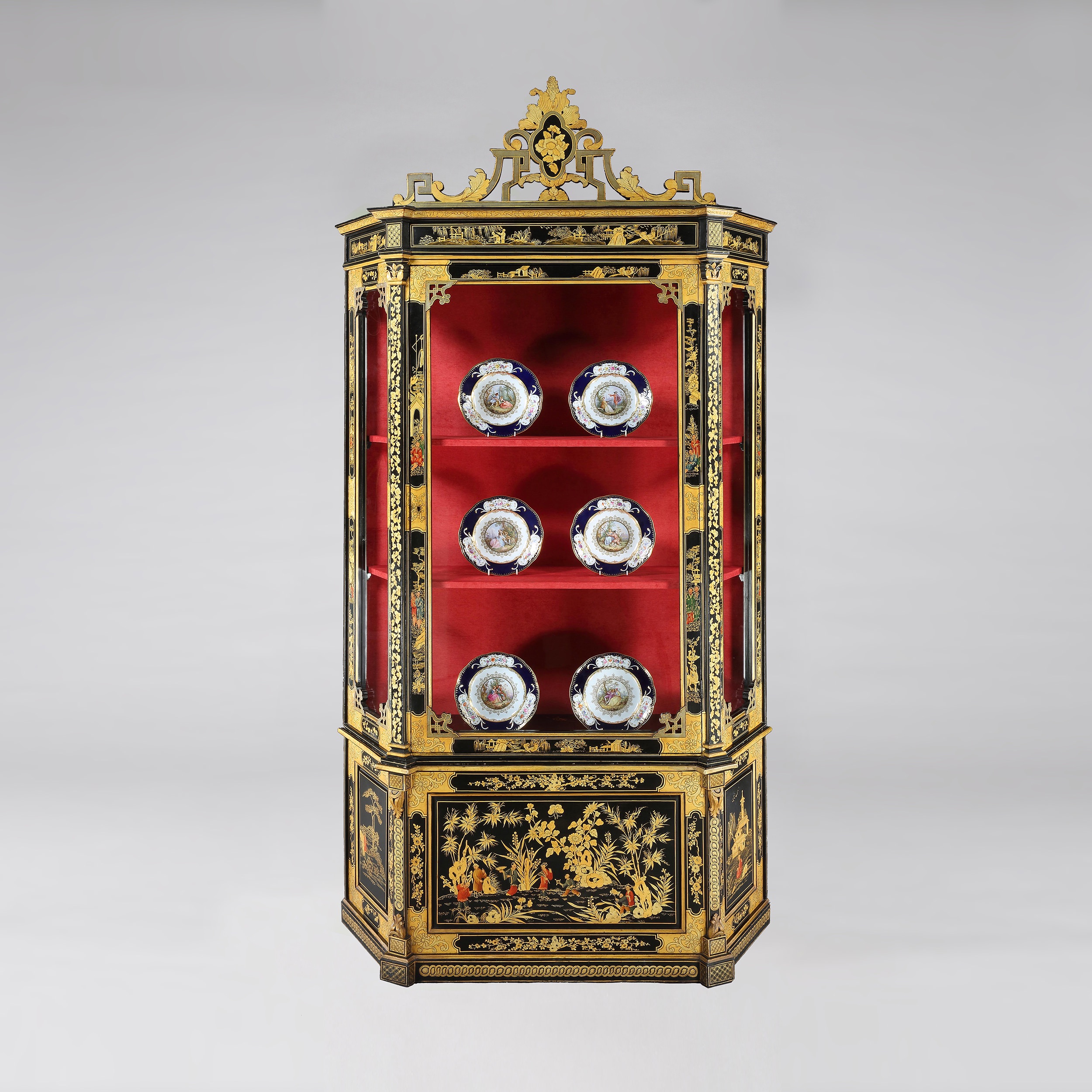
Figure 4. A Large Chinoiserie Vitrine, circa 1880. Butchoff Antiques, London.
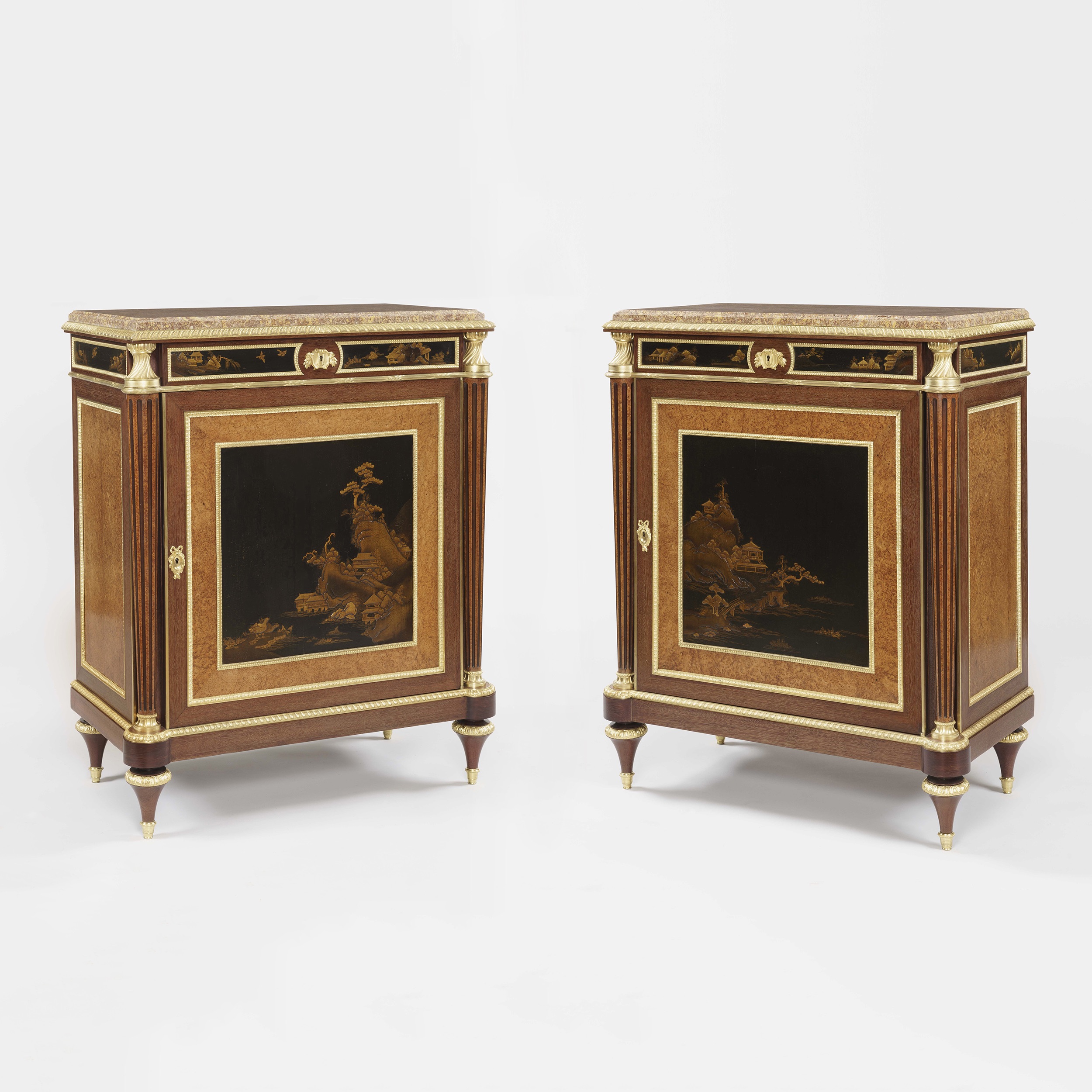
Figure 5. A Fine Pair of Cabinets by Henry Dasson, circa 1880. Butchoff Antiques, London.
By Rainier Schraepen
Gilded Interiors: The Art of Gilt Bronze
Gilt bronze, also called ormolu, is a technique known since Antiquity and reached its full potential in the 18th and 19th centuries. The process historically involves adhering gold to bronze, and was used extensively to create clocks, wall lights, candelabra, and mounts for furniture and decorative objects.
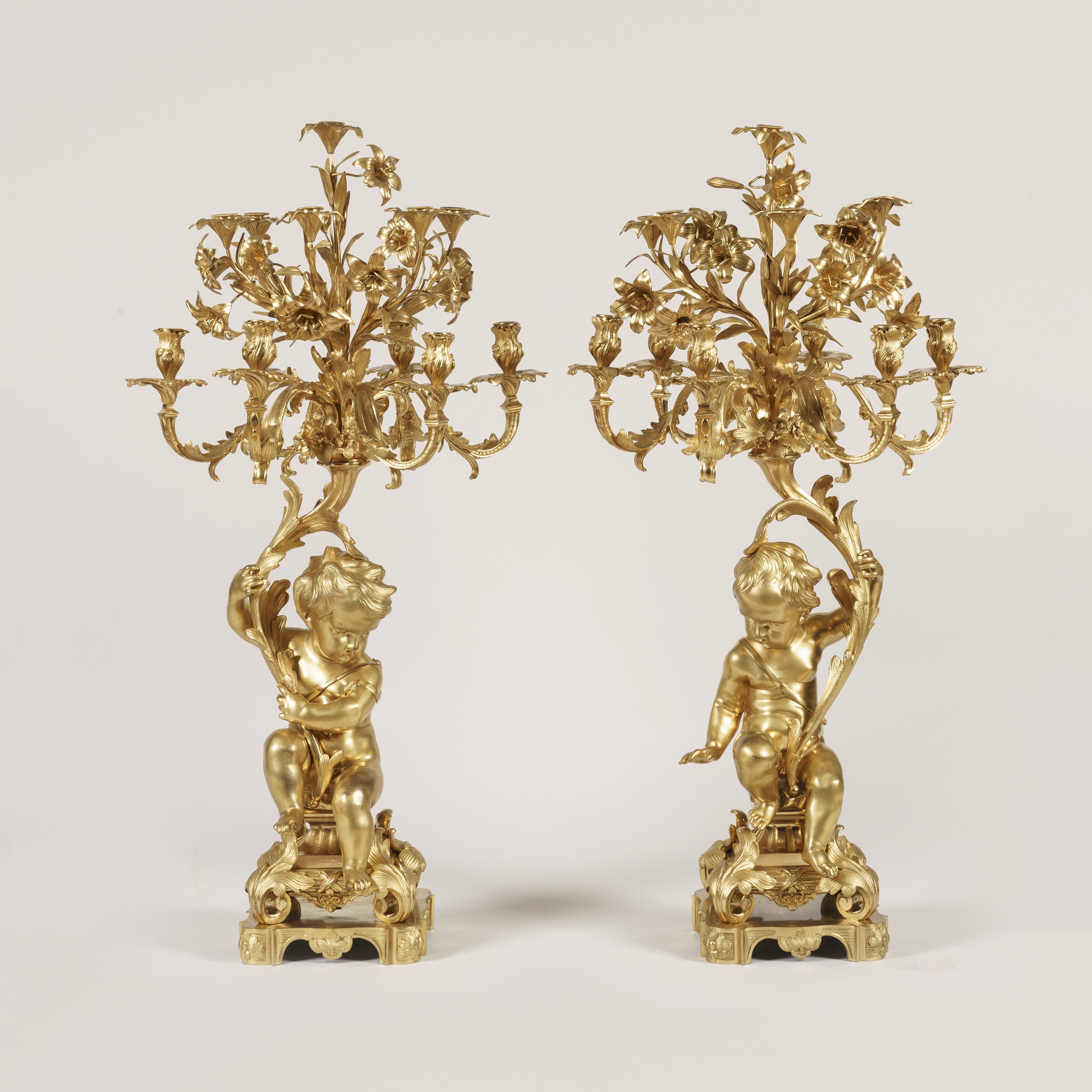
Ref. 9078. An Important Pair of Candelabra in the Louis XV Manner, by Raingo Frères, circa 1870. Previously with Butchoff Antiques, London.
The process for making gilt bronze was quite complicated. So much so that the French state set up two separate guilds to oversee its production: the fondeurs-ciseleurs (casters and chasers) and the ciseleurs-doreurs (chasers and gilders). Starting from a two-dimensional design, a carver or sculptor would make a three-dimensional model in wood, clay, or wax.
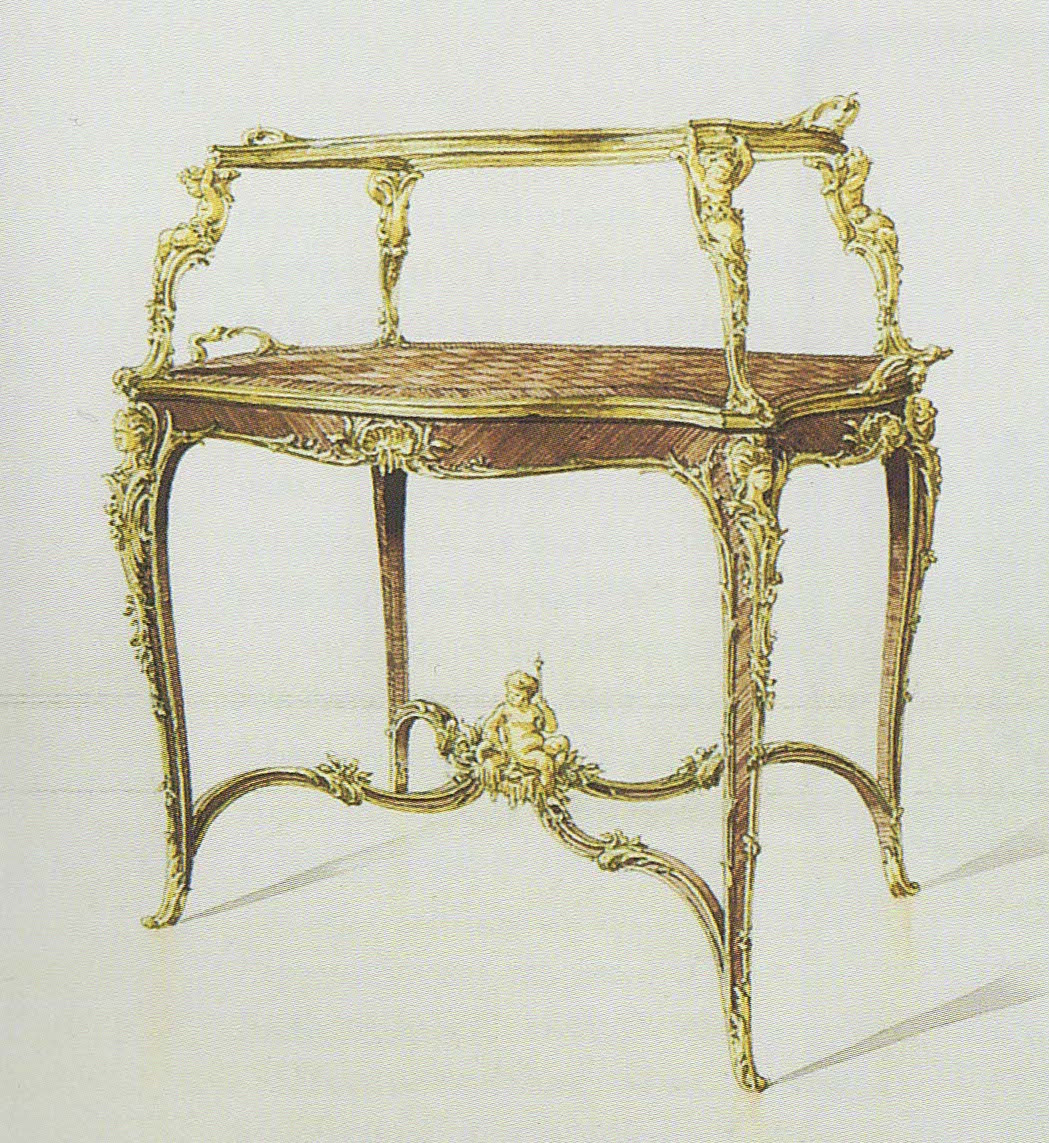
Watercolour project of Linke's tea table no. 610. Taken from Christopher Payne's François Linke (1855 - 1946), The Belle Époque of French Furniture, plate 131.
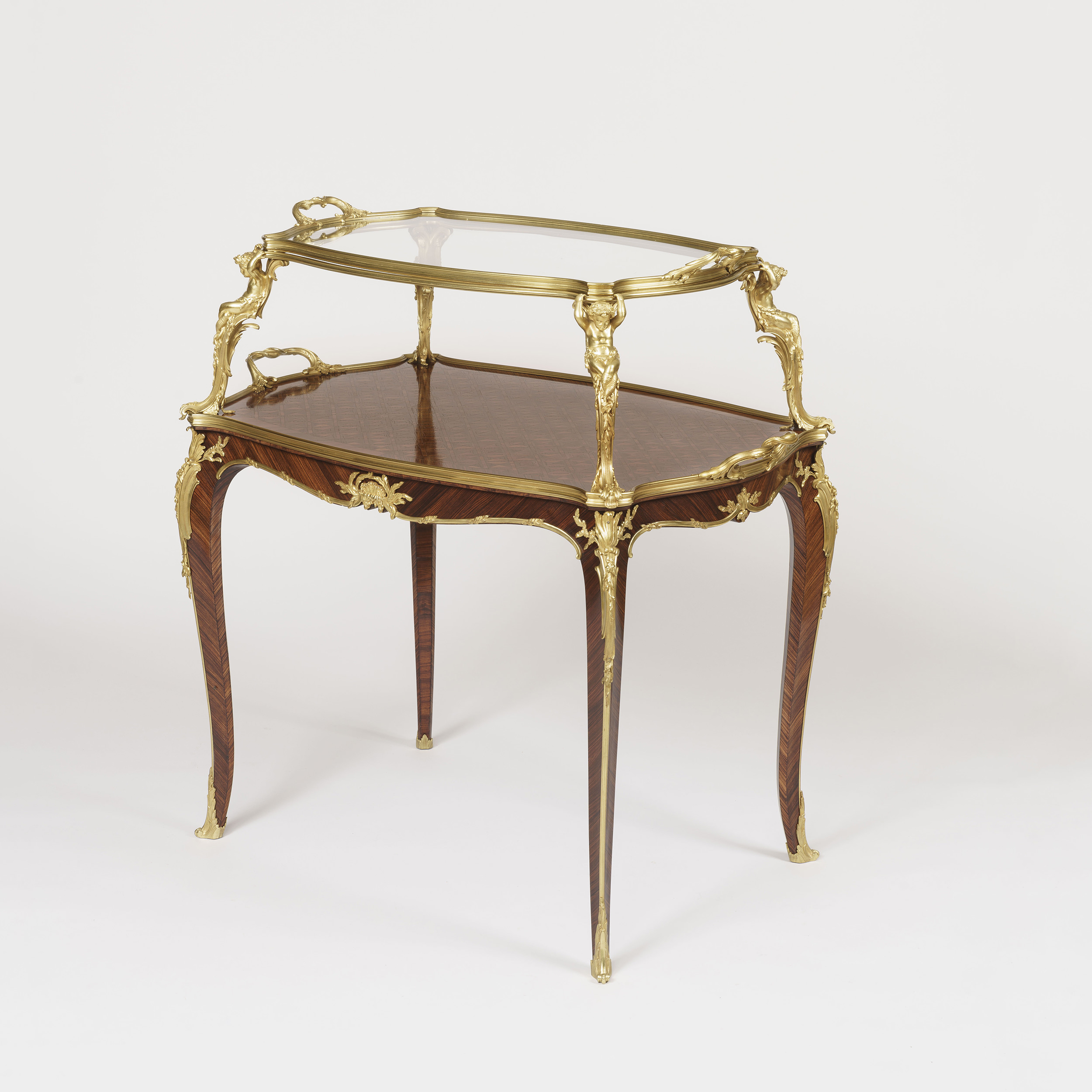
Ref. 8717. A Louis XV Style Ormolu-mounted Table à Thé, by François Linke, circa 1900. Previously with Butchoff Antiques, London.
A wax mold taken from the model was used for casting by pressing it in a box with sand and pouring molten bronze, an alloy of copper and tin, in the resulting depression. For more complicated designs, the cire perdue, or lost-wax, process was used. In this technique, the wax model was fashioned around a core made of plaster or clay and covered with the same to form a mold. The mold was then dried and fired to burn out the wax. The hollow left by the wax was filled with molten bronze.
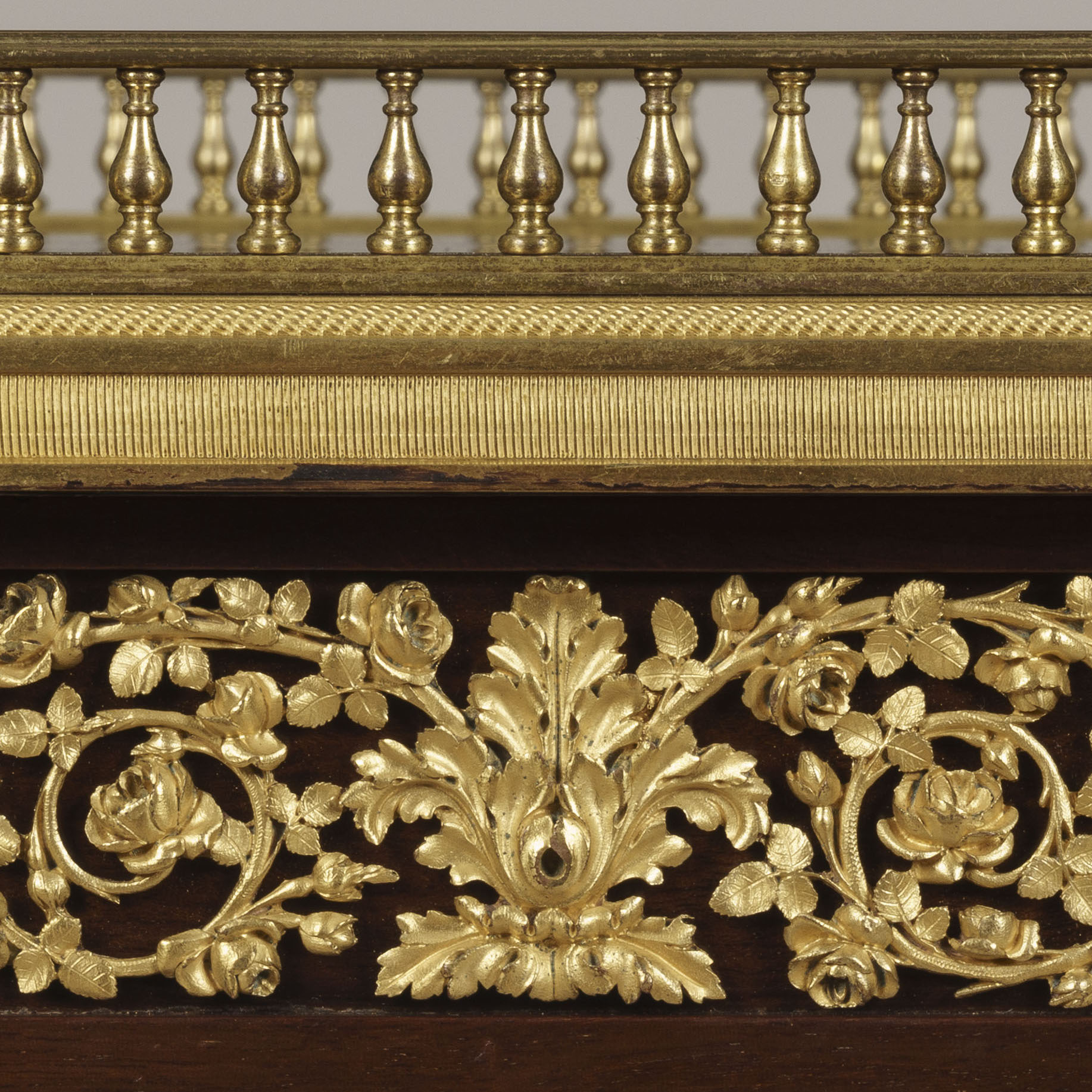
Ref. 8930. A Matched Pair of Side Tables in the Louis XVI Manner (detail), by Paul Sormani, circa 1870. Butchoff Antiques, London. The delicate fiolate gilt bronze mounts would have required extensive manual refinement from a ciseleur, sharpening the petals of the roses and incising the delicating veining on the leaves. Each mount required several hours of detailing before going to the doreur.
The ciseleur was in charge of removing the hardened and cooled bronze. He sharpened the edges and added a myriad of fine details which could not be achieved through the casting process alone. In order to create texture, a ciseleur would use tools called punches with variously shaped points. Some of the best ciseleurs working in France had over 3,000 punches at their disposal in their workshop! The quality of gilt bronze decorative objects and mounted furniture is crucially dependant on the ‘sharpness’ of the chasing, and it is what separates the run-of-the-mill from the truly divine demonstrated by the likes of Pierre-Philippe Thomire, Pierre Gouthiére, as well as Charles-Guillaume Winckelsen, Henry Dasson, and François Linke in the nineteenth century.
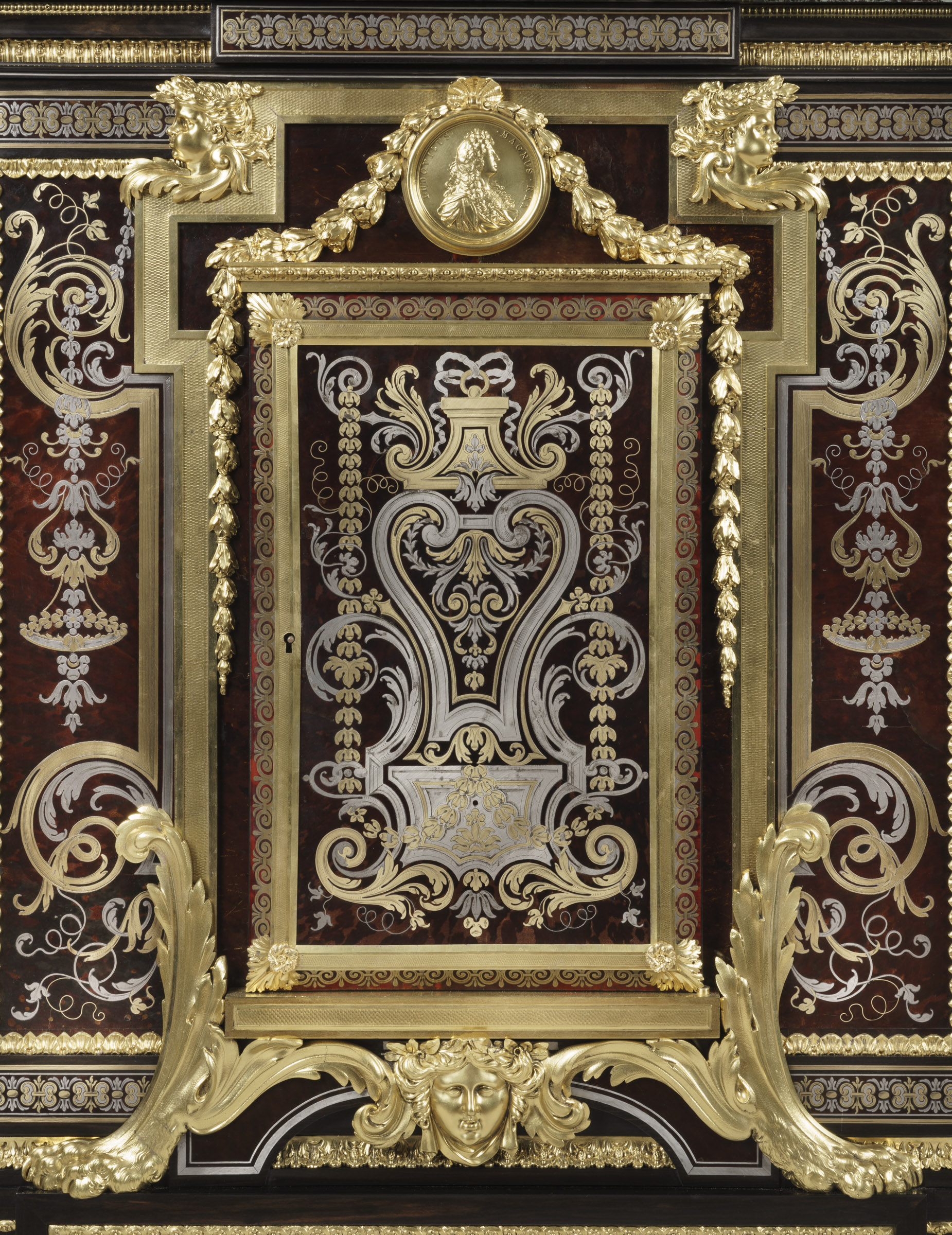
Ref. 9205. A Very Fine Meuble d'Appui, attributed to Winckelsen, circa 1865. Butchoff Antiques, London. This cabinet represents the epitome of Boulle marquetry, but also gilt bronze work, of the nineteenth century. The lion paw mounts are inspired by earlier Boulle models, and their execution is of the highest order. Undoubtedly the work of Winckelsen's workshop.
The final step was the mercury gilding, and was the responsibility of the ciseleur-doreur. Ground gold (hence the name or-moulu, moulu being the French for ‘ground’) was mixed with mercury, creating an amalgam, which was applied to the surface of the bronze using a brass-bristled brush called a bat. Placing the bronze over an open coal fire allowed the mercury to evaporate, leaving a layer of gold on the surface. Lastly, the smooth areas could be burnished, using a dog tooth, a heliotrope stone, or an agate mounted on a handle.
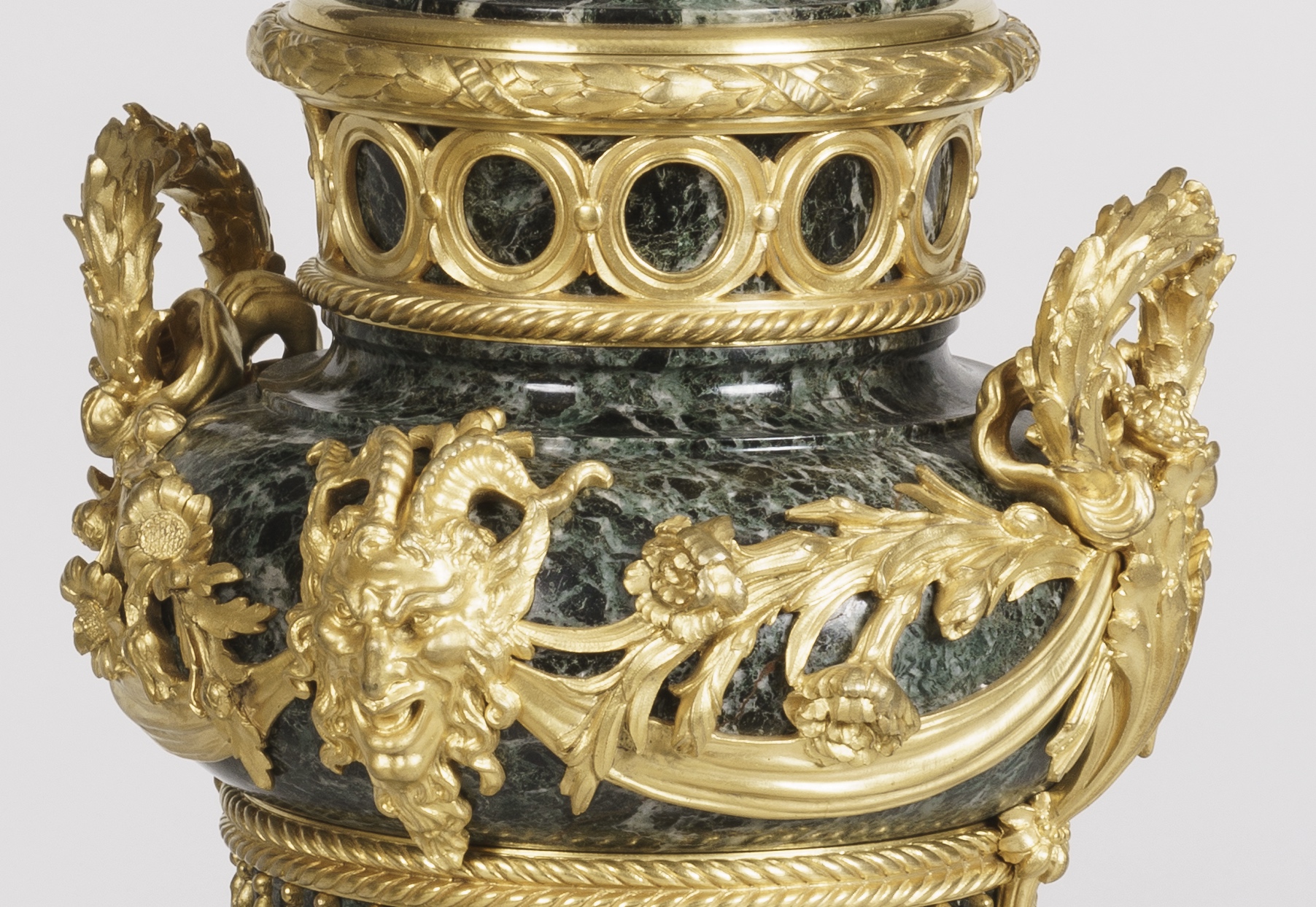
Ref. 9214. An Elegant Pair of Gilt Bronze Mounted Urns (detail), by Ferdinand Barbedienne, circa 1870. Butchoff Antiques, London. The mounts on these urns are a wonderful example of textural contrast between burnished, and matte, gilt bronze.
The study of gilt bronze is incredibly difficult because pieces are rarely signed. However, questions of dating and attribution can usually be answered by the presence of existing models or drawings as well as the quality of a specific piece. Cabinetmakers such as Henry Dasson, who himself was trained as a sculptor and took great pride in his sculptural gilt bronze mounts, went so far as to sign his work, leaving no doubts as to its maker. François Linke, who worked closely with the sculptor Léon Messagé, created some of the most dazzling ormolu-mounted furniture, and rightfully signed his work as well.
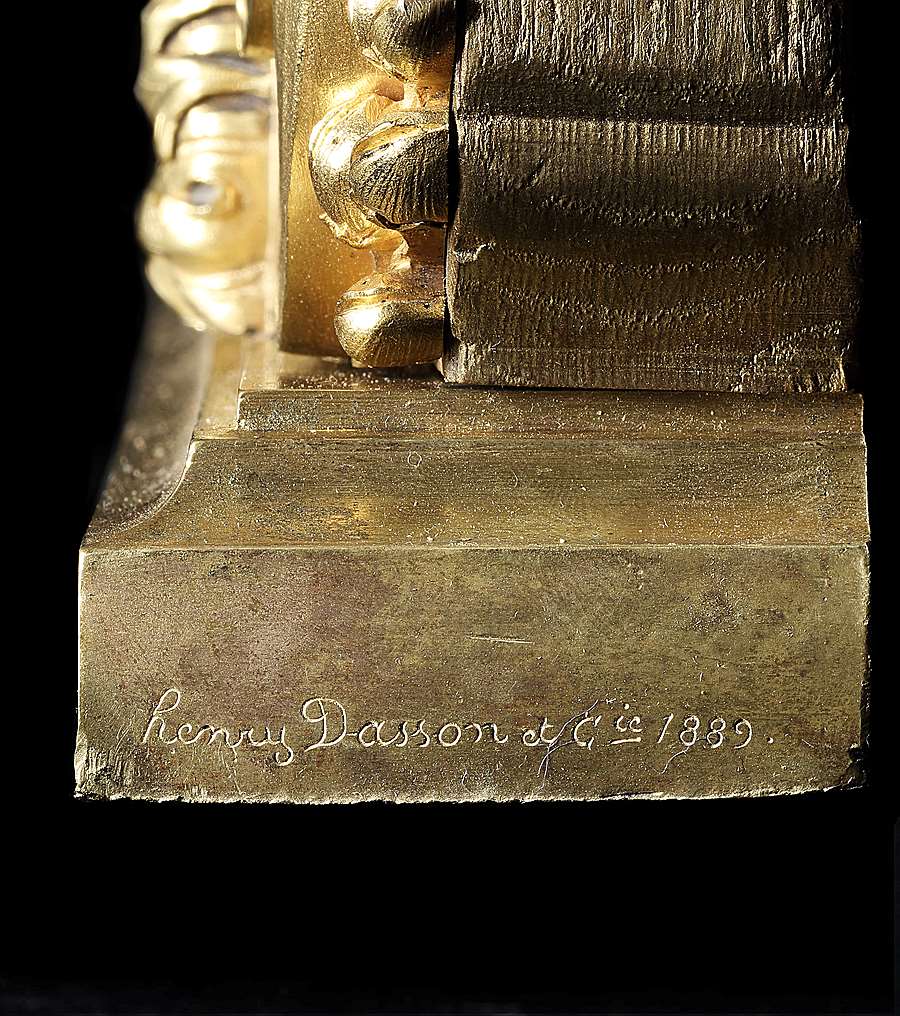
Ref. 8788. A Monumental Ormolu Mirror Exhibited at the Exposition Universelle, Paris 1889, by Henry Dasson, dated 1889. Butchoff Antiques, London.
Nevertheless, the vast majority of gilt bronze objects and furniture remain unsigned, and the quality is left to speak for itself.
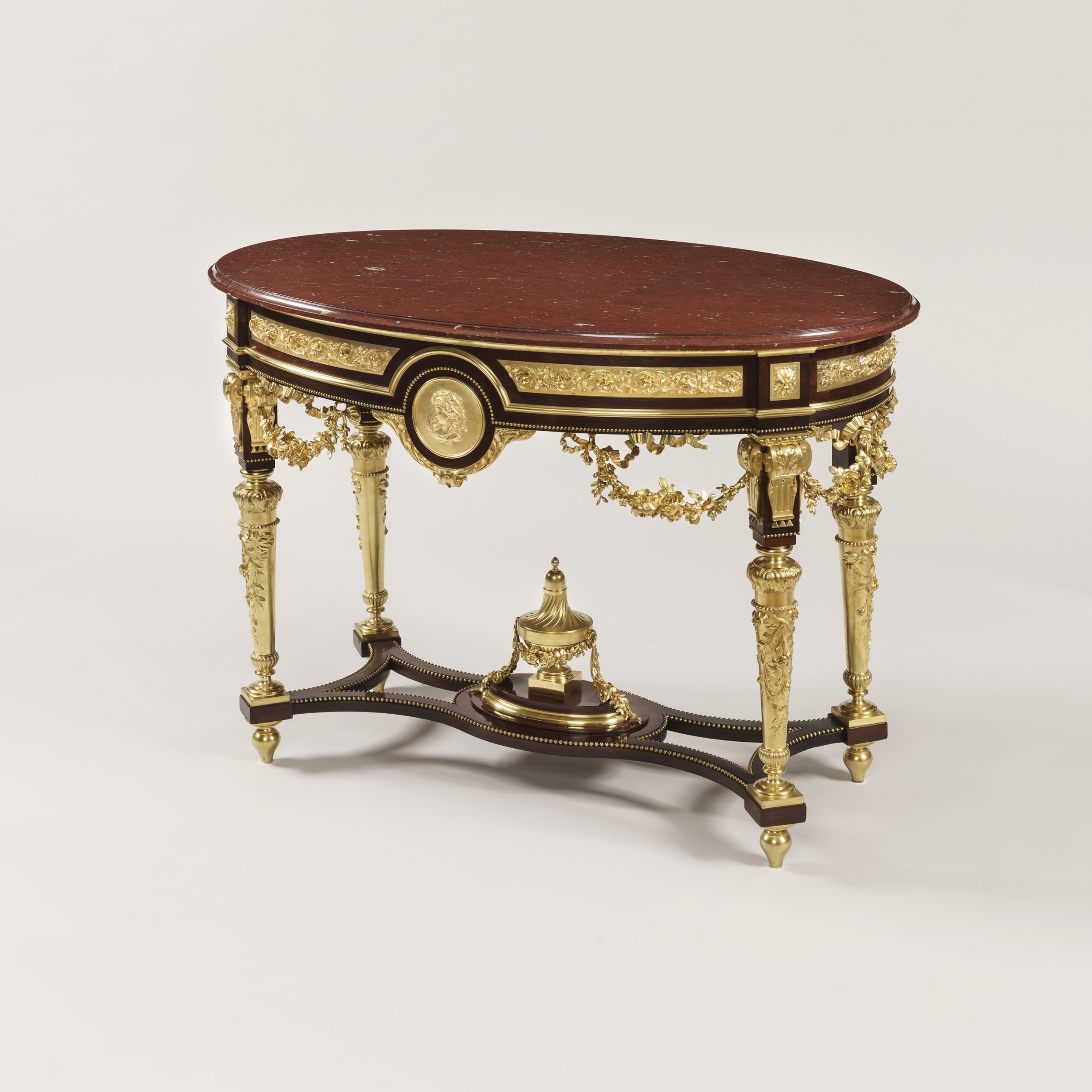
Ref. 9121. A Superb Centre Table In the Louis XVI Manner, circa 1870. Butchoff Antiques, London. Although the maker of this table is not known at the present, it is certainly by one of the pre-eminent cabinetmakers of nineteenth-century Paris. The mass, quality, and style of the gilt bronze mounts were positively innovative at the time, and it is likely this would have been a showcase piece meant to be displayed as a work of art.
By Rainier Schraepen
The company of Wright & Mansfield was formed in 1860 by two employees of the noted interior decorators Jackson and Graham of 37-38 Oxford Street, London. Particular in their choice of clientele, a number of loyal and discerning patrons followed them to their newly established business in Great Portland Street, before their move to larger Bond Street premises.
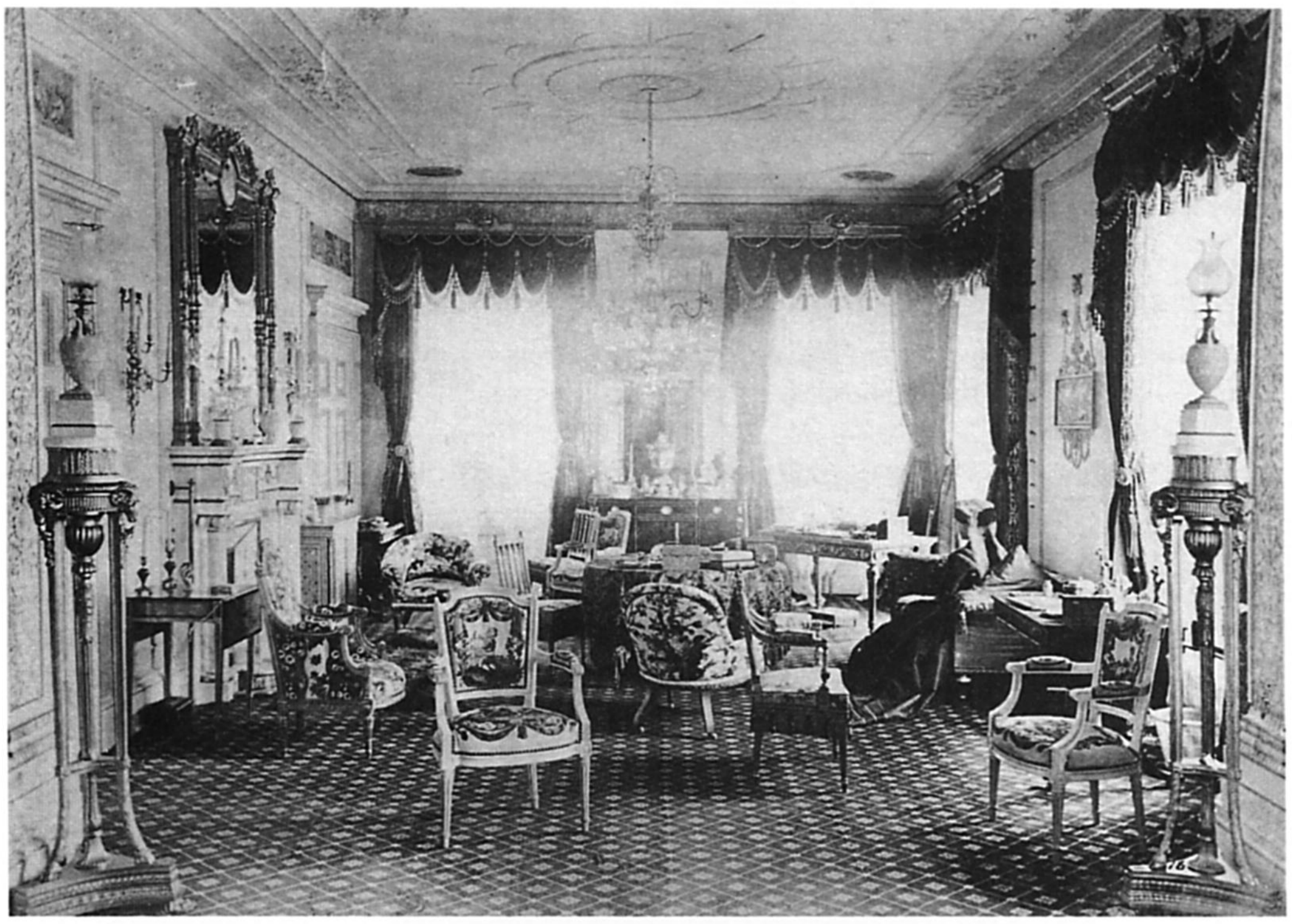
The Drawing Room at Guisachan, Inverness-shire, one of Wright & Mansfield's earliest commissions.
Alfred Thomas Wright and George Needham Mansfield rose to great prominence after their exhibits at the 1862 International Exhibition held in London, on the site of what is now the Natural History Museum, South Kensington. The Art Journal Catalogue of the International Exhibition, and J.B. Waring’s ‘ Masterpieces of Industrial Art and Sculpture’ of 1862 record their work, and two bookcases, as well as a fireplace constructed of ‘Ginn’ or ‘Gean’ wood, with inset Wedgwood plaques were illustrated, along with a piano (ref. 6972), painted in the manner of George Brookshaw, and commented upon and favourably compared to the Eighteenth Century work of the Adam Brothers.
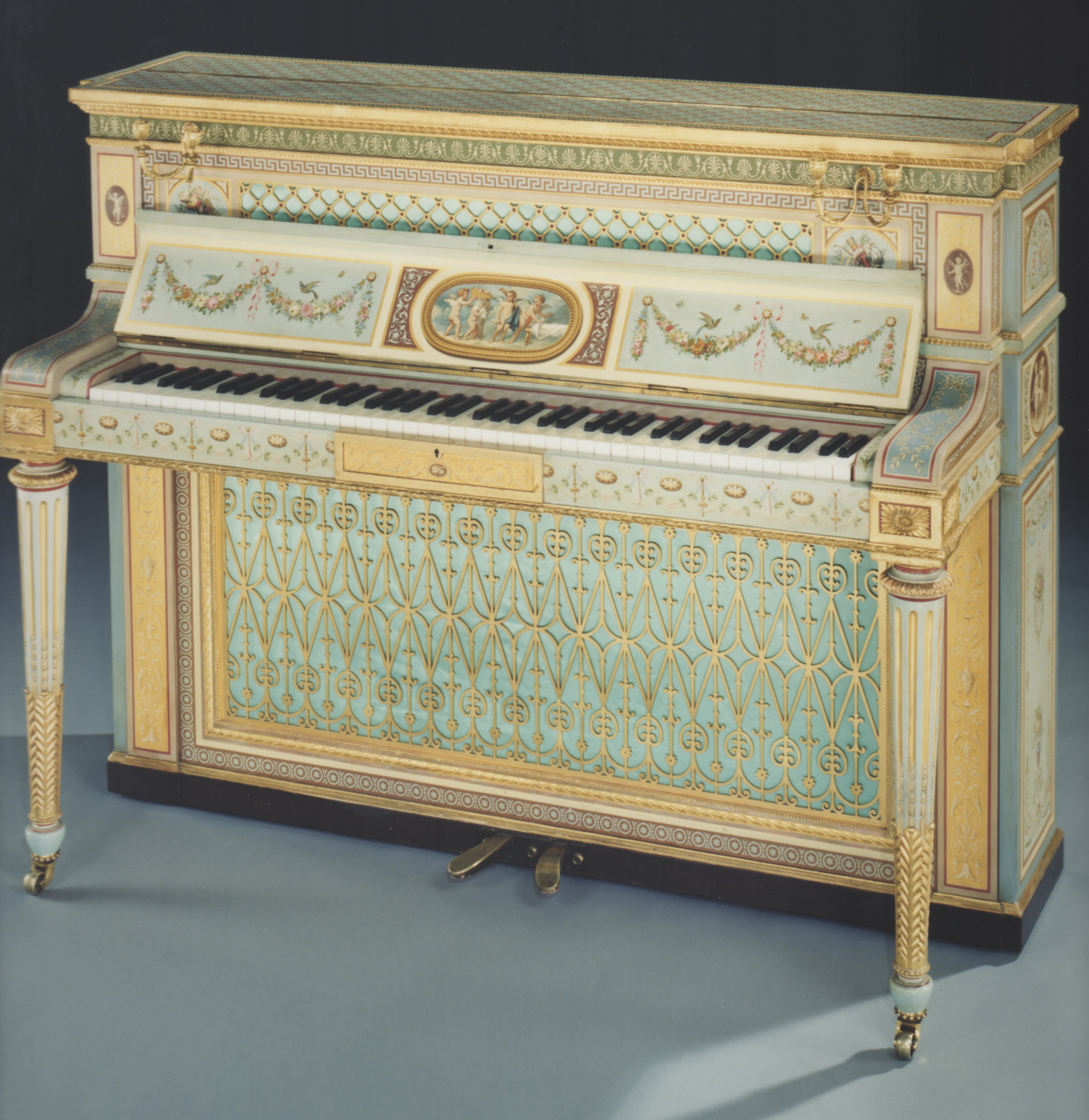
Ref. 6972 Polychrome and Parcel Gilt Decorated Piano, by Wright & Mansfield, show at the 1862 International Exhibition. Previously with Butchoff Antiques, London.
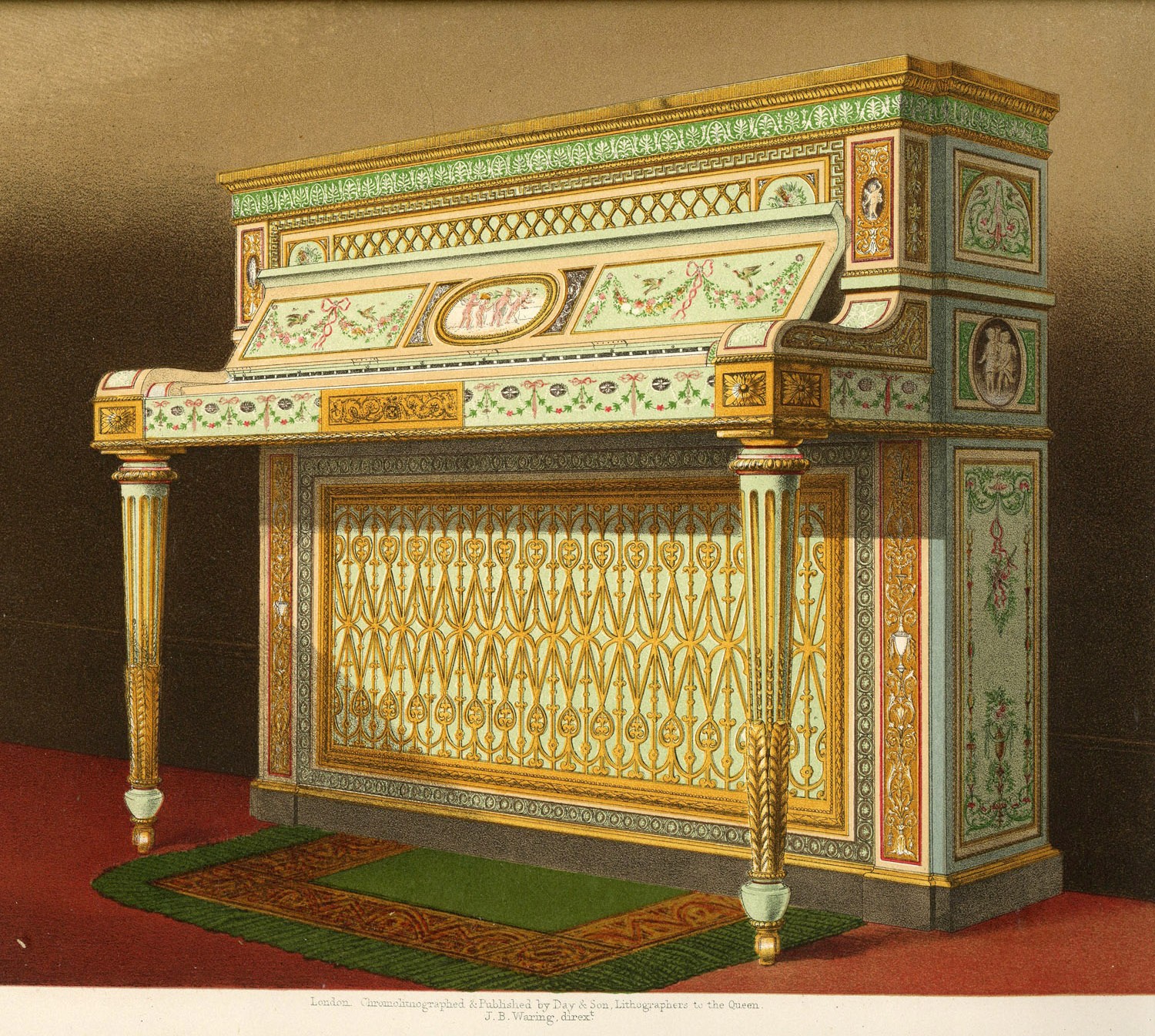
The Wright & Mansfield Upright Piano, as illustrated in J.B. Waring, Masterpieces of Industrial Art and Sculpture at the International Exhibition, 1862.
Their speciality was the manufacture of Adam Revival furniture. This is especially evident in the below demi-lune commode (ref. 7034), which is a faithful rendition of the original 1774 design of Robert Adam for the Countess of Derby at Derby House, Grosvenor Square, and made by Mayhew & Ince.
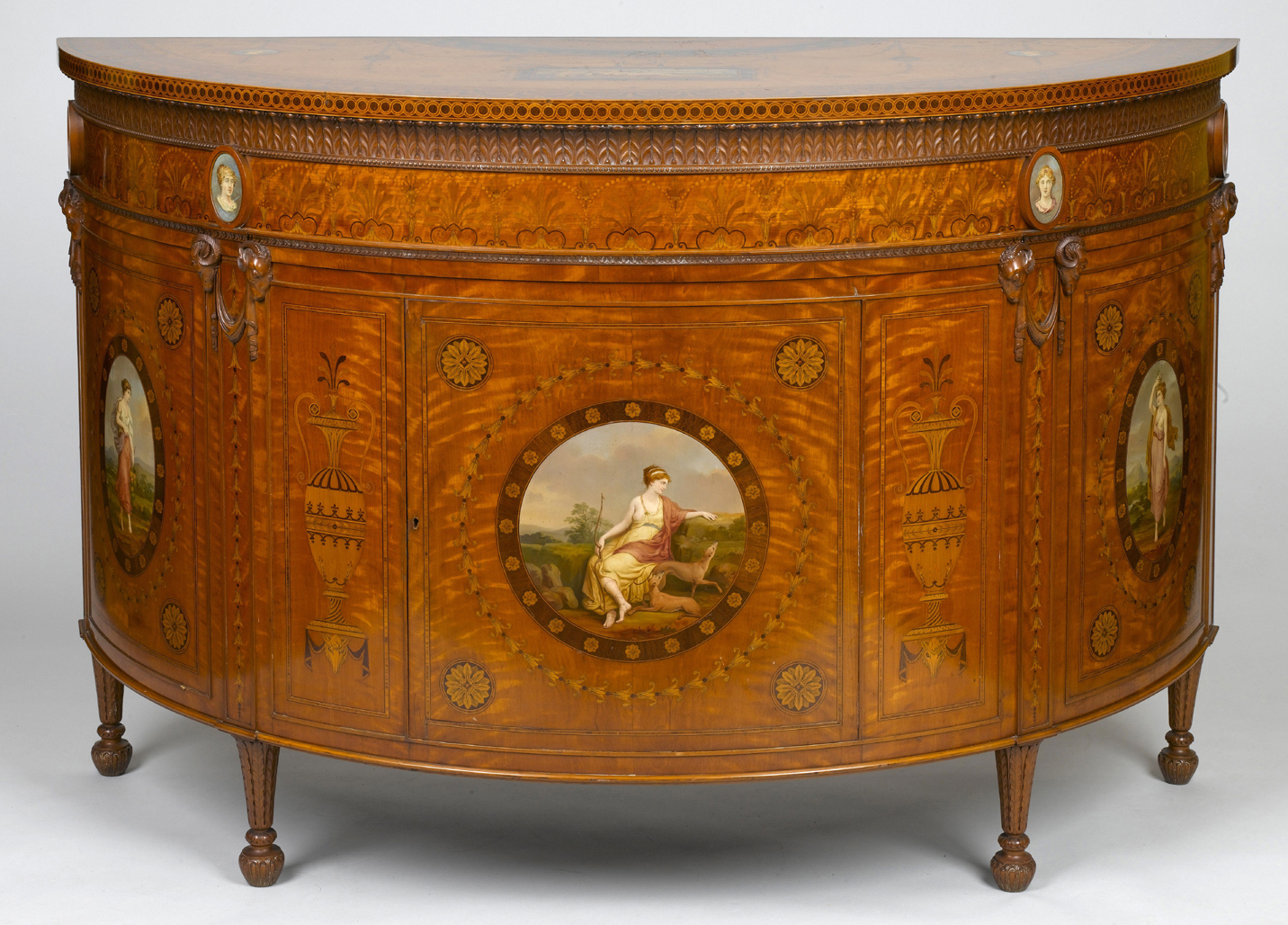
Ref. 7034, An Exhibition Quality Commode after the Original 1774 Design of Robert Adam, by Wright & Mansfield, circa 1870. Previously with Butchoff Antiques, London.
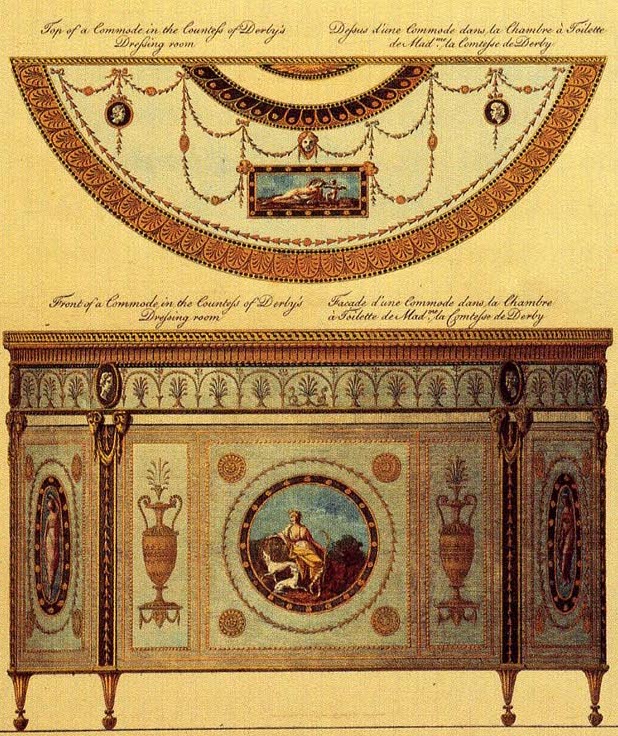
The original design by Robert Adam, dated 1774, and made by Mayhew & Ince.
A magnificent Satinwood Bookcase Cabinet with Wedgwood plaques they exhibited at the 1867 Paris Universelle Exposition was purchased on the spot by the Victoria and Albert Museum for the extraordinary sum, in those days, of £800, where it still forms an important part of its permanent furniture collection.
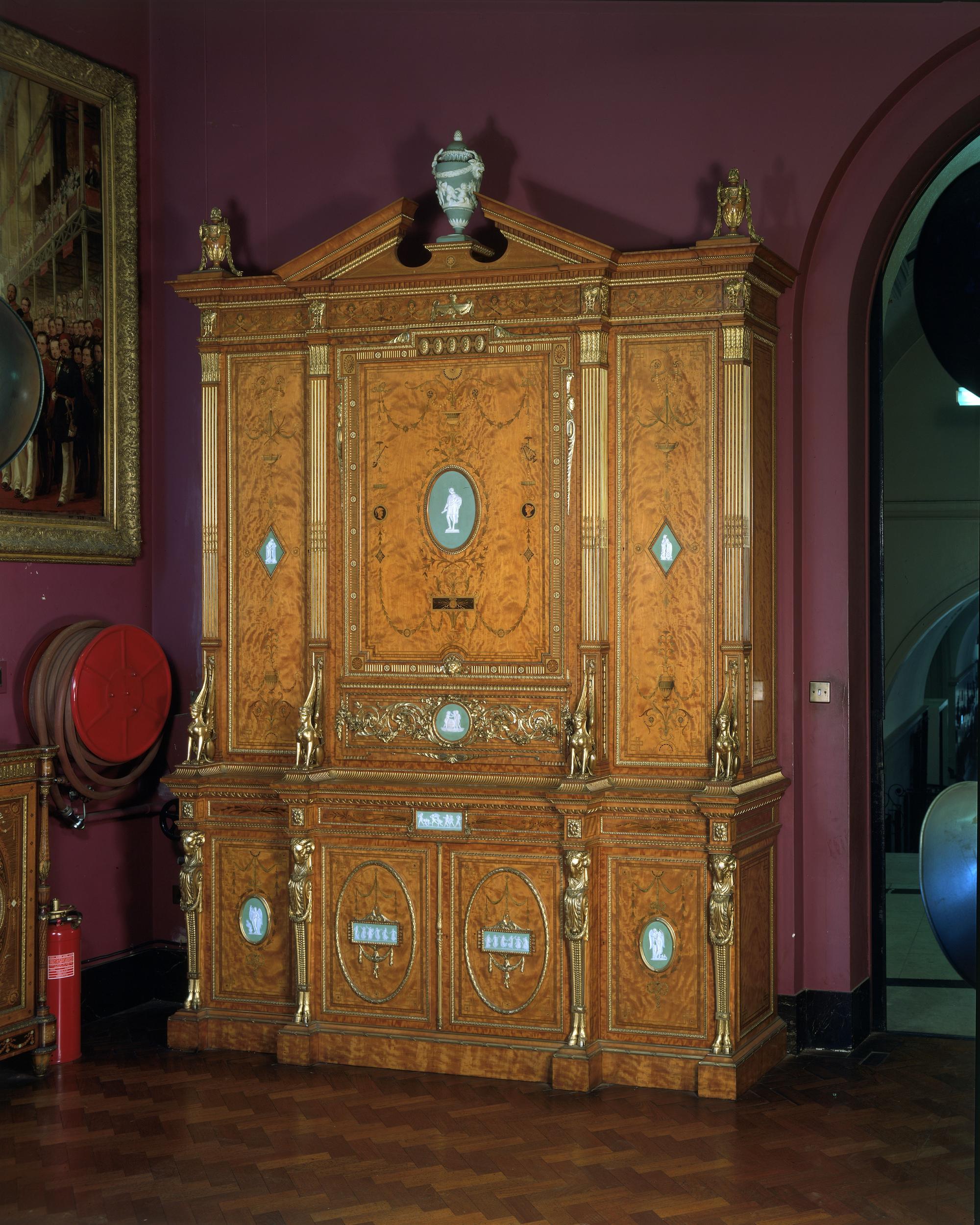
Wright & Mansfield's Satinwood Cabinet shown at the 1867 Exposition Universelle of Paris. Courtesy of the V&A, London.
Commissions following the great success of 1867 led to the design of various en suite pieces which accompanied the bookcase cabinet, equally incorporating Wedgwood plaques and employing satinwood veneers, such as the side cabinet below (ref. 9046).
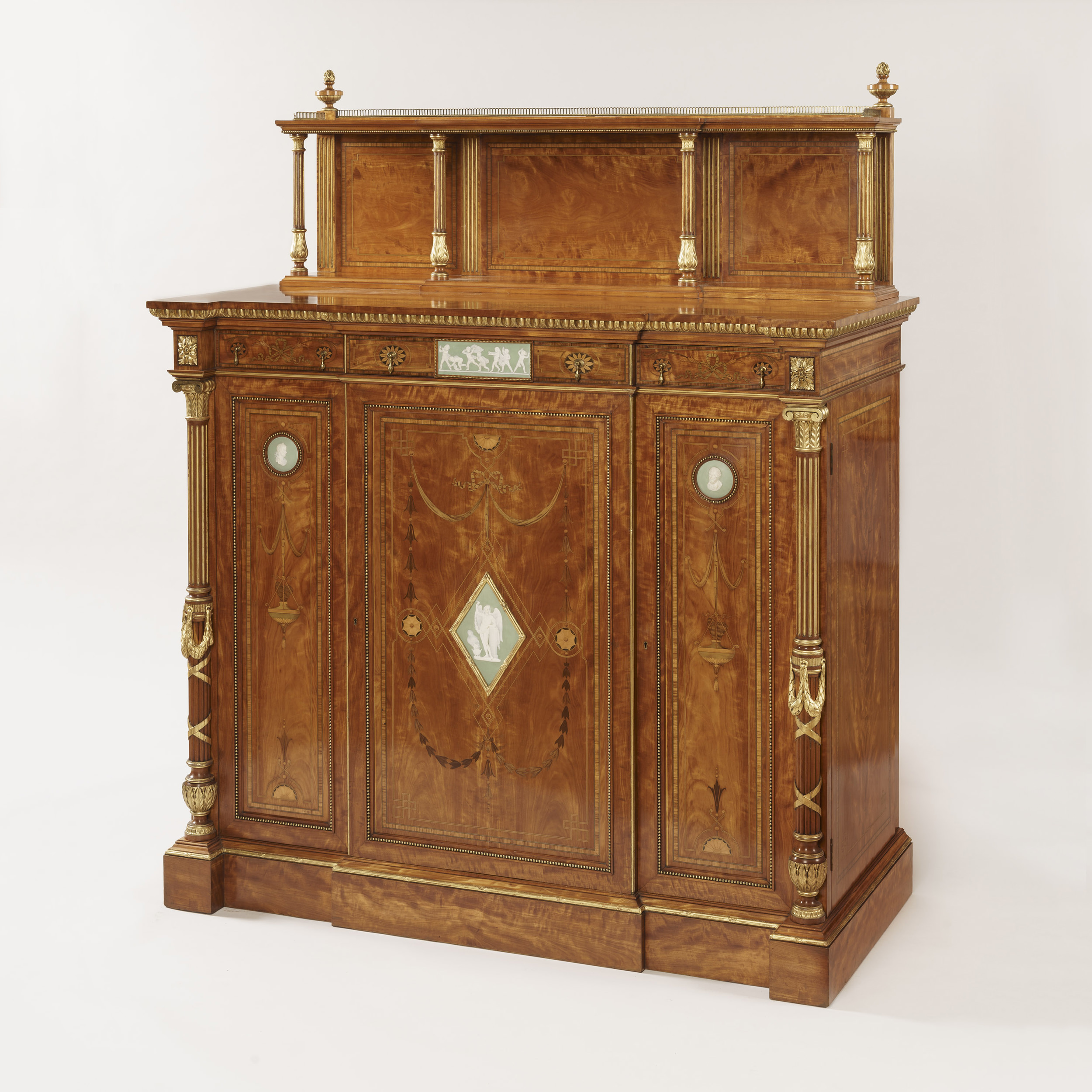
Ref. 9046, A Fine Side Cabinet, firmly attributed to Wright & Mansfield, circa 1870. Previously with Butchoff Antiques, London.
 Their showing at the 1876 Philadelphia Centennial Exhibition attracted wide admiration and was most favourably commented upon in the journals of the day. The firm continued exhibiting furniture regularly, including London’s Albert Hall Art Furniture exhibition in 1881. Their decoration commissions included Haddo House (for the Earl of Aberdeen), Argyllshire, and Brook House, London. Furniture of theirs is known both stamped, and unmarked.
Their showing at the 1876 Philadelphia Centennial Exhibition attracted wide admiration and was most favourably commented upon in the journals of the day. The firm continued exhibiting furniture regularly, including London’s Albert Hall Art Furniture exhibition in 1881. Their decoration commissions included Haddo House (for the Earl of Aberdeen), Argyllshire, and Brook House, London. Furniture of theirs is known both stamped, and unmarked.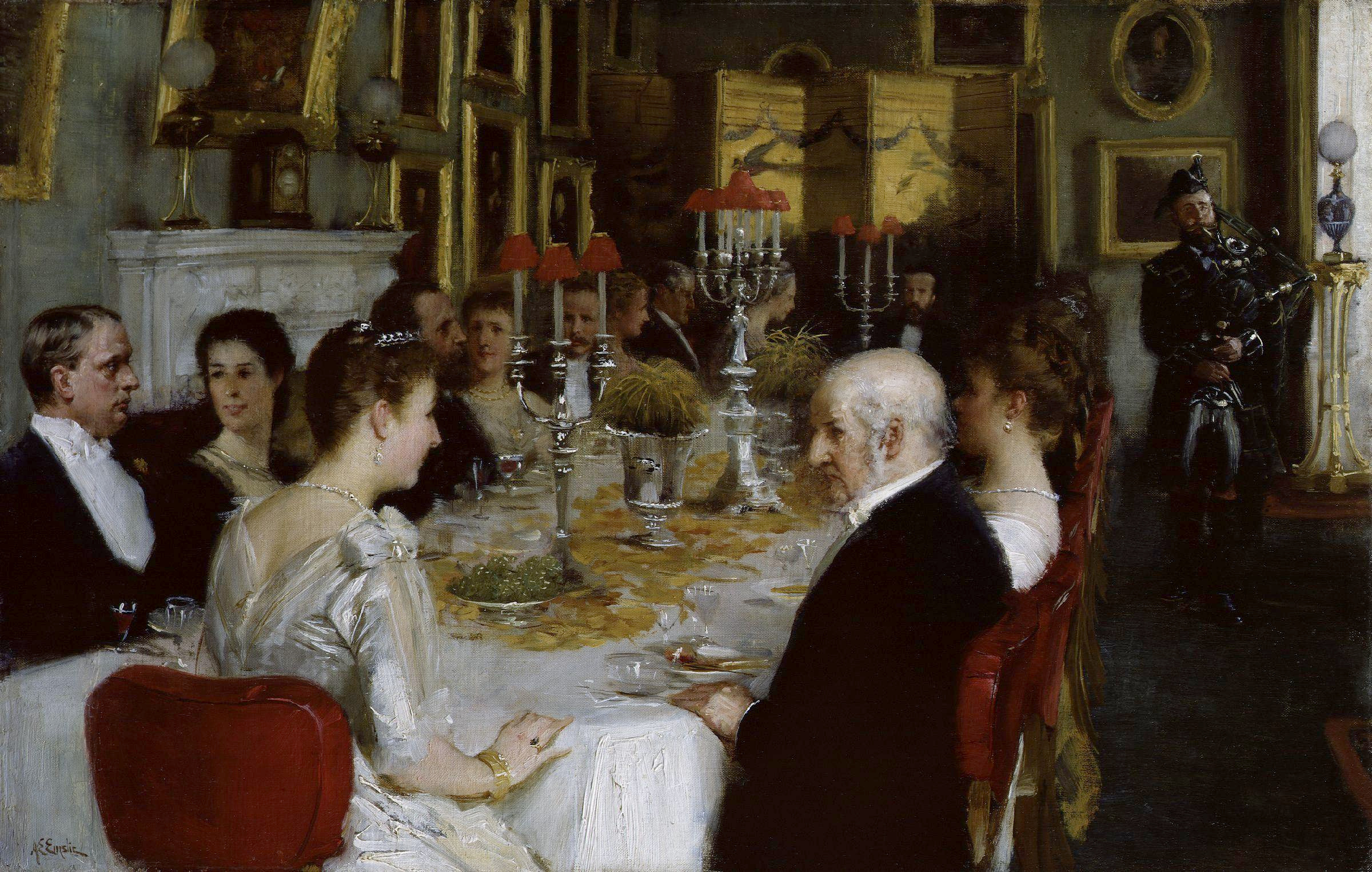
Dinner at Haddo House, by Alfred Edward Emslie, 1884. Courtesy of the National Portrait Gallery, London.
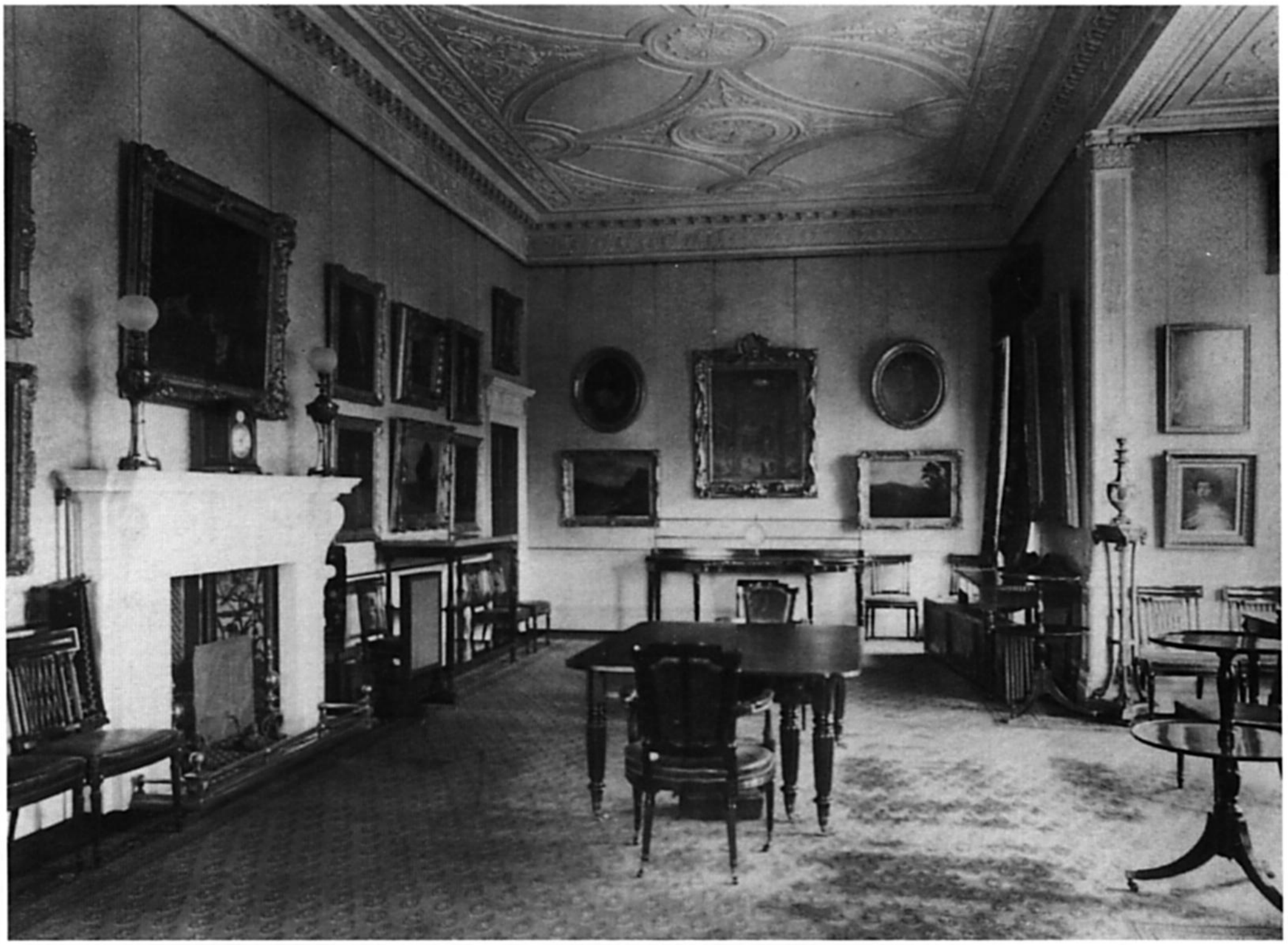
A contemporary photograph of the same room at Haddo House showing the Wright & Mansfield furnishings.
An early patron of the company, Sir Dudley Coutts Marjoribanks, a member of the Coutts banking family, and noted collector of Wedgwood, instructed Wright and Mansfield to refurbish, and furnish his Scottish estate, Guisachan, Inverness-shire, which he had purchased in 1856, and later his London residence, Brook House, Park Lane, designed by Thomas Henry Wyatt, and completed in 1867.

Brook House, the interior decoration scheme and furniture completed by Wright & Mansfield, completed in 1867.
Brook House incorporated carved panelling and furniture, including Marjoribanks’ Wedgwood library table in Gean wood, the finest piece of furniture the company ever made (ref. 6804). Sir Dudley had specified that wood used was to originate from his Scottish estate. An incredible piece of craftsmanship and art, the desk also incorporated 67 Wedgwood basalt plaques. It was noted that Sir Dudley was instrumental in assisting his daughter Ishbel, upon her marriage to the Earl of Aberdeen, in 1878 to refurbish and refurnish the decrepit, (by Ishbel’s own account, recorded in Lord & Lady Aberdeen’s’ book ‘We Twa’), Haddo House, Aberdeenshire.
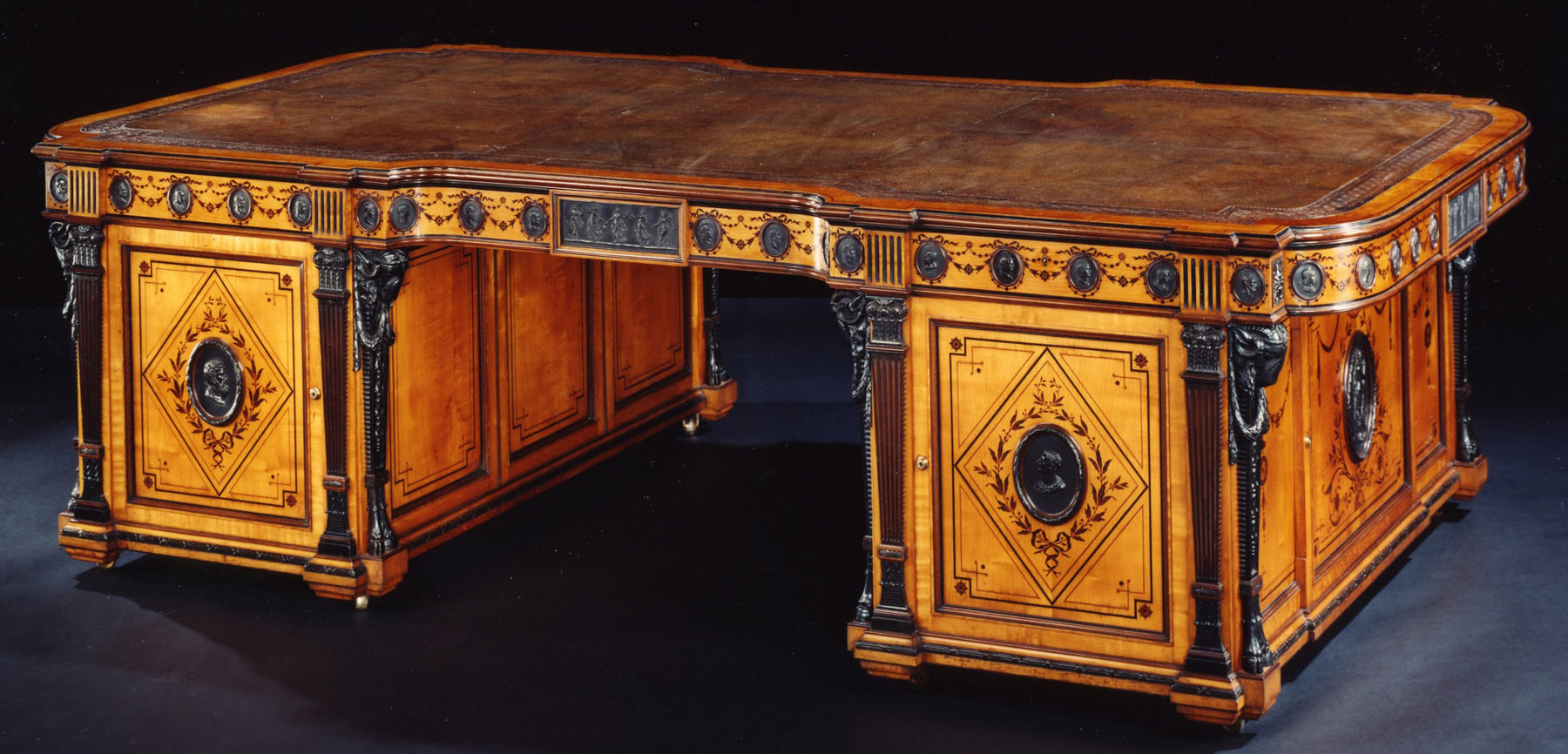
Wedgwood Writing Table, by Wright & Mansfield, for Lord Tweedmouth at Brook House, Park Lane. Previously with Butchoff Antiques, London.
The decorations were completed in 1883, just prior to the dissolution of the partnership in 1884, apparently due to the failing health of Alfred Wright, who died in 1890. The remaining stock of the company was sold by Phillips Son & Neale in an initial sale held over the 23-25 June 1886, and a final dispersal sale held in 23-25 June 1887.
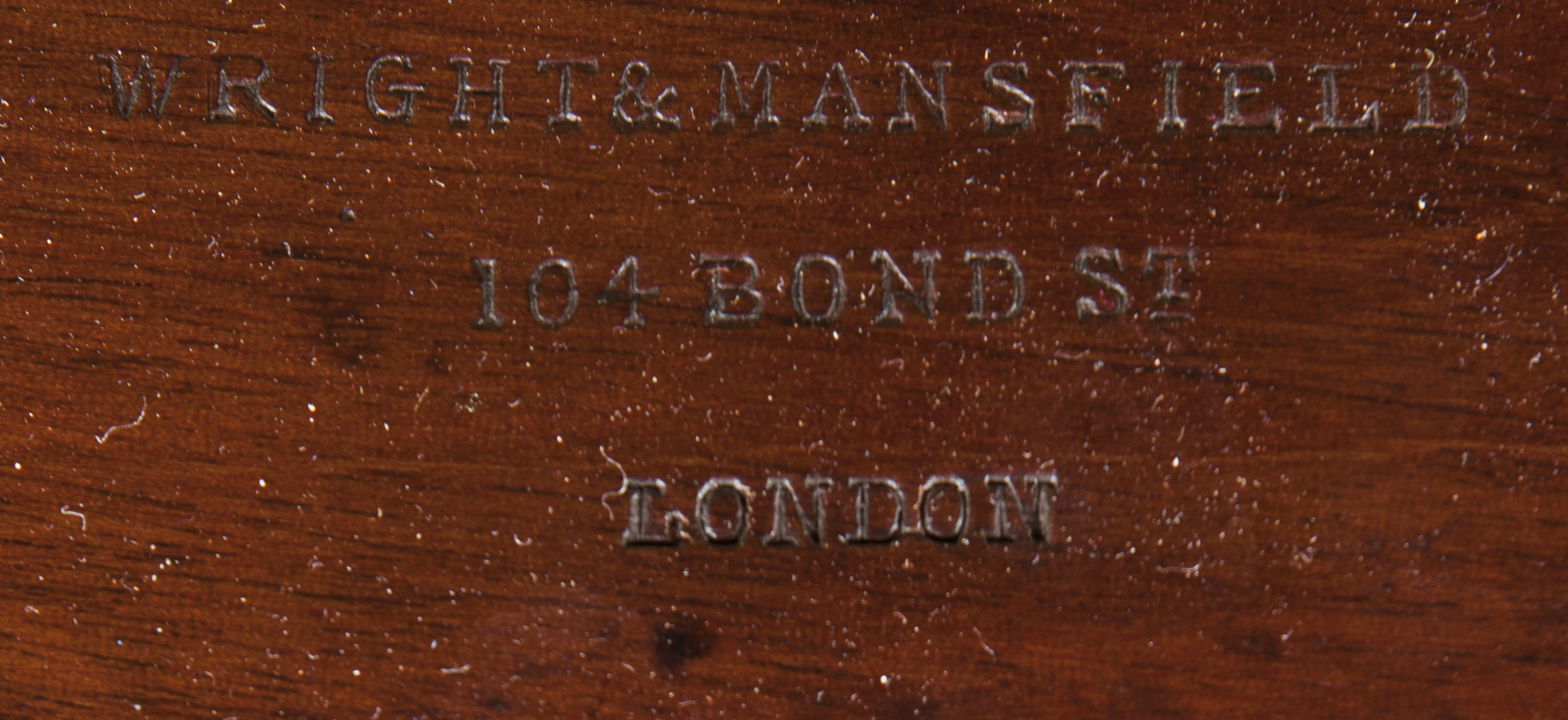
By Rainier Schraepen
Today we are launching our new series exploring the diverse woods employed in antique furniture and their manifold uses in the art of cabinetmaking; starting with one of our favourite timbers: Thuya Wood.
Thuya wood stems from the Thuya tree, a small conifer which can only be found in the remote forests of the Atlas Mountains in modern-day Morocco. One of the few woods mentioned in the Bible, the timber was praised by the Ancient Greeks and Romans, and its fragrant oils were used in religious ceremonies. Maturing slowly, the most desirable part of the tree is its burl buried beneath the ground. These are cut from the root of three, creating a more tightly packed and swirled veneer. Fine grained and lustrous, it has rich brown colour and is strikingly marked with small burr pips.
Incredibly rare, Thuya wood is one of the most exclusive timbers and is only found on exceedingly luxurious pieces of furniture. A cabinet formerly in the Royal Collection, and a bespoke commission for Marlborough House for the Prince of Wales (later King Edward VII) by Holland & Sons (ref. 8637) incorporates Thuya wood, as well as circassian walnut and various specimen woods.
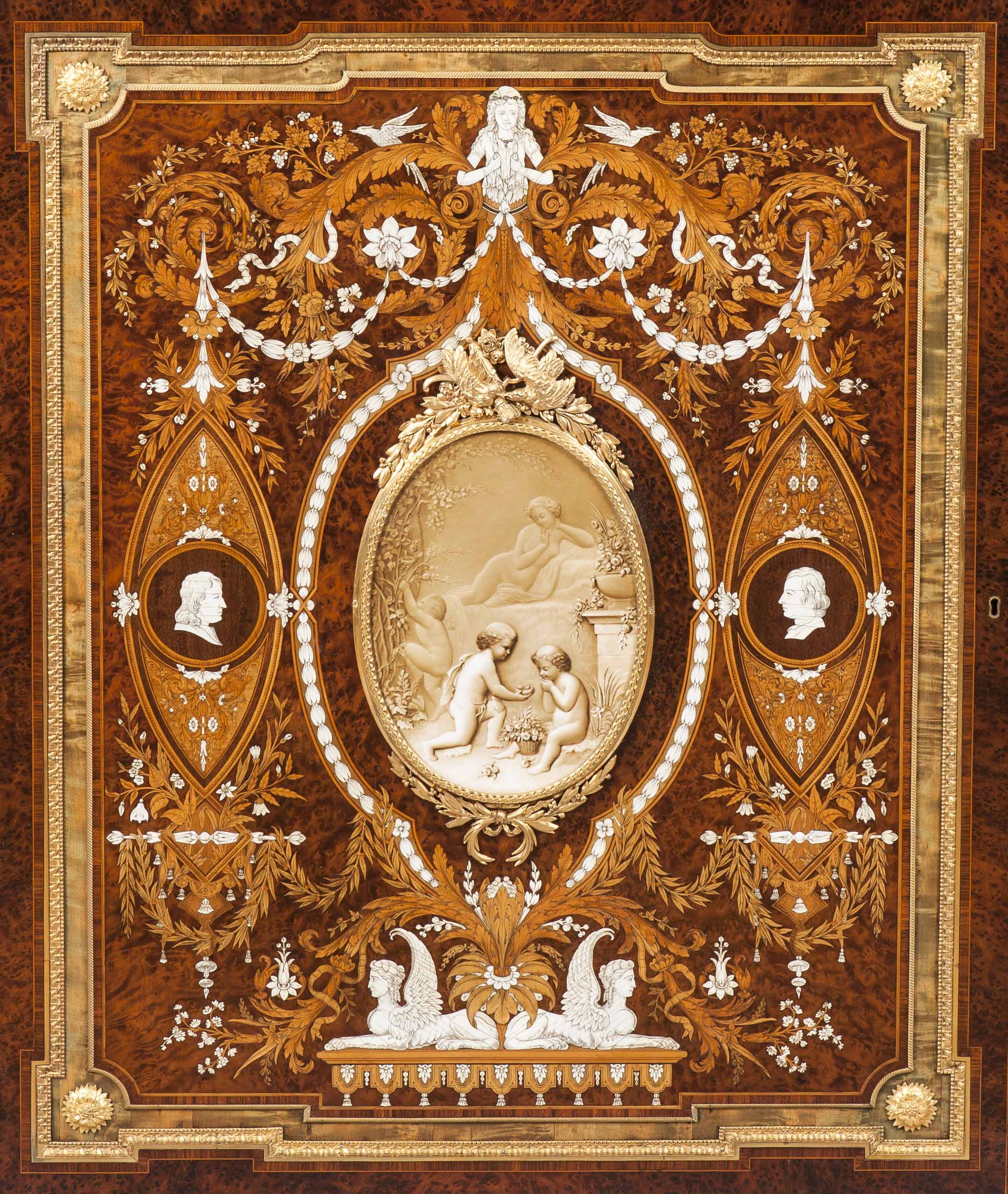
Ref. 8637, A Magnificent Royal Cabinet (detail) for their residence, Marlborough House, by Holland & Sons, circa 1865. Butchoff Antiques, London.
France was the major exporter of Thuya starting in the 1830’s, and their cabinetmakers were among the first to start using the exotic veneers in furniture for the grandest chateaux and city palaces, as seen in this pair of cabinets made by Henri Picard of Paris (ref. 8911) who also furnished the apartments for Napoleon III in the Louvre. These meubles à hauteur d’appui would take center stage in the lavish apartments of Paris; their materials, size, and style reflecting the opulence of the Second Empire.

Ref. 8911, A Good Pair of Meubles à Hauteur d'Appui, by Henri Picard of the Napoleon III Period. Previously with Butchoff Antiques, London.
By the 1850’s, though still rare, Thuya made its way to England, particularly via the royal cabinetmaker Holland & Sons who married the French aesthetic with English craftsmanship in a style now called ‘Franglais’ by the eminent furniture historian Christopher Payne. The aristocracy and great landowners of the 19th century furnished their homes in this contemporary style, with the best pieces, such as this centre table (ref. 7874) made for Whitbourne Hall, incorporating large Thuya veneers on the top, but also along the tapered legs and the stretcher.
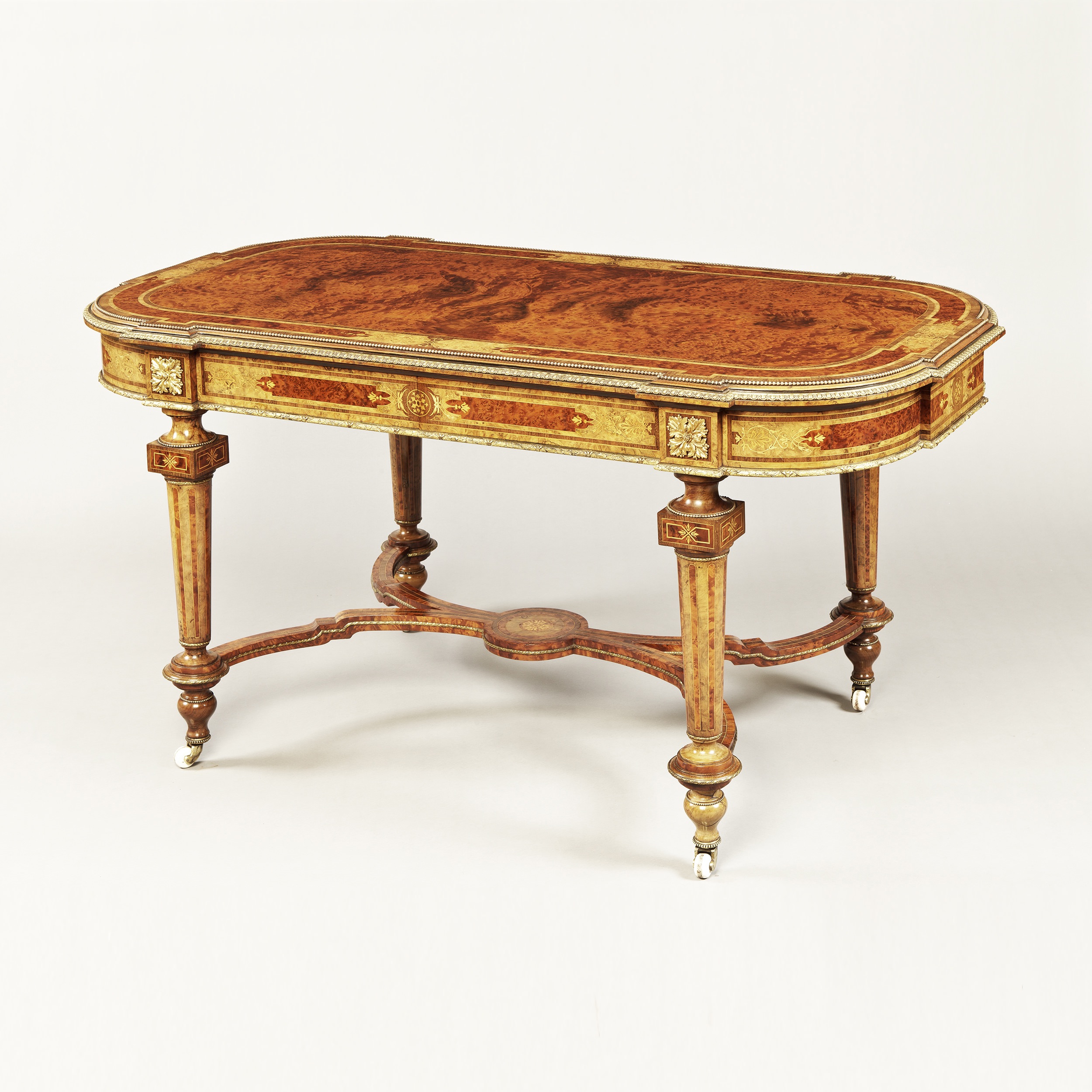
Ref. 7874, A Very Fine and Substantial Centre Table In the Louis XVIth Manner of Holland & Sons, circa 1850. Butchoff Antiques, London.
Thuya remains a highly expensive wood to this day, and its use is limited to small decorative items, such as jewellery boxes and table cabinets. Antique Thuya is more desirable, however, having a rich tone and strikingly marked with small, almost black burr pips clearly seen in this table cabinet made by Gatti, made circa 1870.
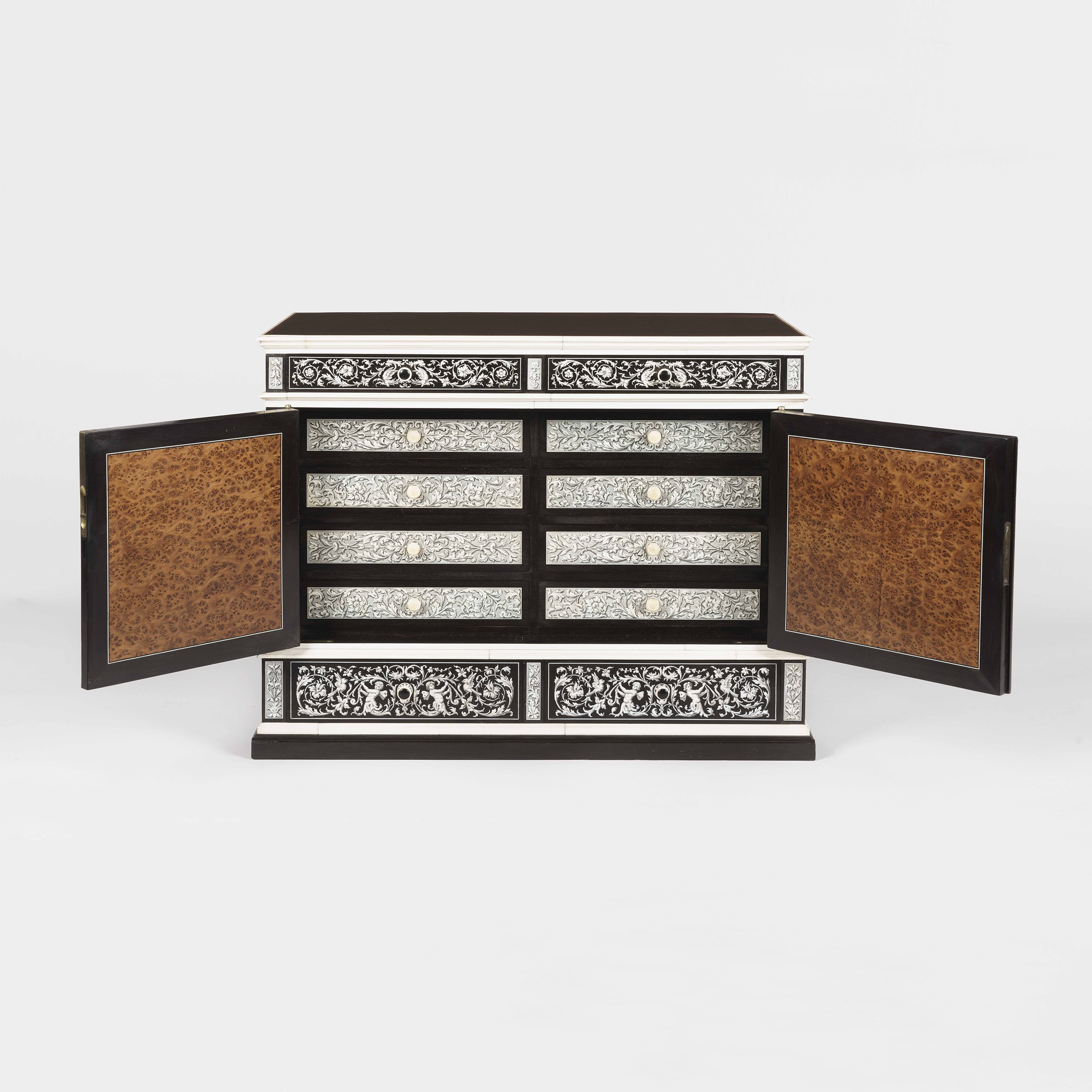
Ref. 9054, A Fine Table Cabinet, by Giovanni Battista Gatti, circa 1870. Butchoff Antiques, London.
By Rainier Schraepen
Marquetry is the art of creating intricate pictures and elaborate designs on furniture by skilfully cutting and fitting together thin pieces of domestic and exotic woods, horn, ivory, metal, shell, and other precious materials. Marquetry designs are derived from arabesque and grotesque ornament. While this highly specialized and studied art has roots in ancient times, it was brought to a high level of refinement and popularity in the 17th and 18th centuries in France.
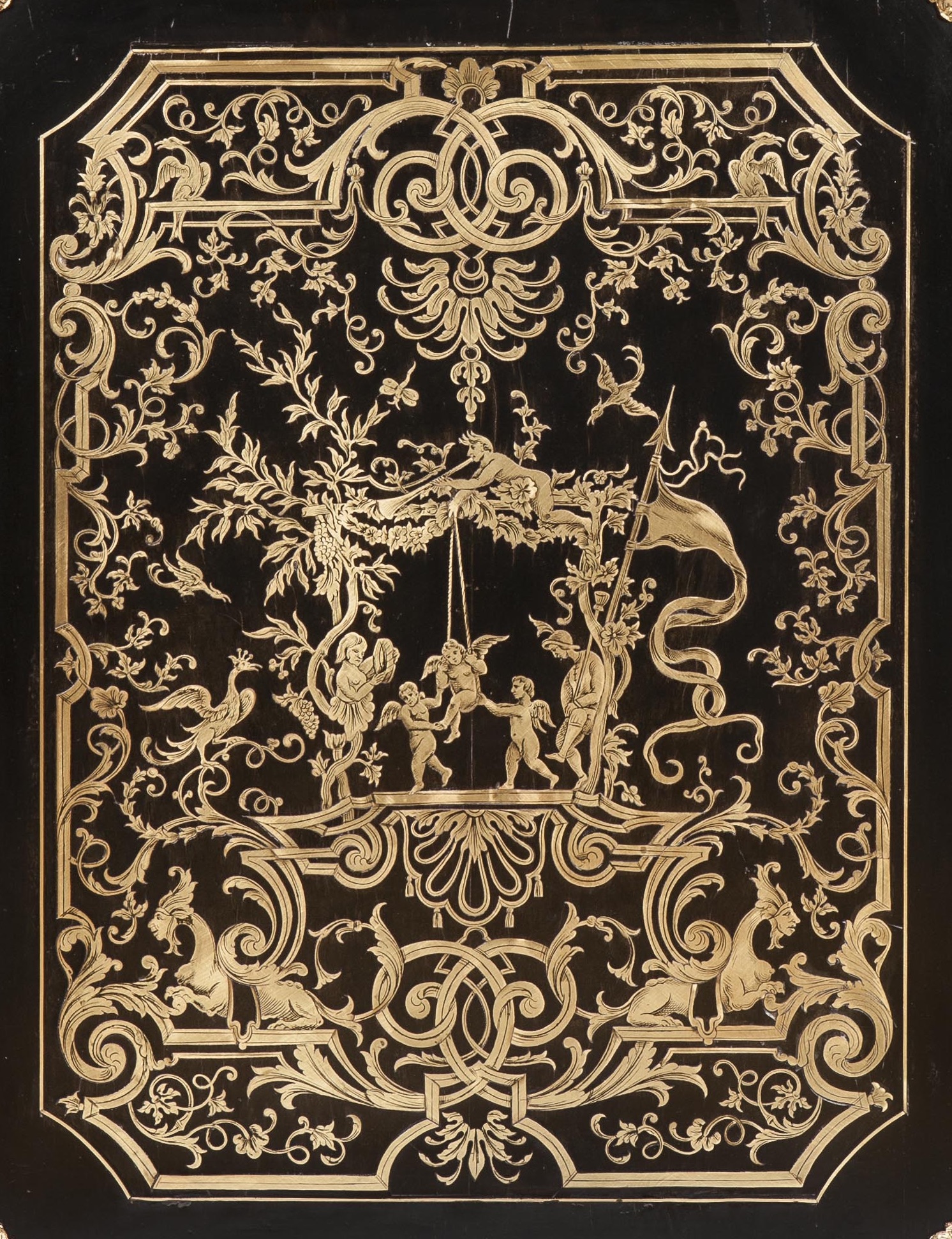
Figure 1. A True Pair of Side Cabinets in the Manner of Andre Charles Boulle (detail). Previously with Butchoff Antiques, London.
André-Charles Boulle’s name is synonymous with the technique known as ‘Boulle’ marquetry. Although not the inventor of the craft - Boulle’s skillful practice of combining contrasting black ebony with gilded bronze and tortoiseshell inlaid with intricate designs of silver-toned pewter and brass is associated as one of the most opulent and expensive form of decoration of furniture. Boulle’s work took two different forms: première partie - pattern in metals with the background in tortoiseshell; and contre partie - pattern in tortoiseshell with the background in metal. Occasionally tortoiseshell is lined on the reverse with a tinted metal foils, such as gold leaf or red, to enhance the naturally spotted patterns of the shell.

Figure 2. A 'Boulle' Marquetry Guéridon. Previously with Butchoff Antiques, London.
Imagine how these pieces of furniture would have looked in the early 18th century. An interior room only lit by daylight and candlelight at night, and how the brass inlay and gilt bronze mounts would have brilliantly flickered amongst the dark. They would have been beacons of light reflecting an impression of grandeur and wealth. The combination of gilt bronze and brass surfaces were revolutionary to the furniture and decoration world.
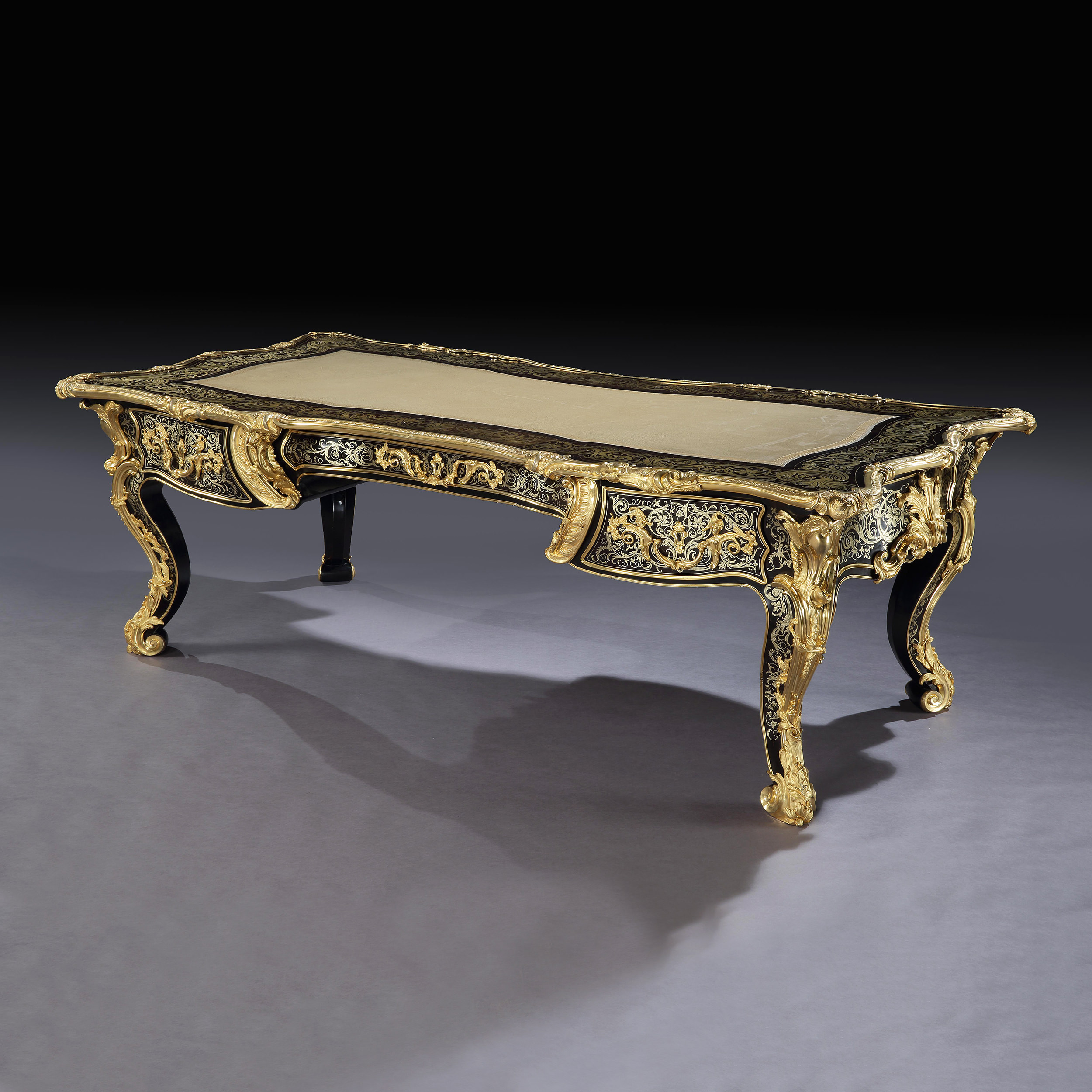
Figure 3. A Bureau Plat in the Louis XIV Manner, by Toms and Luscombe shown at the 1862 International Exhibition. Butchoff Antiques, London.
Over forty-two years, Boulle supplied furniture and interior finishes for King Louis XV and XIV, the Queen, the Grand Dauphin, and many financiers, ministers and important officials throughout Europe. Currently many of Boulle’s attributed works are in some of the finest museums, as well as royal and private collections throughout the world. An authenticated work at auction today would cost quite the fortune, let alone the materials to create a custom-made piece.
Boulle lived from 1642 – 1732 and was received as a Maître Ébéniste in 1666 quickly becoming known as the most skillful artisan in Paris. He was appointed by King XV to ‘Ébéniste du Roi’ in 1672 granting him the royal privilege of lodging in the Palais du Louvre with special permission to work in both bronze and wood. He produced furniture as well as works in gilt bronze, such as chandeliers, wall lights, mounts for furniture, interior decorative details and parquet floors.
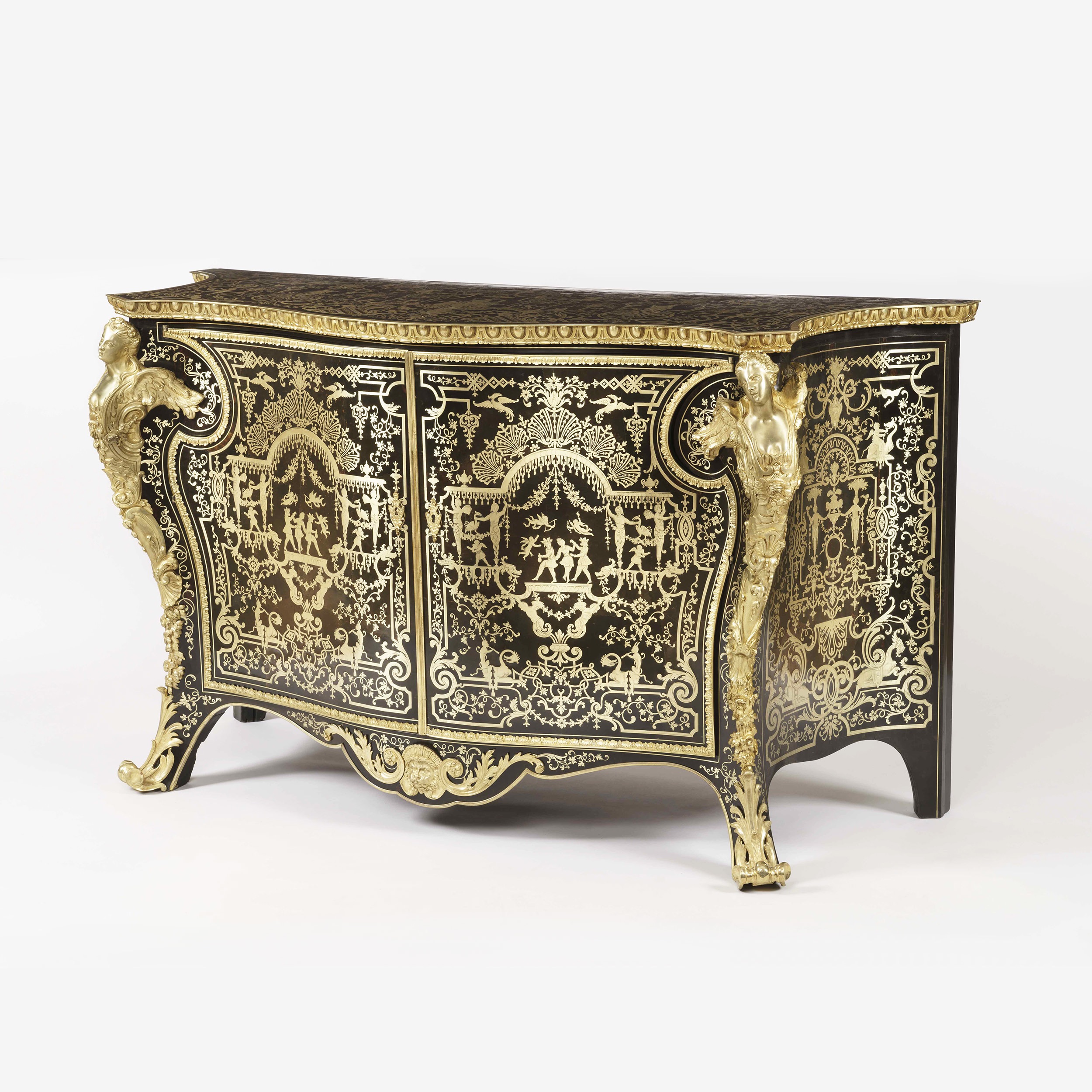
Figure 4. A Fine Commode, by Mellier and Company in the Manner of André-Charles Boulle. Butchoff Antiques, London.
Boulle’s influence in the design and furniture world has lasted for hundreds of years. This has been aided by the circulation of his designs illustrated in books of engravings, published around 1720. Designs included various models of furniture, such as bureau plats, tables, cabinets, pedestals and clocks, offering options for different forms and features, such as assorted leg styles, marquetry decoration, and gilt bronze mounts. An example is of this stylistic influence is the conception of this highly unusual serpentine commode by Mellier (Ref. 9045, fig. 4) constructed in tortoiseshell and brass in premiere-partie Boulle work.
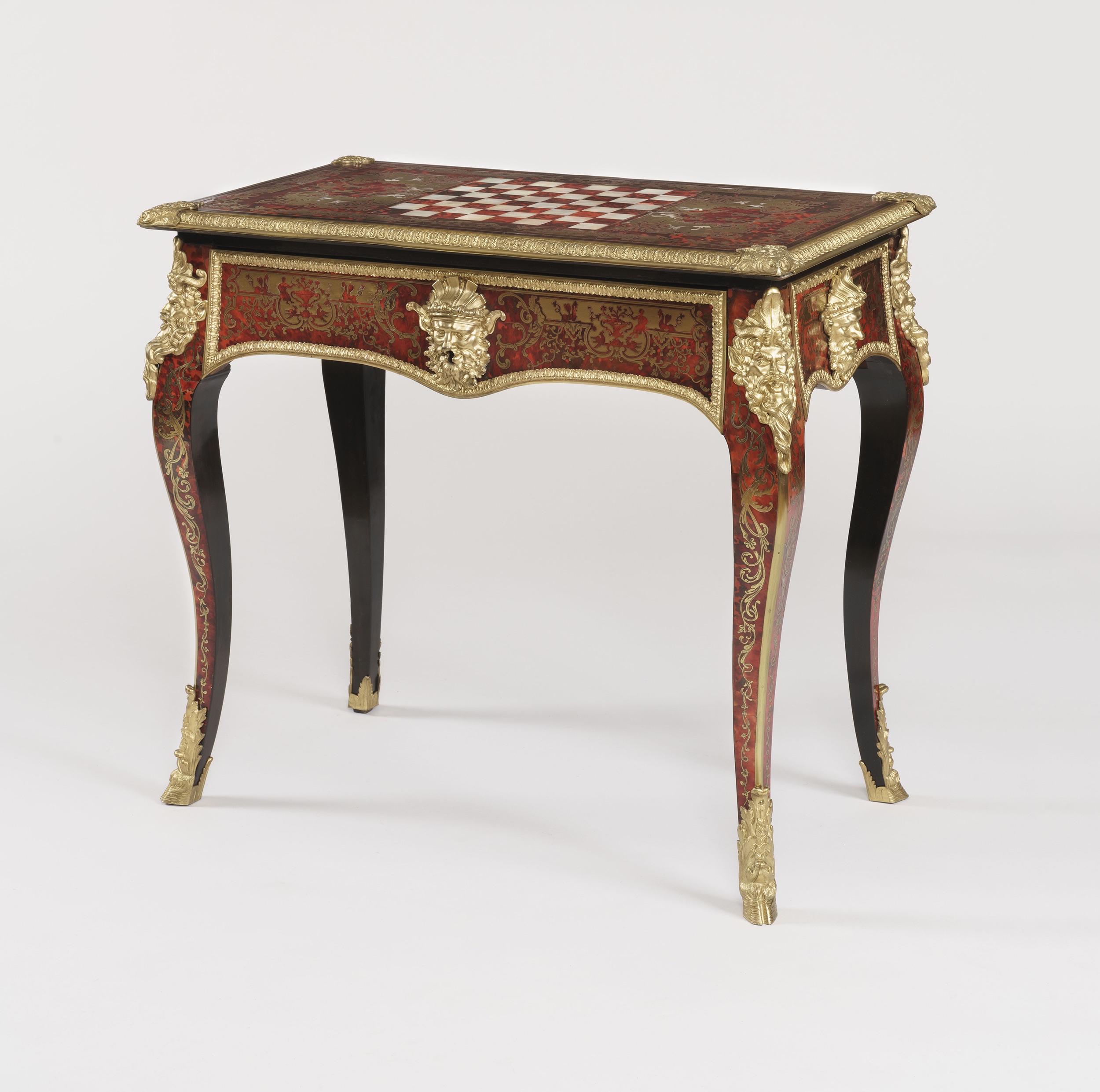
Figure 5. A Fine Games Table of the George IV Period, attributed to Thomas Parker. Butchoff Antiques, London.
Boulle’s ormolu bronze mounts were largely inspired by Classical mythology, such as the Bacchus mask as seen on this bureau plat (fig. 6) symbolically portrayed with grape vine garlands and a crown. The bureau plat demonstrates a beautiful and eye-catching play of contrasting black ebony wood against the gold of gilded bronze and brass inlay. The drawers are enriched with tortoiseshell ground and foliate brass ornamentation and all four corners are mounted with female masks which flow into foliate waterfalls melting into the ebony and brass inlay.

Figure 6. A Fine Bureau Plat in the Manner of André-Charles Boulle. Butchoff Antiques, London.
The inspiration for the Bacchus mount designs likely derive from a medal cabinet attributed to André Charles Boulle dated circa 1710-15 that is now in the J. Paul Getty Museum (84.DA.58) in Los Angeles, California.
by Rainier Schraepen
The Louis XVI style is one of the most prominent and most often imitated styles for furniture and interior decoration. The style, of course, is named after the French King Louis-Auguste who succeeded Louis XIV and Louis XV, both of whom are also associated with their own iconic styles of furniture and interior decoration.
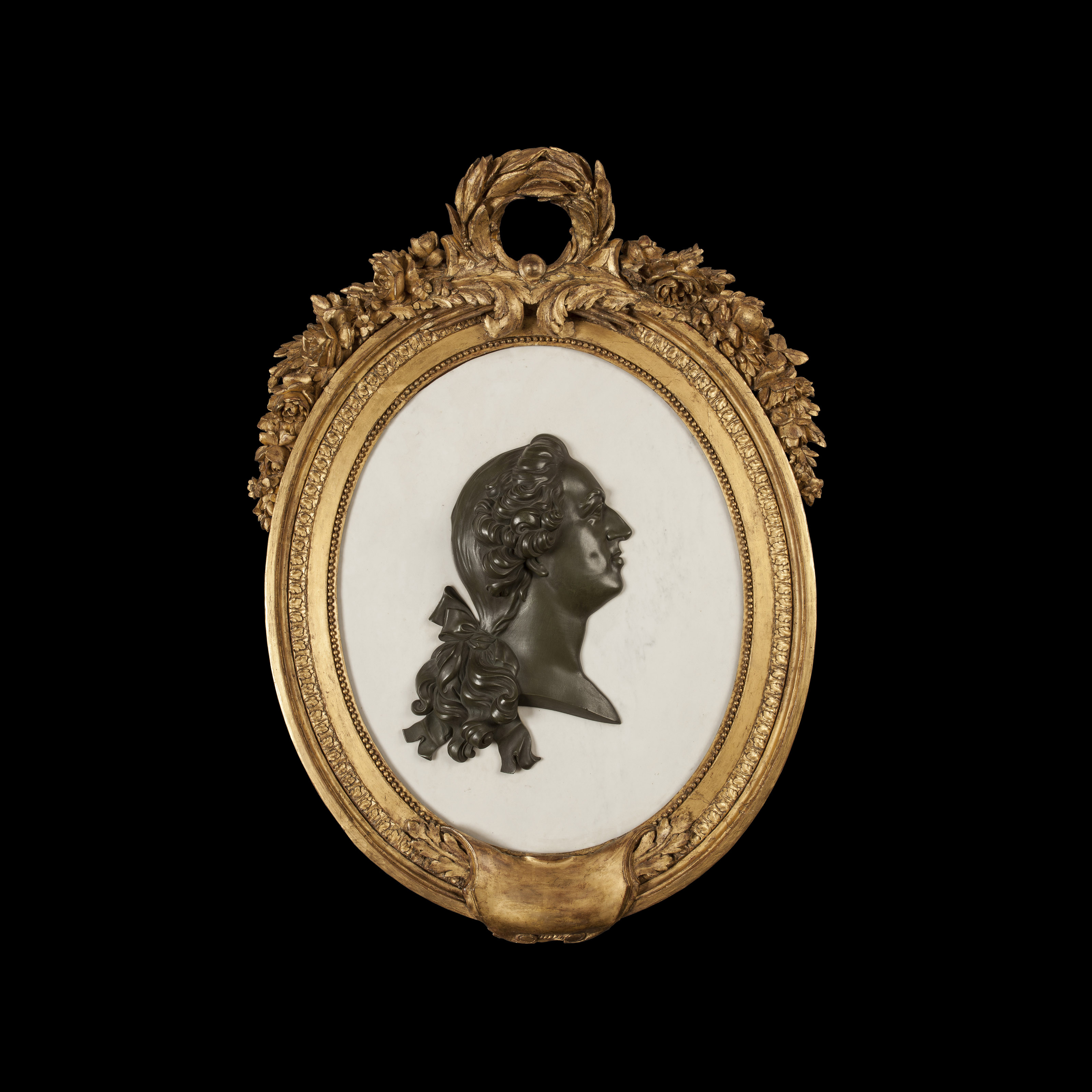
Figure 1. A Marble And Bronze Neo-Classical Portrait Of King Louis XVI. Previously with Butchoff Antiques, London.
The Louis XVI style dates from around 1760 to 1790, and follows the ideals of the English Neoclassical style with which it coincided: a return to the principles and aesthetics of Classical Antiquity. The style is characterized by an emphasis on straight lines and classically inspired decorative motifs.
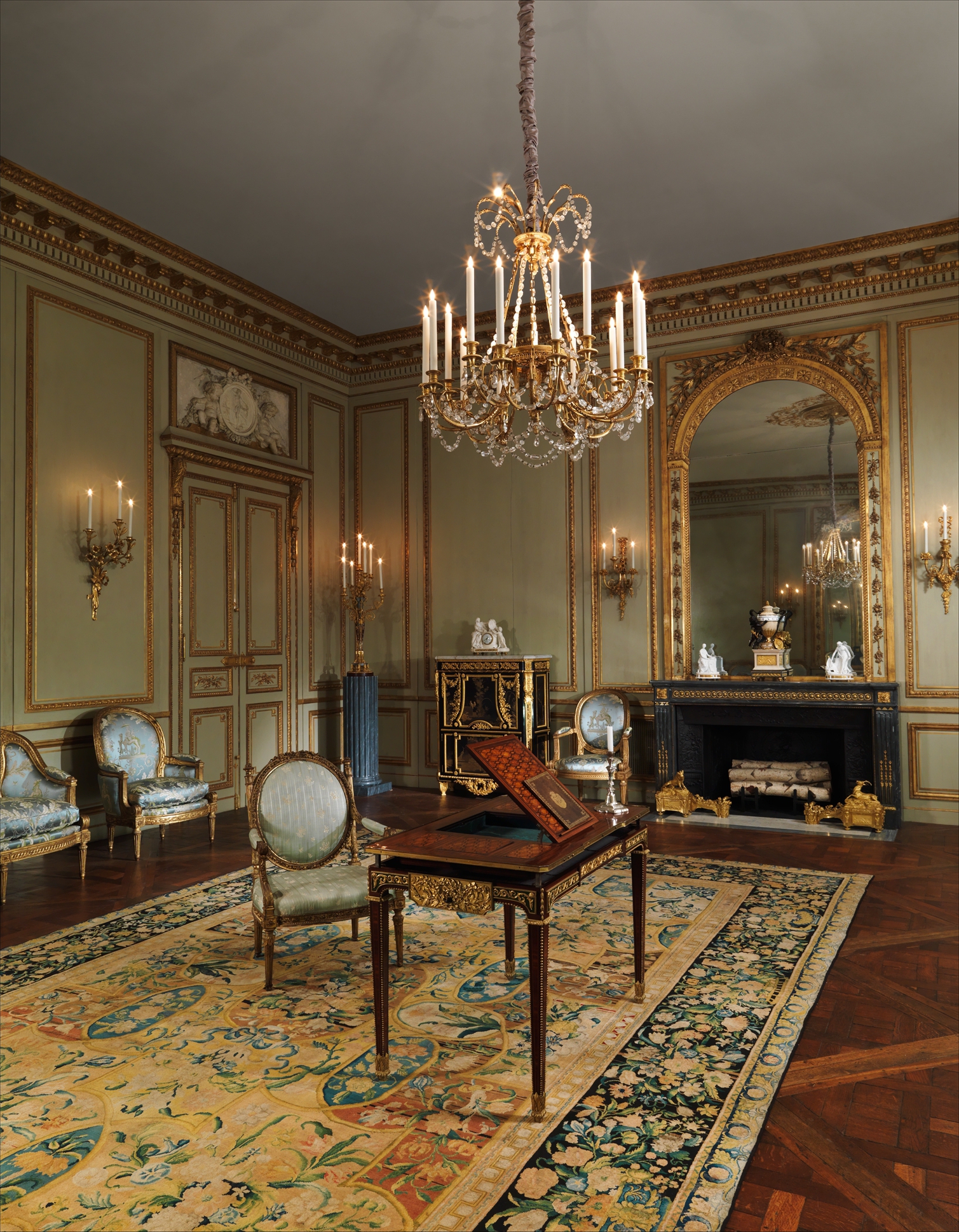
Figure 2. Grand Salon from the Hôtel de Tessé, Paris , ca. 1768–72.
Made by Nicolas Huyot. On view at The Met Fifth Avenue in Gallery 528.
There is a restraint in decoration compared to the previous Louis XV and Rococo periods, though it is no less opulent or lacking in gilded surfaces. Louis XVI furniture features less floral marquetry, instead showcasing solid veneers of wood framed by straight classically inspired gilt bronze mounts, as shown in this pair of ormolu-mounted plum pudding mahogany occasional tables by Paul Sormani (fig. 3).

Figure 3. A Matched Pair of Side Tables in the Louis XVIth Manner, by Paul Sormani. Previously with Butchoff Antiques, London.
The burgeoning style was supported and encouraged by the Queen, Marie-Antoinette, who commissioned the decoration and furnishings for her many apartments at the royal residences of Versailles (fig. 4), Saint-Cloud, Petit Trianon, and Grand Trianon in this latest fashion.
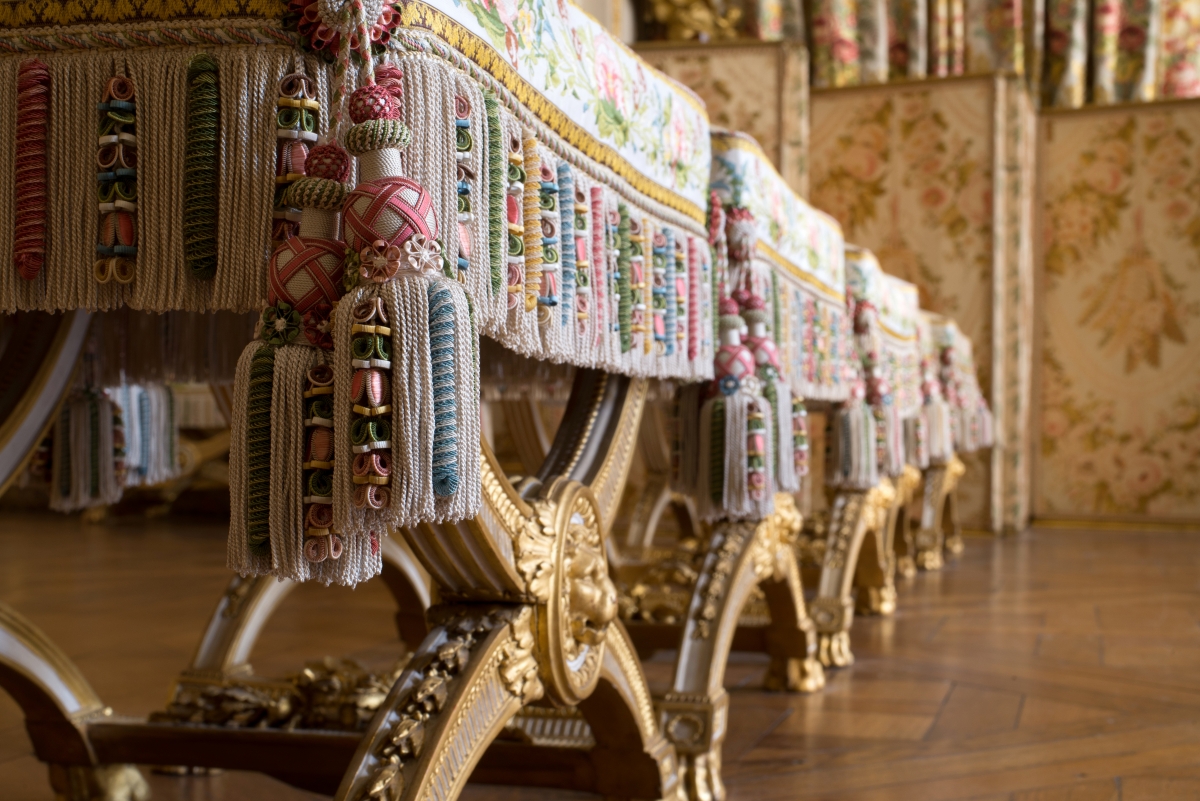
Figure 4. Louis XVI's Clothes Cabinet, Château de Versailles. Courtesy of Palace of Versailles.
The French Revolution (1789-1799) forced hundreds of millions worth of possessions and property of the Crown to be sold, making many of these pieces available on the art market. Many items were destroyed, while others have trickled down into today's galleries and museums throughout the world, such as the Louvre, the Metropolitan Museum of Art, the Victoria and Albert Musuem, and the Wallace Collection.
The importance, beauty, and rarity of these furnishings and objects d’art became increasingly widely recognised, as an international crowd of wealthy individuals and members of the aristocracy began to enthusiastically collect them. In the second-half of the nineteenth century, many faithful copies or similar models were commissioned for private collections, including many of the pieces pictured in this article.
Riesener supplied furniture of incredible luxury, demonstrating his ingenious sense of design and meticulous craftsmanship. Pieces included materials of imported Japanese lacquer with gilt, mother-of-pearl, and richly gilded ormolu mounts. A commode now at the Metropolitan Museum of Art was made by Riesener in 1783 (20.155.12) for Marie Antoinette’s Cabinet Interieur at Versailles, likely inspired this model by Henry Dasson (fig. 5), which is adorned with similarly finely cast gilt bronze mounts and imported black and gilt dusted Japanese panels.
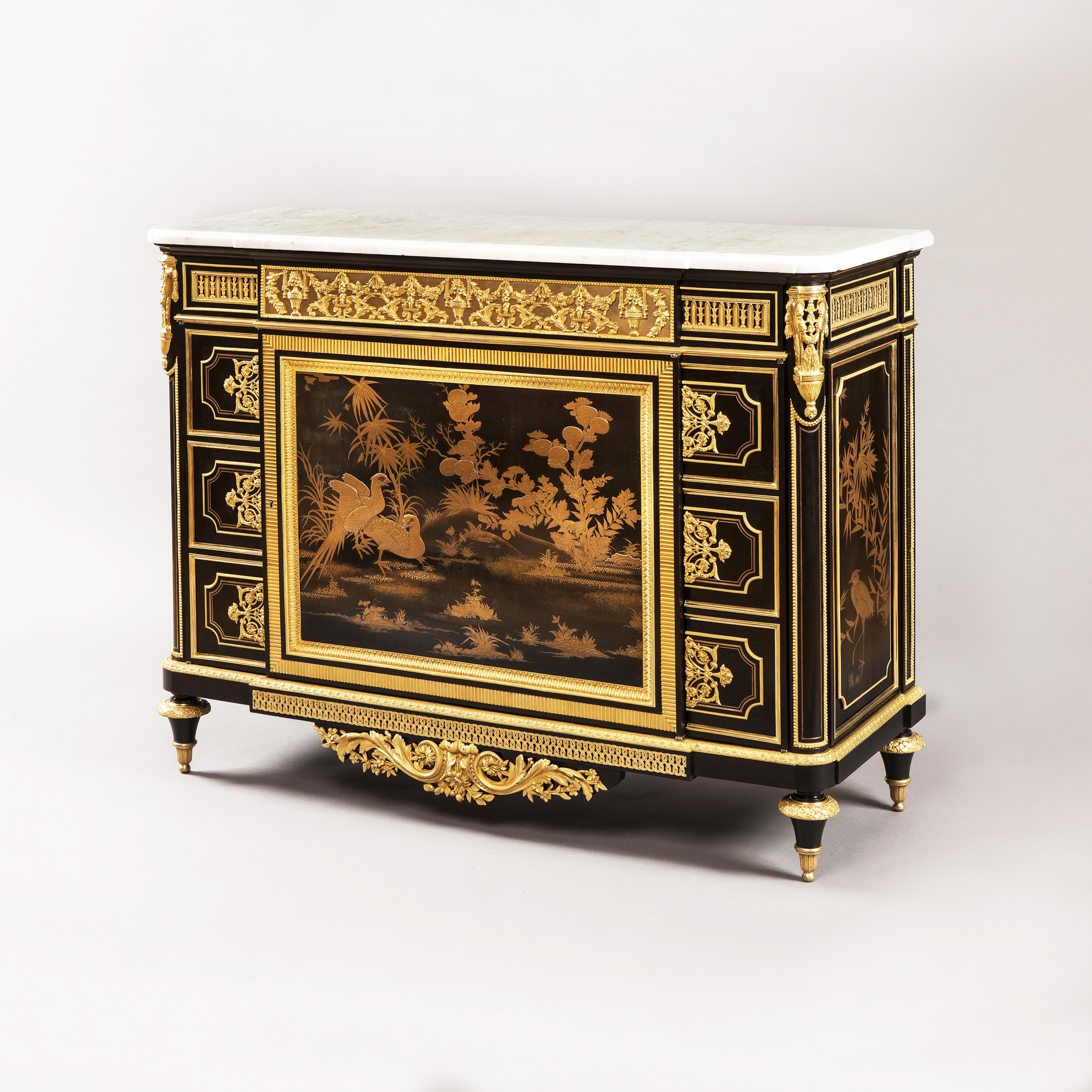
Figure 5. A Magnificent Louis XVI Style Commode, firmly attributed to Henry Dasson of Paris. Previously with Butchoff Antiques, London.
This bespoke English secretaire (fig. 6) was made after a model by Riesener, circa 1783, delivered for Marie-Antoinette’s private study at the château of Versailles, and which is now part of the Wallace Collection, London (F303). The central bronze mount on the drop-front depicts a classically inspired allegorical scene of ‘A Sacrifice of Love’, which was likely intended for the Queen’s amusement.

Figure 6. An Exceptionally Rare Secrétaire, after the J.H. Riesener example in The Wallace Collection. Previously with Butchoff Antiques, London.
Adam Weisweiler (1744–1820) is notable for his designs and selling his works works through merchants, such as Daguerre, who had royal ties, and fellow ébenistes like Riesener.
He is especially well known for his trademark-interlaced stretcher, demonstrated on this fine escritoire after a design by Weisweiler (fig. 7). The significance of this piece is that it is similar or based upon the design of a secretaire attributed to Weisweiler, circa 1790, that is believed to have been one of the last pieces delivered by Daguerre for Marie-Antoinette at Versailles before the Revolution, and is now in the collection of the Metropolitan Museum of Art (58.75.57).
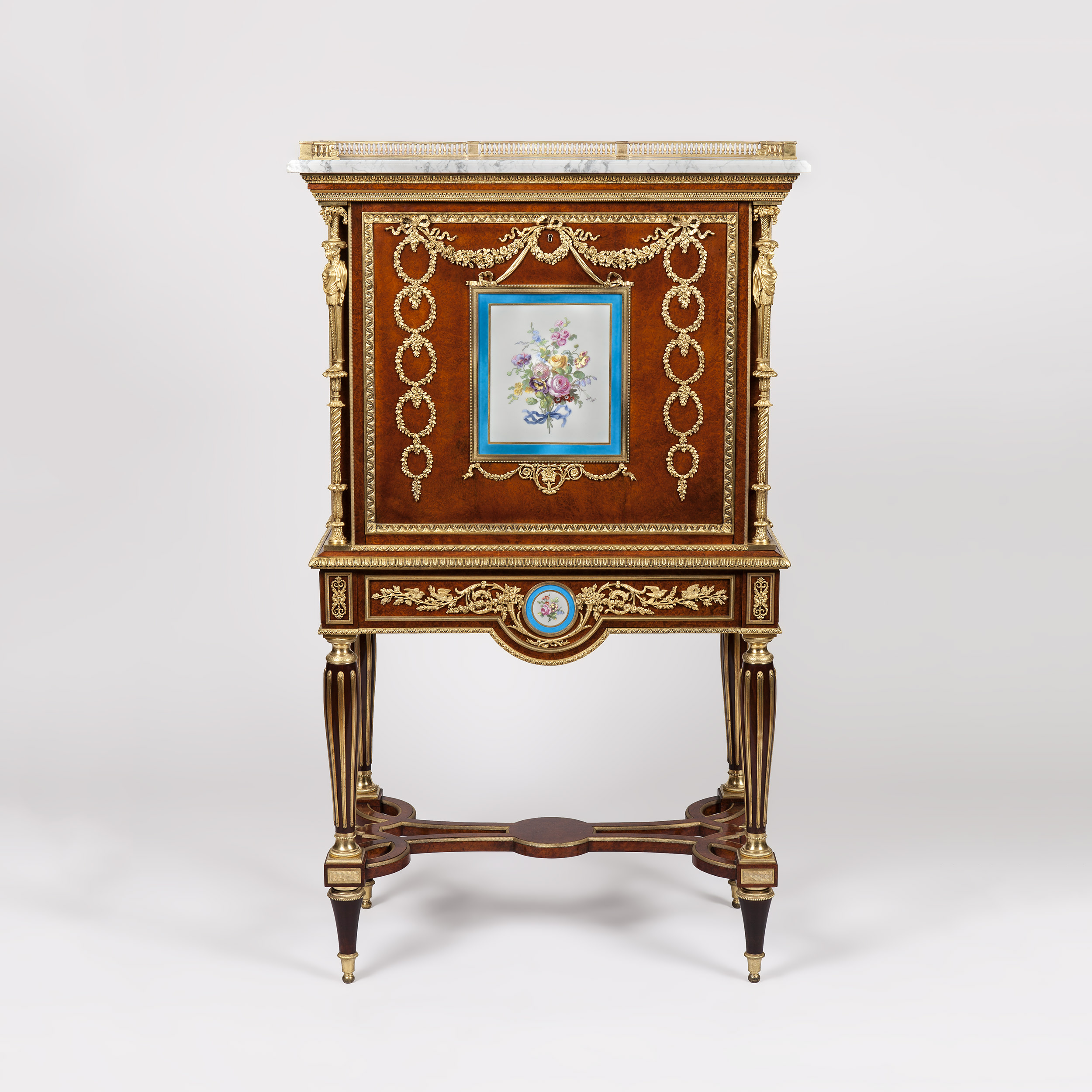
Figure 7. A Fine Escritoire, after a Design by Adam Weisweiler. Previously with Butchoff Antiques, London.
Giltwood chairs and settees were principal pieces of decoration and function in Louis XVI interiors, like this pair of giltwood armchairs (fig. 8). Chair frames were hand-carved out of wood, such as fruitwood, beech or walnut, and sometimes incorporated gesso, and adorned with decorative motifs of florals, foliates, garlands and classical figures. Upholstery was typically of hand-sewn silks in floral or classical designs, or damask or tapestry in colours of creams and pastel colours. Seating was either pushed against a wall or in the center of the room, likely accompanied by elegant and classically inspired side tables (fig. 9), conducive to conversation.
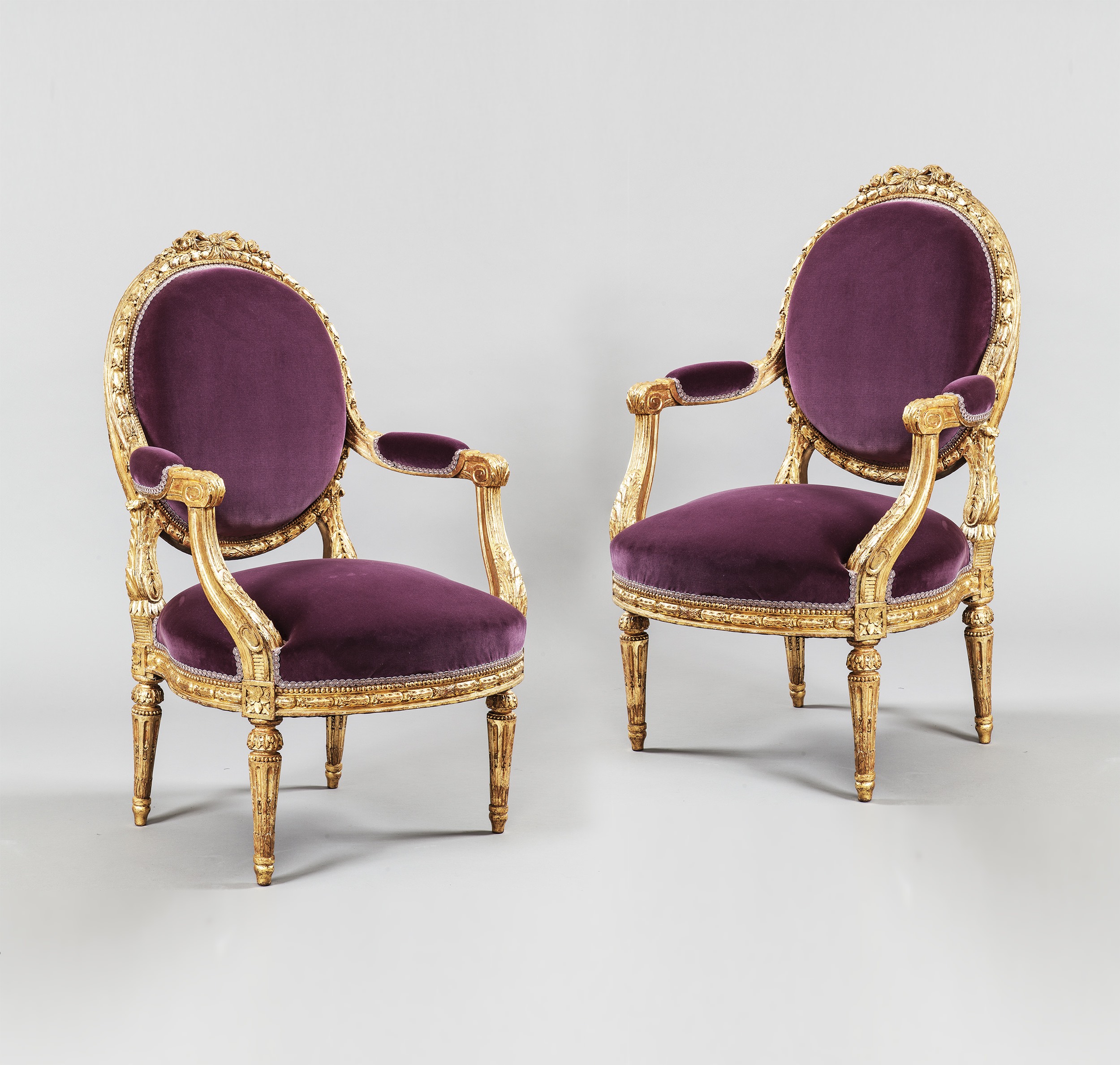
Figure 8. A Pair of Fauteuils in the Louis XVI Manner. Butchoff Antiques, London.
Although the reign of Louis XVI and Marie-Antoinette did not last, the associated style of decoration and furnishings of this period have been long regarded and admired, and artifacts of this prominent aesthetic will continue to be highly valued and collected.
![A Fine Guéridon in the Manner of Adam Weisweiler by Henry Dasson Constructed in Brocatelle d'Espagne marble and mahogany, with finely cast and chased gilt bronze mounts; the top tier of circular form supported on cluster legs of bamboo shape in the typical manner of Weisweiler. The columns joined by a concave-shaped lower tier supported by flared feet dressed with gilt bronze sabots. This celebrated model of gueridon exemplifies the height of taste at the end of the eighteenth century, it was given by Madame du Barry (1743-1793) to the duc de Brissac, delivered by Lignereux and Daguerre. Daguerre's inventory describes a table of corresponding description "Une petite table ronde forme de guéridon en racine de bois d'acajou poli sur trois pieds doubles en bronze doré façon de bambous avec entrejambe à tablettes et camé de porcelaine ornant la tablette supérieure prisée trois cent francs." (Segoura, Maurice, and Patricia Lemonnier. Weisweiler. Paris: Monelle Hayot, 1983.) Henry Dasson became renowned in the nineteenth century for his furniture based on historical designs, often incorporating stylistic elements created by Weisweiler (see Payne, Christopher. Paris Furniture: The Luxury Market of the 19th Century. [S.L.]: Editions D'art Monelle, 2018.). Christopher Payne maintains that "His [Dasson's] best work must be the combinations of elements from Riesener and Weisweiler in a modernised Louis XVI manner" (p. 315) as seen in the present gueridon. Signed and dated 'Henry Dasson. 1878.' French, 1878 Dimensions: H: 26 in / 65 cm | Dia: 15 in / 37 cm](https://images.butchoff.com/magallery/ButchoffMedia/BlogDescription/1922019T165331.26.jpg)
Figure 9. A Fine Guéridon in the Manner of Adam Weisweiler, by Henry Dasson. Previously with Butchoff Antiques, London.
by Rainier Schraepen
Continuing with our Tales of Timber series, we are focusing on a most beautiful and exotic wood called Coromandel.
Coromandel is characterised by its warm dark brown colour resembling a black rosewood, having warm, light-coloured hazel brown streaks. In fact, Coromandel belongs to the family of the variegated ebonies such as Macassar ebony, and as such it is a heavy, fine-grained hardwood.
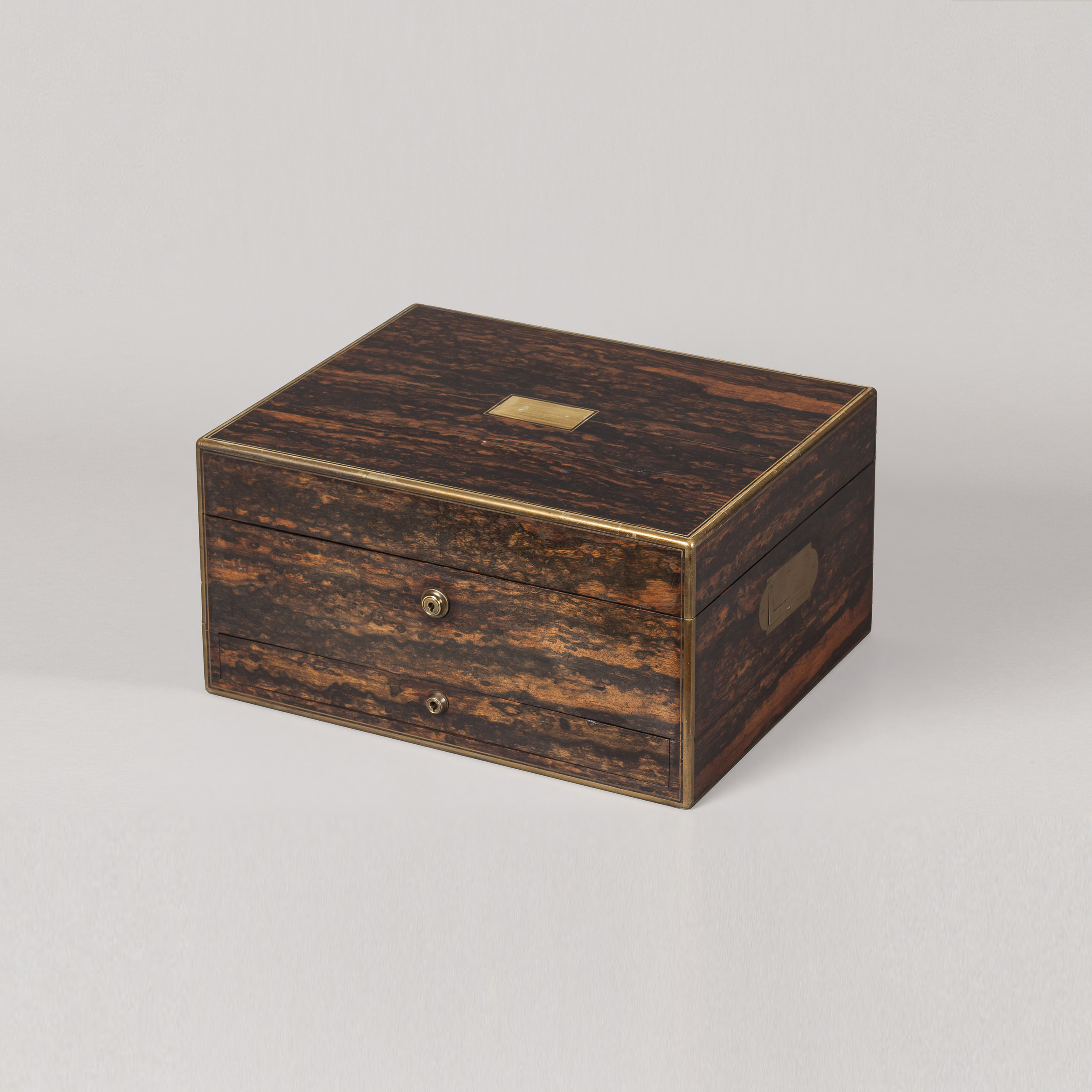
A Mid Nineteenth Century Lady's Travelling Dressing Case, circa 1850. Butchoff Antiques, London.
The first recorded use of the name is from Thomas Sheraton’s Cabinet Dictionary of 1803, where he described it as “…lately introduced into England.” Named after Coromandel and its jungles (located on the coast of the Indian peninsula), the timber fell almost exclusively into the hands of English craftsmen as British trade with southern India and Ceylon increased markedly at the beginning of the 19th century.
Imported in small logs, often no more than 6 inches in diameter and a few feet long, Coromandel was always a valuable wood used as veneers and for crossbanding in the Regency period, and most commonly found on small items like boxes.
Throughout the reign of Queen Victoria, it become known as one of the most exotic and luxurious materials to use in cabinetmaking. A steady, albeit very limited, output of fine decorative boxes was complimented by an occasional luxurious and unique piece of furniture, such as the cabinet illustrated below by Gillows and dated circa 1874.
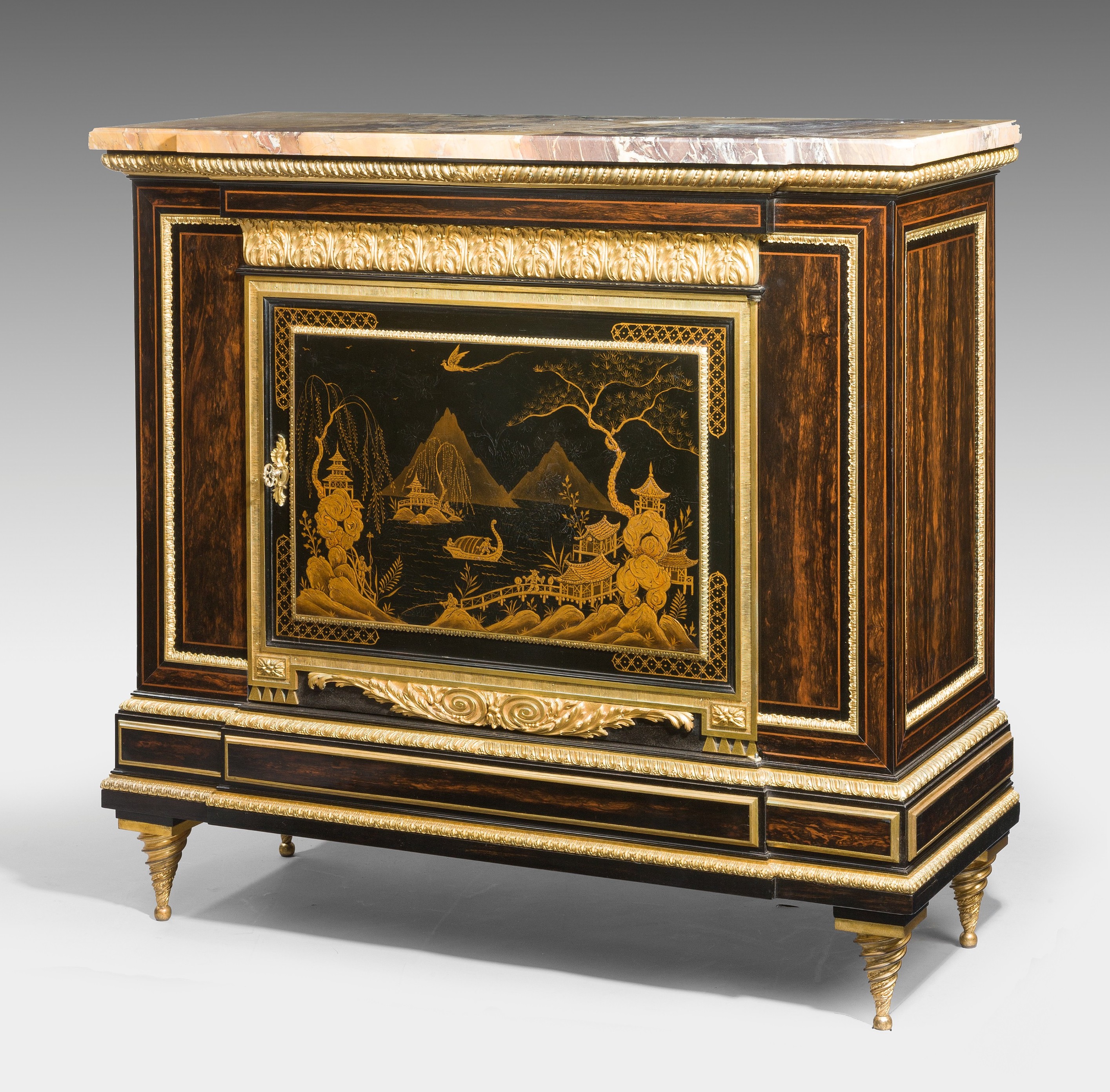
An Exhibition Quality Coromandel Side Cabinet, by Gillows of London & Lancaster, circa 1874. Butchoff Antiques, London.
With the rise of the Aesthetic movement and the popularization of ebonizing furniture (a way of artificially staining a wood to resemble ebony), coromandel became undoubtedly one of the most desirable timbers to use by the top designers and craftsman of the movement including designers such as Owen Jones and firms such as Jackson & Graham, and Lamb of Manchester.
It is interesting to note the relative prices of Coromandel throughout this second half of the 19th century. Adjusted for inflation the cost of the timber fluctuated anywhere between £36 - £55 per lb in 1853. By 1909, a thin veneer no more than 1mm thick and nearly a foot long cost at least £80, if it could be obtained at all!
Today, the scarcity of the timber means it is no longer available for new work in any quantity, making these antique items and pieces of furniture all the more unique.
See below for some of the finest Coromandel pieces currently in our collection.
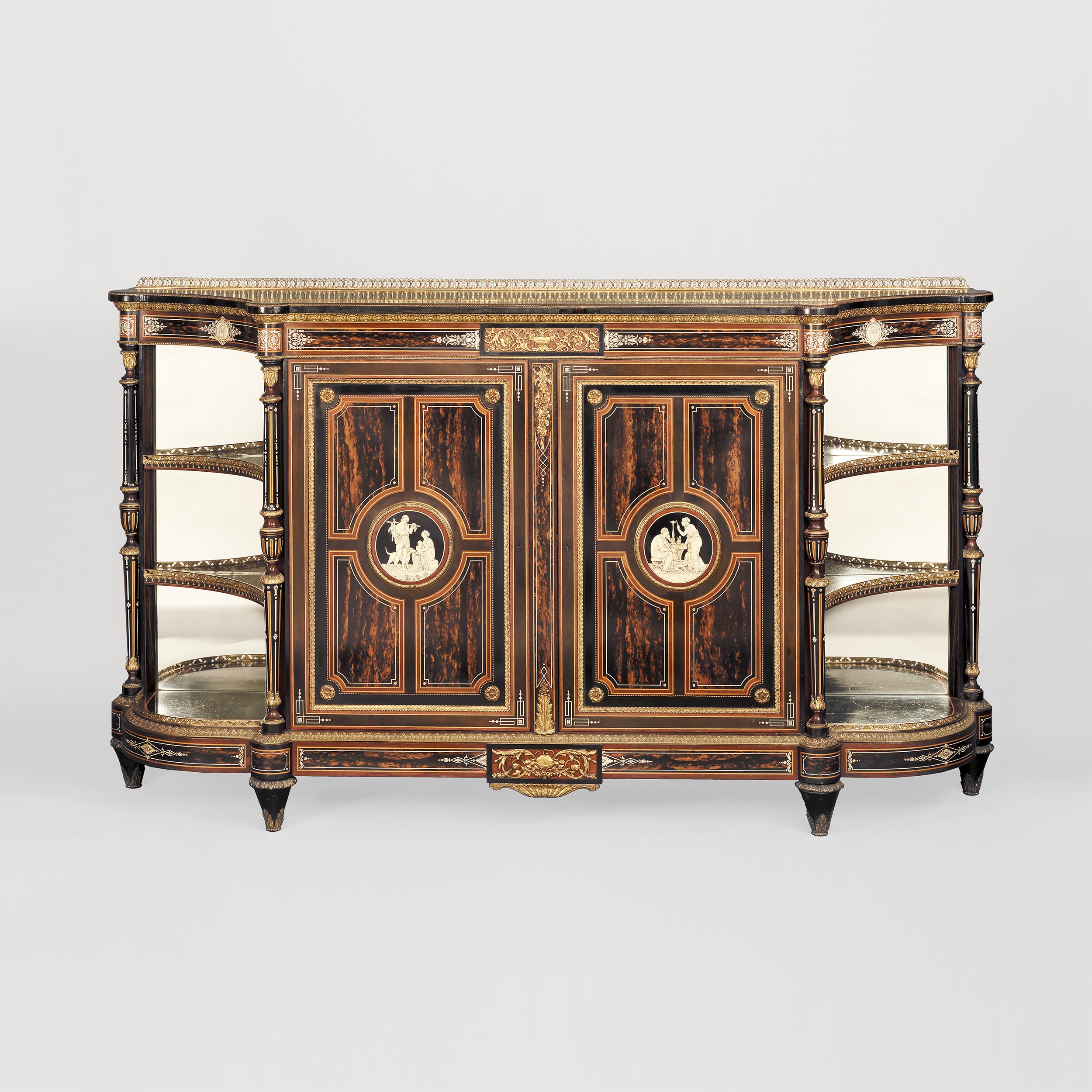
A Superb Cabinet of Exhibition Quality made by James Lamb of Manchester, circa 1880. Previously with Butchoff Antiques, London.

A Very Fine Writing Desk, firmly attributed to Wright & Mansfield, circa 1860. Butchoff Antiques, London.
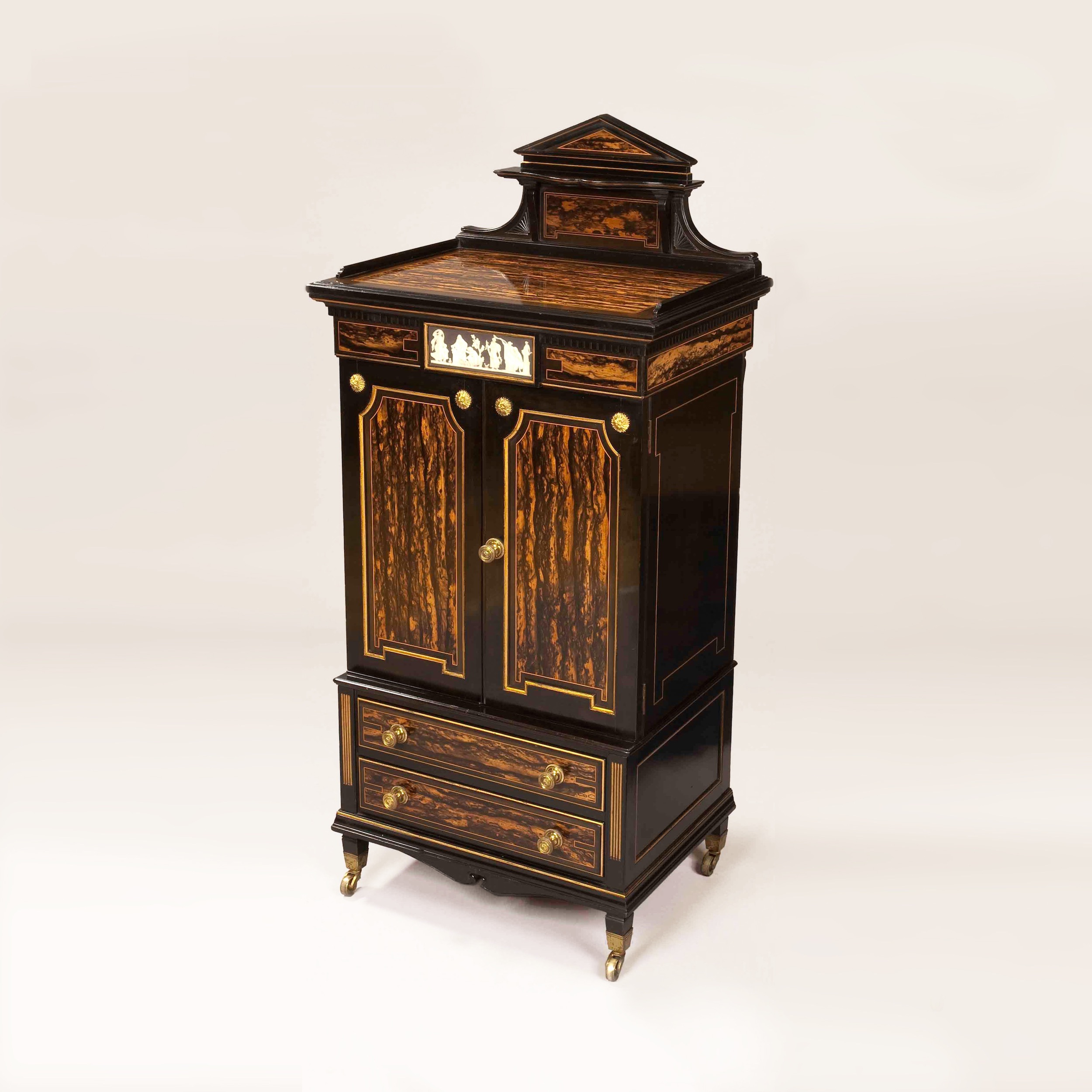
A Very Fine Quality Music Cabinet in the Aesthetic Manner, by Lamb of Manchester, circa 1885. Previously with Butchoff Antiques, London.
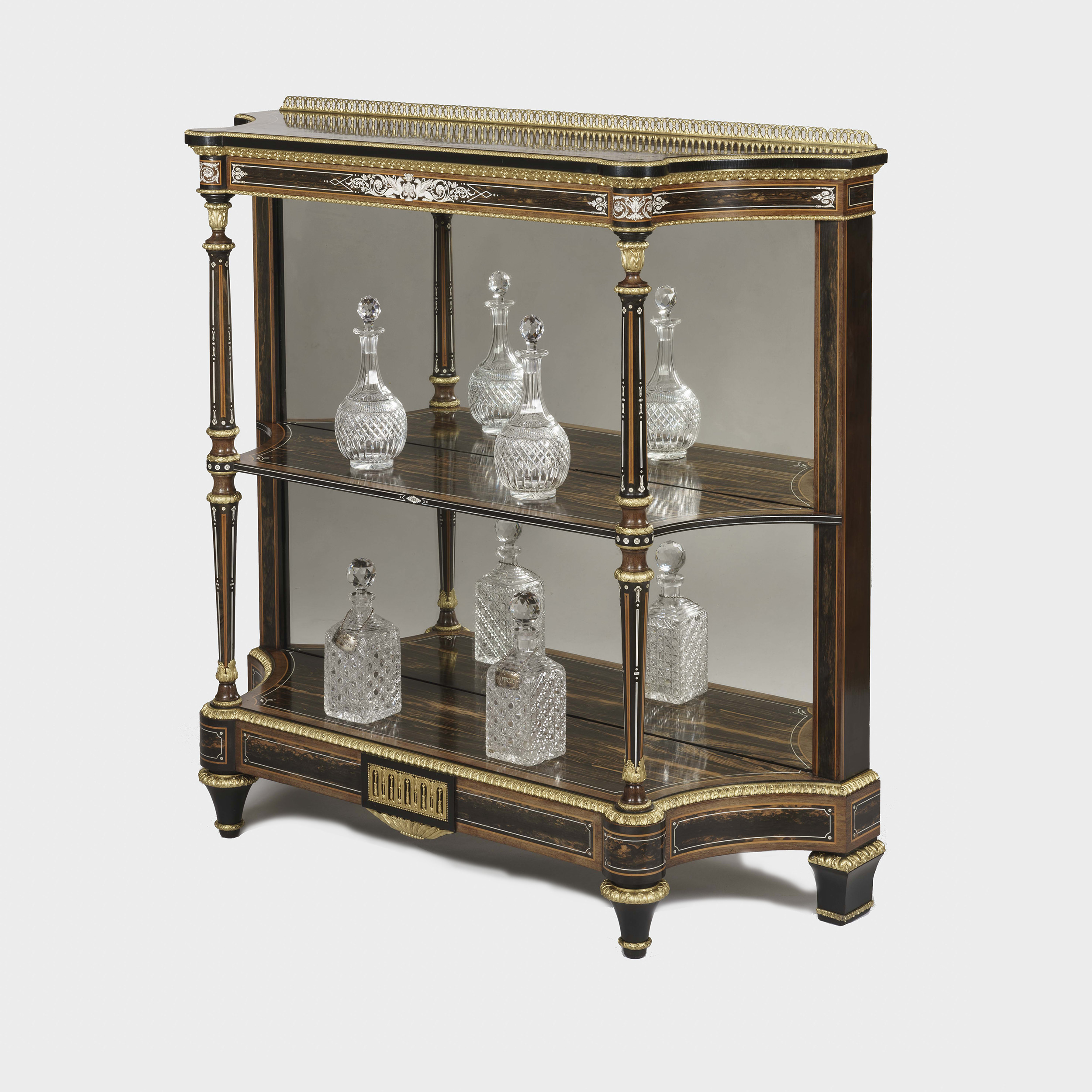
A Fine 19th Century Inlaid Etagere, attributed to Holland & Sons, circa 1880. Previously with Butchoff Antiques, London.

A Louis XVI Centre Writing Table in the Aesthetic Taste, firmly attributed to Holland & Sons, circa 1875. Previously with Butchoff Antiques, London.
By Rainier Schraepen
The ball & claw foot was introduced into the canon of Western furniture in the 18th-century, when furniture designers and makers started documenting, sharing, and exploring new aesthetic possibilities. Although traditionally associated with Chippendale furniture, the style of foot appeared already in the Queen Anne period (1702-1714).
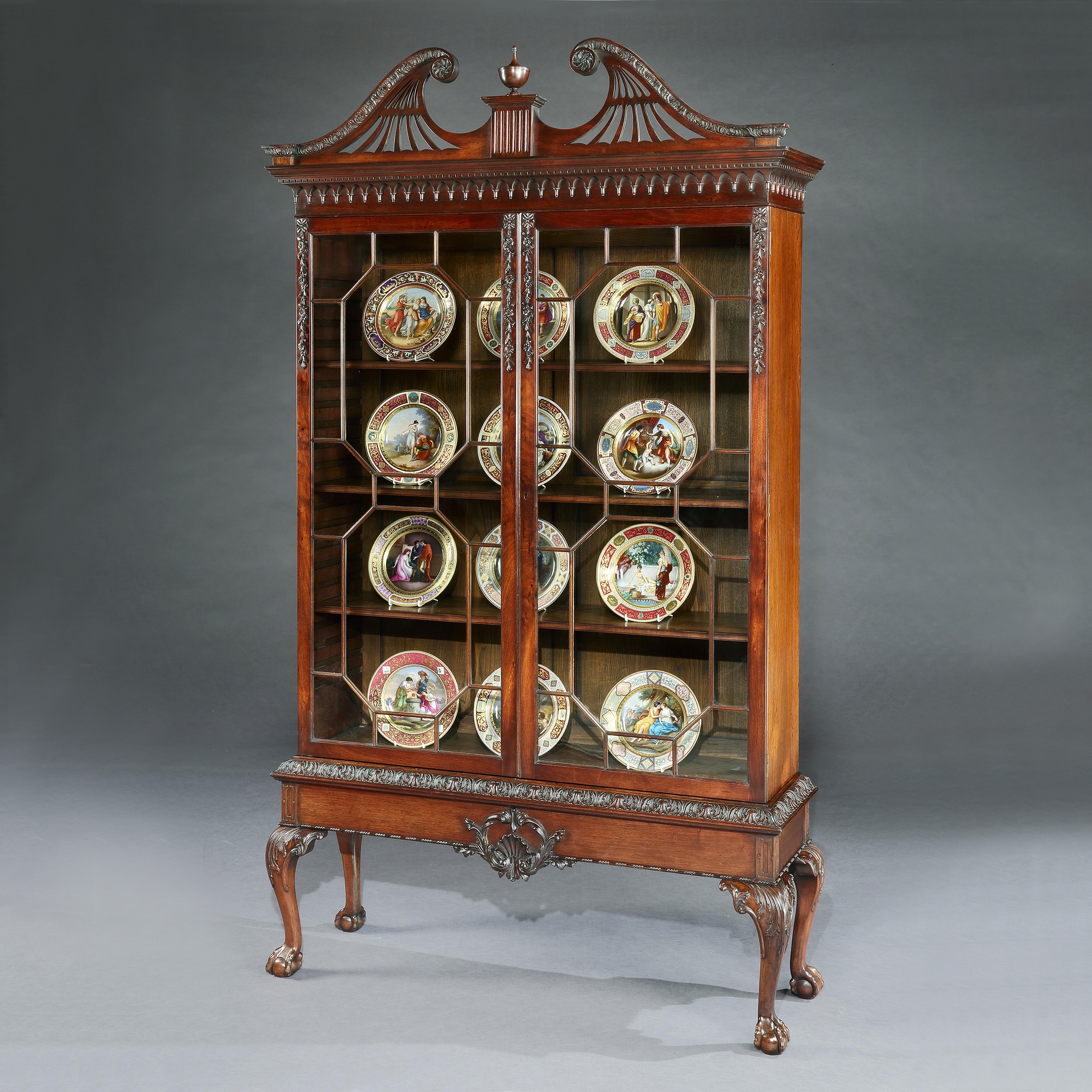
Ref. 8493. A Display Cabinet in the manner of Thomas Chippendale, circa 1910. Butchoff Antiques, London.
The curved legs associated with this style, called cabriole, often culminated in a literal foot. It is historically believed the design of the ball-and-claw originated in China. The claw represented by a dragon clutching a sacred jewel. According to Chinese mythology, the dragon (emperor) is guarding the jewel (the symbol of wisdom or purity) from wicked sources trying to steal it. This motif was also adopted by Japan.
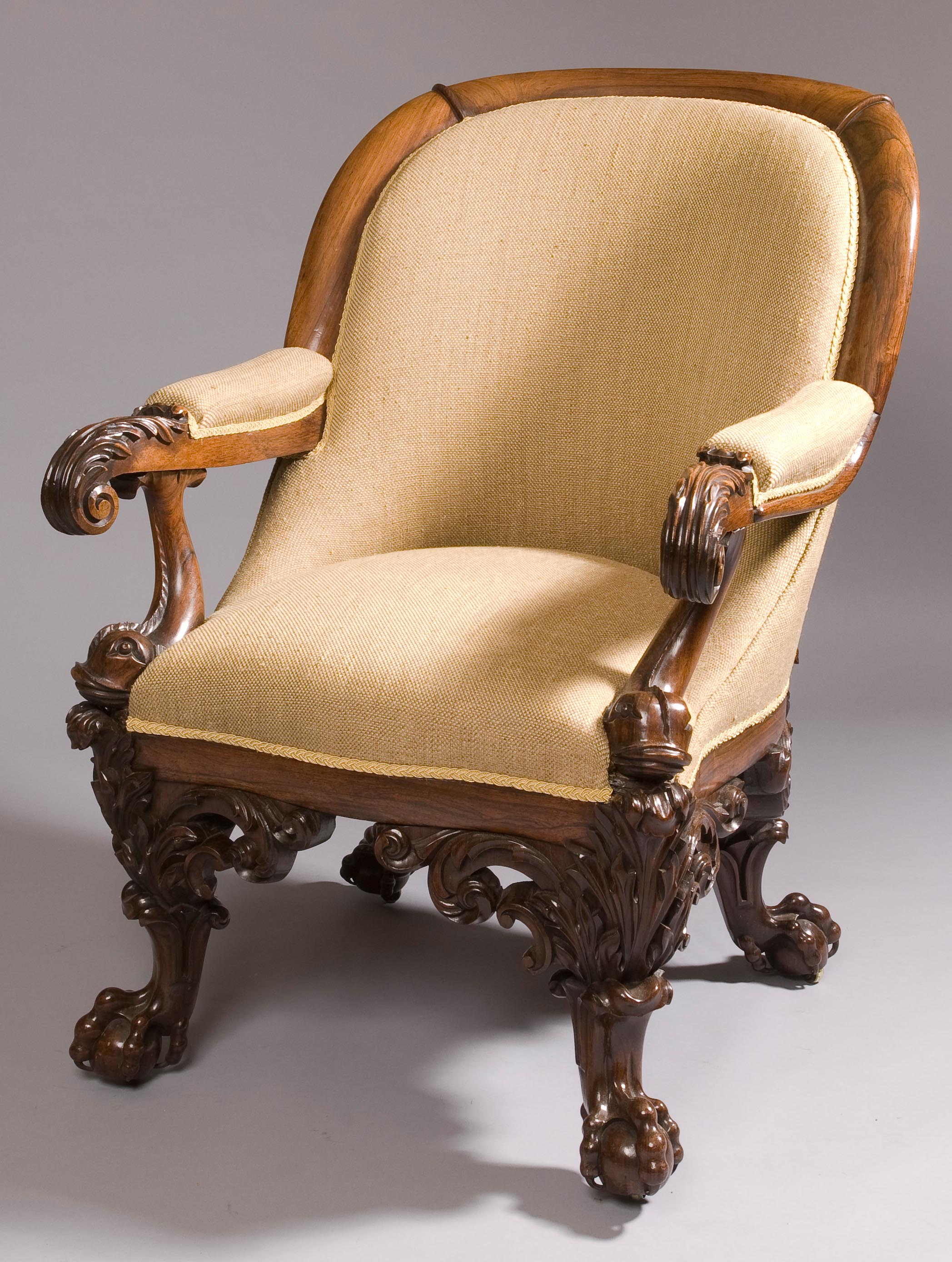
Ref. 5713, One of an Impressive Pair of Library Armchairs in the High Victorian Manner, circa 1850. Previously with Butchoff Antiques, London.
In the course of the 18th century, as European trade with Asia expanded greatly, so did the import of many Chinese and Japanese goods, such as porcelain and bronzes, displaying the ball and claw. The taste for the exotic was prevalent in the fine and decorative arts, and it was not long until the ball and claw foot appeared in English furniture.
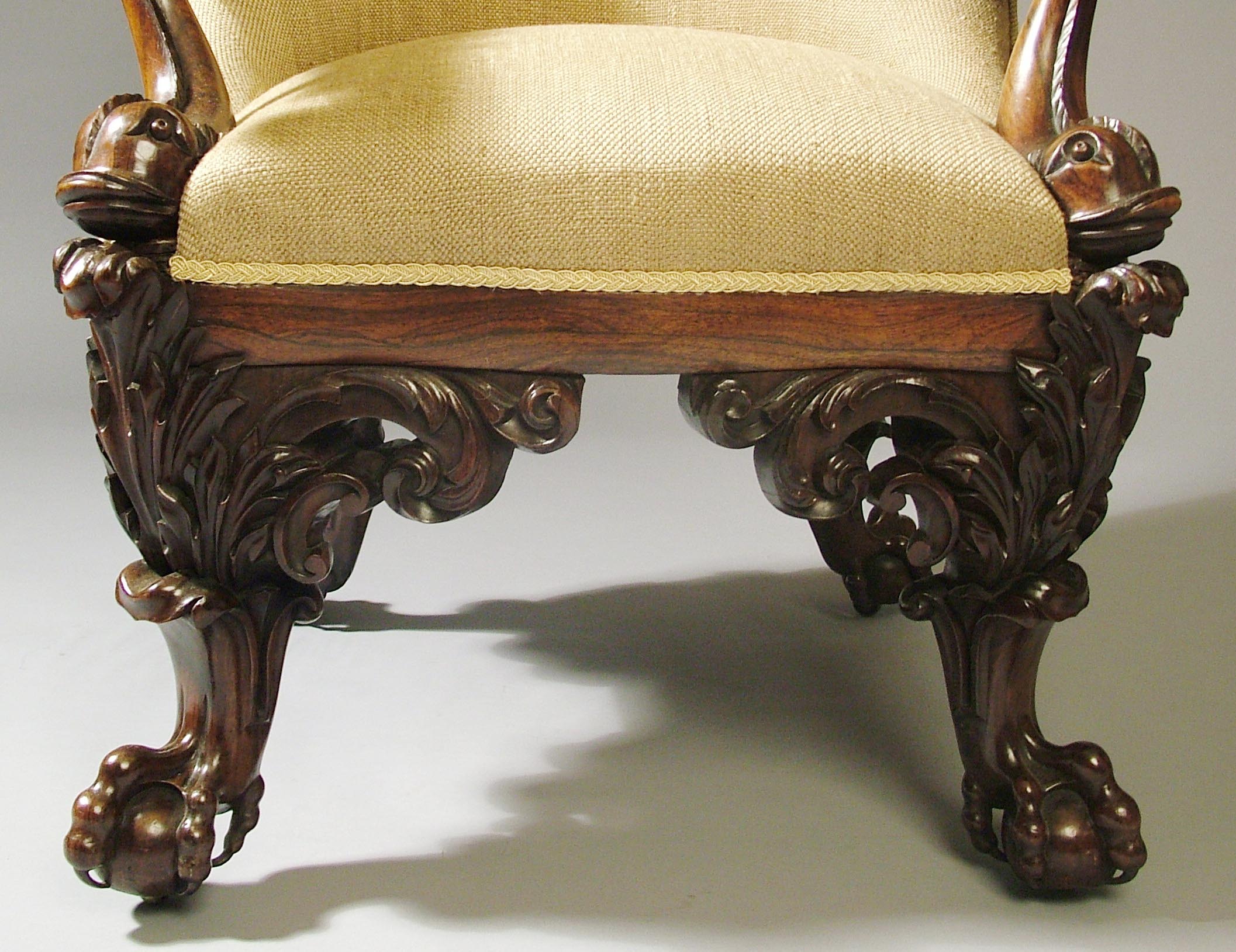
Ref. 5713, One of an Impressive Pair of Library Armchairs in the High Victorian Manner (detail), circa 1850. Previously with Butchoff Antiques, London.
Although the ball-and-claw is most often associated with the design of Thomas Chippendale, his famous book of designs the The gentleman and cabinet-maker's director of 1754 contains not a single example of it. It can, however, be ascertained that Chippendale was aware of the motif, and he used it to great effect at Nostell Priory in several rooms including the State Dining Room.
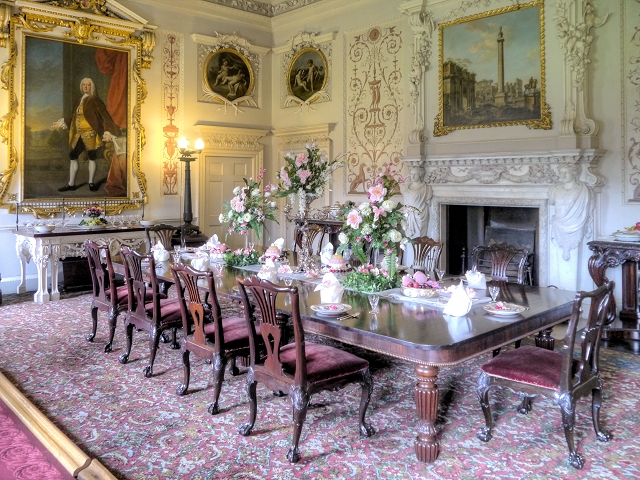
The State Dining Room at Nostell Priory, showing a set of 10 dining chairs with ball & claw feet.
The style briefly fell out of fashion around the end of the 18th-century, although the various revivals of the following century guaranteed its success among English, French, and American Cabinetmakers; each creating their own interpretation of the design. The English would often substitute the claw of the dragon for that of a lion, a symbol of English nobility, whereas the Americans slowly transformed the claw into that of an eagle.
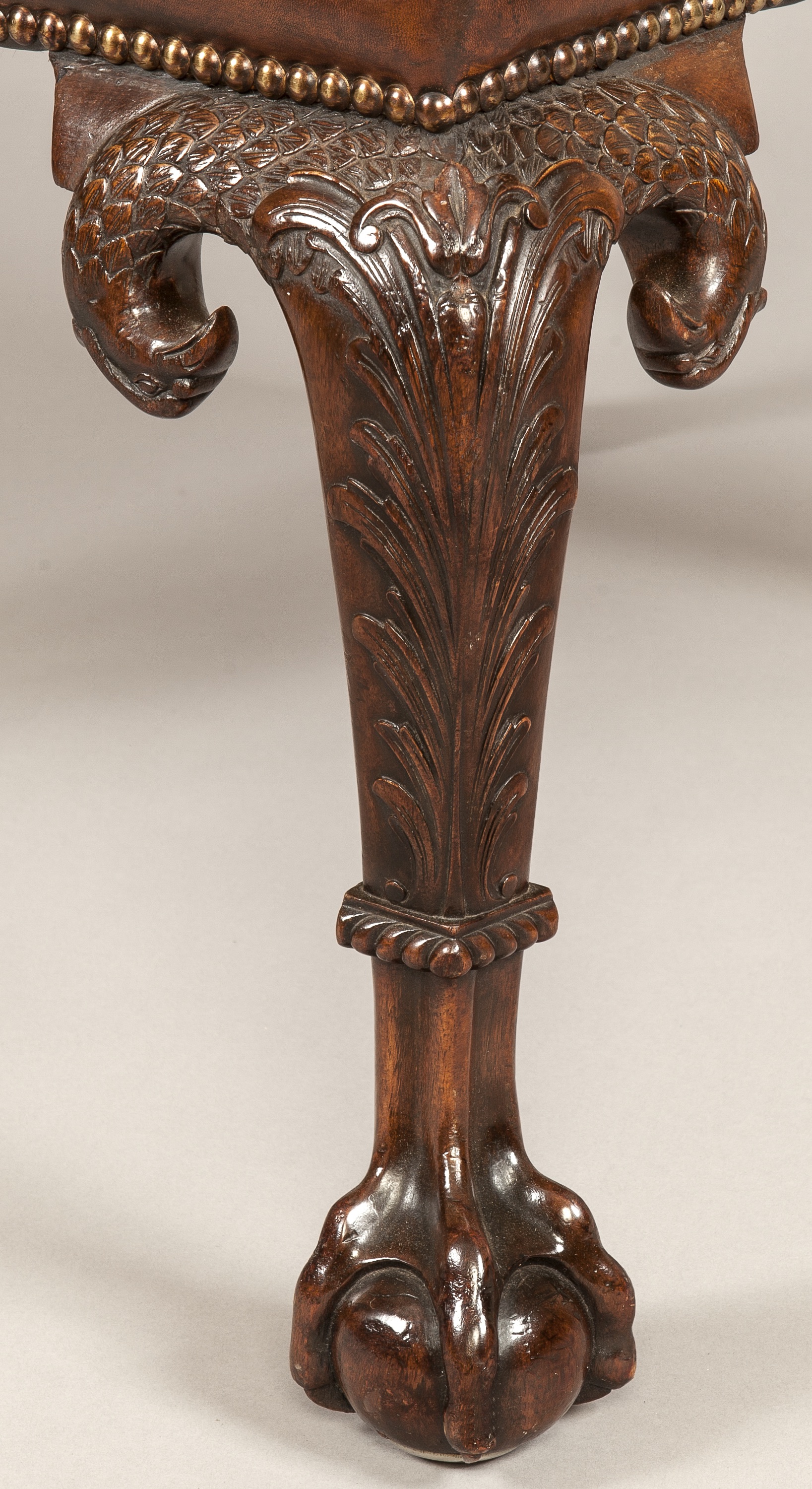
Ref. 8362, A Library Armchair in the Mid Eighteenth Century Manner (detail), circa 1880. Previously with Butchoff Antiques, London.
Great skill is required in carving an effective, illusionistic ball and claw foot. Different styles and hands are often used as evidence by antique furniture experts to discern when and where a piece of furniture was made. Can you spot the differences between our French example carved by Veuve Meunier in the 1850s and the English George II revival armchair of the early 20th century?
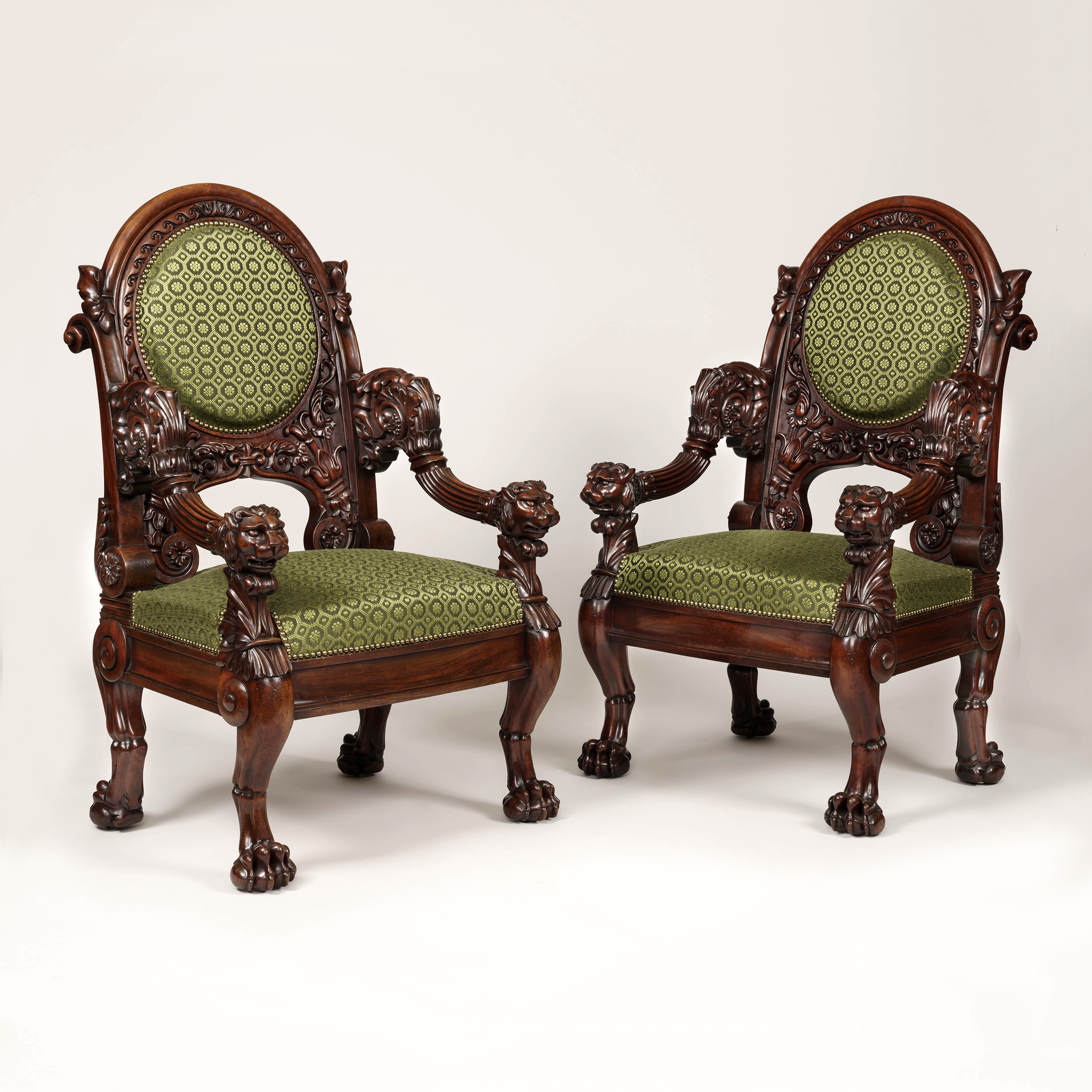
Ref. 8568, A Pair of Armchairs, stamped Veuve Meunier of Paris, circa 1850. Butchoff Antiques, London.
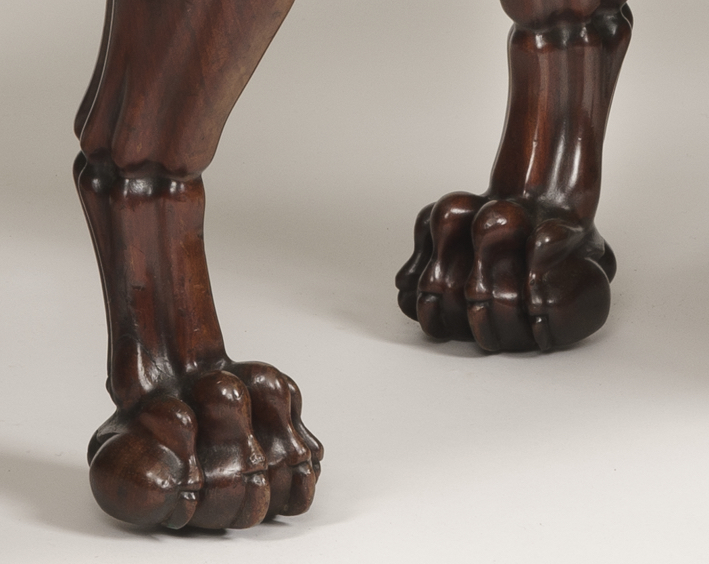
Ref. 8568, A Pair of Armchairs (detail), stamped Veuve Meunier of Paris, circa 1850. Butchoff Antiques, London.
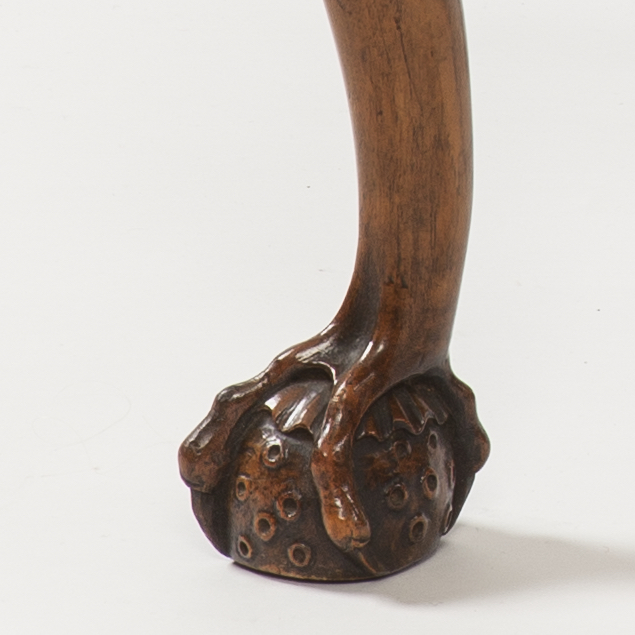
Ref. 8860, An Armchair in the Style of George II, For Charles Tozer of Brook Street London, circa 1920. Previously with Butchoff Antiques, London.
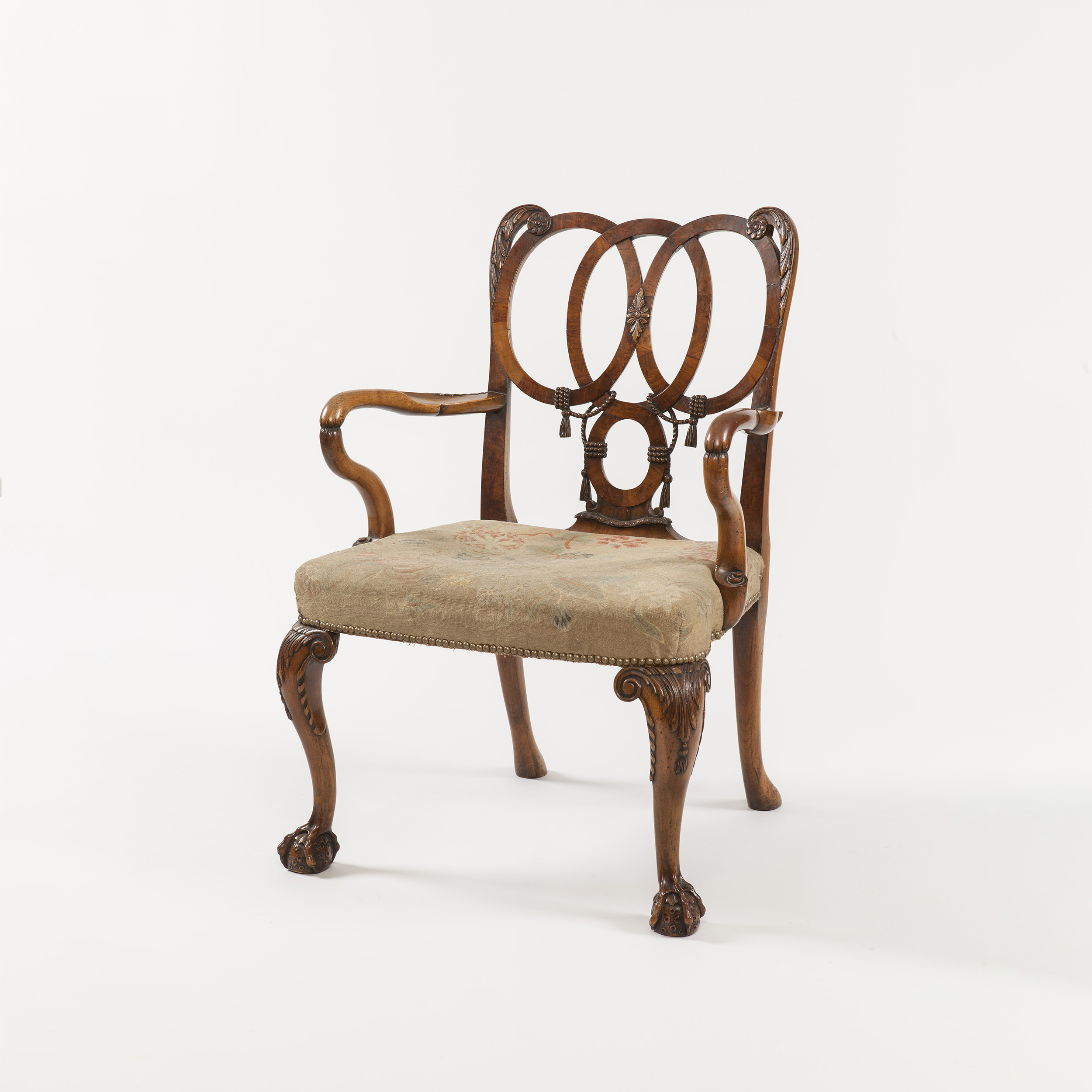
Ref. 8860, An Armchair in the Style of George II (detail), For Charles Tozer of Brook Street London, circa 1920. Butchoff Antiques, London.
By Rainier Schraepen
A term used to describe the fall-front mechanism seen in French style writing desks, called secrétaire à abattant. The resulting panel can be used as a writing surface. These secretaires–as well as writing bureaus and bookcases–became increasingly popular in the homes of the 18th-century French aristocracy.
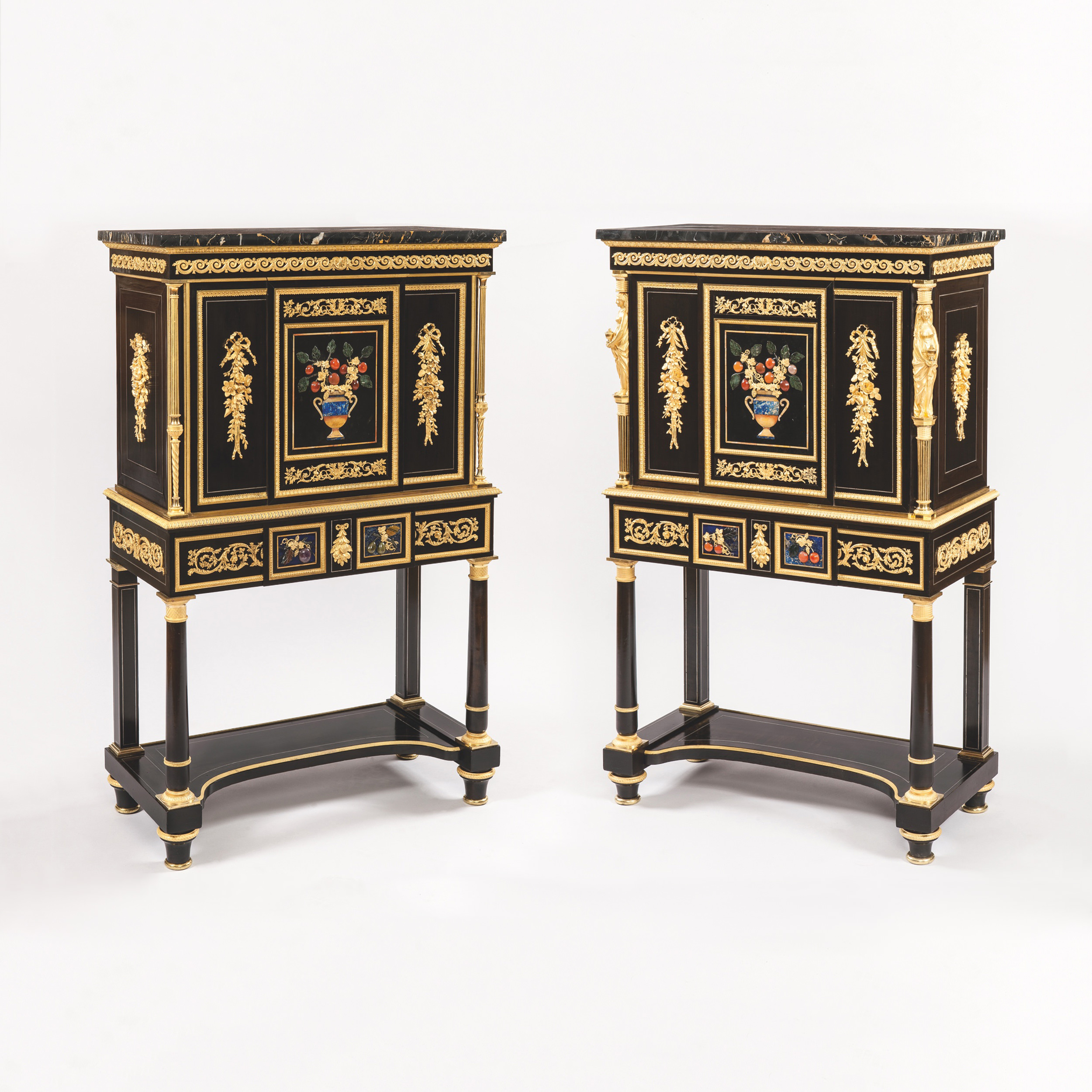
Ref. 8664, A Fine Pair of Secrétaires à Abattant, firmly attributed to Bernard-Marie Cagnard, 1823. Previously with Butchoff Antiques, London.
Not only were they a symbol of wisdom and knowledge for the educated classes, secretaires were also used for the safekeeping of important correspondence and documents as they conceal drawers and shelves within. The extraordinary secretaire below (ref. 8114) has a lockable front panel à abattant, and it also contains a multitude of secret compartments as well as a strong box for extremely sensitive material.
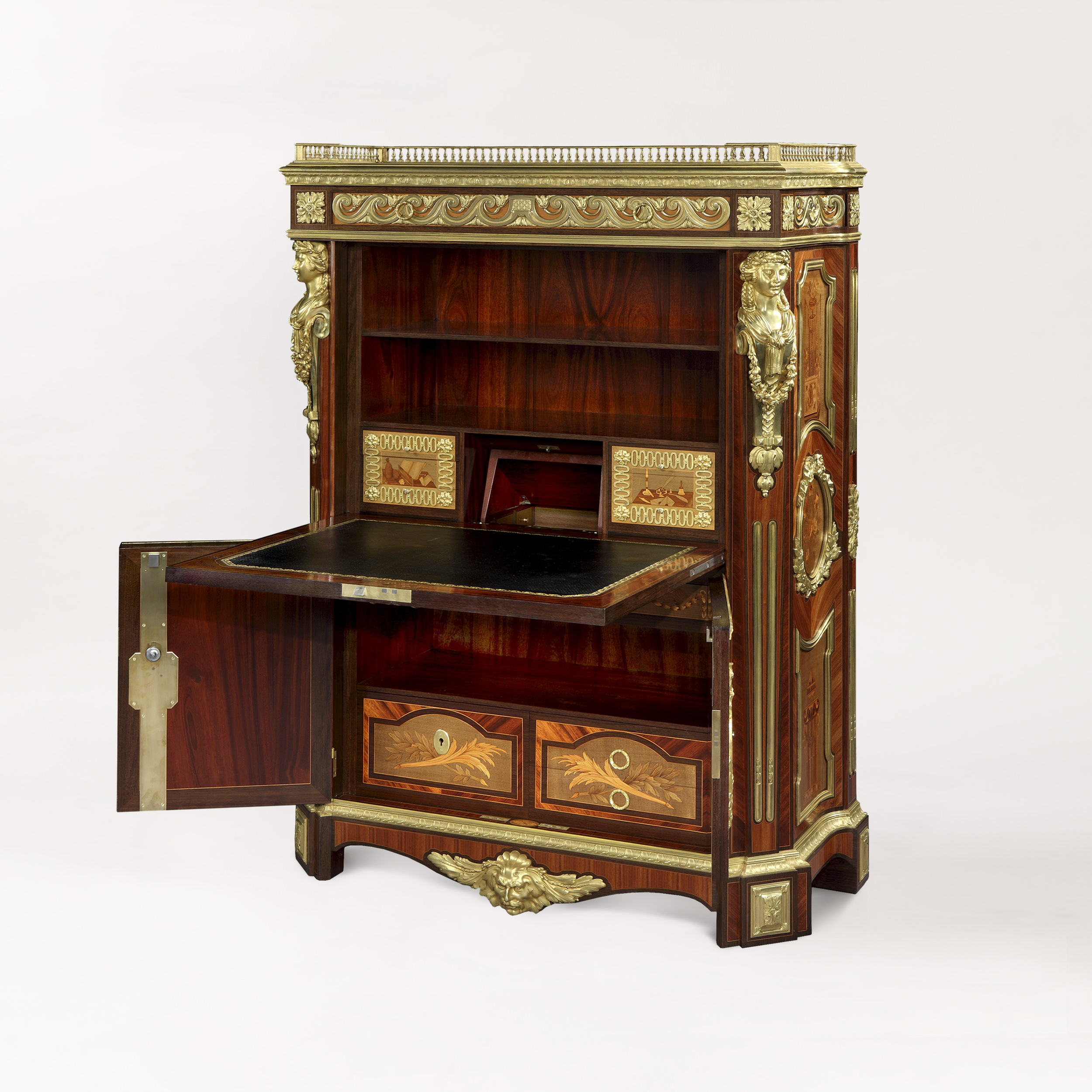
Ref. 8114, A Truly Magnificent Secrétaire à Abattant, by Maison Rogié of Paris, circa 1880. Butchoff Antiques, London.
A recent exhibition at the Musée National du château de Malmaison (17 November 2018- 10 March 2019) is devoted to these enigmatic pieces of writing furniture and the secrets they housed within, highlighting several examples made for the emperor Napoleon I and his wife.
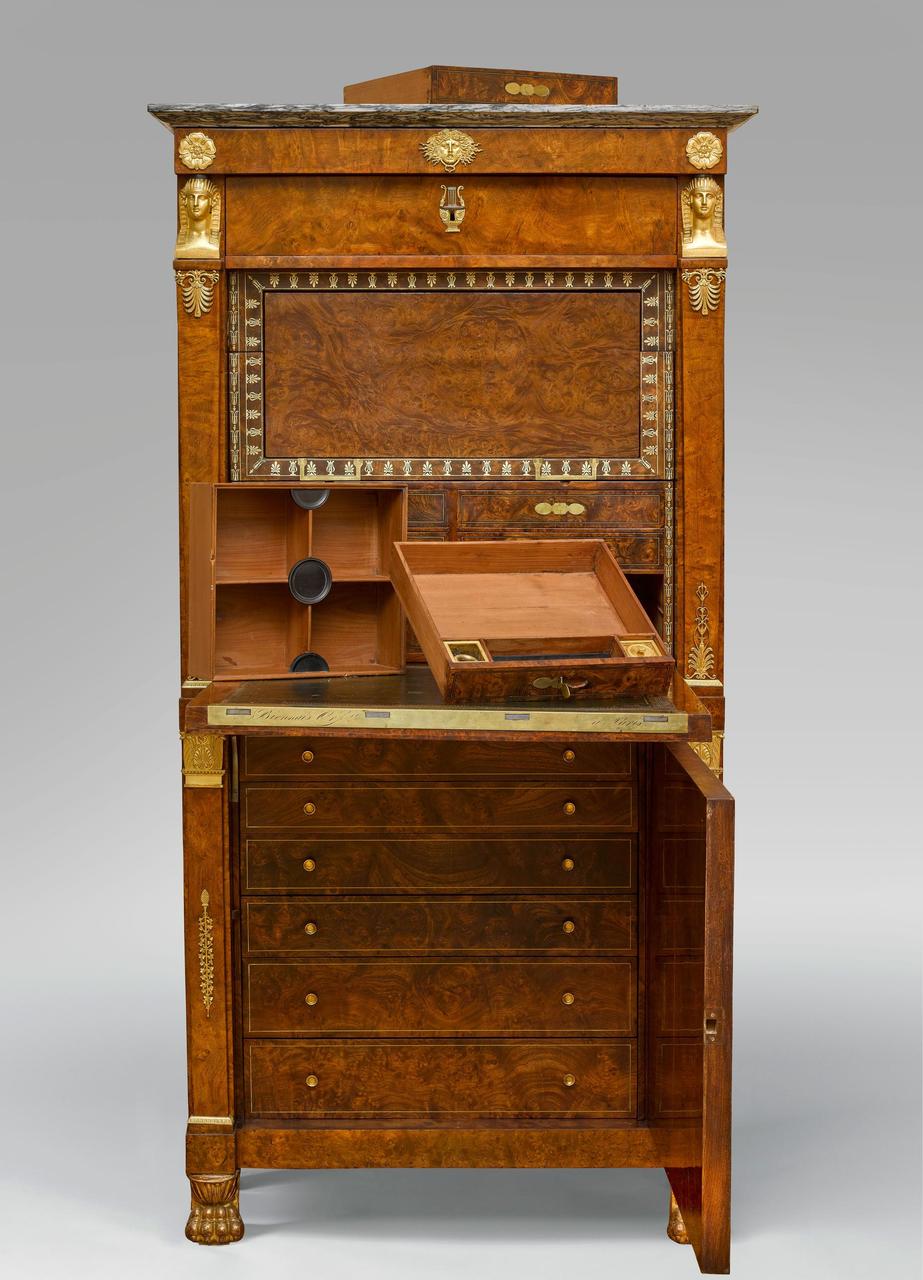
Secrétaire à abattant de Biennais. Musée national du château de Malmaison.
By Rainier Schraepen

 Vip access
Vip access

 Favourites
Favourites






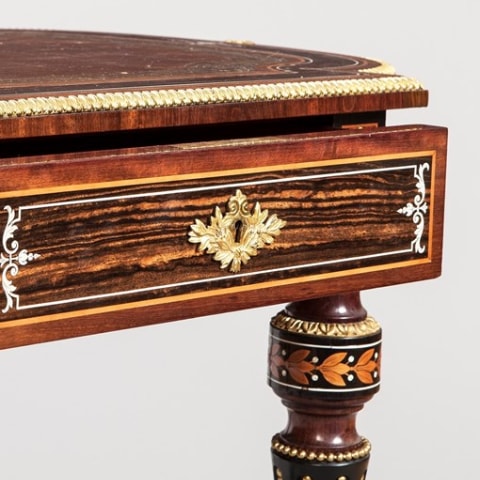
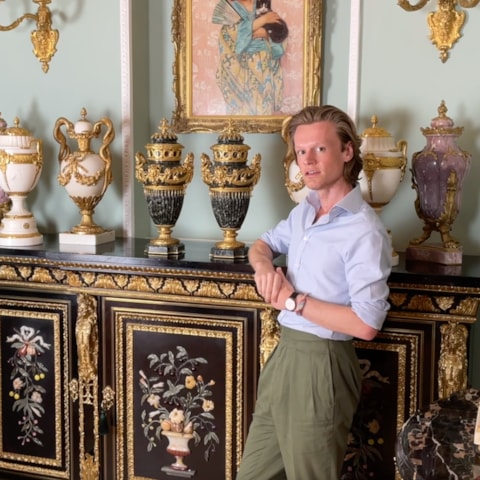
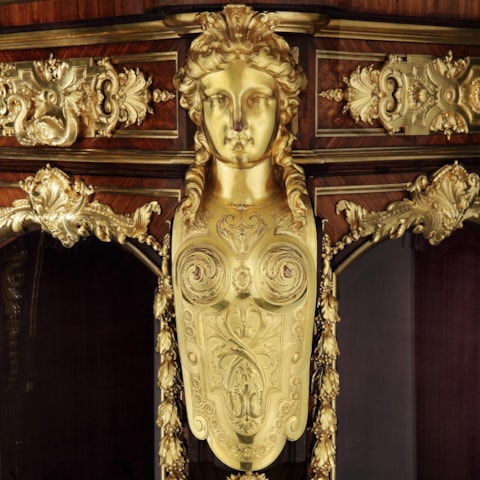



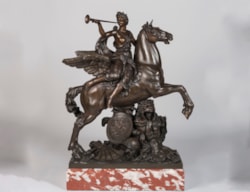
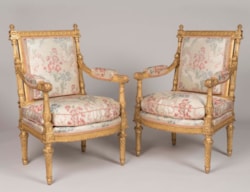
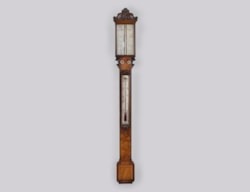
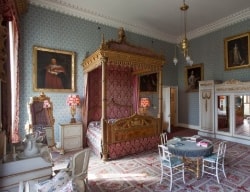



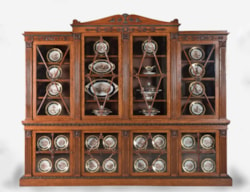




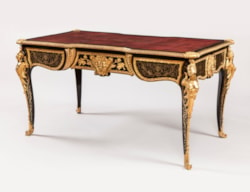

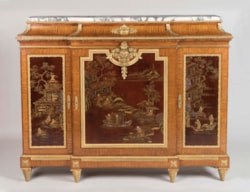
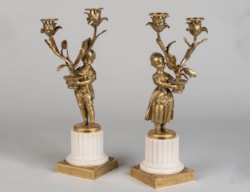

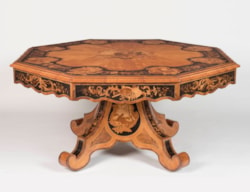


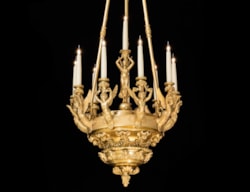
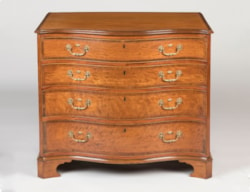


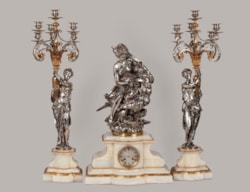
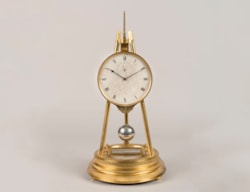
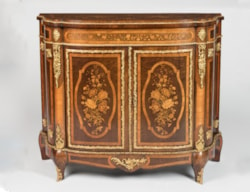
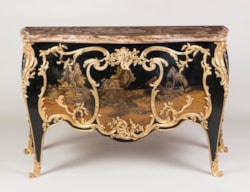
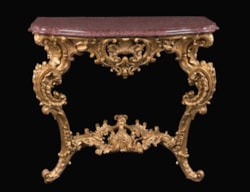




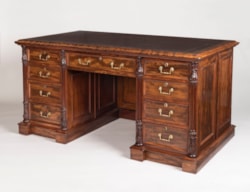
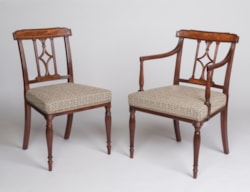
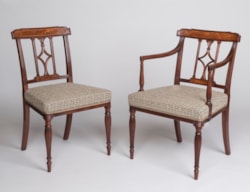
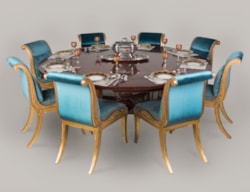

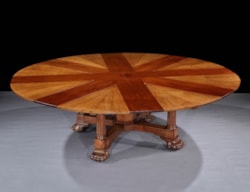
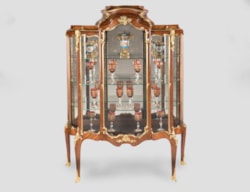





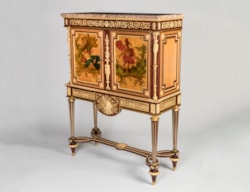
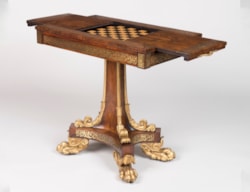

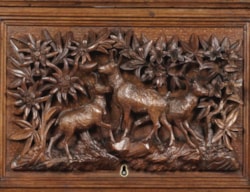





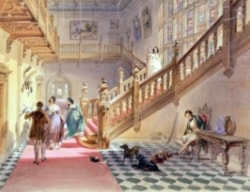
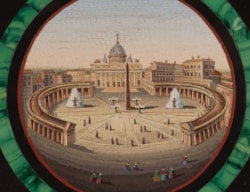





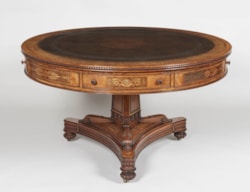
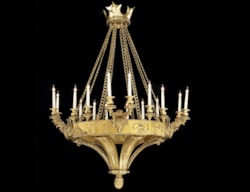
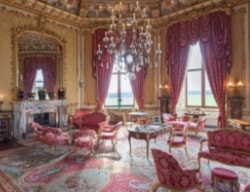
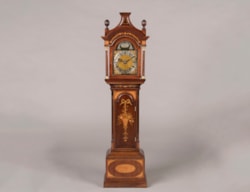




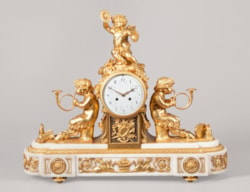

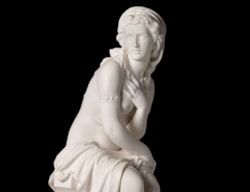


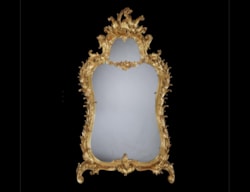
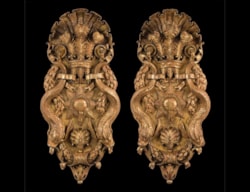



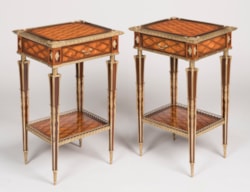
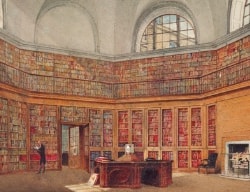
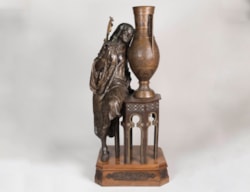

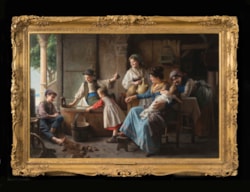


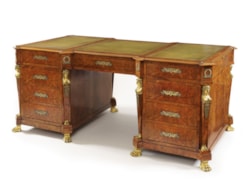
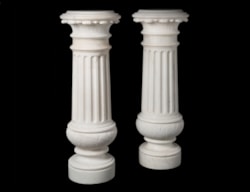

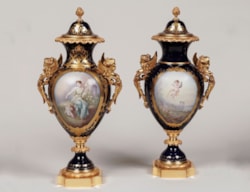





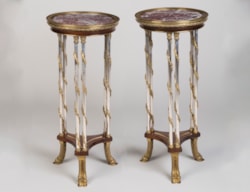

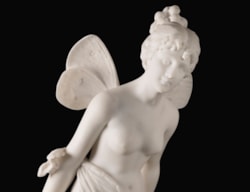
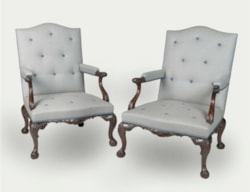
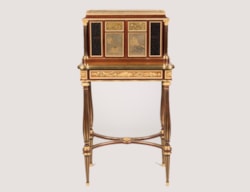

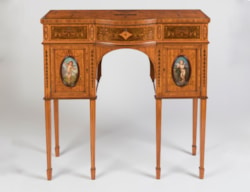
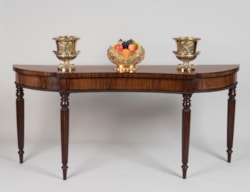
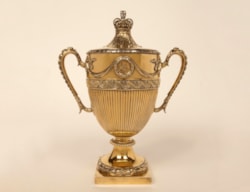
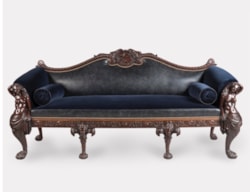
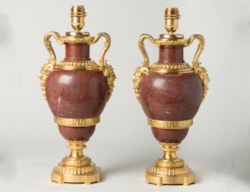
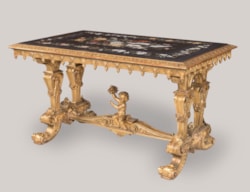
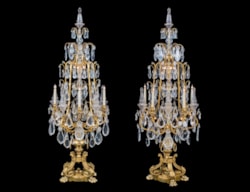


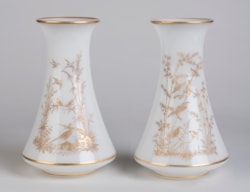


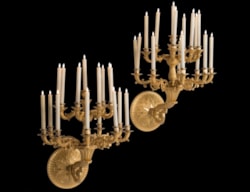

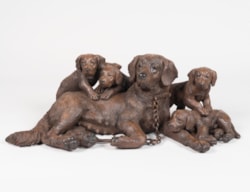
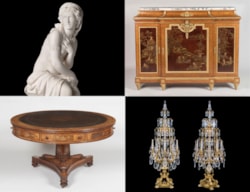


 Read More
Read More

